Turn your dream vacation into reality


3 Days in Berlin (Ultimate Itinerary + Map)
- December 26, 2023
Berlin is the capital of Germany and its largest city. This multicultural metropolis is a city of contrasts, a place where history meets the modern.
Vibrant culture, dark history, alternative nightlife, fabulous food, Berlin has it all! No wonder why it’s one of the most popular destinations in Germany.
Planning a trip to Berlin could be overwhelming (especially for first-timers) but don’t worry, I got you covered! This Berlin itinerary is the only thing you’ll need to fully plan your trip. From must-see attractions, where to stay and eat, to getting around, you’ll find it all in this in-depth guide.
3 days in Berlin itinerary
This 3 days in Berlin itinerary is perfect for everyone visiting the city for the first time. It covers all the main attractions with helpful tips on how to skip the lines. You will also find some ideas for modifications (depending on your interests and if it’s a winter or summer city break).
Already have a hotel booked? Check if your hotel has a good location in my guide to Where to stay in Berlin first time .
Find a map of this 3-day itinerary for Berlin (with all attractions and restaurants’ websites) at the end of the blog post.
3 days in Berlin (perfect itinerary for first-timers)
- Day 1: TV Tower, Berlin Cathedral, East Side Gallery
- Day 2: Museum Island, Reichstag Building, Brandenburg Gate, Holocaust Memorial, Gendarmenmarkt, Checkpoint Charlie
- Day 3: Charlottenburg Palace, Kaiser Wilhelm Memorial Church, Topography of Terror, Natural History Museum, Historical Museum, Madame Tussauds
3 days in Berlin – Day 1
Have breakfast at gregory’s.
08:30 AM – 09:00 AM Start the first day with breakfast at Gregory’s . They offer great coffee, freshly squeezed juices and a variety of cakes and sandwiches.
See the city’s skyline from the Berlin TV Tower
09:00 AM – 10:00 AM The Berlin TV Tower (Fernsehturm) is one of the most recognizable city’s landmarks. Towering 368 metres above Alexanderplatz, it’s the highest building in Berlin. You can visit the observation deck for a panoramic view of the city. Another option is to book a table at the Sphere restaurant , which is located at the top of the tower.
Please note that the Fernsehturm opens at 9 AM (March to October) and at 10 AM (November to February). So if you’re visiting in the winter, visit the Berliner Dom first and then the tower.

For an alternative view of Berlin that includes the Fernsehturm, visit the Panoramapunkt at Potsdamer Platz. Buy skip the line ticket for Panoramapunkt here .
Tour the Berlin Cathedral
10:15 AM – 12:15 PM Berlin Cathedral (Berliner Dom) is one of the most important city sites and a must-see while in Berlin. It is located on Museum Island (home to several museums, hence the name).
The cathedral is known as the Supreme Parish and Collegiate Church. In fact, it has never been a true cathedral, because it has never been the seat of a bishop. The current cathedral was constructed during 1894 – 1905 on the site of an old church from the 15th century.
In 1465 the Hohenzollern family needed a court church close to their new royal palace. For that purpose, they used the catholic St. Erasmus Chapel, located on the site of the Berlin Cathedral at that time. It was elevated to the status of Collegiate Church. In Germany, they called such collegiate churches Domkirche. This is how the Berliner Dom got its name.
The Hohenzollern family also used the church as a burial place. You can visit the crypt, which contains 94 coffins from the 16th to the 20th century.

For awesome 360° panoramic views over the city, take the 270 steps to reach the viewing platform of the dome. You can see the Museum Island, Gendarmenmarkt, Reichstag and Rotes Rathaus. During the climbing, you will pass along the cathedral’s museum. It presents drawings, photos and models of the history of the church.
The entrance fee covers the church, the Hohenzollern Crypt and the dome. Leave the visiting of the crypt for last, because once you exit the crypt you can’t go back to the church.
There are regular classical music concerts organized in the church ( see details and available dates ).

Have lunch at Factory Girl
12:15 PM – 02:00 PM Factory Girl is one of my favourite places for lunch. They offer fantastic healthy brunch options. Don’t miss to try their famous dessert Coco Anjéla . It’s worth every single bite!

If you still crave something sweet, then make Woop Woop Ice Cream your next stop. The ice cream is freshly made with liquid nitrogen. It’s super fun to watch the preparation process in front of you.

See the remains of the Berlin Wall at East Side Gallery
02:00 PM – 03:30 PM To get to East Side Gallery take the S-Bahn (lines S5, S7 or S9) from Alexanderplatz to Ostbahnhof. From there it’s about 200m to the famous landmark.
The infamous Berlin Wall was about 140km long and it stood for almost 30 years. Its main purpose was to stop the emigration of East German citizens to the more liberal West Germany. The wall, in fact, was two concrete walls with a neutral space between them.
The East Side Gallery is the largest remaining section of the Berlin Wall. Stretching to 1.3km, this open-air gallery is the longest in the world. More than a hundred paintings by artists from all over the world cover the wall.
The most popular works in the East Side Gallery are Dmitri Vrubel’s Fraternal Kiss and Birgit Kinder’s Trabant breaking through the wall.
To find out more about the story of graffiti, take this Street art and graffiti tour through some of the city’s most vibrant neighbourhoods.

Take a boat cruise along the River Spree
A boat cruise along the River Spree is the perfect way to explore the city in a relaxing way. Plus, you’ll see many of the city’s popular landmarks, including Reichstag, Bellevue Palace, Museum Island, etc.
Have dinner at Schnitzelei
For a tasty Schnitzel, Schnitzelei is the place to go. The Schnitzels are huge and made using local ingredients. They also offer delicious German tapas and have an extended beer menu (plus craft beer).

3 days in Berlin – Day 2
Have breakfast at zeit für brot.
09:00 AM – 09:40 AM Zeit für Brot is my favourite bakery in all of Germany. Their speciality is sweet buns with a variety of fillings – chocolate, cinnamon, poppyseed, marzipan and many more. This is what heaven looks like for me. The sandwiches are also fantastic.

Explore Museum Island
10:00 AM – 12:30 PM You can easily spend not 2 hours, but 2 days here. The island houses a complex of 5 museums – Neues Museum, Altes Museum, Pergamon Museum, Bode Museum and Alt Nationalgalerie.
Pergamon Museum (Pergamonmuseum) – closed for renovation until 2027 If you have to choose only one, visit the Pergamon Museum. It is the most popular one. The museum houses antiquity collections, Middle East collections and Islamic artworks. Among its treasures are the Pergamon Altar, the Ishtar Gate of Babylon and the Market Gate of Miletus.
New Museum (Neues Museum) Visit the Neues Museum for Egyptian and Early History collections. The most famous item on display is the bust of Egyptian Queen Nefertiti.
The Old Museum (Altes Museum) The museum features Greek and Roman art and sculptures. The exhibits in Bode Museum include collections of coins and medals, as well as art from the Late Antique and Byzantine periods.
Although it is not as popular as the previous two museums, if you’re visiting in the summer, I’d advise you to book your Altes Museum ticket in advance.
Old National Gallery (Alte Nationalgalerie) And if you’re an art lover, don’t miss the Old National Gallery. The featured collections include Romanticism, Impressionist and Neoclassical artworks. You can also find an amazing collection of masterpieces by Caspar David Friedrich.
Tickets are timed-entry, so if you’re visiting in the high season book your skip-the-line Alte Nationalgalerie ticket in advance.

Have lunch at Mogg & Melzer
12:30 PM – 02:00 PM For lunch stop at Mogg & Melzer Delicatessen . This little restaurant is famous for its home-cured and smoked pastrami. The portion size is generous, so it’s best to share a starter and one sandwich (unless you’re not super hungry).

Climb the Glass Dome at Reichstag Building
02:00 PM – 03:00 PM Reichstag building (Reichstagsgebäude) with its iconic Glass Dome is the seat of the German Parliament. You can not only visit the building but climb the glass dome for fantastic views of the city. There is also a rooftop terrace with a nice restaurant.
It’s free to visit the Reichstag, but you have to make online registration at the German Bundestag Service Centre in advance. To enter the building you need a passport or official identification card. Audio guides are available in 11 languages. The Reichstag is open daily from 8 AM until midnight.
Another option to visit the Reichstag is by reserving a table at Käfer , the rooftop restaurant at the Reichstag. The reservation includes not only free unlimited coffee and tea, but also a piece of cake!
You can reserve your table here .

See the iconic Brandenburg Gate
03:15 PM – 03:30 PM Brandenburg Gate (Brandenburger Tor) is one of the city’s symbols and a must-see for every tourist. It was built in the 18th century replacing a former city gate. That gate stood on the road to the town of Brandenburg an der Havel. From here comes the current name of the gate.
Napoleon first used the gate for a triumphal procession after he captured the Prussian capital in 1806. After Napoleon’s defeat, it became a Prussian triumphal arch. Only the royal family was allowed to pass through the gate.
Later the Brandenburg Gate symbolizes the division of the city into West and East during the Cold War and then a reunified Germany. Don’t miss seeing it illuminated in the evening.

Pay respect at the Holocaust Memorial
03:30 PM – 04:00 PM Memorial to the Murdered Jews of Europe is dedicated to the 6 million Jewish victims that lost their lives during the Holocaust. The memorial is composed of 2711 rectangular concrete blocks of different heights.
It’s free to visit the Holocaust memorial, as well as the underground Information Centre. There you can hear sobering stories of survivors of the Holocaust.

Admire the architecture at Gendarmenmarkt
04:15 PM – 04:45 PM Gendarmenmarkt is one of the most beautiful city’s squares. Surrounded by three gorgeous buildings, the square gives you a sense of how magnificent the city was in the past.
Here, you’ll find two identical churches facing each other – the French Cathedral and the New Church. The French Cathedral (Französischer Dom) dates from the 17th century, while the German Church (Deutscher Dom) – from the 18th century. Both churches are free to visit.

Visit Checkpoint Charlie
05:00 PM – 05:15 PM Checkpoint Charlie was the most famous crossing point between East and West Berlin during the Cold War. Its name comes from the NATO phonetic alphabet (Alpha, Bravo, Charlie), as it was the third checkpoint opened by the Allies in Berlin.
Today, you can see a replica of the guardhouse and border crossing signs. And it’s the most touristy place in Berlin, so be prepared for crowds.

Try the currywurst at Maximilians Berlin
For an authentic German experience, have dinner at Maximilians Berlin . It’s a huge restaurant with great ambience, where all the waiters are dressed in traditional costumes.
Try Bratwurst or Currywurst (the most popular food in Berlin). The latter is a sliced fried pork sausage, served with ketchup seasoned with curry.

3 days in Berlin – Day 3
Tour the royal charlottenburg palace.
10:00 AM – 12:30 PM Charlottenburg Palace (Schloss Charlottenburg) is the most magnificent palace in Berlin. It was built in the 17th century during the reign of the Hohenzollern Dynasty. The palace served as a summer residence of Sophie Charlotte, the first queen of Prussia.
If you like classical music, don’t miss the Berliner Residence Orchestra concert in the Great Orangery. Enjoy a great evening while listening to the most beautiful works of the Baroque era by candlelight.
The admission to the palace includes an audio guide, while the gardens are free to enter.

You’ll find the Belvedere tea house and the Mausoleum within the gardens area. The Belvedere houses a large collection of porcelain. The Mausoleum is the final resting place of Queen Louise. It was built by her husband, King Friedrich Wilhelm III after she died aged just 34.

Take a look at the ideas below to fill the last afternoon from your 3 days in Berlin.
You can also take a half-day trip to Potsdam, Wannsee or Sachsenhausen concentration camp (more info further in the guide). In this case, you better do in the morning and leave the visit to Charlottenburg Palace for the afternoon.
See the unique Kaiser Wilhelm Memorial Church
Kaiser Wilhelm Memorial Church (Kaiser-Wilhelm-Gedächtniskirche) is the most unique church in the city. Built in the 19th century, it was badly damaged by bombing raids during WWII. Rather than fully reconstructing the church, it was decided to intercorporate the ruins into a new church.
Today, the church is a memorial that reminds of the horror of the war.

Learn more about WWII at the Topography of Terror
The Topography of Terror is located at the same place where the headquarters of the Gestapo and SS once stood. The museum traces the history of WWII, featuring an indoor and outdoor exhibition.
In the outdoor exhibition, you’ll find one of the few large remaining sections of the Berlin Wall. And the best part is that the museum is completely free!
Find out how people lived in East Berlin
To get a real feel of what it was like to live in the former DDR, visit the DDR Museum. The interactive exhibits include reconstructed apartments and items from daily life. You can even climb into an original Trabant!
Book skip the line ticket for DDR Museum here .
See the dinosaur skeletons at the Natural History Museum
If you like dinosaurs, don’t skip a visit to the Natural History Museum. The exhibits feature an impressive collection of dinosaur skeletons, as well as lots of stuffed animals and reptiles.
You can book tickets for the museum here .

Discover the German history at the Historical Museum
German Historical Museum is a must-visit for every history buff. Here, you’ll find 2000 years of history packed. The exhibitions take you from the early Middle Ages to the present day.
See the celebrities at Madame Tussauds
Don’t miss this opportunity to take a photo with your favourite celebrity stars. Book your ticket for Madame Tussauds here .
Berlin TV Tower – book in advance, as tickets are sold for a certain time slot. Otherwise, you’ll have to wait in line first to buy tickets and then – for your time slot (which can be hours ahead). You can reserve your ticket to the tower here .
Museum Island – the most popular museum is the Pergamon Museum (closed for renovation until 2027). Again, tickets are valid for a certain time slot, so book your tickets in advance here .
Reichstag building – you need to reserve in advance online at the German Bundestag Service Centre . And for the rooftop restaurant at the Reichstag, you can reserve a table here .
How to save money on your 3-day Berlin itinerary
If you plan to visit more than one museum, buy the 3-Day Museum Pass in any case. The pass includes free entry to over 30 different museums, including the ones on Museum Island.
To show you how much you can save using the pass following my itinerary, I did the math for you.
Museum Island (Pergamon Museum) – €19 Museum Island (Neues Museum) – €12 German Historical Museum – €12
Total without the pass – €43 if you use the pass – €29 Total savings – €14
As you can see you’re starting to save at the second museum.
However, if you plan to explore only the museums on Museum Island, buy this 1-Day Museum Pass . It’s valid for one day, only for the museums on Museum Island. The price is the same as the entrance fee to the Pergamon Museum, so it’s a real deal.
3 days in Berlin in winter
If you’re visiting the city in the winter, follow the first and second day of this Berlin travel itinerary. For the third day – visit the Charlottenburg Palace in the morning, but skip the gardens. Devote the rest of the day to the Christmas markets (there are more than 80).

Getting around in Berlin
Berlin is a huge city, so even if you stay right in the city centre, for some of the landmarks, you’ll need to use public transport. Don’t worry, the city has an excellent metro system called S-Bahn and U-Bahn. You can even use the S-Bahn to get to Potsdam and Sachsenhausen. To plan your route use this route planner .
You can find a detailed map of the itinerary here .
I tried to group the landmarks for the first 2 days in such a way that you can explore the city with minimal use of public transport. You’ll need to use the metro only to get to East Side Gallery and back to the city centre.
For the third day (especially if you plan a half-day trip to Potsdam) I recommend you buy a day pass. You’ll need Tageskarte Berlin ABC – if you want to visit Potsdam. If you plan to use it only within the city, buy Tageskarte Berlin AB. This pass can also be bought for 4 or 7 days.
The ABC zone also covers the Brandenburg Airport, while AB only includes areas within the city boundary. So, if you use it on the day of your arrival, buy the pass directly from the Tourist Information Office at the airport.
An alternative to the day pass is the Berlin Welcome Card . The card offers free public transportation (including Potsdam and the Brandenburg Airport). You’ll also benefit from discounts at 200 attractions.
You can also use the hop-on hop-off sightseeing bus for easy and convenient transportation around the city.

How to get to Berlin
The Central Station (Hauptbahnhof) is located in the city centre, close to Brandenburg Gate. It is well-connected by S-Bahn and U-Bahn to the rest of the city. Check timetables and book tickets online at Deutsche Bahn official site .
Berlin Brandenburg Airport (BER) is located 18km southeast of the city. There are a few options to get to the city centre from the airport:
- take the airport express trains (FEX, RE7 and RB14) to Berlin Hauptbahnhof (trains every 30min or hour)
- the S-Bahn (lines S9 and S45) is more regular than the express trains (every 20min) but slower
The fastest and cheapest option for you depends on where exactly you’re staying, as the city centre is huge ( see here all options ).
Day trips from Berlin
Sachsenhausen concentration camp.

If you’re interested in WWII, Sachsenhausen is a must-visit. This concentration camp was used primarily for political prisoners till the end of the Third Reich. After its fall, the Soviets used the camp for anti-Communists and Russians.
There is no entrance fee, but you have to pay for an audio guide or to join a guided tour.
How to get to Sachsenhausen The easiest way is to take a Sachsenhausen Memorial guided tour from Berlin. The advantage is that you won’t deal with how exactly to get there. Plus, you’ll learn in-depth the dark history of the concentration camp.
Another option is visiting the camp individually. Take S-Bahn line S1 to Oranienburg Station. From there it’s about a 2km walk to the site. For more visitor information click here .

Potsdam was the royal city of the Prussian kings until 1918. Today, you can explore the huge palace complex and gardens. Don’t miss the New Palace and Sanssouci Palace (known as the German Versailles).
Potsdam can be done in half a day if you visit only these two palaces and part of the gardens. Yet, it’s best if you have more time to explore the city as well (it’s really nice). For more information take a look at my complete Potsdam itinerary .
How to get to Potsdam The easiest way is to take a Sanssouci Palace guided tour from Berlin. Advantages: bus transfer directly from the city centre, guided tour of Potsdam and tour of Sanssouci Palace.
To get there by yourself, take the S-Bahn or the RE trains (it depends on where you’re staying) to Potsdam train station or Charlottenburg station.
Take a cruise
If you’re visiting the city in the summer months, don’t miss the opportunity to take a cruise and explore the beautiful countryside.
Take a cruise along the River Spree to Müggelsee, one of the seven largest lakes in the city. Explore the idyllic park landscape of the old town of Köpenick and see its impressive palace.
Take this Berlin-Wannsee cruise and explore one of the most beautiful UNESCO World Heritage regions. You’ll cruise through the palaces of Potsdam and Berlin and experience Prussia’s great history.
This beautiful Baroque city is known as Florence at the Elbe. Located about 2h by train from Berlin, the city is a great option for a long day trip. Yet, I’d recommend staying overnight, especially if you’re a museum lover. Don’t miss seeing the Zwinger (a gorgeous Baroque palace) and Frauenkirche.
How to get to Dresden
Take a train from Berlin Central train station to Dresden train station (2h journey). The Old Town is just a short walk from the train station.
How many days in Berlin
Are 3 days in berlin enough.
3 days in Berlin is the perfect amount of time to explore the city and see the highlights. You’ll even have time for one half-day trip (like Potsdam or Sachsenhausen).
The itinerary is designed in such a way, that you’ll see the city’s essentials during the first 2 days. The third day includes the Charlottenburg Palace and a few interesting museums.
If you want to make any day trips from Berlin, you can easily modify the last day of the itinerary. Potsdam, Wannsee or Sachsenhausen concentration camp make great half-day trips. You can combine any of them with a visit to Charlottenburg Palace or a museum (in the afternoon).
What if I don’t have 3 full days in Berlin?
If you have less than 3 days in Berlin, skip the last day of the itinerary. Even though Charlottenburg Palace really deserves a visit, it’s out of the city centre. So, if you’re short on time you’d better leave it for another time.
2 or 3 days in Berlin?
Although it’s possible to visit Berlin in 2 days, I’d recommend 3 days (or at least 2 days and a half).
If you’re not into museums, 2 days is enough time to see the city’s highlights. Yet, if you are a museum lover or a WWII buff, I’d recommend you to spend at least 3 (or even 4) days in Berlin. There are some super interesting museums and a lot of WWII sites to explore.
Best time to visit Berlin
For nice weather, visit the city from May to October. Winters are very cold, so unless you’re visiting Berlin for the Christmas markets, avoid the period.
Long Night of Museums (Lange Nacht der Museen) takes place in the last week of August. From 06:00 PM to 02:00 AM more than 70 museums open their doors to visitors.
During October, the Festival of Lights and Berlin Leuchtet take place and the city becomes a scene of illumination and light art. Berlin Leuchtet is also held at the beginning of March.
In December, the city becomes home to more than 80 Christmas markets! No wonder why the city is called the capital of the German Christmas markets.

Follow now for exclusive content
About the author
Hi there, fab itinerary! We are looking to go for the Christmas markets in December and was wondering if you have any tip on where to stay for this? Many thanks
Hi, thanks! 🙂 You can take a look at my post about the Best Christmas Markets in Berlin , in which you’ll find the best area to stay for the Christmas markets + a few recommended hotels.
When we visit Berlin, we always eat our currywurst at a typical snack bar, preferably at Curry Wolf on Ku’Damm or directly at the Brandenburg Gate. Perfect to briefly interrupt sightseeing and fortify yourself.
Thanks, I will give it a try the next time I visit Berlin! 🙂
Hello, hope you are fine. I will be visiting Berlin next month, I have gone through this article thoroughly. I must appreciate your efforts making this super itinerary. I have a question are there any new attractions or newly opened places that are not listed in this article? Or this article is updated to date? Thank you.
My itineraries usually cover only the most popular attractions and I try to update them regularly with the latest changes. I last updated this article a year ago. However, there are many off-the-beaten-path places or newly opened temporary exhibitions, which I usually don’t include in my itineraries. You can check for such events or newly opened places at the official website of Visit Berlin . Have a great time in Berlin! 🙂
Leave a Reply Cancel Reply
Your email address will not be published. Required fields are marked *
Name *
Email *
Add Comment *
I accept the privacy policy
Post Comment
Weather & Climate
Berlin's Airports
Neighborhoods to Know
Public Transportation
Top Things to Do
Free Things to Do
Things to Do With Kids
Lakes & Beaches in Berlin
Berlin's Tiergarten Park
Top Museums in Berlin
Day Trips From Berlin
Food to Try in Berlin
Berlin's Best Restaurants
The Best Bars in Berlin
Breweries in Berlin
Your Trip to Berlin: The Complete Guide
Matthias Makarinus/Getty Images
:max_bytes(150000):strip_icc():format(webp)/ebephoto-5b7352c3c9e77c005080d5ad.jpg)
Berlin is the most visited city and capital of Germany , as well as the third most visited place in Europe . A fast growing tourist destination, it fascinates young and old, history buffs and art lovers, architecture aficionados and underground clubbers alike. Wherever you go, you experience the pulsating life of Berlin in its over 170 museums and art galleries, 300 clubs and 7,000 bars and restaurants — many of which are open around the clock.
With over 3.5 million inhabitants in the twelve distinct Bezirke (districts), visitors are struck by the size and variety of the city. Architectural styles range from palaces to the remnants of socialist buildings to modern skyscrapers and its citizens are wildly diverse with its ever-changing populace encompassing over 700,000 foreigners.
Plan your trip to the fascinating city of Berlin.
Planning Your Trip to Berlin
- Best Time to Visit : There is never a bad time to visit Berlin as there are festivals and events throughout the year. May is packed full of events and warming weather , with a sprawling summer of swimming and biergartens to look forward to. In December, visit the city's many Christmas markets .
- Language: German is the language of Berlin, but as an international city it is easy to get by in English.
- Currency: The euro is the currency of Germany , as well as the rest of the European Union .
- Getting Around : Public transportation in Berlin is excellent and consists of subway (U-Bahn), city train (S-Bahn), trams, buses, rideshare, and even ferries. Transport runs at all hours and there are tickets to cover every situation with the basic fare starting at 2.90 euros. Take the double-decker bus #100 for a cheap tour of top sights in the city.
- Travel Tip: Despite its many attractions, Berlin can be a hard city to get a feel for. Read our top 10 things not to do in Berlin and take the time to get out of the city center .
Things to Do in Berlin
Berlin has some of the country's top attractions from historic sites like Brandenburger Tor and the East Side Gallery, to its world-class clubbing scene .
- The Reichstag is the seat of German Parliament and symbolic of the rich history of the city. Visit the iconic dome — open to the public — and continue past Brandenburger Tor and the memorial to murdered Jews of Europe to the UNESCO site of Museumsinsel (museum island).
- Berlin's East Side Gallery is the longest remaining section of the Berlin Wall between the former West ( Kreuzberg ) and East (Friedrichshain) sections of the city. The wall has become a canvas for some of the city's most respected street art . Also check out sections of the wall in Mauerpark and the memorial museum near Bernauer Strasse.
- You shouldn't leave Berlin without sampling some of its famed nightlife. Some of the world's most legendary night clubs are in this city, like the one-of-a-kind Berghain. There are also plenty of places to grab a casual drink like the best bars with a view , beach bars , and many biergartens .
Explore more of the best of Berlin with our full-length articles on the best things to do in Berlin , free things to do in Berlin , and Berlin with kids .
What to Eat and Drink in Berlin
The German food favorites of bratwurst, schnitzel, and spätzle can all be found here, but don't miss out on Berlin specific dishes. Berlin street foods like döner kebab and currywurst are elevated to another level and the best international and vegetarian food in the country is available in the capital.
Berlin is not only a typical German beer city , it is also the birthplace of German craft beer . Visit the city's best individual brewers, as well as sampling the many fine German wines and specialty mixed drinks at unique bars across the city.
Eat your way though the best restaurants in Berlin with our guide to Berlin street food , East German restaurants , and Berlin's best vegetarian restaurants .
Where to Stay in Berlin
As a top destination in Germany, there are a wide array of accommodation options in Berlin from 5-star hotels to funky hostels. While many people choose to stay in the center in Mitte, the city's superb public transport means everywhere is easily accessible and staying in trendy neighborhoods like Kreuzberg, Neukölln , and Prenzlauer Berg offer a local's view of the city. Also take note that there has been a crackdown on Airbnbs in Berlin and these are less available as they once were.
Explore the different Berlin neighborhoods where you might stay and our recommendations on the best hotels in the city.
Getting to Berlin
Frankfurt has the busiest airport in the country while Berlin's two small international airports struggle to keep up with capacity.
- Tegel: The main international airport located in the northwest corner of the city within the AB zone. It is connected to the rest of the city by bus.
- Schönefeld: This busy airport also caters to international travelers and shares a runway with what will (hopefully) be the new airport. It is in the southeast of the city in the C zone (requires an extension ticket) and is accessible by S-Bahn, train, bus, or roadway.
Their small size does make them easy to navigate and accessible by public transport to the rest of the city, with plenty of options for taxis or car rentals for the auto obsessed . The city is also well-connected by train to the rest of Germany as well as greater Europe. Deutsche-Bahn , the national railway, offers fast and easy service as well as occasional discounts , or you can travel by bus on a number of providers for bargain-basement prices and decent comfort levels.
Culture and Customs in Berlin
Berlin has a well-earned reputation as a tough city, but the people – perhaps unfairly — are also known as being rude. Gritty and industrial like the city itself, visitors should know the people's bark is worse than its bite. Berlin is very safe for such a major city with the main concern being petty crime and theft.
When eating out or engaging in any kind of customer service, prepare for a lower standard than that of North America. That said, you should also tip at lower levels (around 10 percent) . Also know that dining out is usually a leisurely experience where there really is no rush. When you are ready to pay, ask for " Die Rechnung, bitte " (the check, please).
Money Saving Tips in Berlin
There is no reason to break the bank when visiting Berlin. The city is famously inexpensive and some of its top attractions and experiences come free of charge.
- Many of the city's historical sites in Mitte are available free of charge from the Memorial to Murdered Jews of Europe (as well as the various Holocaust memorials along the Tiergarten ) to Potsdamer Platz .
- The city's many green spaces also offer a low-cost reprieve from city life. Visit Tempelhof Park , the former airport and site of the Berlin Airlift that is now one of the city's largest parks.
- Follow the route of the Berlin Wall from the memorial center at Bernauer Strasse throughout Prenzlauer Berg down to the East Side Gallery.
- Berlin's many churches tell the history of the city. Most notably, the Kaiser-Wilhelm-Gedächtniskirche in Charlottenburg was kept in a semi-ruined state after WWII and visitors can enter what is left for free.
Learn more about the cheapest ways to have fun by reading up on the best free things to do in Berlin .
European Commission. "Germany and the Euro."
Central Intelligence Agency. "The World Fact Book: Germany."
Visit Berlin. "Etiquette & Tipping."
Berlin's Mitte Neighborhood: The Complete Guide
15 Things to Do in Berlin, Germany
Berlin's Potsdamer Platz: The Complete Guide
48 Hours in Berlin: The Ultimate Itinerary
Berlin's Reichstag: The Complete Guide
Checkpoint Charlie in Berlin
10 Things Not to Do in Berlin, Germany
Where to Swim in Berlin
Germany Guide: Planning Your Trip
Your Trip to Frankfurt: The Complete Guide
Top 10 Free Things to Do in Berlin
Getting Around Frankfurt: Guide to Public Transportation
Your Guide to Berlin's Neukölln Neighborhood
How to Visit Munich on a Budget
Lübeck: Planning Your Trip
Regensburg: Planning Your Trip

Perfect Berlin in 2 Days Itinerary: What to Do & See
This post may contain affiliate links. Read my disclaimer policy.
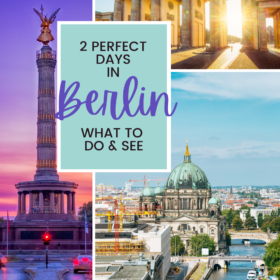
Planning a trip to Berlin? Here’s everything you need to know to plan your perfect stay in the German capital.
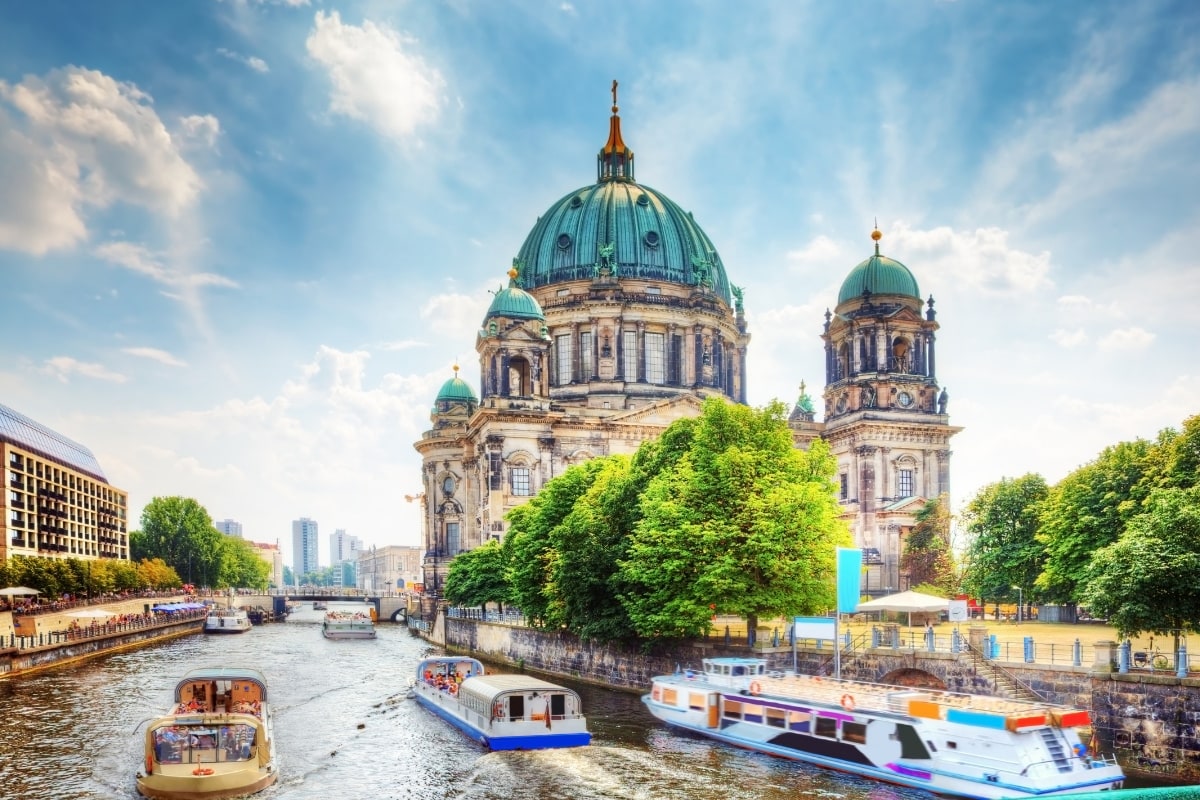
Berlin, the capital of Germany, is one of Europe’s most interesting destinations. From its dark past to its rapid rebuilding and development as a modern city, Berlin’s famous landmarks reflect the city’s complex history.
Each visitor is attracted to different parts of the Berlin experience. Some are interested in the historical sites tracing back to when the capital was divided into East Berlin and West Berlin. Others are drawn to the city’s unique culture, whether it be through museums, food or art or nightlife.
I used to live near Berlin and through countless visits over the past 30 years, I’ve seen the city grow, change, and develop. It’s a must-see destination for many Germany visitors for good reason!
Join our FREE Germany Trip Planning Facebook Group!
If you’re planning a short stay and are worried about not having enough time to see everything the city has to offer, this guide will help you prepare the best 2-day Berlin itinerary. I also share ideas for if you have 3 days or more.
If you’re creating your overall Germany vacation itinerary, this guide will help. And this guide is packed with helpful trip planning info and tips.
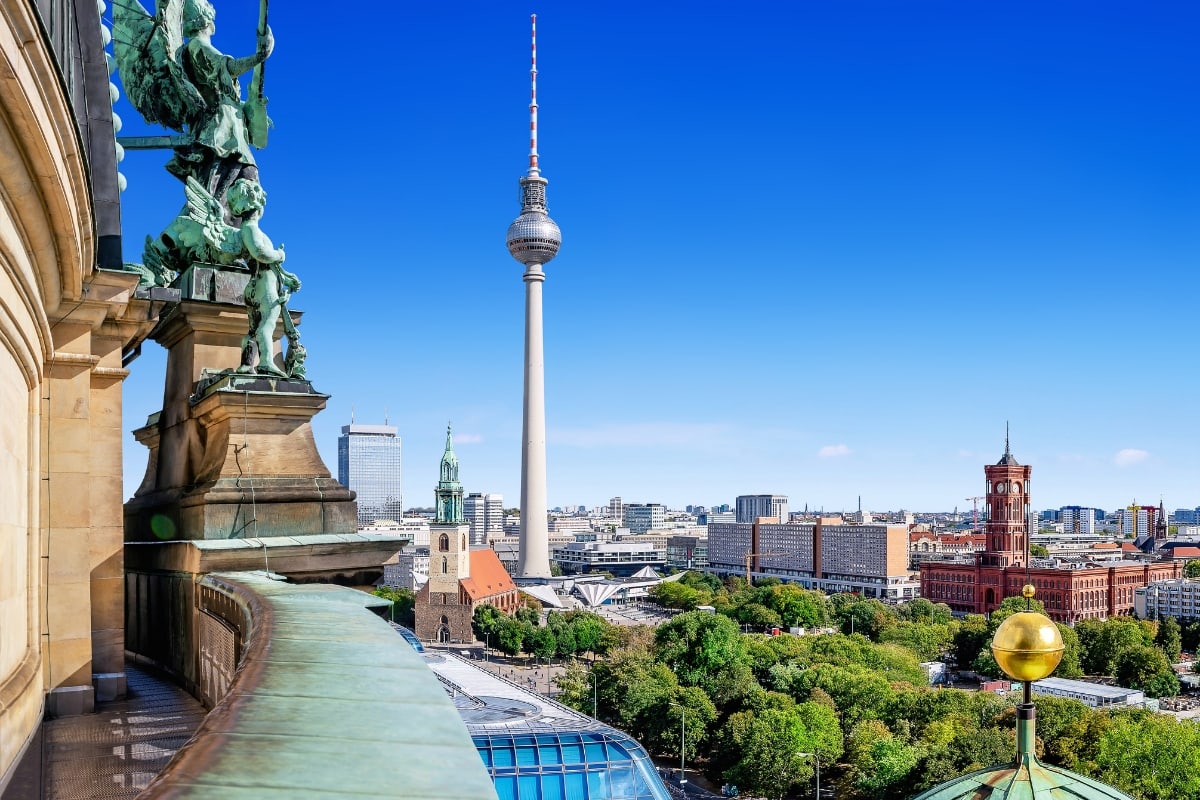
- 1 Best Time to Visit Berlin
- 2 Getting to Berlin
- 3 Best Way to Get Around Berlin
- 4 A Little History of Berlin
- 5 Berlin Welcome Card
- 6 Guided Tours of Berlin
- 7 What to Do And See in Berlin in 2 Days
- 8 Brandenburg Gate (Brandenburger Tor)
- 9 Pariser Platz
- 10 Holocaust Memorial
- 11 German Parliament Building (Reichstag)
- 12 Unter den Linden
- 13 Museum Island
- 14 Berlin TV Tower (Fernsehturm)
- 15 Checkpoint Charlie / Museum
- 16 Panoramapunkt
- 17 Jewish Museum
- 18 DDR Museum
- 19 Hackescher Market (Hackescher Markt)
- 20 Berlin Cathedral (Berliner Dom)
- 21 Potsdamer Platz
- 22 Tiergarten Park
- 23 Berlin Zoo
- 24 Berlin Wall & East Side Gallery
- 25 Prenzlauer Berg
- 26 Charlottenburg Palace
- 27 Open-Air Gallery
- 28 Spree River Boat Cruise
- 29 Enjoy Berlin Street Food
- 30 Christmas Market(s) in Berlin
- 31 Sanssouci Palace
- 32 If You Have 3+ Days in Berlin
Best Time to Visit Berlin
If it’s your first time traveling to Berlin, you’re likely wondering when is the perfect time to visit. There are several factors you should take into account when deciding, such as the weather, travel costs, and events.
Luckily, there is plenty to do and see no matter what season!
Starting with winter, this season is a great time for anyone who loves festive celebrations. Aside from Christmas markets, Berlin also celebrates New Year’s Eve like no other city — we celebrated New Year’s there one year and had a BLAST!
The catch is you’ll be faced with cold, rainy weather, and dark evenings. But if you stick it out you can find great deals during off-season in late January and February. And there’s plenty you can do indoors. Tip: get up early to make the most of the short days and plan for cozy evenings in restaurants, bars, cafes, theaters, etc.
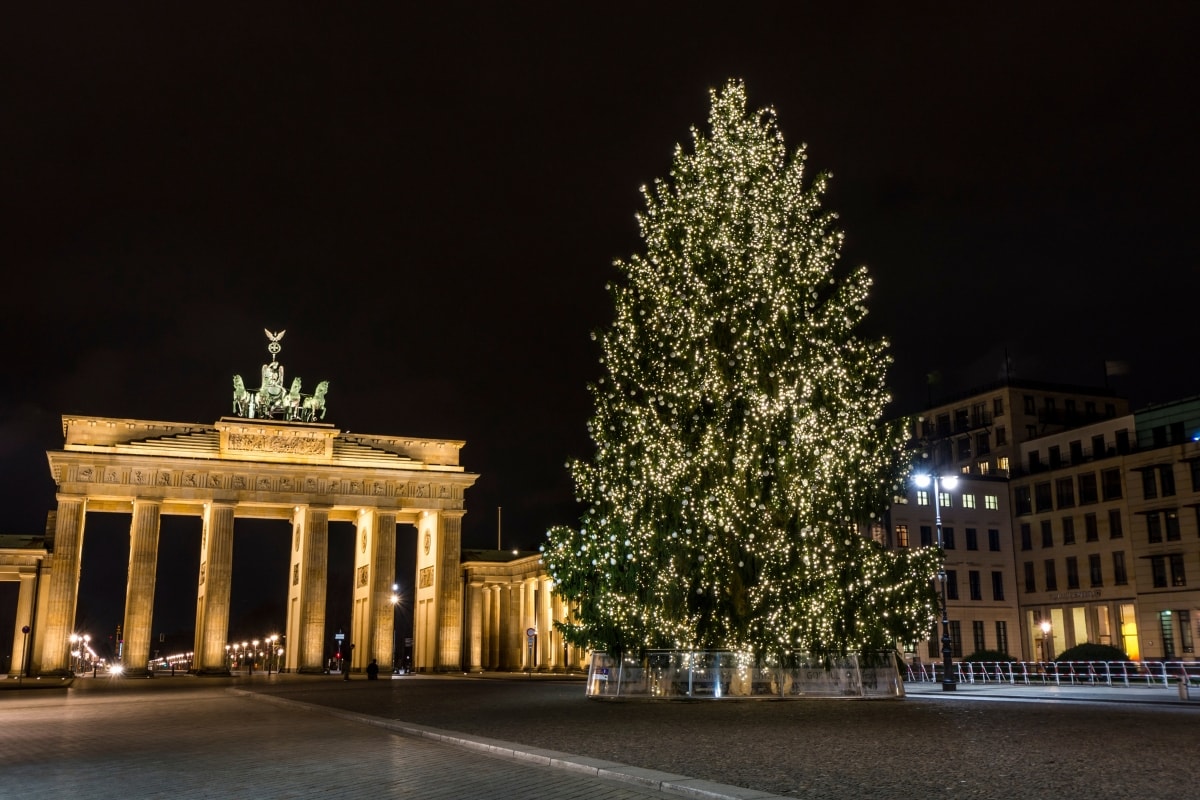
After winter, Berlin slowly comes back to life during spring . But the weather can be unpredictable. Spring can be a good option if you’ll be spending more time indoors, like going to museums and exhibits. You’ll also avoid crowds but expect more people to arrive as it gets warmer and dryer leading up to June. Tip: wear layers so you can easily adjust to changing weather.
Summer is one of the busiest and most expensive times to visit. Hotels and flights will be at their highest and tourist attractions will be crowded. But if you plan ahead, you get to enjoy the city in warm weather and attend open-air events. Take note that although the weather might be pleasant, it can also get very humid and hot and air-conditioning is not as common in Germany. Tip: make sure your hotel has air conditioning.
In many ways, fall can be an ideal time to visit. The weather is still warm during early September and sometimes even October before turning rainier and colder in November. Crowds begin to thin out which can lead to lower prices. Tip: check the date of the fall time change
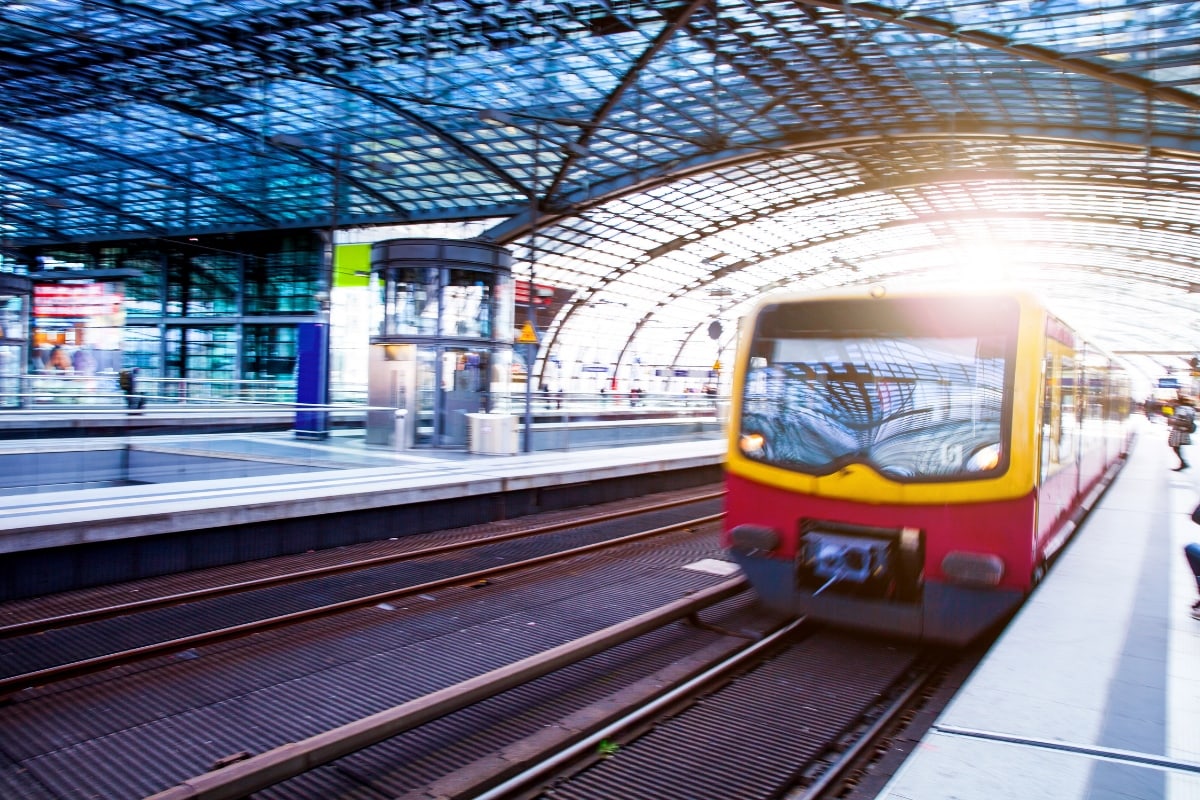
Getting to Berlin
Getting to Berlin is easier than ever with the opening of the Berlin Brandenburg Airport. It has replaced the old Tegel and Schönefeld airports, which means you can fly in now via a larger central airport. On our most recent trip to Berlin we flew directly into Berlin from Newark (before we had to fly via Stockholm).
If you’re coming from another German city or another surrounding country, arriving via train to the central train station (Hauptbahnhof) is likely the best way to get to Berlin.
And, of course, you can drive. The last time we were in Berlin we rented a car at the airport at the beginning of our roadtrip (and returned it at the Stuttgart Airport).
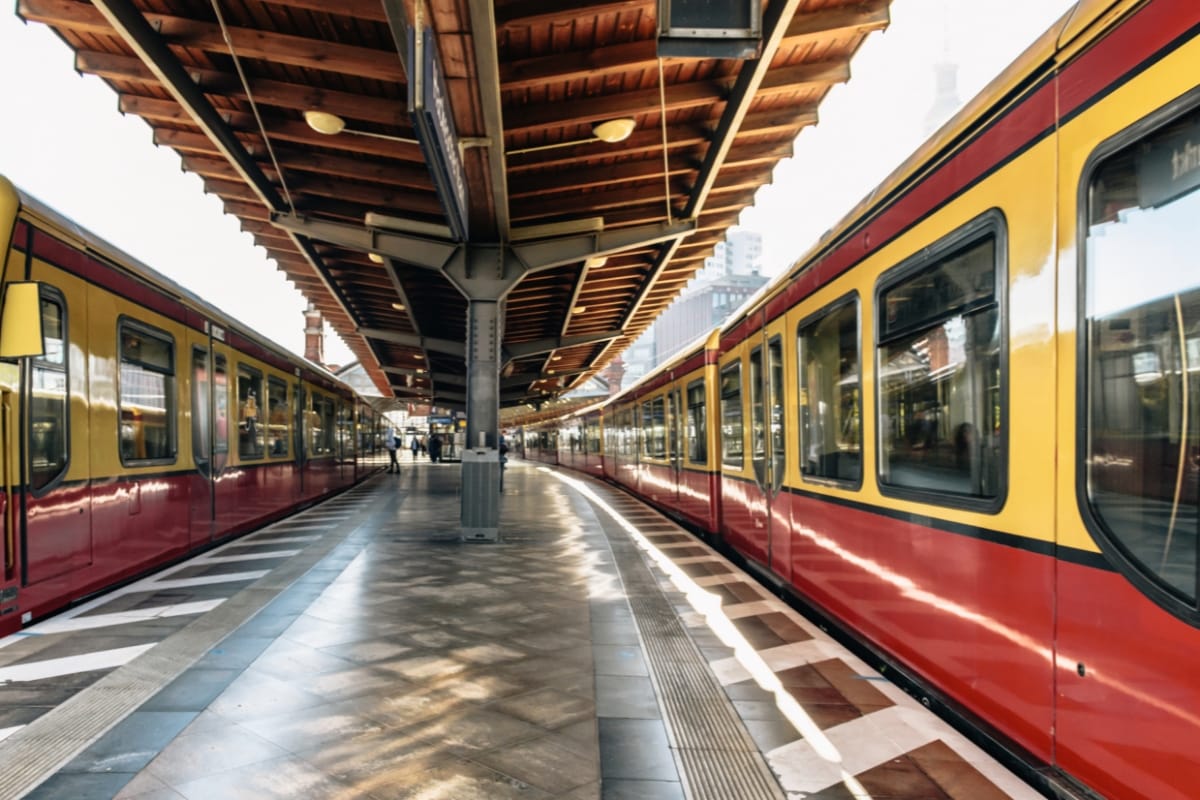
Best Way to Get Around Berlin
Berlin’s public transportation network is expansive, covering pretty much all areas of the city. Buying a single ticket gives you access to the U-bahn (subway), S-bahn (city train), trams, and buses.
If you’re in Berlin for 1-3 days you’ll likely want to take public transit more than once, and so it’s likely worth getting the Berlin Welcome Card , which gives you unlimited public transportation and discounts on museums, sights, performances, and more.
You can also easy navigate the city center by foot since many popular destinations are just a short walk from one another. If you stay near Unter den Linden and visit sights between the Reichstag and Alexanderplatz you might not even need to use public transit.
Other modes of transport include taxis, electric scooters, bikes, and car rentals (for day trips or getting to your next destination). Lots of people get around town on rented scooters and bikes!
Grab our FREE Germany Trip Planning Checklist Now!
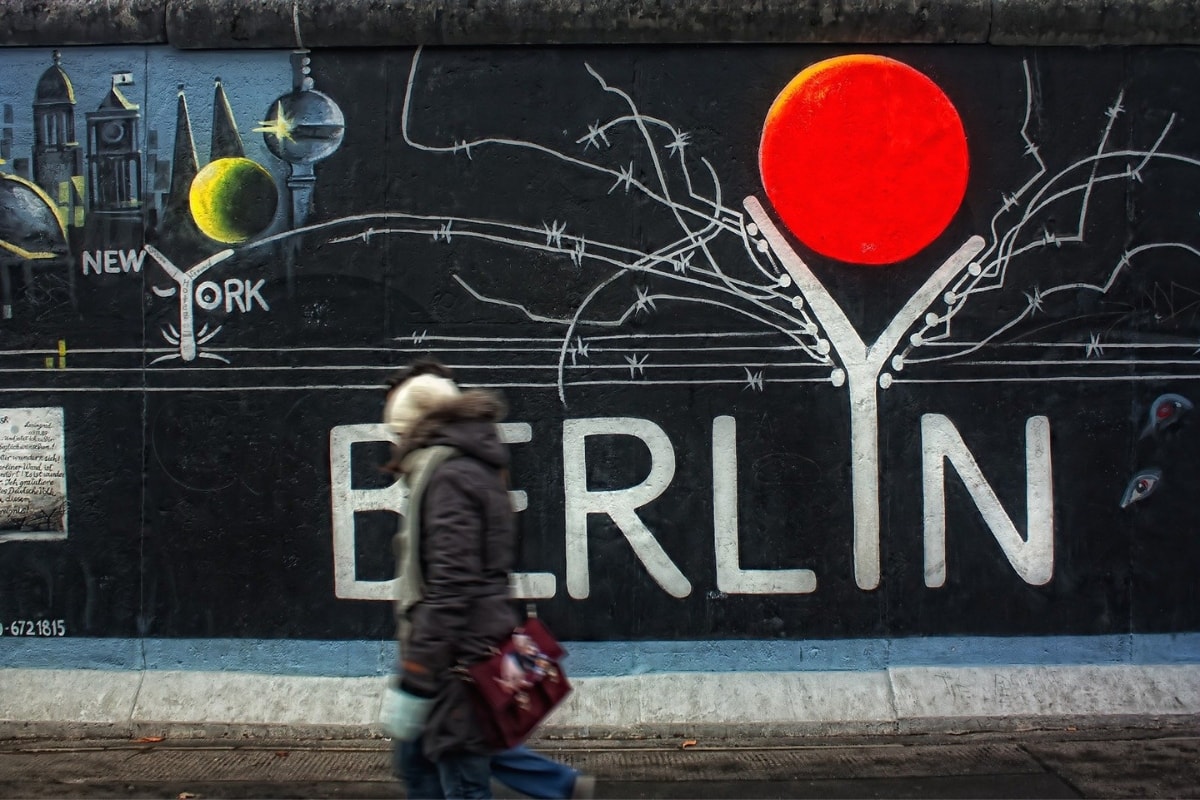
A Little History of Berlin
Berlin is inextricable from its history, to the point where you’ll appreciate your visit even more if you have a good understanding of the city’s origins.
The early history of the city begins in the late 15 th century when Berlin was made the capital city of Brandenburg. In the subsequent centuries, the city underwent significant losses brought by wars and plagues.
But after becoming the capital of the Kingdom of Prussia, Berlin flourished.
As other European countries also grew, alliances formed and political tensions eventually pushed Berlin into world war that led the way to Hitler’s rise in power. One of the aftermaths was the country splitting into East Germany and West Germany.
Separating the two was the Berlin Wall, a symbol of the Cold War that stood from 1961 to its collapse in 1989. Think about that for a moment…there was a WALL around West Berlin, which was in the middle of East Germany. Seems crazy to think about it nowadays but that wall made its mark on Berlin. The fall of the Berlin Wall paved the way for the reunification of Germany and the complete transformation of the German capital. Berlin remembers its history as it continues to grow into one of the most influential cities in Europe.
There’s no better way of learning than by seeing where all these historical events took place. Step into Berlin’s history and book a 2-hour walking tour led by an expert with commentary on the Third Reich and the Cold War.
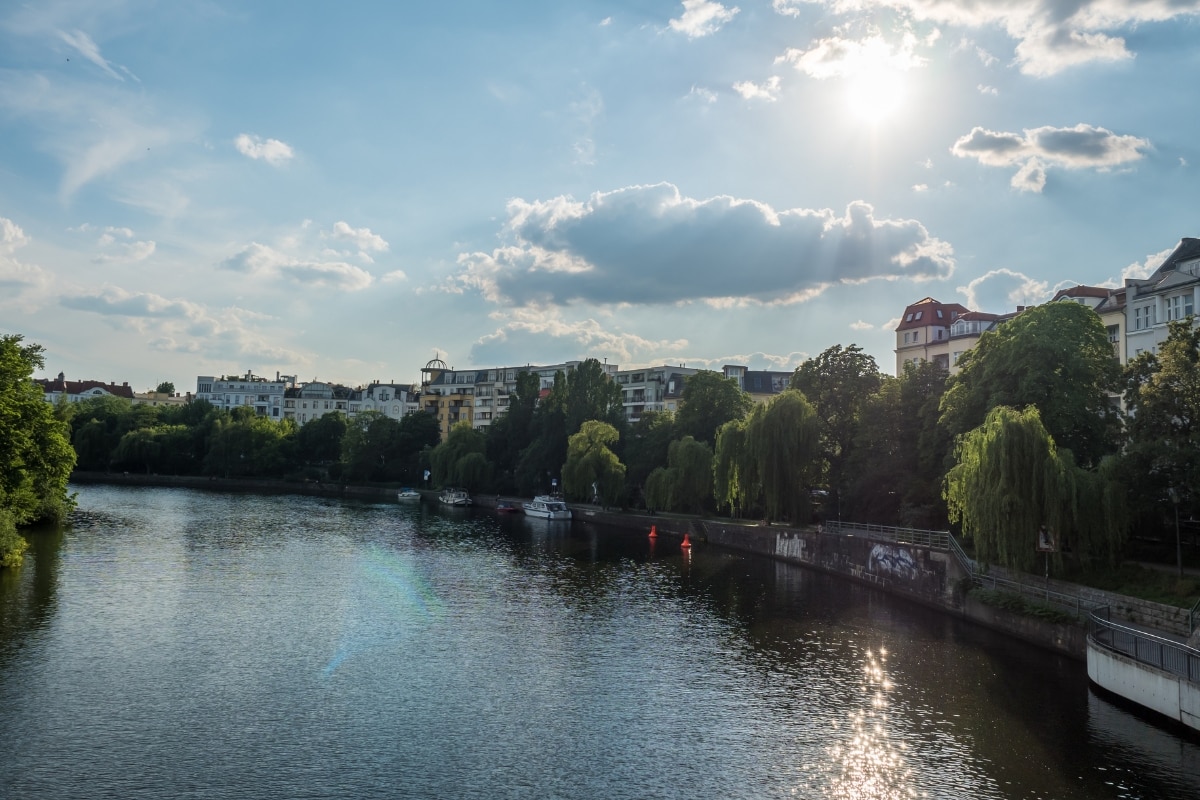
Berlin Welcome Card
One of the top tips that will make your Berlin trip as easy as possible is buying the Berlin Welcome Card .
This card gives you access to any of the public transportation modes at no extra cost, meaning you won’t have to buy single tickets for every ride.
You’ll also get exclusive discounts and reduced fees to lots of tourist attractions like museums, exhibits, tours, performances, and more!
Depending on how long you’re staying, you can choose a card that covers 2 to 6 days in the city. You’ll find more detailed information on how to get the Berlin Welcome Card here .
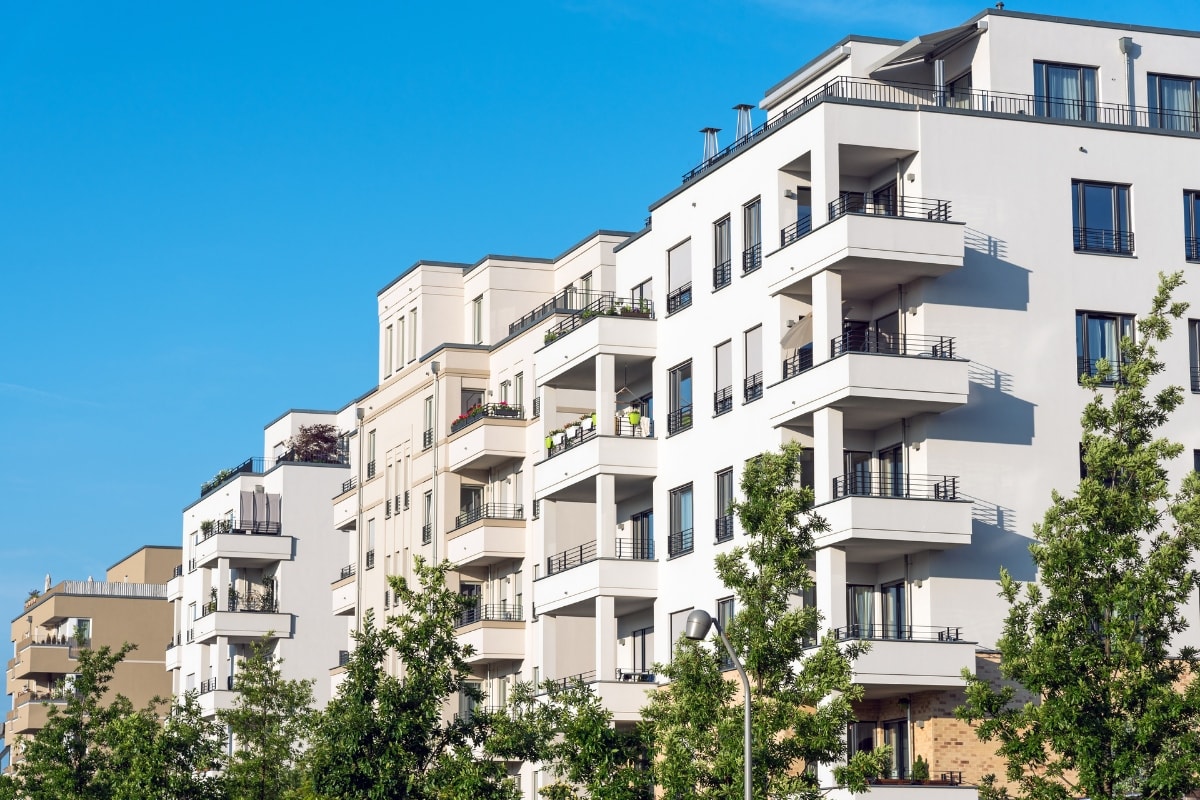
Guided Tours of Berlin
If you don’t have much time in the city, then guided tours are an excellent resource. Tour guides know the most time effective routes to see as many of the best places in the city. Consider adding one of these tours to the morning of your first day in Berlin.
We highly recommend booking a private tour with Matti of Tours of Berlin . He’s one of our preferred partners and offers a fantastic way to get an insider’s look at Berlin. Matti is a Berlin native and can show you Berlin’s fascinating history, take you off the beaten path to discover hidden gems, and much more. Click here to check out Matti’s tours. Tell him we sent you!
Hop On Hop Off Bus. The most popular tour of this kind is the Hop On Hop Off Bus. Book your ticket here to explore the city with live commentary and the freedom of getting on and off at any stop. This is a great tour to do when you first arrive in Berlin so you can get an overview of the city and see a bunch of sights right off the bat. Then you can zero in on what you find most interesting.
Trabi Limo Tour. If you want to travel in style and luxury, then book this tour that drives you around Berlin in a Traban t (affectionately called a Trabi ) – the famous old East German car! This unique experience includes a personalized route through the city in a Trabi-XXL stretch limousine, complete with a bottle of sparkling wine or other drinks of your choice!
Drive a Trabi Tour. Another Trabi tour option is this small group Trabi city tour where you not only see the city sites, you can even drive the Trabi!
Segway City Tour. If you want something more lowkey but just as exciting, then book a Segway Tour and experience the streets of Berlin at a different speed.
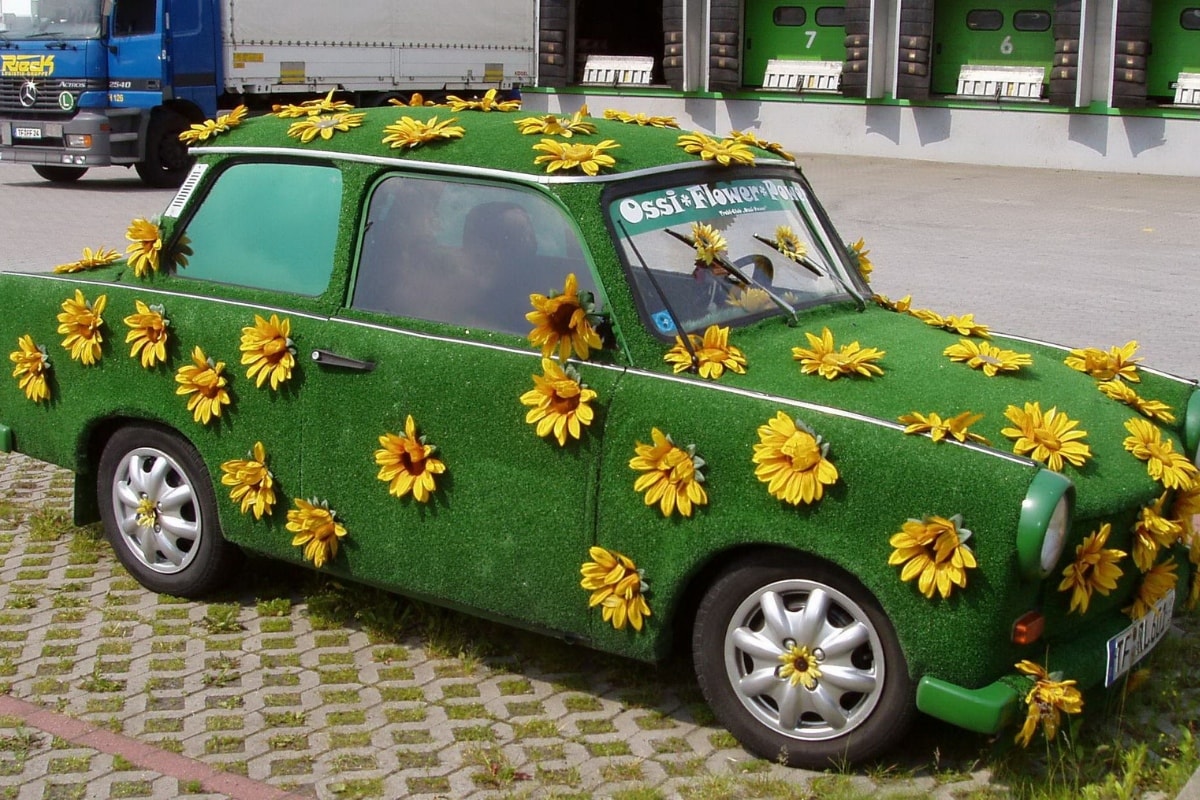
What to Do And See in Berlin in 2 Days
You can see a lot of Berlin in 2 days, especially if you plan ahead, get up early, and make use of the evenings.
If you’re following a 2-day itinerary, taking any of the above tours in the morning of your first day would be a great way to make sure you see all of the most famous sites. Then spend the afternoon and evening and all of your second day doing any of the top things to do from the list below.
Many important sites are right downtown and easy to walk to and see in one day. Other sites are spread out around the city, and a few are outside of the city. I’ve grouped the sites accordingly, to make your planning easier.
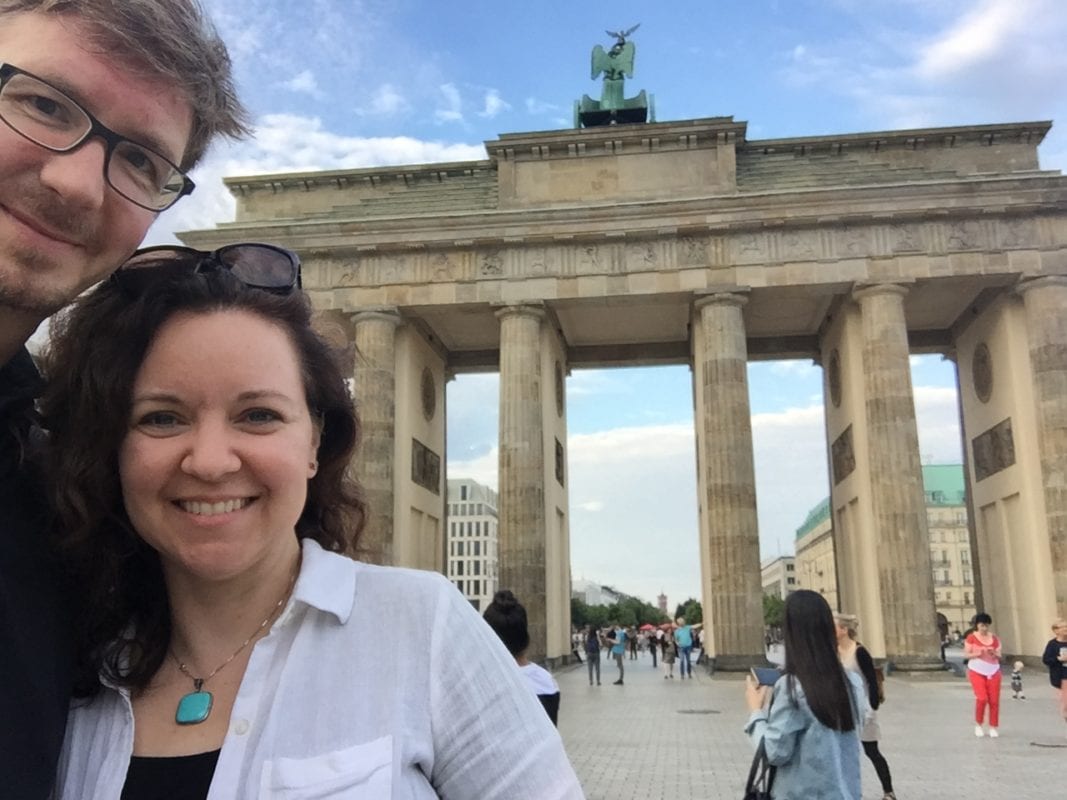
Brandenburg Gate (Brandenburger Tor)
The Brandenburg Gate is one of Berlin’s most important landmarks, both historically and symbolically. Over 30 years ago, it was a symbol of the divided city, formerly East Berlin and West Berlin.
Following the reunification of Germany, Brandenburg Gate quickly turned into an emblem of unity. Major historical events have taken place here. Now it is an iconic sight that attracts thousands of people all over the world and typically the first stop for visitors to Berlin.
Fun fact: on our last summer trip to Germany we flew into Berlin Tegel airport (just before it shut down!), picked up our rental car, drove to the Brandenburg Gate, and actually found a parking spot right across the street from where we’re standing in the photo above! We only had about 30 minutes to enjoy Berlin because our plane arrived several hours late and were were SO jet lagged but I can’t not visit the Brandenburg Gate when I’m in Berlin!
Tip: if you want to take photos when there are few other around, go early in the morning or late at night.
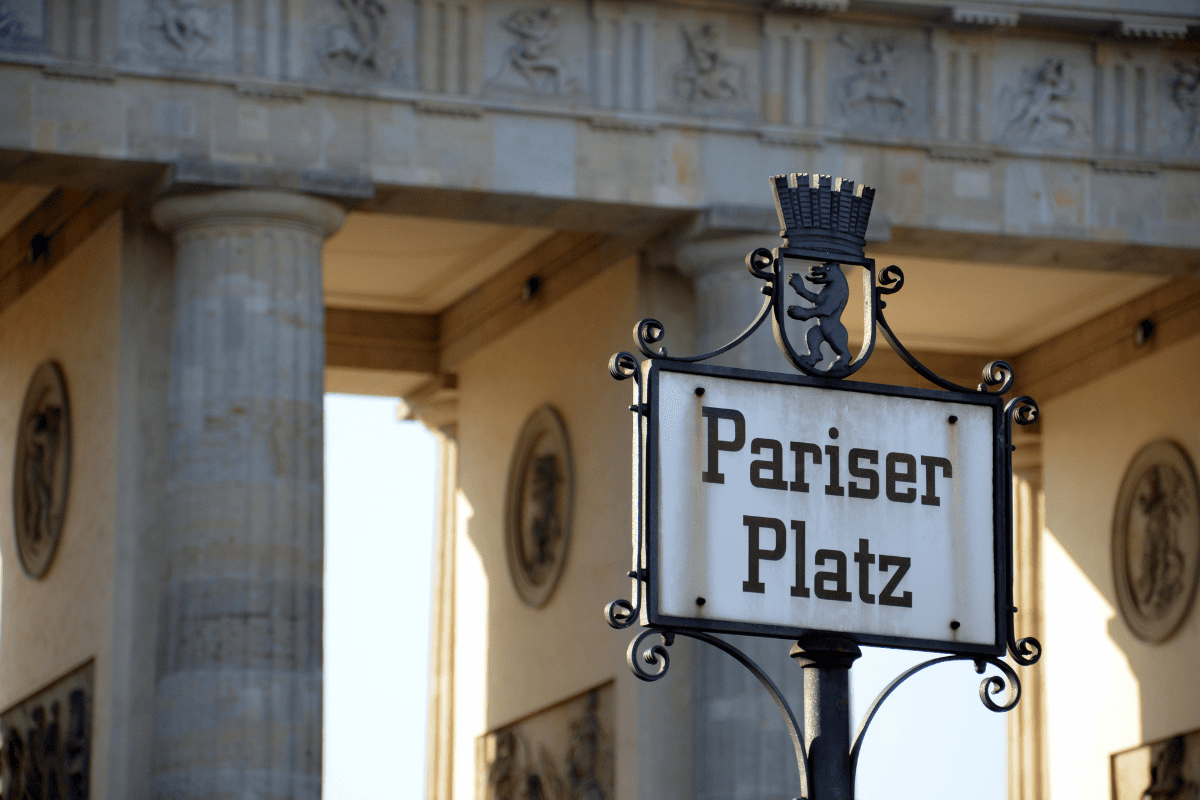
Pariser Platz
Before World War II, this plaza was home to embassies, the Academy of the Arts, and a grand hotel called Hotel Adlon. After the destruction of the war, it was restored to its previous glory. Nowadays, the square is widely visited by tourists looking to capture the perfect photo of the Brandenburg Gate.
Tip: there’s a tourist information office on Pariser Platz.
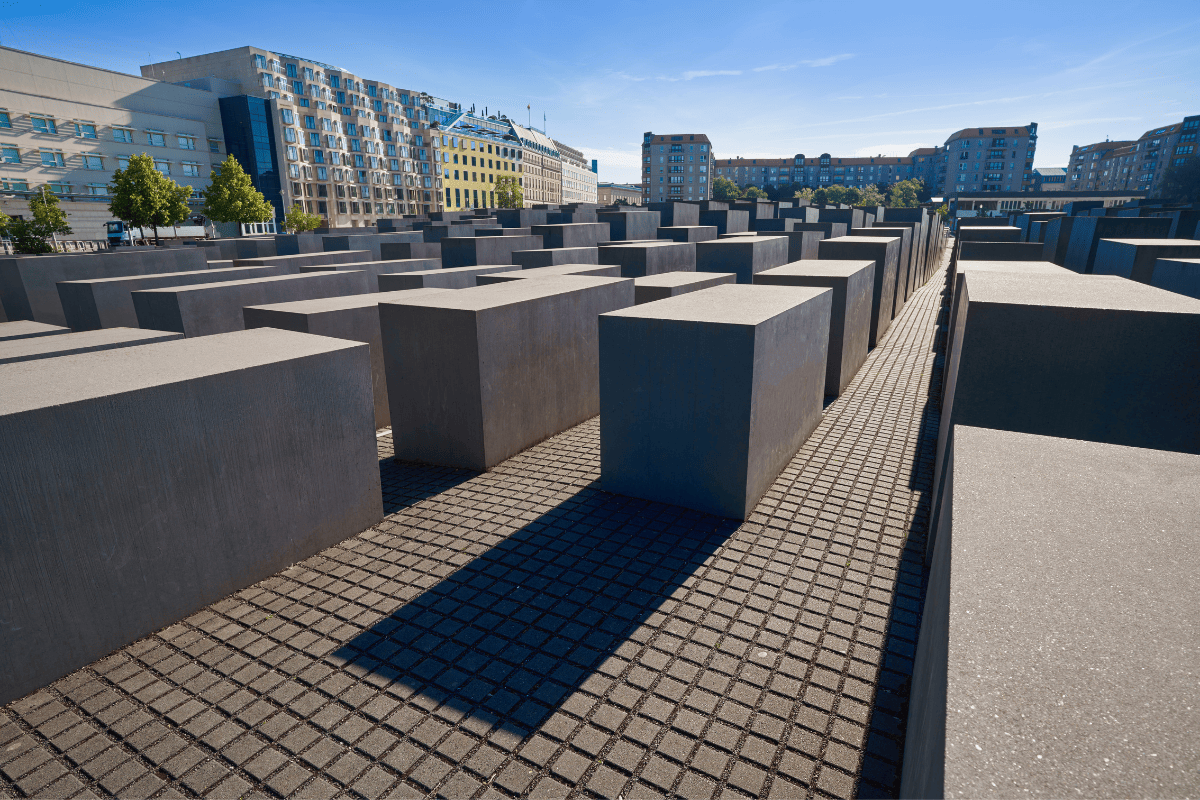
Holocaust Memorial
Also known as the Memorial to the Murdered Jews of Europe, the Holocaust Memorial is located in the heart of Berlin, right near Brandenburg Gate. The monument is made up of 2,711 concrete slabs that create intricate passageways in an open area accessible from all four sides. To learn more, you can also visit the information center and the exhibits filled with letters and diary entries of the victims.
I highly recommend taking a slow solo walk through the exhibit. How do you feel as you walk through different parts of the exhibit? What do you (not) hear? See? Don’t rush through this important memorial -let yourself experience it.
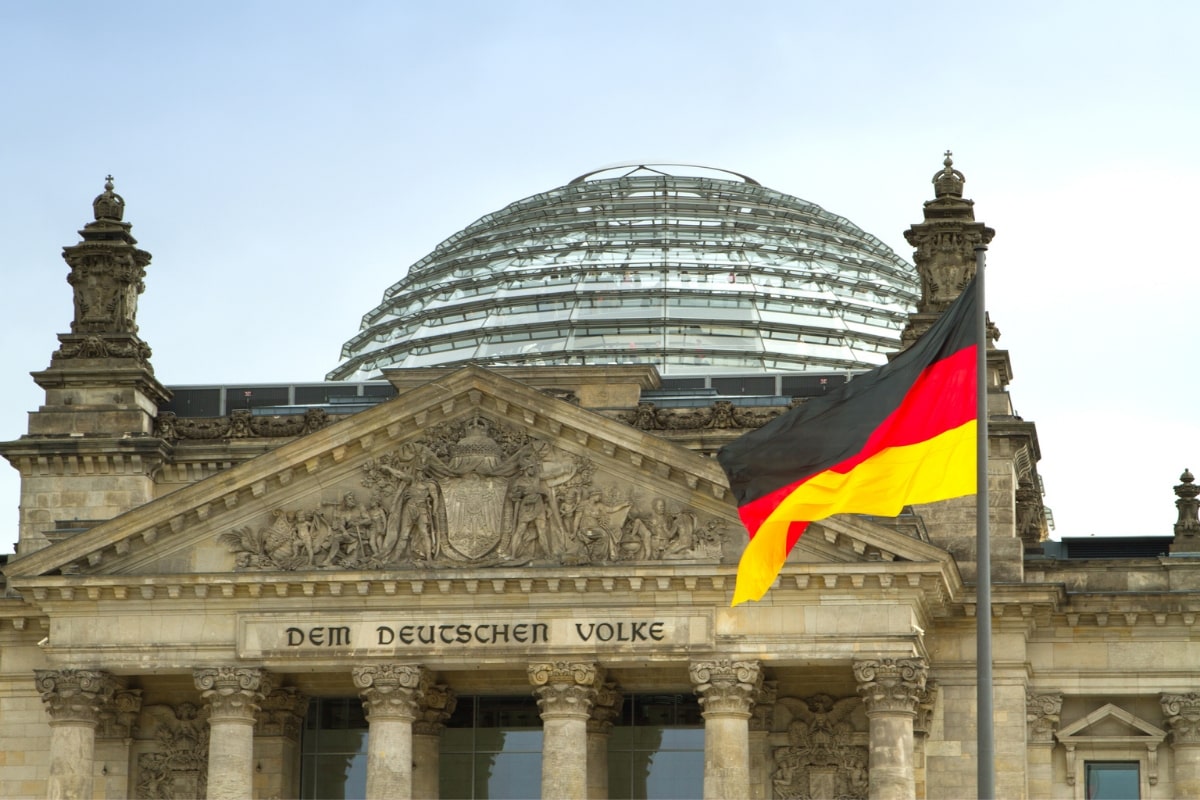
German Parliament Building ( Reichstag )
The Reichstag Building has a roof terrace and glass dome (see photos above and below) that’s open to the public and provides amazing views of the parliamentary district and meeting rooms inside the building. Visitors can even listen to a plenary session in German. It’s worth visiting the Reichstag for both the views inside and outside of the building!
The Reichstag is a short walk from the Brandenburg Gate. The sprawling lawn in front is the perfect place to rest your feet and enjoy the city vibe. To see first-hand how history is made, book an in-depth guided tour here of the government district.
Tip: reserve your entry date and time before your trip. If everything is booked, head to the building across the street from the Reichstag. There you can request tickets for the next day.
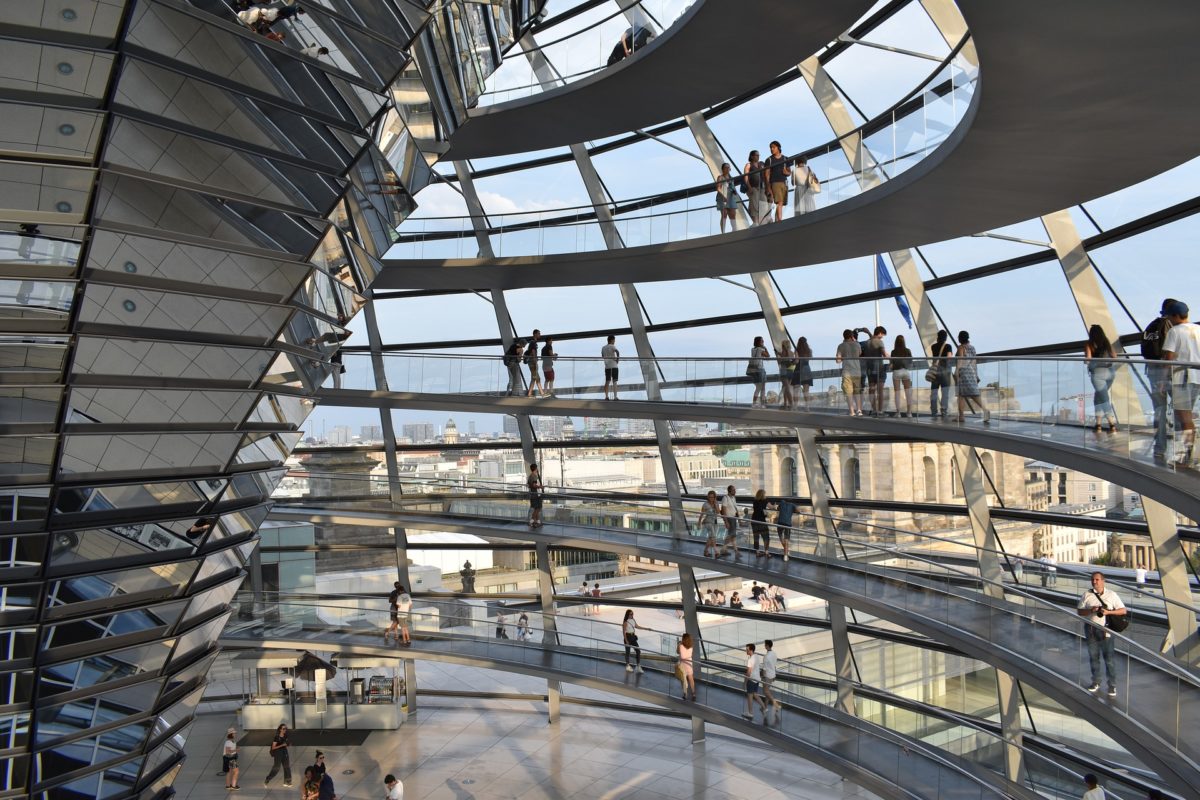
Unter den Linden
Unter den Linden is a major boulevard running through the heart of the city. Close to Brandenburg Gate and Pariser Platz, it’s the perfect place to begin your journey because of all the landmarks located close by.
From Brandenburg Gate to the Berlin Cathedral, the Museum Island, and everything in between, Unter den Linden is also home to some of city’s most beautiful buildings, many of which were restored after reunification. There are also many restaurants, cafes, and bars.
Tip: this street has become a tourist magnet so there are also the typical souvenir shops, too. So be sure to take some time to explore neighborhoods beyond this area so you can experience more of Berlin.
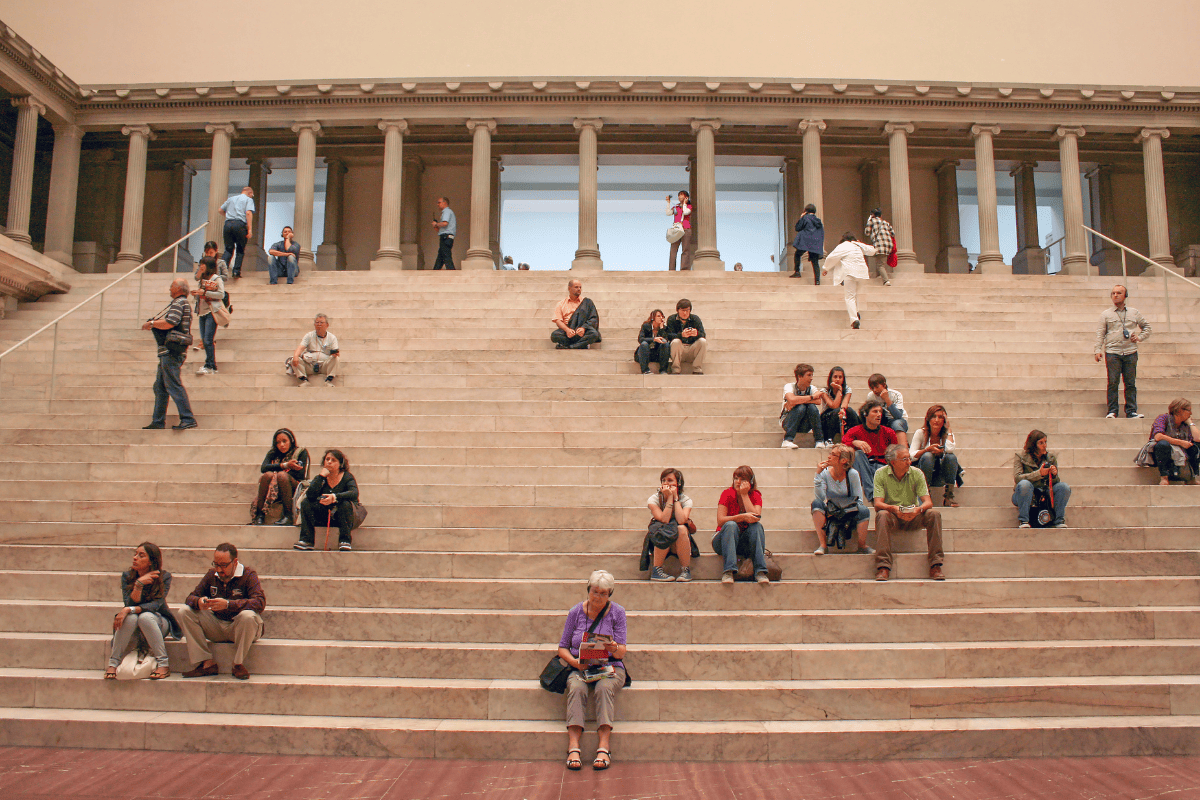
Museum Island
Museum Island is a complex of five museums located along the Spree River near Unter den Linden. It was awarded status as UNESCO world heritage site because its collections showcase thousands of years of artistic achievement.
The Pergamon Museum is home to some of the most significant archeological findings in the world. Discover Ancient Greek and Roman architectural installations, a reconstruction of the Ishtar Gate, and artifacts from Muslim groups from the 8 th century. Don’t miss out on the most visited museum of the five and buy your entrance ticket here.
The Alte Nationalgalerie showcases artworks of a variety of mediums. In here you can admire art from the 19 th to 21 st century, realist sculptures, and statues from famous German masters.
Lastly, Neue Nationalgalerie is known for its impressive collection of Egyptian artifacts such as mummies, figures for burial rituals, and the famous Nefertiti Bust from 1351 B.C.

Berlin TV Tower (Fernsehturm)
The Berlin TV Tower is an impressive structure located near the Museum Island. Standing at over 1,200 feet tall, it served as a symbol of technological advancement of East Germany. You can see it from all over the city.
Nowadays, visitors go up to the viewing platform at the top of the tower to enjoy stunning views of the city. You can also enjoy a meal by the window of the tower’s restaurant that slowly rotates so you can see all of Berlin while you eat. Reserve your table here!
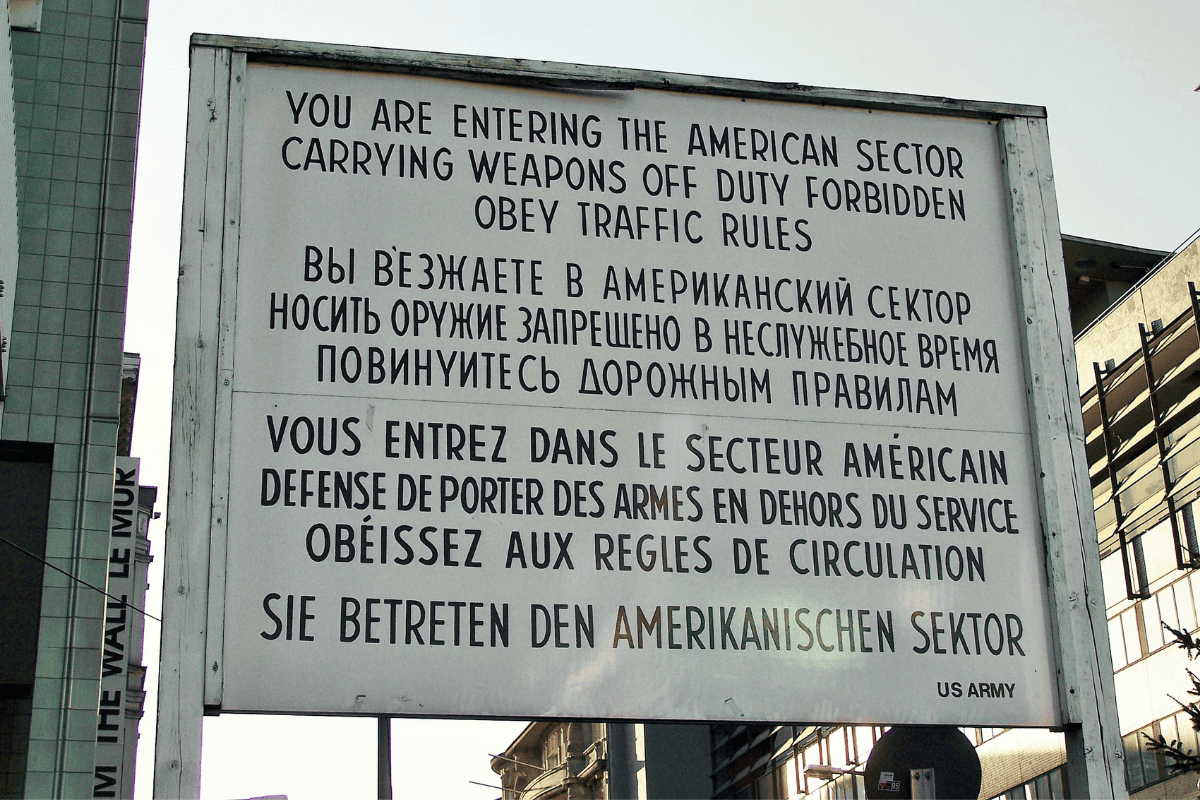
Checkpoint Charlie / Museum
The Checkpoint Charlie Museum commemorates those who tried to flee East Germany. The museum is an interesting place because besides documents or photographs showing how people crossed the border, you can actually see items (such as surf boards or speakers) that people used to hide in in order to escape. Located half way between the Brandenburg Gate and the Museum Island, it’s easy to walk to this museum.
While the Checkpoint Charlie area can be seen as cheesy, the museum is interesting, especially if you can’t get out to the other Berlin Wall sights around the city.
Panoramapunkt
Want to see all the landmarks of Berlin’s skyline from up high? Then book you r ticket to Panoramapunkt here. Located in Potsdamer Platz, Panoramapunkt has some of the best views of the city. You’ll be up in the 24 th floor observation deck in 20 seconds (the fastest elevator in Europe!). While you’re here you can also relax in the café or visit the open-air exhibition.
Jewish Museum
The Jewish Museum is an important museum dedicated to German-Jewish history and culture. The contemporary architecture of the building itself is full of meaning. One of the most noteworthy areas is The Memory Void. Here you can see the Holocaust Tower, a small tower plunged in darkness, and Shalekhet (Fallen Leaves), an installation made up of thousands of face-shaped iron masks that represent the murdered Jews of Europe. It’s located within walking distance of the Checkpoint Charlie Museum.
Located opposite the Berlin Cathedral is the DDR Museum, an experimental museum that give you a glimpse into life in East Germany.
Visitors can climb in an old Trabant, try on clothes, and look through replica furniture to get an immersive experience.
To learn about German history in an interactive way, purchase your ticket to the DDR Museum here .
Hackescher Market (Hackescher Markt)
Looking to treat yourself? Hackescher Markt is a vibrant shopping area where you can find trendy up-and-coming Berlin brands and designers and artisanal studios selling traditional handicrafts.
You can also grab a bite at the gourmet restaurants which serve both local and international cuisines. We had pizza here while waiting for our Spree river cruise and enjoyed relaxing for a bit at an outdoor table at an Italian restaurant.
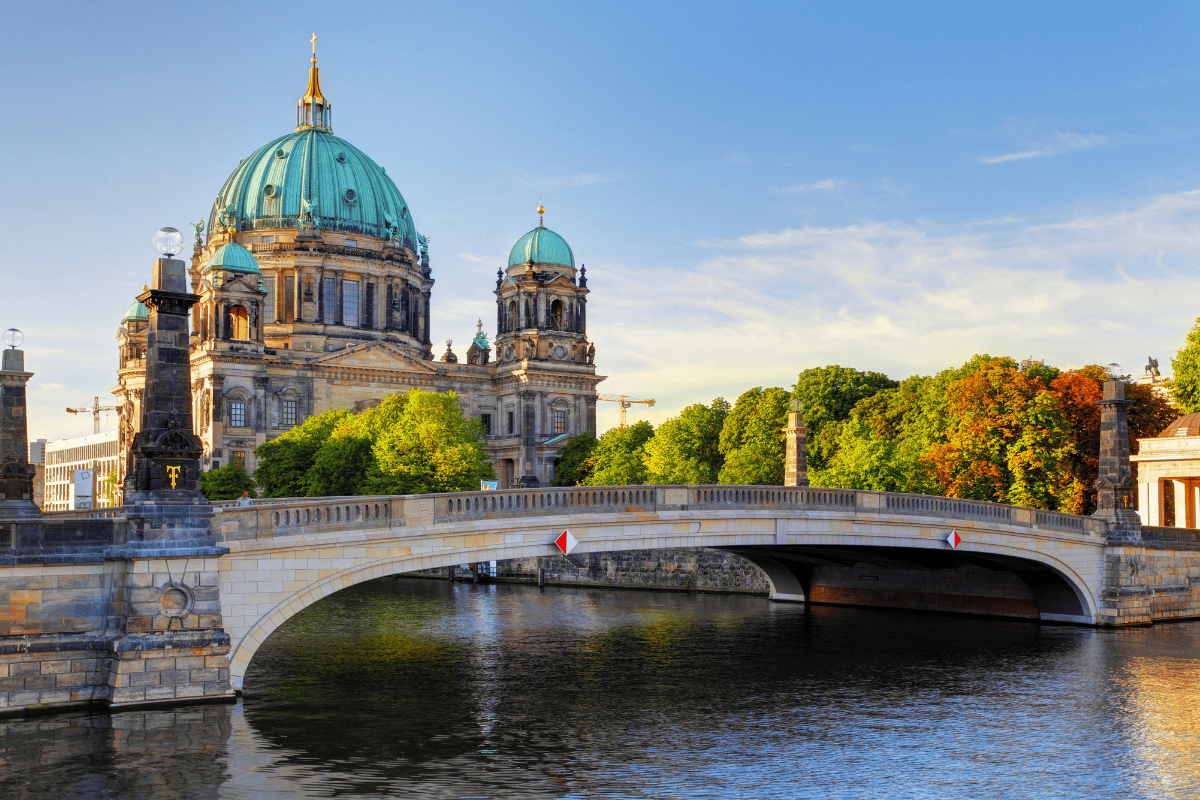
Berlin Cathedral (Berliner Dom)
A 5-minute walk away from Hackescher Markt and near the DDR Museum and the Museum Island, the Berlin Cathedral is hard to miss with its striking green dome. Inside you can admire the Imperial staircase and the Hohenzollern Crypt. Climbing up the dome also gives you a wonderful view of Museum Island and the Spree River.
Potsdamer Platz
Potsdamer Platz is a must-visit for shopping, dining, and entertainment. A short walk away from Brandenburg Gate and Tiergarten park, this plaza is one of Berlin’s most modern areas. Some noteworthy buildings include the mall Potsdamer Platz Arkaden and the Sony Center, a bright glass dome filled with restaurants and terraces.
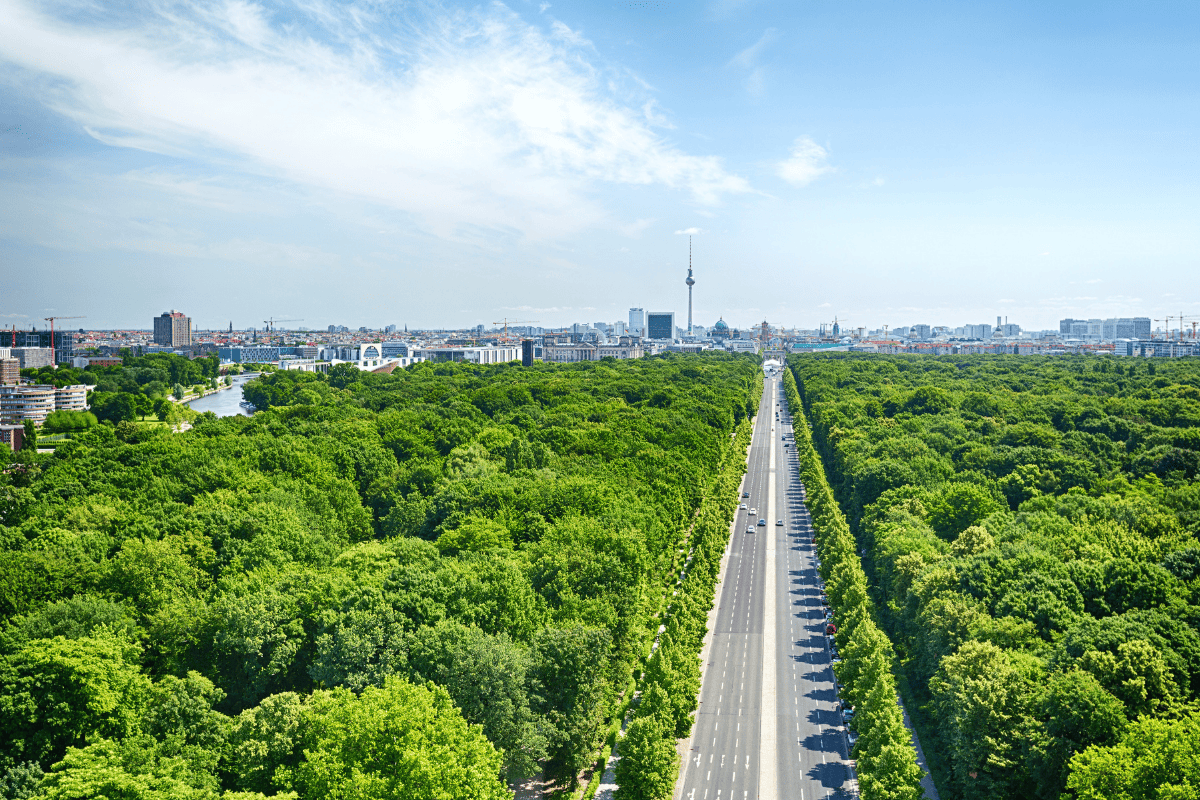
Tiergarten Park
Tiergarten Park brings locals and tourists together. Located close to the city center and across from the Brandenburg Gate, it’s a great location to take a break from sightseeing and relax under the trees.
On Sundays, you can join locals grilling or simply relaxing in the outdoors. It’s a huge park, so you can visit from several locations around the city (such as the zoo on the other side of the park from the Brandenburg Gate).
The oldest Zoo in Germany, Berlin Zoo is known for being home to a large variety of species. This is a great spot for kids to spend hours admiring the Aquarium Berlin, running around the playgrounds, or playing in the petting zoo. It’s right in Tiergarten park so you can see both at the same time.
We visited the zoo after walking the length of Tiergarten park and enjoyed spending a couple hours there. The cute pandas and entertaining primates kept us from thinking about our sore feet!
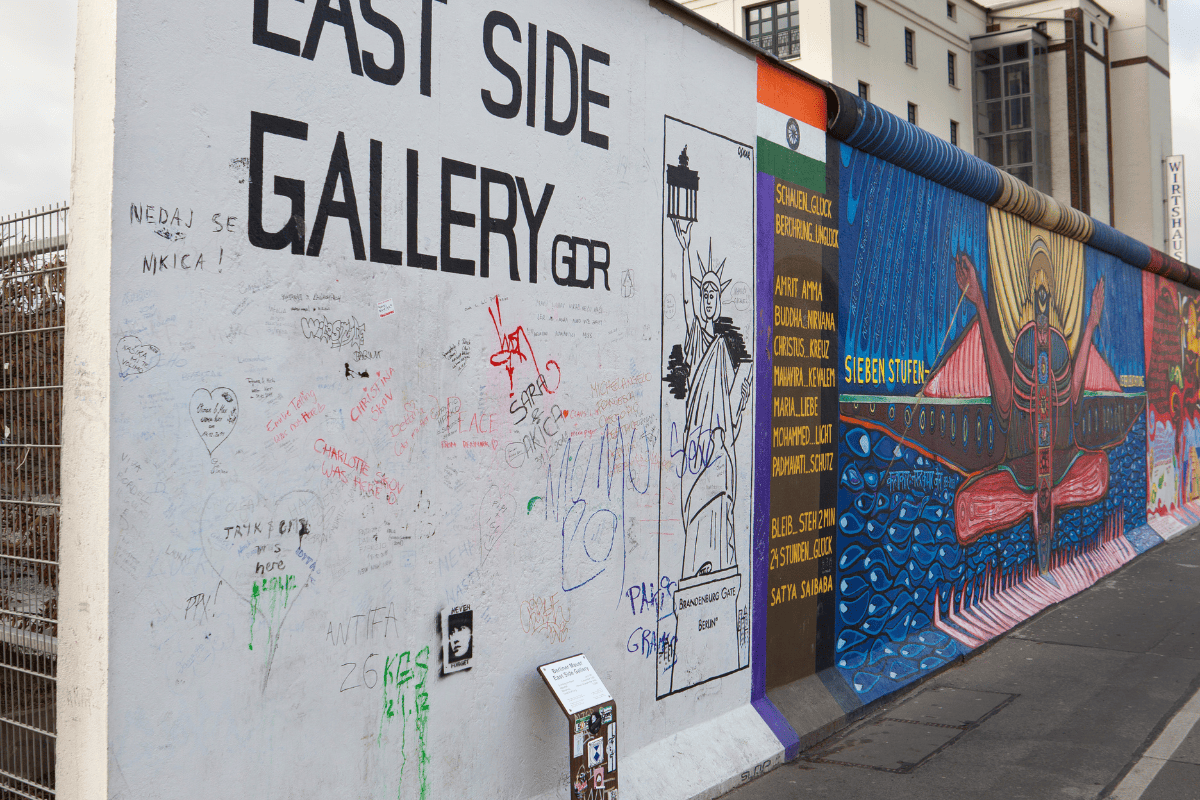
Berlin Wall & East Side Galler y
The East Side Gallery is undoubtedly one of the most popular sites in Berlin. Formerly a section of the Berlin Wall, it’s now the longest open-air gallery in the world. It’s made up of over a hundred original mural paintings that represent freedom and capture the historical changes brought by the fall of the wall.
The East Side Gallery is outside of the city center so you’ll want to take public transportation and then walk the length of the wall. Definitely a must-see in Berlin!
Prenzlauer Berg
Prenzlauer Berg is one of Berlin’s most popular neighborhoods, known for undergoing rapid changes over the years. Before it was associated with 80s counterculture, but now it has transformed into a trendy area with cafés, high-end shops, and restaurants that attracts tourists and urban families.
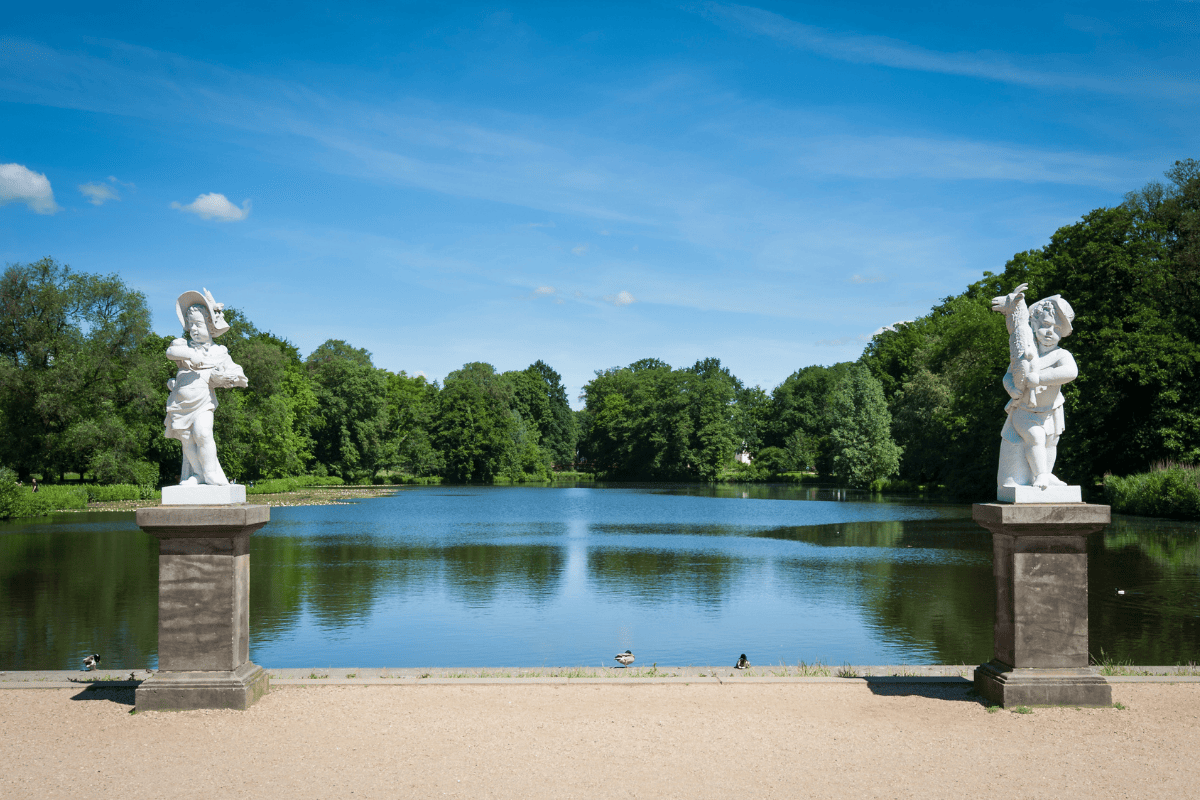
Charlottenburg Palace
Charlottenburg Palace is the largest palace in Berlin. This 17 th century baroque palace served as a royal residence, seen by the ornate interiors and fine art. It’s a great place to escape the bustling streets of the city and spend time outdoors strolling through the gardens. If you don’t want to go in for a tour, take the bus to the palace and enjoy a walk around the grounds and surrounding neighborhood.
Open-Air Gallery
The Open-Air Gallery is an event that takes place in Oberbaumbrücke, turning the bridge into an art festival. Professionals and new artists get the chance to feature their work, whether it be visual art or sculptures. What makes this event unique is that it encourages visitors to contribute and make their own art too.
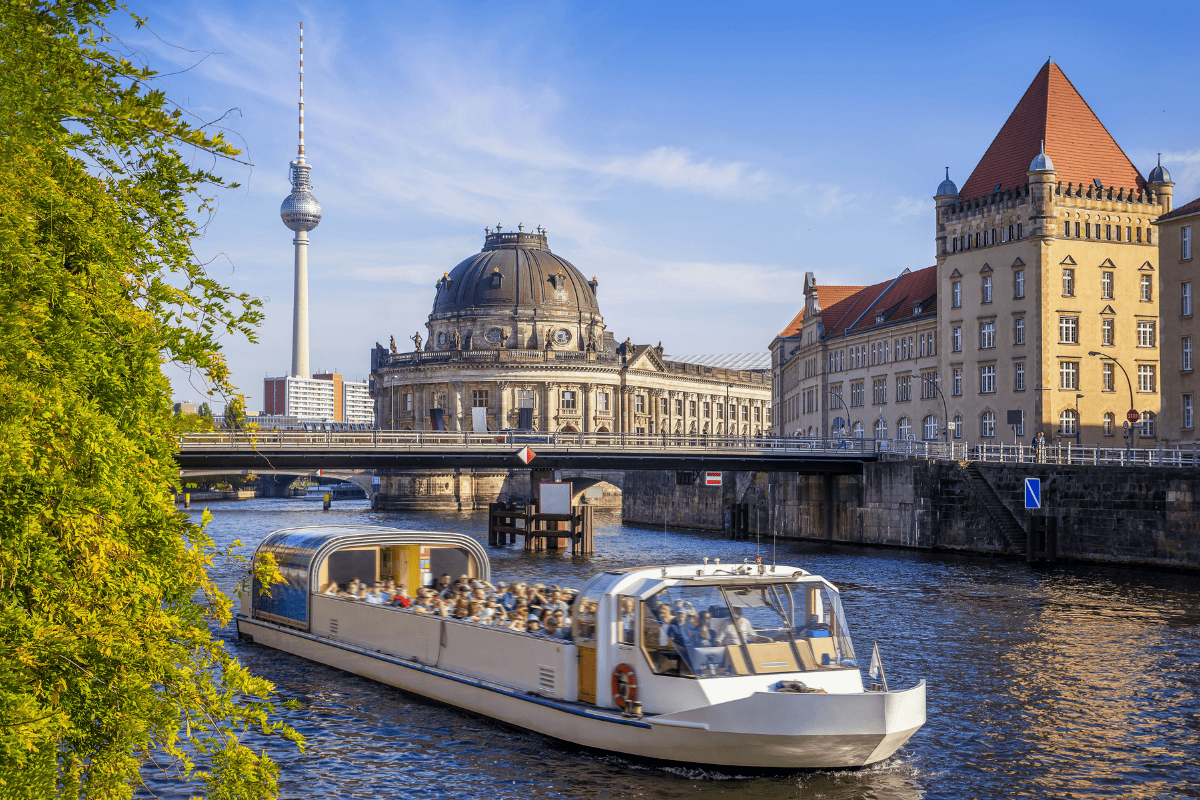
Spree River Boat Cruise
The Spree River has already been mentioned a couple of times and rightly so as it is runs alongside some of Berlin’s most popular sites including Museum Island, the Berlin Cathedral, and the government district.
Did you know you can actually take a boat cruise on the Spree? We did this and had so much fun seeing downtown Berlin from a different perspective (it was also a great way to rest our feet a bit). We were able to order coffee (and beer and other drinks) on our boat, which was also nice. Highly recommended!
You can book the Hop On Hop Off tour with a boat tour option here or take an evening cruise .
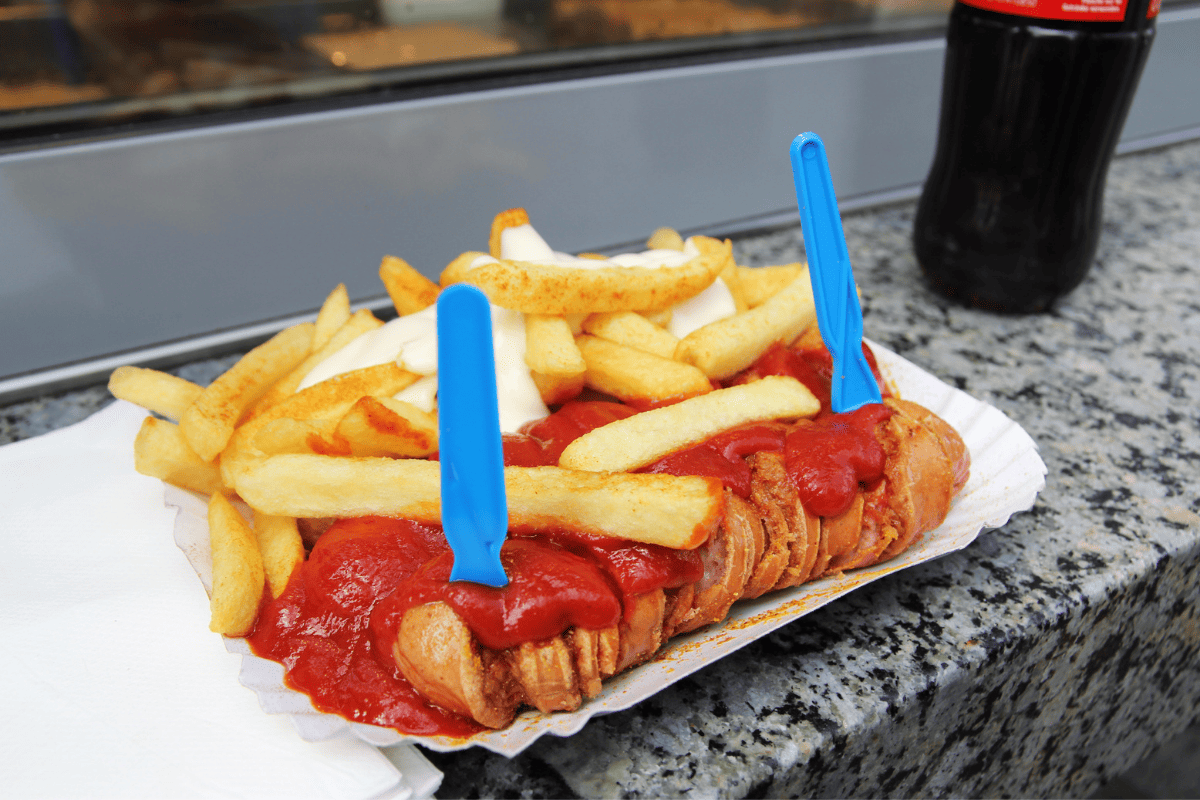
Enjoy Berlin Street Food
Hungry and tired in between all the sightseeing? Then what better way to reenergize than by trying out Berlin’s delicious street food! No matter where you are in the city, you’ll find perfect for on-the-go, street food in the many food carts, takeaway shops, and market halls scattered throughout the city.
You finally have the chance to the most authentic versions of popular German food like Bratwurst, Döner Kebab, Currywurst, and Bretzeln (pretzels)! But it’s also a great opportunity to explore other lesser known but equally tasty delicacies like Leberkäse and Fischbrötchen. Or a burger – they’ve gotten popular in Berlin!
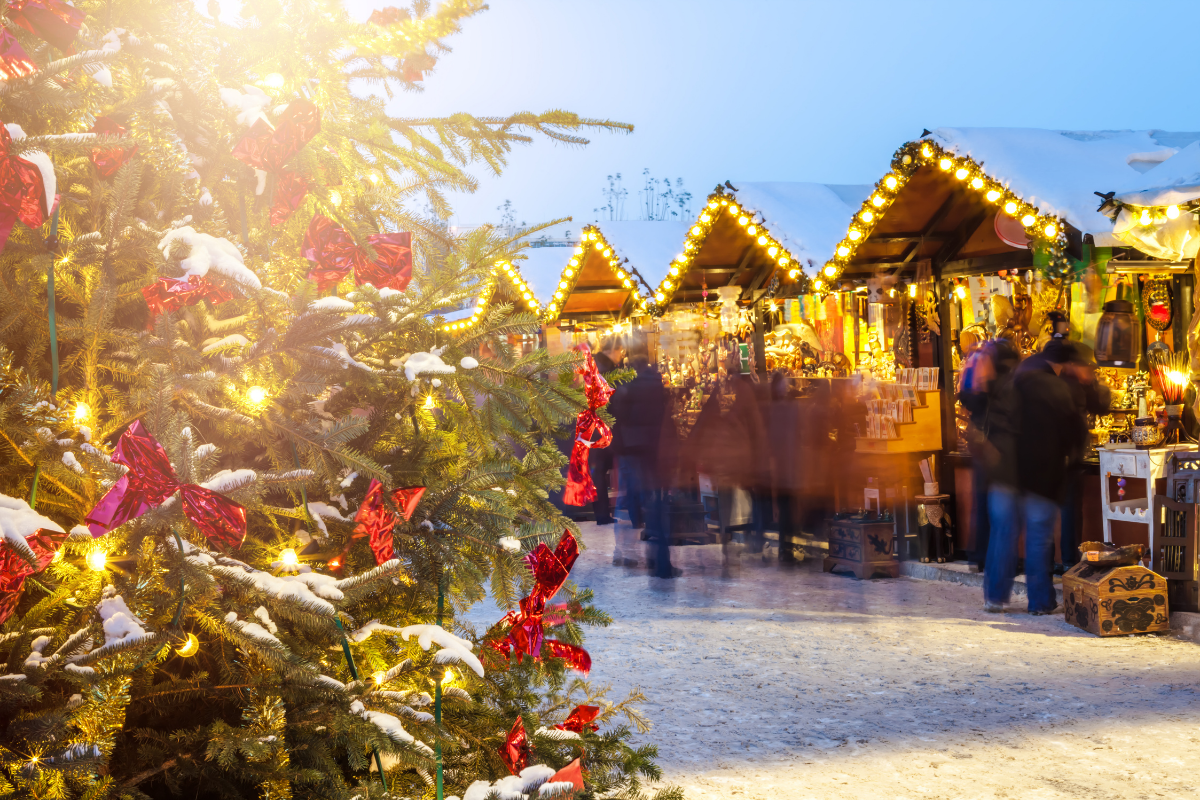
Christmas Market(s) in Berlin
If you’re visiting during the holiday season, then you’re in for a treat with Berlin’s Christmas markets. Gift shopping in artisan stalls, walking under festive lights, drinking mulled wine – these are some things you can do in the Christmas markets.
The most famous Christmas market is Gendarmenmarkt. There are performances until New Year’s Eve, which ends with a big party and fireworks show. Others worth looking into are: Christmas Winter Village on Alexanderplatz, Christmas Garden Berlin, and the Christmas Market at Charlottenburg Palace. There are tons more each of varying sizes and with different themes – there’s really a Christmas market for everyone!
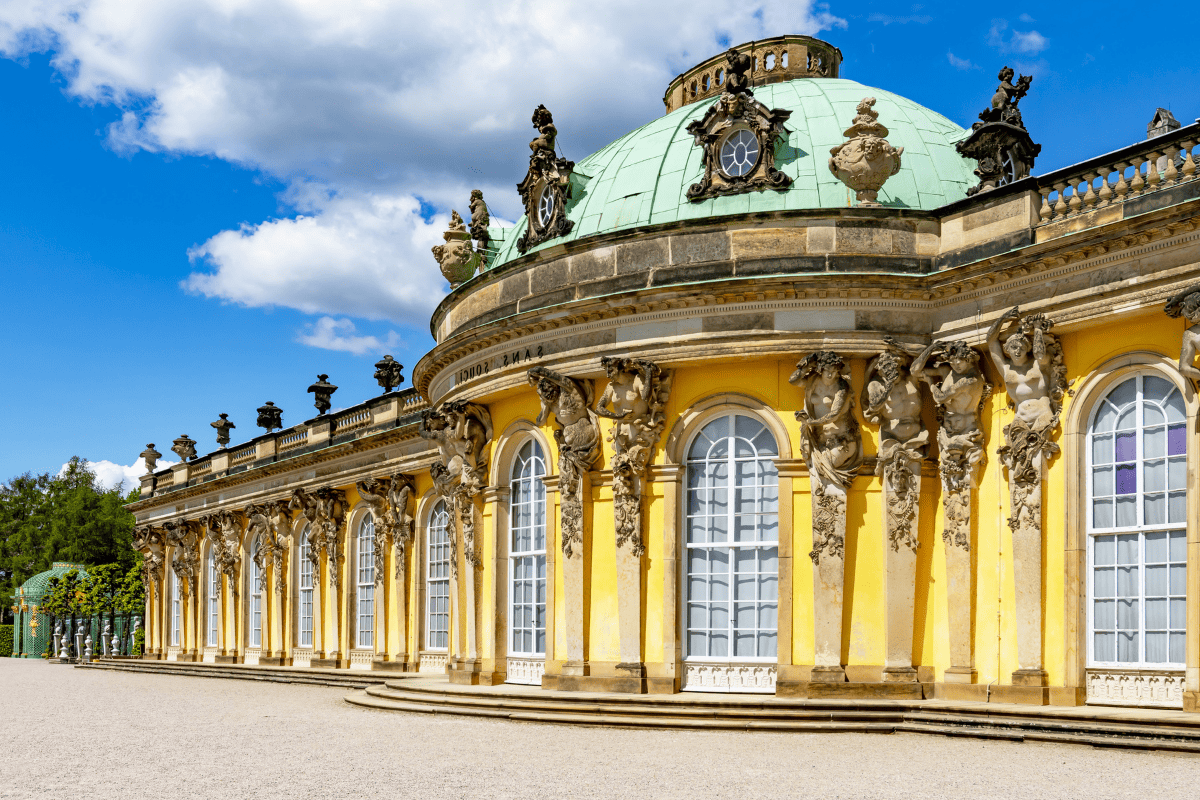
Sanssouci Palace
Sanssouci Palace is one of the highlights of Potsdam, a city just outside of Berlin. The preserved 18 th century interior transport you to the days when the palace was used as a royal summer residence. The vineyard terraces and classical statues in the park are a must-see.
If you’re looking to venture out of the city, Potsdam is a 40-minute S-bahn ride away from Berlin. Potsdam has a Baroque-style old town that is home to charming landscapes and castles like Sanssouci Palace, Cecilienhof Castle, and the New Palace. Explore Potsdam and Sansouci without worrying about any of the planning by booking a guided bus tour from Berlin to Potsdam here.
If You Have 3+ Days in Berlin
If you find yourself with more than 2 days in Berlin, you can see more of the sites listed above, add on a trip to Potsdam, or take a day trip. Unique guided tours are also good way to take in more of the city. Here are a few ideas:
Hidden Gems. Have you already visited most of the city’s famous spots and want to discover some hidden gems? Then go on this walking tour through Berlin’s hidden backyards in Scheunenviertel, a lively neighborhood that used to be a center of Jewish culture.
Food Tour. If you’re a food-loving traveler, book this 3-hour Kreuzberg food tour so you can sample delicious local and international food in this vibrant and popular neighborhood.
Art Scene. If you’re looking for something more artsy besides visiting museums, explore the district of Charlottenburg, a cultural hotspot that’s home to art galleries and trendy bars. Discover Berlin’s art scene by booking guided art galleries tour.
Experience History. If you’re interested in another educational excursion outside the city, book this half-day tour to Sachsenhausen Memorial Center. Located 25 minutes away from Berlin in Oranienburg, the former concentration camp tells the dark history of Jewish prisoners imprisoned during the Nazi regime.
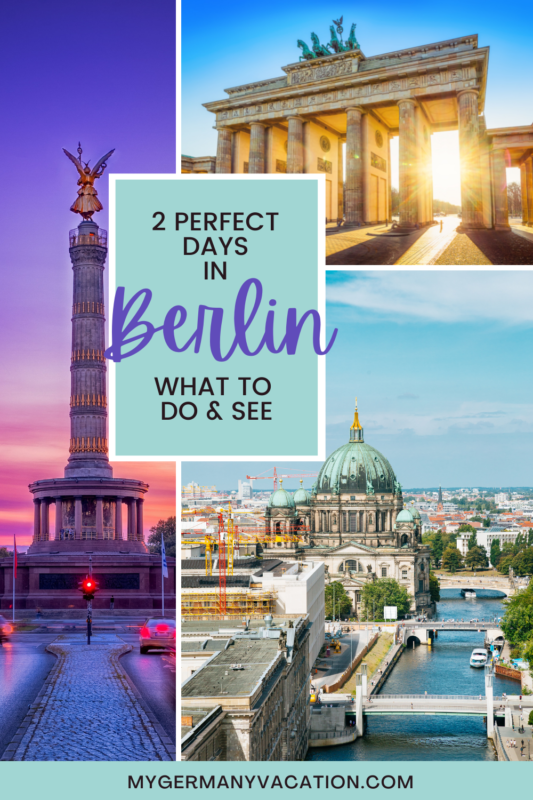
Cate has been traveling to Germany for 30+ years. She has lived in Germany, taught college German, and has a PhD in German Applied Linguistics. She loves helping travelers plan their dream trips to Germany!
Similar Posts
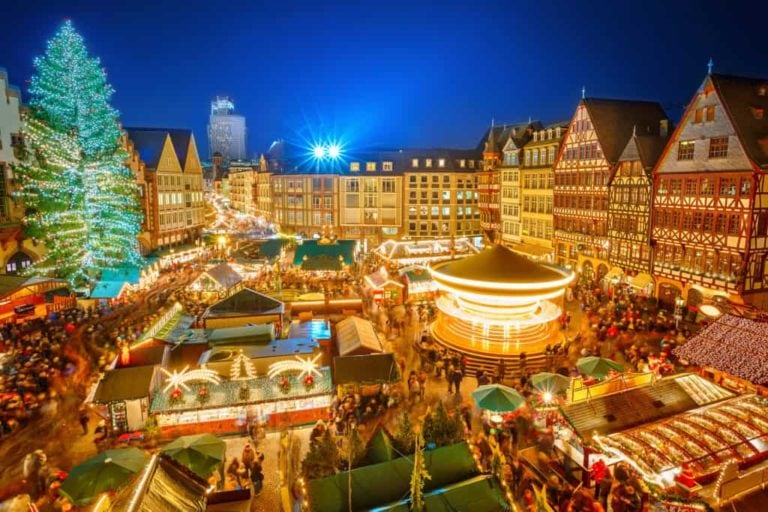
23 Best Christmas Markets to Visit In Germany
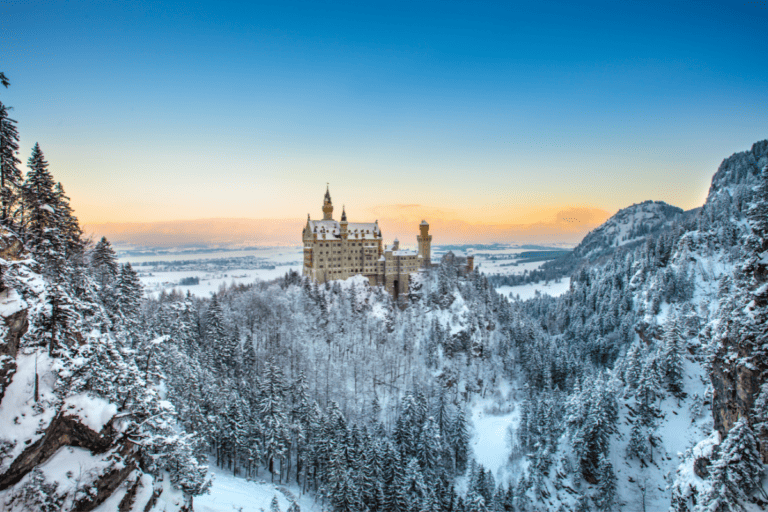
How to Visit Neuschwanstein Castle in Winter in 2024
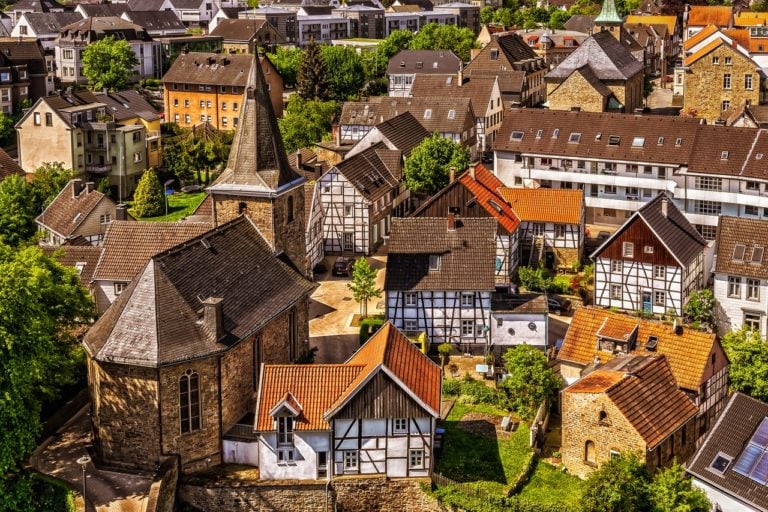
100 Things to Do in Germany
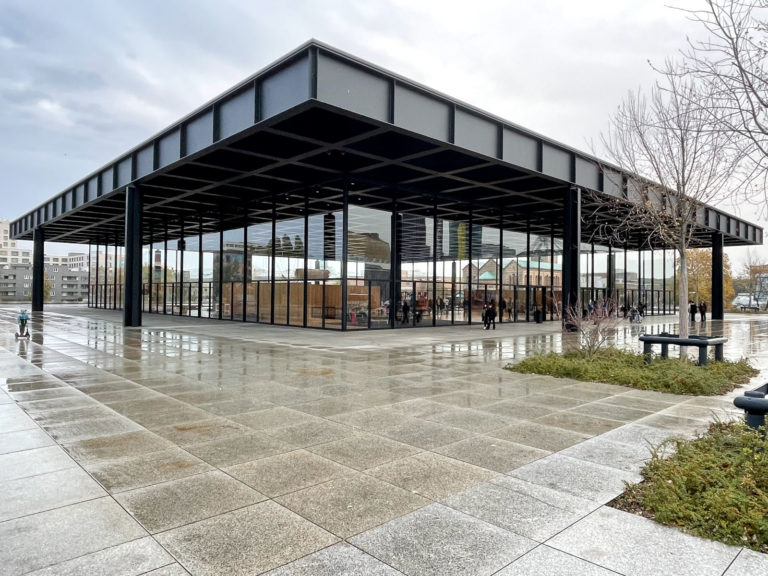
Best Museums to Visit in Berlin, Germany in 2024
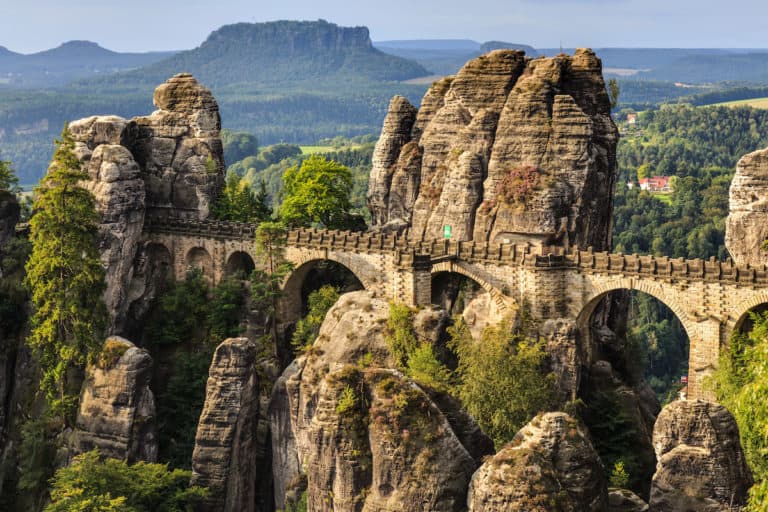
Saxon Switzerland National Park: Germany’s Hidden Gem
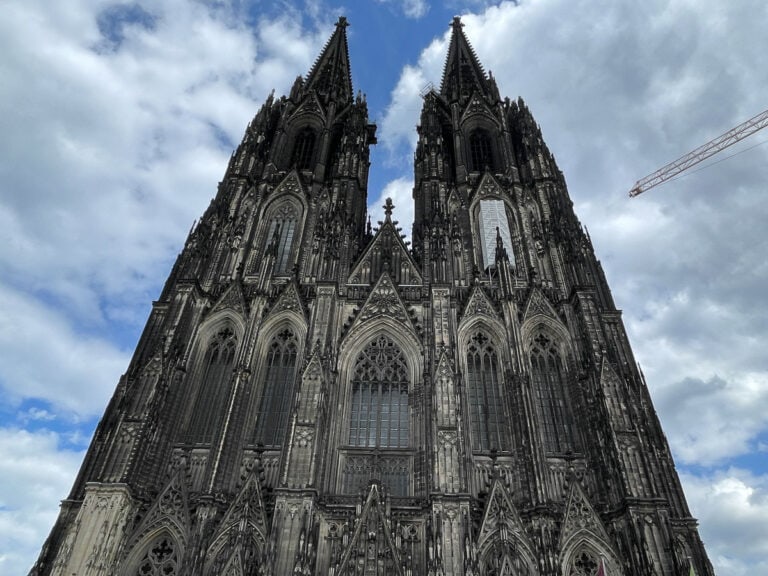
28 Top Things to Do, See and Experience in Cologne, Germany in 2024
Here’s how we can help you plan your perfect trip in 2024.
GERMANY TRAVEL PLANNER: Just getting started? Have questions about Germany’s confusing train tickets or how to find the best guided tours? Not sure which parts of Germany should be in your itinerary (and what to leave out)? Our Germany Travel Planner answers those questions and more via how-to videos, our interactive Germany Planning Map, City Cheatsheets, and MUCH more. Click here to unlock the best of Germany the easy way!
GERMANY TRAVEL CONSULT: Feeling overwhelmed? Itinerary just not coming together? Wonder if a few tweaks would take your trip to the next level? Book a Mini or Full consult with Cate! She’ll help you create or tweak your itinerary, recommend train tickets/passes, hotels, things to do, guided tours, show you how to buy train tickets, orient you to specific cities, help you plan out day trips, and answer your Germany travel questions.
ACCOMMODATIONS: We recommend using Booking.com since they have widest range of accommodations available from hostels, boutique hotels, luxury chains, aparthotels, at the best prices. Check out our accommodation guides for specific recommended hotels.
WHAT TO PACK: If you’re bringing your phone, be sure to bring this plug adapter , this power bank , and this wrist strap . They’ve been lifesavers for us! You can see our other packing essentials here and here .
TICKETS & TOURS: For guided tours, day trips, private tours, and skip-the-line tickets, Get Your Guide is our go-to!
TRAINS & BUSES: To research train schedules and buy tickets or a Germany Rail Pass, we recommend the official Deutsche Bahn (German Rail System) website (and download their DB Navigator app). For buses, look at FlixBus , which offers tickets for routes within Germany and to other European countries. FlixBus is often cheaper than trains but can take longer.
Leave a Reply Cancel reply
Your email address will not be published. Required fields are marked *
Save my name, email, and website in this browser for the next time I comment.
- Contrast Contrast
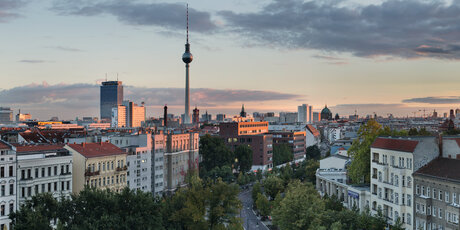
3 days in Berlin
Don't miss any top sights
You are planning your first trip to Berlin and don’t want to miss out on any of the highlights in this exciting city? Our 72-hour tour will take you to the most famous landmarks in Berlin and to its most beautiful places. Be guided through a sightseeing tour of Mitte, go shopping on Kurfürstendamm and in City West, and experience neighbourhood life in the districts of Kreuzberg and Friedrichshain. With our 72-hour programme, you won’t miss out on any top sights during your first visit to Berlin.
Day 1 in Mitte: from Alexanderplatz to the Brandenburg Gate
Morning: alexanderplatz & nikolaiviertel.
Start your first day in Berlin at the World Clock at Alexanderplatz . Let the surrounding buildings take you back in time to the GDR of the 1970s, watch the lively goings-on as people pass by and look up across the S-Bahn railway tracks at the TV Tower , the first highlight on the tour. From the top you have a phenomenal panoramic view of the city - at a reduced rate with the Berlin WelcomeCard , by the way. Enjoy the view over breakfast or brunch at the restaurant sphere , which rotates on its own axis at a height of more than 200 metres.
Tickets for the TV Tower
You can continue the tour westwards, past the Rotes Rathaus (red town hall), where the Berlin mayor’s office is. Berlin’s oldest district, the Nikolaiviertel , awaits your visit by the Spree. You can stroll around the picturesque neighbourhood surrounding St. Nicholas’ Church . A bit further downstream of the river on the other side you’ll find the Berlin Cathedral with its gigantic dome – one of Berlin’s landmarks and something you most definitely should not miss.
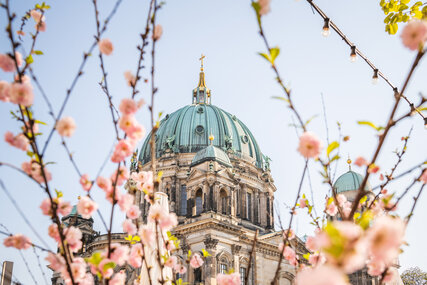
Museum Island is not only a top Berlin attraction for art lovers. This ensemble consists of five museums that are on UNESCO’s list of world heritage sites . The Altes Museum , the Neues Museum , the Pergamon Museum , the Bode Museum and the Alte Nationalgalerie together form one of the most important museum complexes in the world, and you have free entrance to them with the Berlin WelcomeCard . Unfortunately, the Pergamon Museum is closed for extensive renovation work.
Buy your Berlin Welcome Card Museum Island
Afternoon: Humboldt Forum, Gendarmenmarkt, Holocaust Memorial and Brandenburg gate
Back on the magnificent boulevard Unter den Linden , you should visit Berlin's new forum for culture, art and science just opposite the Museum Island: The Humboldt Forum . Over Bebelplatz and St. Hedwig’s Cathedral which is a little hidden behind the Staatsoper Unter den Linden (Berlin State Opera), the journey continues with a short detour to Gendarmenmarkt , surely the most beautiful square in Berlin. Enjoy the harmonious ensemble of the concert house in the centre, flanked by the German and French cathedrals, from one of the many restaurants and cafés around the square.
Charlottenstraße on the western side of the square and then Behrenstraße going westwards will now lead you past the Komische Oper to the Memorial to the Murdered Jews of Europe , which is also known as the Holocaust Memorial . Walk through the memorial with its 2,711 concrete pillars and take in its contemplative atmosphere.
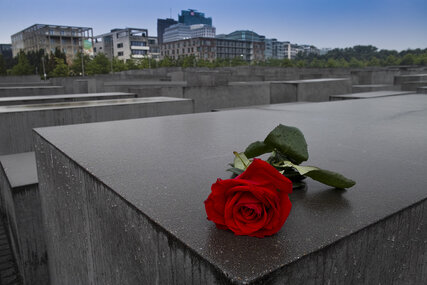
From here it’s just a few metres down Ebertstraße before you’ll find yourself in front of the most famous landmark of Berlin, the Brandenburg Gate . Few buildings are as closely connected with the history of Berlin as the former city gate is. After the fall of the Berlin Wall it became a symbol of German unity. Following a short walk around Pariser Platz the tour continues through the gate onto the Platz des 18. März . Now you’ll be able to recognise the Siegessäule (Victory Column) in the distance, in the centre of the large Tiergarten park.
The next highlight of our tour is also a truly historic place. The Reichstag , the seat of the Deutscher Bundestag (German parliament), has not only had an eventful history since the Reichstag fire in 1933.
At night: Enjoy the nightlife around Hackescher Markt
To finish off the tour we recommend either a drink at Capital Beach , directly on the riverbank of the Spreebogenpark with a view of the main railway station – or a beer at Zollpackhof on the other side of the Spree. From there you can also comfortably reach Hackescher Markt , where you can spend the evening at any one of the numerous restaurants, cafés and bars.
Day 2 in City West: Between Charlottenburg Palace and the Gedächtniskirche
Morning: charlottenburg palace.
Begin your second day like royalty, with a stroll around Charlottenburg Palace . Initially constructed as a summer palace, today it is the most splendid palace in Berlin, with extensive gardens. Located directly by the Spree, you’ll feel like you’ve been transported back in time to the rococo period and the days of the Prussian kingdom as you stroll through the park.
Use our Day Ticket Charlottenburg+ for Charlottenburg Palace and all facilities in the Charlottenburg Palace Gardens.
Combi-Ticket Charlottenburg+
You can also visit the Käthe Kollwitz Museum in the theatre building of the palace complex.
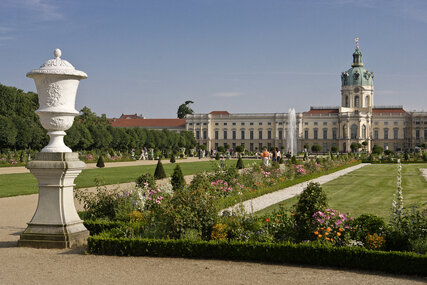
Afternoon: Ku'damm & Zoo
A short ride from there on the U7 metro will take you directly to Adenauerplatz in the middle of the legendary Kurfürstendamm – the most famous shopping street in Berlin. Here you can peruse the latest designer fashions or simply marvel at the impressive building façades during your walk along the boulevard. The next highlight is waiting for you at the end of the Ku’damm: the Kaiser-Wilhelm-Gedächtniskirche (Memorial Church) on Breitscheidplatz. The ensemble consists of the ruins of the church destroyed in the war and a new building next to it. It is a monument for peace and reconciliation and a symbol of Berliners’ will to rebuild in the post-war period.
Today the church is encircled by several tall buildings such as the Upper West , the Zoofenster and the Europa Center, the oldest shopping centre in Berlin. You can reach Kaufhaus des Westens at Wittenbergplatz in just a few minutes via the adjacent Tauentzienstraße. KaDeWe is the most famous department store in Germany. Ansbacher Straße and Kurfürstenstraße will take you to Olof-Palme-Platz. And here waiting for you at the end of the tour are two more highlights: Zoologischer Garte n and the Aquarium Berlin , that you can gain reduced admission to with the Berlin WelcomeCard .
At night: Enjoy the nightlife of the City West
You can round off the day right next door, at the Monkey Bar in the 25hours Hotel Bikini Berlin. The cocktail bar with panoramic windows offers you a breathtaking view over Tiergarten and City West. Alternatively, you can retreat to the Schleusenkrug on warm summer evenings, a cosy beer garden directly on the Landwehr Canal in Tiergarten.
Day 3 in Kreuzberg-Friedrichshain: Berlin Wall and neighbourhoods
Morning: along the river spree to the east side gallery.
Enjoy an easy-going start on the third day with a late brunch the way the Berliners love them. Things taste even better when there is a view to match. So check out one of the many cafés by the Landwehr Canal or the Neuköllner Schifffahrtskanal (Neukölln Ship Canal). Afterwards, you can stroll along the Spree River by the canal. There are unique gems in the way of restaurants, bars and clubs awaiting your visit. Freischwimmer , Club der Visionäre, Badeschiff and IPSE are just four of the locations on the island that form a summertime bar biotope on the left and right of the Flutgraben channel.
Schlesische Straße and Falckensteinstraße then lead you to Oberbaumbrücke . From here you have one of the most beautiful views of Berlin in both directions – towards Alexanderplatz with the TV Tower and out of the city with the Molecule Men in the Spree.
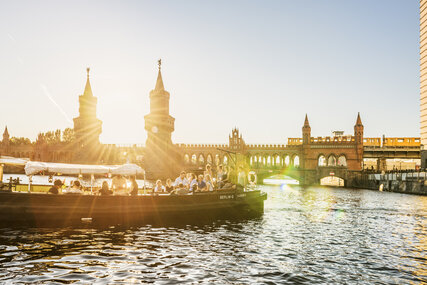
Just around the corner from Oberbaumbrücke you’ll find the East Side Gallery stretching out before you. The longest connected piece of the former Berlin Wall is covered with many different and amazing artworks. The most famous painting is the brotherly kiss between Honecker and Brezhnev. And there are plenty more historic events depicted along the 1.3 km open air gallery.
More neighbourhood tips
You can find detailed information about all the districts, neighbourhoods and other secret tips in our Going Local app , that you can download for free at Google Play and in the Apple App Store. Also included: tours and videos. Download now .
You would like to stay a few days longer in Berlin or have less time?
Then let yourself be inspired by our suggestions for 24 hours in Berlin , for 48 hours or for a five-day stay !
Our tip for you: explore the city with the Berlin Welcome Card
We recommend the Berlin Welcome Card – Berlin’s official tourist ticket. The Berlin Welcome Card has over 200 sights and attractions as discount partners. It is also your ticket for public transport services across the entire city – and if you prefer, also includes Potsdam
Info about the Berlin Welcome Card
Our service for you:
- Book your hotel
- Book your travel deal
- Buy tickets for many sights, attractions & events
Do you need help? We are happy to help. Call or email our travel advisors .
- Share on Facebook Share on Facebook
- Share on X Share on X
- Share by email Share by email
- Print page Print page
You might find this also interesting
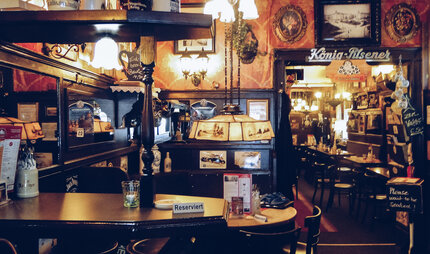
Meals for real guys
Berlin Cuisine
The food is half the experience when travelling, and Berlin cuisine won't disappoint. Enjoy a hearty meal after a long day of sightseeing.
Show details
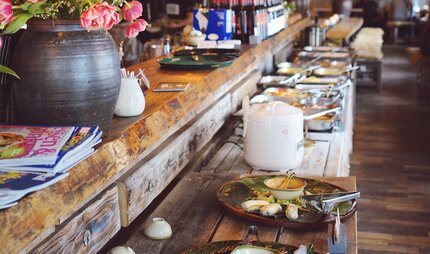
Relaxed dining with your fellow travelers
Restaurants for groups
When travelling in Berlin with a school class or other big group, it is good to know where you can get a table large enough for everyone.
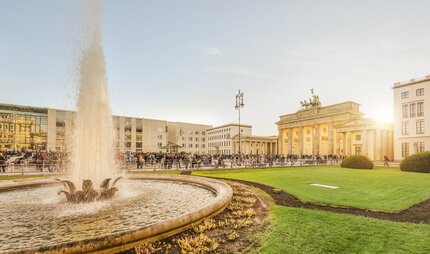
The best deals for your Berlin trip
City break in Berlin
Travel DEALS from €123
Attractive prices for your city trip to Berlin. Booking your city trip on visitBerlin.de is quick and easy.

- Attractions
- Berlin TV Tower
- Alexanderplatz
- Museum Island
- Checkpoint Charlie
- Reichstag Building
- Arrival in Berlin
- Public Transport
- Best City Pass
- Lifestyle Guide
- Shopping Guide
- Restaurant Guide
- Nightlife Guide
- Central Station
- Districts in Berlin
- 3 Days Itinerary
- Conference Hotels
- Central Hotels
- Wellness Hotels
- Trade Fair Hotels
- City Guides
- Executive Transfers
- Conference Rooms
- Plastic & Aesthetic Surgery
- Wrinkle Treatment
- Injectable Dermal Fillers
- Plasma Therapy
- Mesotherapy
- Skin Renewal
- Non Surgery Operations
- Tours & Tickets
- Plan Your Trip to Berlin
3 Days in Berlin: Your 72 hours Itinerary for Berlin

Are you visiting Berlin for the first time and need a little help planning your stay? Do you have only 3 days?
We at Berlin Tourist Information are happy to help and provide you with advice and support. To make your Berlin trip unforgettable, we have put together a 3-day itinerary with the most important highlights for you.
First, we reveal valuable tips on how to get there and how to choose the right hotel. Next, we'll make sure you get around the city swiftly and at low cost. We'll also check whether you can actually benefit from a city pass, which allows you to travel for free and enjoy discounts.
Finally, we take a look at the three days' itineraries with the best sights and attractions. You will then get tips on how to spend your evenings at the very end.
Let's start with the overview and helpful tips...
3 Days in Berlin: Getting there - All Roads Lead to Rome Berlin!
Which way you take should depend entirely on where you live . The plane is often a convenient choice. However, the train could be a even better option. Another great alternative is a long distance bus.
Consider everything carefully and make your decision. Accordingly, you can then read one of the following articles:
- Berlin-Brandenburg Airport (BER)
- Berlin Schönefeld Airport
- Berlin Central Station
- Berlin Central Bus Station
Traveling by Car?
Arriving with your own car has, as in any big city, the big disadvantage of parking problems . We recommend that you leave your car at home. If you decide to go by car anyway, please read our parking tips .
Arrive Early and Leave Late!
Whatever you decide, plan your arrival for Berlin to be as early as possible so that you can actually see the sights we have planned for your first day in the city.
Your return trip should start as late as possible on your last day. This will allow you to spend your last hours in the city stress-free, without having to constantly look at the clock to see when the plane, train or bus is departing.

3 Days in Berlin: Hotel - My Home is My Castle Hotel!
As big as Berlin is, as big is the choice of hotels in the city. Book a hotel in a central location so you can get to the city's sights and attractions as quickly as possible . Needless to say, hotels in good locations are more expensive than those that are a bit further away from the city center.
The following articles will help you to choose your conveniently located hotel:
- 3 star Hotels in Berlin
- 4 star Hotels in Berlin
- 5 star Hotels in Berlin
We also recommend that you choose your 3 days in Berlin with no major events taking place in the city at that time. These events can lead to full hotels, even more crowded public transportation, traffic jams, and road closures around major attractions.
- Do some research and check out our article on this topic .
3 Days in Berlin: Getting Around the City - Nothing is for Free!
Right after your arrival in Berlin, you will need a ticket for the public transport in order to get to your hotel - unless you take the taxi or arrive by car. The same applies for your stay in Berlin as well as for your return trip.
Apart from that, you will have to pay for some of the attractions that we have gathered here for you. As there would be the Spree River Cruise, the Hop-On Hop-Off bus, the Museum Island and the Berlin TV Tower. We'll leave our optional suggestions out of the equation for now.
Berlin Welcome Card: Is it worth it?
The Berlin Welcome Card is a city pass specially adapted to the needs of Berlin visitors. The card for 72 hours, including the use of all public transport and visits to all museums on Museum Island, costs €52.00.
With the Berlin Welcome Card you get a 25% discount on the Spree river cruise, the Hop-On Hop-Off bus tour and the Berlin TV Tower. So for these three undertakings you pay 49.90 €. The bottom line is €101.90. You already save 10.00 €.
If you take advantage of our optional suggestions such as the DDR Museum, the Wall Museum or the Kohlhoff Tower and perhaps would like to go to the theater or the Konzerthaus Berlin in the evening, you will save more and more. The Berlin Welcome Card has over 100 discount partners , so you can even save on dining out or shopping . The BWC also includes a guide book, a folding map of the Museum Island and a city map . These are available free of charge upon presentation of the card at Berlin Tourist Information offices.
Now let's look at the costs for the same items without the Berlin Welcome Card.
We take your arrival at Berlin Central Station as a basis, which means that you arrive in fare zone A, add up: Berliner Verkehrsbetriebe (BVG) offers a day ticket for fare zones A and B. It costs €8.80. You need three of them, so you pay €26.40.
The Spree river cruise normally costs €18.00. 24.00 € are due for the Hop-On Hop-Off bus ride. For the combined ticket for the Museum Island you have to pay another 19.00 € and for the Berlin TV Tower another 24.50 €. That adds up to 111.90 €.
Bottom Line: Save Money and Time!
As you can see, with the Berlin Welcome Card you can save quite a bit of money, which you can well invest in something else!
To save not only money, but also a lot of valuable time, we recommend that you purchase all the tickets you need online in advance of your trip.
Now let's get to the details of our 3-day itinerary for Berlin.

Day 1: Spree River Cruise & Former East Berlin
After your (hopefully) early arrival in Berlin, transfer to the hotel and check-in, head to Hackescher Markt , the starting point for Berlin's nightlife. Here, in Berlin's creative trendy district, you will start your sightseeing tour today with a one-hour boat trip on the Spree River .
Afterwards, we'll follow in the footsteps of former East Berlin and explore Alexanderplatz, climb the Berlin TV Tower, discover the Nikolai Quarter and visit the East Side Gallery. The route we have put together for you is just under seven kilometers long . It will take you about 90 minutes to complete it on foot. Click here to see the map showing the route on foot .

Spree River Cruise: Discover Berlin from the Water
The best way to get an overview of the German capital is during a comfortable and informative boat trip on the Spree River .
After exploring Hackescher Markt and Hackesche Höfe, follow Grosse Präsidentenstraße, Monbijouplatz and Burgstraße to the BWSG's Alte Börse landing stage.
Here you can take part in a one-hour Spree cruise with our partner BWSG (25% discount with the Berlin Welcome Card) and discover Berlin's sights from a completely different perspective from the water.
Tip: Download the audio guide app "Berlin River Cruise" from YourMobileGuide to your smartphone beforehand and get interesting information about the attractions you pass during your river cruise.

On the Tracks of the Former East Berlin
Afterwards, we go on a search for traces through the former East Berlin .
On the banks of the Spree River you will soon see the DDR Museum . If you are interested in the history of the GDR and East Berlin, why not visit it (25% discount with the Berlin Welcome Card) and learn all about life in the German Democratic Republic. Highlights of the exhibition include a Trabi driving simulation in an original Trabanten P 601, a faithfully furnished Plattenbau apartment with five rooms, and numerous interactive games for young and old.
After a picture at the nearby Marx-Engels monument , with the forefathers of communism, the tour continues past the masterful Neptune Fountain to St. Mary's Church , the oldest parish church still in religious use in the city. The 22.6 meter long and two meter high fresco "Dance of Death" inside the church is one of the most important preserved medieval works of art in Berlin. According to some sources, the mural was created in 1484, the ominous year when the plague took countless people.
Then it's time to admire an iconic Berlin landmark in all its glory: the Berlin TV Tower (25% discount with the Berlin Welcome Card). Climb Germany's tallest building and enjoy a spectacular 360-degree view of the Spree metropolis from the observation deck at 203 meters or the Sphere revolving restaurant. On a clear day, you can look up to 70 kilometers away.
After the tower visit, continue in the direction of the Alexanderplatz train station. Behind it, the "Alex" is waiting for you. Explore the lively Alexanderplatz , which is not only one of the most visited spots in Berlin, but also the largest square in Germany . Here you will find, among other things, the Park Inn Hotel (viewing terrace open to the public), the World Clock (very popular meeting place and selfie spot) and the Fountain of Friendship.
Then take a look at the striking 1860s Red City Hall and head to the Nikolai Quarter , Berlin's oldest residential area. This underrated gem of the city, made up of narrow streets, historic buildings, quaint houses and traditional German pubs and restaurants, is the city's historic founding site and is also known as "old Berlin." The winding streets with their small houses, the Nikolai Church , the Knoblauchhaus , the Ephraim Palais and the bronze statue depicting St. George as the dragon slayer are worth seeing.

Now we're off to another Berlin must-see: the East Side Gallery . At 1,316 meters, the East Side Gallery in Friedrichshain is the longest continuous section of the Berlin Wall that has not been demolished. 118 artists from 21 countries painted and sprayed this section with 106 works in the months following the fall of the Wall. Don't miss the socialist brotherly kiss of Honecker and Brezhnev as well as the Trabant seemingly breaking through the concrete.
At the end of the open-air gallery, the former watchtower Mühlenspeicher houses The Wall Museum , which you can visit optionally (25% discount with the Berlin Welcome Card) if you're interested in the history of the Berlin Wall. The museum in the former death strip spans an audiovisual arc from the division of Germany after World War II and the construction of the Berlin Wall to the memorable events that brought about its fall.
From the museum you can already see the last sight of today, the Oberbaum Bridge . It is probably the most beautiful bridge in the city, but it also has a turbulent history. Built in 1724 as a wooden structure, the bridge was severely damaged during the Battle of Berlin when it was blown up by German troops. After the construction of the Berlin Wall, the Oberbaum Bridge became a silent witness to the first fatal border incident of the division of the city into East and West Berlin.
In the evening, you can continue to take advantage of the Berlin Welcome Card discounts . Why not take a closer look at the various discount partners? There is bound to be something for you.
- See an overview of the Berlin Welcome Card discount partners here .

Day 2: Hop-On Hop-Off Bus Tour & Best of West Berlin
Today we explore the sights of former West Berlin .
First, we will take the Hop-On Hop-Off buses of our partner Stromma (25% discount with the Berlin Welcome Card). Feel free to take a look at the route map of the tour .
After that, a walk from the Topography of Terror, Berlin's most visited museum, to the boulevard Unter den Linden is on the agenda.
Hop-On Hop-Off Bus Tour through Berlin
Let's start the day with a relaxing Hop-On Hop-Off bus tour through Berlin. To do so, go to stop number 1 Alexanderplatz and take the green bus of line 1. The buses run every 30 minutes.
Below you can see the stops where you should definitely get off to see important sights up close:
- Stop 5 Friedrichstraße: Here you will find the Palace of Tears , a check-in hall built in 1962, which was used for departures from East to West Berlin. Today, the permanent exhibition "Place of German Division" shows the history and painful fates at the Palace of Tears from 1962 to 1990 through interviews, biographies and 570 original objects. Admission is free.
- Stop 6 Brandenburg Gate: Two of Berlin's most important landmarks await you at this stop. First, you'll see the Brandenburg Gate , Berlin's only preserved city gate. Once a symbol of Berlin's division into East and West, it has been the symbol of Germany's unity since the fall of the Berlin Wall. A few steps away, you will find the Reichstag Building on Platz der Republik, the seat of the German Bundestag since 1999. The glass dome, roof terrace and the restaurant there can be visited by appointment.
- Stop 11 Victory Column: The Victory Column was built from 1864 to 1873 in commemoration of Prussia's victories in the so-called Wars of Unity. You can reach the viewing platform of the Victory Column at about 51 meters above sea level via a spiral staircase with 285 steps and magnificent bronze reliefs and mosaic paintings in the colonnade. As a reward for the climb, Berlin is at your feet. Other nearby attractions include the Großer Stern square, laid out around 1698 and home to the Victory Column, the 3580-meter-long boulevard Straße des 17. Juni , and the Tiergarten , the city's green lung.
- Stop 12 Kurfürstendamm: Kurfürstendamm is popularly known as Ku'damm and begins at the Kaiser Wilhelm Memorial Church . Today, the church is a symbol of the city risen from ruins, as well as a memorial against war and destruction. Kurfürstendamm, which was laid out as a bridle path in the mid-16th century, is now a nightlife and entertainment mile with large department stores and exclusive boutiques. Just a few steps away awaits the Kaufhaus des Westens, or KaDeWe , the most famous department store in Germany.
- Stop 16 Potsdamer Platz: The beginnings of Potsdamer Platz date back to the 18th century. After the Allied occupation of the city, the demarcation lines between the Soviet, British and American sectors met here. After reunification, an urban center emerged here from nothing within a few years. Today, among other things, the Kohlhoff Tower stands here, which features a panorama café with a sun terrace and an exhibition on the history of the square, as well as the Panoramapunkt Potsdamer Platz viewing platform (25% discount with the Berlin Welcome Card).
- Stop 17: At stop 16 Potsdamer Platz, take the Hop-On Hop-Off bus one last time and get off at stop 17, where your walk begins.

Walking Tour: "Best of West-Berlin"
From stop 17 of the Hop-On Hop-Off bus tour, your leisurely walk to Unter den Linden boulevard starts. On the way you will pass some important sights.
The route is less than two kilometers long. Check out the map view for the route on foot .

Not far from the stop, on Niederkirchner Straße, is the city's most visited museum, Topography of Terror . You can explore Germany's darkest chapter on the grounds of the former Nazi terror headquarters. The documentation center processes the terror of the Nazis under the leadership of Adolf Hitler, especially during the period of rule from 1933 to 1945. The museum's open-air exhibition, to which you have free admission, runs along about 200 meters of the preserved Berlin Wall .
At the end of Niederkirchnerstraße at the corner of Wilhelmstraße/Zimmerstraße you will see the Weltballon , one of the largest tethered balloons in the world. If you feel like it, you can float here over Berlin for 15 minutes and enjoy the 360-degree view of the German capital (25% discount with the Berlin Welcome Card).
On the way to your next attraction, you can optionally admire the Asisi Panorama , a monumental 360-degree circular image by artist Yadegar Asisi, which shows the Berlin Wall on a scale of 1:1 on 900 square meters with a view from West to East Berlin on a fictitious autumn day in the 1980s. Looking at the 60-meter-long and 15-meter-high circular image, you get a good insight into the everyday life of Berliners - almost like a little trip back in time to the divided Berlin of the 1980s.
Alternatively, you can visit the Cold War Museum - Black Box and see the first exhibition in Germany on the subject of the Cold War. It provides information about the history of the Checkpoint Charlie border crossing with large-format photos, 16 media stations, documents and other exhibits. At both optional attractions, you will receive a 25% discount with the Berlin Welcome Card.

Now, head to the former military checkpoint: Checkpoint Charlie . It is probably the most famous border crossing at the Berlin Wall and not because it was the scene of various spy thrillers like "James Bond - Octopussy". Today, the former checkpoint of the American occupation forces is a tourist attraction with great appeal and a very popular photo motif, although the control barrack, turnpike, flag, sandbags and warning sign are merely faithful replicas that were placed instead of the originals on August 13, 2000. The main reason for its popularity is probably that the former division of the city can be experienced and felt here.
Diagonally opposite the checkpoint, you will see the Mauermuseum , another interesting museum that you can now visit optionally (25% discount with the Berlin Welcome Card). The museum houses over 1,733 square meters of exhibition space spread over three different houses, many props from 30 years of Wall and escape history, as well as extremely inventive escape objects such as an old Volkswagen with a trunk hiding place, a mini-submarine, a hot air balloon and a suitcase that can be pushed together.
Take a stroll north along Friedrichstrasse. On your way, at the corner of Jägerstrasse, is the luxury shopping mall Galeries Lafayette . Maybe you'll feel like shopping. Otherwise, follow Jägerstraße to Gendarmenmarkt , probably the most beautiful square in Berlin. The "Soldier King" Frederick William I had stables of the cuirassier regiment of the Gens d'armes built here in 1736, which Emperor Frederick II had demolished less than 40 years later. In memory of the stables and because the square was originally laid out as a market, it was given the name Gendarmenmarkt in 1799. Today you will find several impressive buildings here, including the Berlin Konzerthaus , the Deutscher Dom , and the Französischer Dom with the Huguenot Museum and an observation balustrade overlooking Gendarmenmarkt.
If you follow Markgrafenstraße to the right behind the Französischer Dom and then turn right into Behrenstraße, you will reach Bebelplatz . From the Enlightenment to the burning of books, the square experienced highs and lows of German history. In the center of the square, set into the ground, the Monument to the Book Burning on May 10, 1933 , commemorates one of the city's darkest chapters. The square consists of a smaller green area to the east and a larger open area with cobblestones to the west of the Berlin State Opera , which forms the center. The square is surrounded by important buildings of the city such as those of the Prinzessinnenpalais, St. Hedwig's Cathedral, the Alte Palais and the Alte Bibliothek.

Today's last sight is also located at Bebelplatz: Unter den Linden . The boulevard was initially only a bridle path. The first linden trees were planted in 1647, and from 1701 the linden trees were developed into a boulevard for the splendor of Frederick the Great. Today, the boulevard connects the Brandenburg Gate with the Schlossbrücke Bridge , which leads to Museum Island. Important sights such as the State Library, Humboldt University , the Neue Wache, the German Historical Museum in the Zeughaus, the Kronprinzenpalais , the Alte Palais and the equestrian statue of "Alter Fritz" line the eastern end of the avenue. Stores, restaurants and cafés are lined up along the approximately 1.5-kilometer-long promenade in the direction of the Brandenburg Gate.
On your second night, you can once again take advantage of the Berlin Welcome Card discounts. Take a look at the partner companies . There is sure to be something for you.
- See an overview of selected restaurants here .
- See an overview of selected stages here .
Day 3: UNESCO World Heritage Museum Island
Your last day is spent with art and history. You will visit the museums of the UNESCO World Heritage Site Museum Island , whose entrance fees are included in your Berlin Welcome Card.
After visiting the museums, you will take a walk to the Lustgarten , where the magnificent Berlin Cathedral is located. Across from it is the Humboldt Forum, once Berlin's City Palace. These destinations are also located on the island, which is actually called Spreeinsel. The route is two kilometers long .
First deposit your luggage at the hotel reception , since you have to vacate your room already in the morning. Then head to our first destination on Museum Island.
The 5 Museums of Berlin's Museum Island
Since 2019, guests to Museum Island will be greeted in the James Simon Gallery as the central entrance area and visitor center. Currently, the sole entrance to the Pergamon Museum is located here, as well as an underground entrance to the Neues Museum. In addition to the ticket office and entrance area, the building houses an auditorium, museum store, café and restaurant, as well as spaces for special exhibitions. Admission is free, except for special exhibitions. Proceed here to the underground entrance of the Pergamon Museum.
The Pergamon Museum was built from 1910 to 1930. The three-winged museum houses the Collection of Classical Antiquities , the Museum of the Ancient Near East and the Museum of Islamic Art . Due to the impressive reconstructions of the Pergamon Altar, the Market Gate of Miletus , the Ishtar Gate with the Processional Way of Babylon, and the Mshatta Façade , the Pergamon Museum has gained worldwide fame. At present, the museum is hosting the temporary exhibition "Pergamon Museum - The Panorama", which focuses on the city of Pergamon in Roman times around 129 AD and serves as a counterpart, so to speak, to the closed hall with the Pergamon Altar. The exhibition is located on the way along the Spree River to the Bode Museum.
Please note: In the course of a renovation, the hall with the Pergamon Altar will remain closed until at least 2024 . In addition, the North Wing and the Hellenistic Hall are closed. The finds from Uruk and Habuba Kabira as well as the rooms with Babylonian, Old Iranian and Sumerian monuments are also not accessible.
However, the south wing of the Pergamon Museum with the Ishtar Gate, the Processional Way and the Museum of Islamic Art, as well as the hall with the Market Gate of Miletus are open .
Continue to the Bode Museum, which presents its sculpture collection , one of the most extensive collections in Germany. Also located here is the Museum of Byzantine Art , which displays works and everyday objects from Western Rome and the Byzantine Empire, as well as the Coin Cabinet , with one of the world's largest collections of coins.
Your path now leads back and then across Bodestraße and the Kolonnadenhof to the Alte Nationalgalerie. The Alte Nationalgalerie was built from 1862 to 1876 in the Classicist and Neo-Renaissance styles. On the second floor of the Alte Nationalgalerie, Classicist sculptures and "Ways of Realism" are on display. Works of Romanticism, Realism and Impressionism are exhibited on the second floor. Works from the Goethe period and Romanticism can be admired on the third floor.
The entrance to the Neues Museum is on the right, opposite the stairs of the Alte Nationalgalerie. The Neues Museum was built between 1843 and 1855. It is dedicated to the history of art, museums and technology of the 19th century. The museum combines the Egyptian Museum and Papyrus Collection , the Museum of Prehistory and Early History and the Collection of Antiquities under one roof. The showpiece of the museum is undoubtedly the world-famous bust of Nefertiti. Other highlights are the skull of the Neanderthal by Le Moustier, Heinrich Schliemann's collection of Trojan antiquities and the "Berlin Gold Hat".
The last museum awaiting you is the Altes Museum , opposite the Neues Museum on the other side of Bodestraße. Built between 1823 and 1830, it not only houses an important collection of antiquities , but the building itself is also a masterpiece of classicism. The collection of antiquities shows the art and culture of the Greeks, Etruscans and Romans. The coin cabinet completes the presentation of classical antiquity.
Visiting the other Attractions on Museum Island
After taking a look at the top-class treasures and masterpieces of the five museums, it's time to take a walk to the other highlights of Museum Island.
We'll start with the magnificent Lustgarten (pleasure garden), originally created by Elector Johann Georg as a fruit, vegetable and herb garden for the Berlin City Palace. The two-hectare green space was transformed into a pleasure garden in the 17th century under the Great Elector. Today it serves mainly as a resting area for visitors to Museum Island. The main attraction of the garden is still the 70-ton granite bowl , which was inaugurated in 1834 and was considered a world wonder of the Biedermeier era at the time. Berliners were quick to find an affectionate nickname - the "Berlin Soup Bowl".
From here, you can already enjoy a view of the Berlin Cathedral in its full glory. If you have time, we recommend that you enter the magnificent house of worship and admire it from close up (25% discount with the Berlin Welcome Card). After all, the Berlin Cathedral is one of the most beautiful sights of the German capital, and with a total height of 116 meters on a floor area of almost 6800 square meters, it is the largest Protestant church in the country. The mighty dome can certainly be understood as a Protestant answer to the Catholic St. Peter's Basilica in Rome. The monument is barrier-free and is home to one of the most important dynastic burial sites in Europe, the Hohenzollern Crypt .
Opposite the cathedral, on the other side of Schlossplatz, you can see the Humboldt Forum , which you can optionally visit at this point. With the Berlin Welcome Card you enjoy a 25% discount. The Humboldt Forum expands the Museum Island's offerings since July 20, 2021 with collections from the Ethnological Museum Berlin, the Museum of Asian Art, the Non-European Art Collection, the Berlin Exhibition and the Humboldt Lab. From the outside, the building is a faithful replica of the Berlin City Palace, which stood on the same site until 1950 and was considered a major work of North German Baroque architecture.
This is where your 3 days in Berlin end! Head back to the hotel to pick up your deposited luggage.
If you have more time on your hands, be sure to check out our list of 60 Things to Do in Berlin .
Berlin Tours & Tickets
Discover Berlin today with the most preferred tours & tickets without waiting in line.
Related Articles:
26 extraordinary attractions in berlin [with tickets], 27 things to do for kids in berlin [with map & tickets], berlin in the rain: 21 bad weather activities for day & night [+tickets], top 50 things to do in berlin [+ tickets].
- teilen
- teilen
- merken

Navigate forward to interact with the calendar and select a date. Press the question mark key to get the keyboard shortcuts for changing dates.
Navigate backward to interact with the calendar and select a date. Press the question mark key to get the keyboard shortcuts for changing dates.
Berlin Trip Planner
Top attractions in berlin.

Other notable attractions

Top searches in Berlin
Popular road trips from berlin, all road trips from berlin.
- Berlin to London drive
- Berlin to Prague drive
- Berlin to Paris drive
- Berlin to Amsterdam drive
- Berlin to Rome drive
- Berlin to Vienna drive
- Berlin to Barcelona drive
- Berlin to Copenhagen drive
- Berlin to Budapest drive
- Berlin to Hamburg drive
- Berlin to Florence drive
- Berlin to Munich drive
- Berlin to Milan drive
- Berlin to Venice drive
- Berlin to Krakow drive
- Berlin to Brussels drive
- Berlin to Madrid drive
- Berlin to Edinburgh drive
- Berlin to Dresden drive
- Berlin to Dublin drive
- Berlin to Warsaw drive
- Berlin to Istanbul drive
- Berlin to Stockholm drive
- Berlin to Lisbon drive
- Berlin to St. Petersburg drive
- Berlin to Turin drive
- Berlin to Bruges drive
- Berlin to Cologne drive
- Berlin to Moscow drive
Explore nearby places
- Grossziethen
- Ahrensfelde
- Kleinmachnow
- Hennigsdorf
- Hohen Neuendorf
- Hoppegarten
- Grossbeeren
- Gross Glienicke
- Birkenwerder
- Blankenfelde
- Gross Kienitz
- Altlandsberg
- Fredersdorf
- Woltersdorf
- Ludwigsfelde
- Petershagen
All related maps of Berlin
- Map of Berlin
- Map of Grossziethen
- Map of Ahrensfelde
- Map of Teltow
- Map of Muhlenbeck
- Map of Schonefeld
- Map of Kleinmachnow
- Map of Mahlow
- Map of Hennigsdorf
- Map of Hohen Neuendorf
- Map of Stahnsdorf
- Map of Hoppegarten
- Map of Grossbeeren
- Map of Neuenhagen
- Map of Schoneiche
- Map of Gross Glienicke
- Map of Birkenwerder
- Map of Blankenfelde
- Map of Falkensee
- Map of Gross Kienitz
- Map of Bernau
- Map of Altlandsberg
- Map of Dallgow
- Map of Fredersdorf
- Map of Velten
- Map of Woltersdorf
- Map of Werneuchen
- Map of Ludwigsfelde
- Map of Rudersdorf
- Map of Erkner
- Map of Petershagen
Berlin throughout the year
- Berlin in January
- Berlin in February
- Berlin in March
- Berlin in April
- Berlin in May
- Berlin in June
- Berlin in July
- Berlin in August
- Berlin in September
- Berlin in October
- Berlin in November
- Berlin in December
Looking for day-by-day itineraries in Berlin?
Get inspired for your trip to Berlin with our curated itineraries that are jam-packed with popular attractions everyday! Check them out here:
- 1-Day Berlin Itinerary
- 2-Day Berlin Itinerary
- 3-Day Berlin Itinerary
- 4-Day Berlin Itinerary
- 5-Day Berlin Itinerary
Q&A about Berlin
Weather in berlin, add places from guides with 1 click, collaborate with friends in real time, import flight and hotel reservations, expense tracking and splitting, checklists for anything, get personalized suggestions.
4.9 on App Store, 4.7 on Google Play
- Black Forest
- Moselle Valley
- Rhine Valley
- 48 Hour Trips
- Long Weekend Trips
- 1 Week Trips
- Beer + Drink Guides
- Christmas Markets
- Coffee Guides
- Restaurant Guides
- Shopping Guides
4 Days in Berlin: The Perfect Long Weekend Itinerary
Berlin is a city with endless possibilities and a rich history that can keep you entertained for days on end. Since moving to Germany in 2019, I have visited Berlin on a couple of different occasions, always trying to discover new things and explore deep into the city’s neighborhoods. Whether you’re interested in exploring cultural heritage sites, trying out the local cuisine, or partying the night away, Berlin has something for everyone.
You could easily spend a week in Berlin, but I think a long weekend is the perfect length for a first time visitor. Three or four days is ideal to give you a taste of must-see landmarks and cultural attractions as well as the distinct and trendy neighborhoods that make Berlin a popular destination for travelers in Germany. In this blog post, I’ll take you through the best sights, delicious food spots, and exciting activities that you won’t want to miss.
If you’re planning a trip to Berlin, you’ll want to make the most of your time. With only four days to explore, it can be difficult to know where to begin. That’s why I’ve put together the ultimate itinerary, highlighting the best things to see and do in Berlin on a long weekend visit. Designed for first-time visitors, this blog post will help you plan the perfect trip to Berlin. So, pack your bags and get ready to discover Germany’s most dynamic city.
What You'll Find in this Article
How to Plan the Ultimate Long Weekend in Berlin
Morning: brandenburg gate & holocaust memorial.
Perhaps the most famous landmark in Berlin is the Brandenburg Gate. Nearly every first-time visitor to Berlin will visit this sandstone gate, which was built between 1788 – 1791. In more recent history, the Brandenburg Gate was a symbol of division between east and west Germany. After the Berlin Wall was erected in 1961, the gate sat right in the middle of the restricted zone. It could not be visited by East Berliners nor West Berliners. It was essentially left abandoned for 30 years until reunification when it was reappropriated as a symbol of German unity.
Another essential place to visit in Berlin is the Memorial to the Murdered Jews of Europe. You’ll also hear it called the Holocaust Memorial, but that isn’t the official name. Designed by architects Peter Eisenman and Buro Happold in 2005, there are 2,711 concrete columns across 19,000 square meters forming a vast mazelike complex. The columns are all different heights (between 8 inches to 15 feet), and the ground undulates with small hills and slight angles. Walking through the columns creates an uncomfortable, disorienting experience for the visitor.
Beneath the memorial is an information center and museum that I would strongly recommend visiting. The center takes a micro-level approach, following individual people and families who were killed in the Holocaust. The personal histories from different European countries are tragic and heart-breaking. I found the storytelling to be incredibly powerful here, really connecting the overwhelming atrocity to individual stories. There are lots of photos and audio clips, as well as the names of approximately 3 million Jewish Holocaust victims.

Early Afternoon: Tiergarten
If you decide to visit the memorial center beneath the Memorial to the Murdered Jews of Europe, you are likely going to need some time to decompress. It is a heavy topic, so a walk through the peaceful and beautiful Tiergarten park will help. The park has a long and fascinating history, dating back to the 16th century when it was used as a hunting ground for the Prussian royal family. Located in the heart of Berlin, Tiergarten is one of the city’s most popular green spaces.
With over 200 acres of gardens, lakes, and forests, you can explore the park on foot or by bike. It is no secret that I love biking, so I would recommend that option 100%. It is easy to use one of the app-based bike share programs, such as nextbike , and there are several stations around the perimeter of Tiergarten. Today, it is a beloved recreational area for locals and tourists alike, enjoying leisurely stroll along the park’s winding paths, relaxing by the lake, or enjoying a picnic on the grass. You might even catch some wildlife viewing, including birds, squirrels, and rabbits.

Late Afternoon: Reichstag
Now I know it might sound boring, but hear me out – you should visit the seat of the German federal government at the storied Reichstag. Of all the historic places that I’ve visited in Berlin , this one was probably the most surprising. I loved it! This historic parliamentary building has changed leadership countless times since its construction in 1871. It was also the site of the Nazi’s famous 1933 arson and false flag attack that gave Hitler pretext to suspend civil liberties and begin brutal repression in the name of national security.
You need to book a visit ahead of time (usually at least one week before) and you will also need to go through a security check before entering. Once inside, you will see why the Reichstag is one of the most recognizable buildings in Berli’s skyline – the massive glass dome that sits on top. This stunning structure offers 360-degree views of Germany’s capital city and the opportunities for photography are endless here.

Evening: Charlottenburg Neighborhood
I recommend popping over to the western side of Berlin for dinner on your first night in the city. On the way, take a quick peek in the Kaiser Wilhelm Memorial Church . Acting as the symbolic center of west Berlin, the original church was severely damaged during aerial allied bombing in WWII. While parts of the interior were restored after the war, the main tower was intentionally left as a ruin. The ghastly visual serves as a visual reminder of the importance of European peace and functions as a memorial against war and destruction.
There are several fun dinner options in the Charlottenburg neighborhood of Berlin. Dishing up some simple and delicious Taiwanese food, Lon-Men’s Noodle house is a casual hole-in-the-wall spot offering an assortment of traditional Taiwanese dishes, including noodle soups, bao buns and fried dumplings. For something a little bit fancier, 893 Ryotei is an excellent choice. You’ll need to make a reservation several weeks in advance, but this Japanese-Peruvian fusion restaurant pushes the boundaries in all the best ways. You won’t be disappointed by anything on the menu here.
This may sound random, but a final dinner suggestion is Kaufhaus des Westens. Also known as KaDeWe , this is one of Berlin’s most luxurious department stores. Known for its wide range of high-end fashion, beauty and household items, KaDeWe also boasts an impressive food hall with a wide selection of luxury gourmet food. Think an oyster bar, a champagne counter, and even a caviar stand. There is also a full service restaurant on the rooftop with a gorgeous glass dome ceiling. This is a fun place to bounce around and sample different cuisine.

Morning: Jewish Museum
Start your second day in Berlin at the world famous Jewish Museum. The building is one of the most distinctive pieces of modern architecture in the city. Built by acclaimed architect Daniel Libeskind, the Jewish Museum is a masterpiece. Spread across three structures, the building plays with light and scale to elicit emotional reactions for the visitor, mirroring the emotions they will already be feeling as they dive deep into the history of Jewish people in Germany.
The thought-provoking room of darkness, the slits of light in the stairwell, and the disorienting subterranean hallways are intentional choices that force the visitor to engage with the space and the content of the museum. The exhibition chronicles stories of Jewish culture, migration, diversity, and persecution. Extensively researched and thoughtfully presented, the collection is very impressive. While the experience is heavy, I found it to be important and impactful.

Early Afternoon: East Side Gallery
One of the most recognizable historic places to visit in Berlin is the East Side Gallery. You have most likely seen imagery of the murals on Instagram before. Located just off Warschauer Strasse on the border of Friedrichshain and Kreuzberg, the East Side Gallery is a 1.3 km stretch of the Berlin Wall which has been converted into an open-air art gallery. Street artists and muralists painted powerful political messages and artwork on the ruins of the wall, a juxtaposition that is quintessentially Berlin. Expect to wait in line with other tourists to get a picture of yourself in front of the most famous murals.
The most iconic murals in the East Side Gallery include:
- “the kiss between Brezhnev and Honecker” which shows the leaders of Germany and the USSR kissing
- “It Happened in November” a painting by Kani Alvai which depicts Checkpoint Charlie on the day the Berlin Wall fell
- “The Wall Jumper” which shows a man jumping over the Berlin Wall to leave East Berlin to join the free world.
Late Afternoon: Markthalle Neun
When you’re done looking at the East Side Gallery, cross over the Spree River on the Oberbaum Bridge. This double decker bridge has a unique look with castle-like turrets and arched barrel vaults. It opened in 1896 and has been featured in a number of movies, such as Run Lola Run.
Like many other foodie cities around the world, Berlin has embraced the food hall trend and Markthalle Neun in Kreuzberg is the undisputed best. The beautiful interior of this revitalized building will strike you immediately, but the real stars are all the culinary vendors inside. Wander around and see which of the stalls appeal to you. I loved the grilled cheese sandwich stuffed with kimchi from AltMilche, while my husband liked the U.S.-style barbecue at Big Stuff. Wash down your food with a craft beer from Heidenpeters or a mate-influenced gin & tonic from Soul & Spice.

Evening: Bar Hopping in Neukölln
Known for its vibrant nightlife and diverse culinary scene, Neukölln is a popular destination for foodies and bar-hoppers alike. I recommend ending your second day exploring Berlin in Neukölln, because it will give you a sense of the hip and alternative scene that Berlin is so well-known for. For dinner, grab some street food, especially Turkish cuisine. Follow your nose or look for the spots with a line, because locals always know best.
If you happen to be in Berlin during nice weather, start your Neukölln bar crawl at Klunkerkranich . This makeshift bar is on the top floor of a parking garage, making it a quintessentially Berlin experience. It is built out of reclaimed materials, recycled pallets, community gardens, and artist installations. It is quirky, but it offers one of the best rooftop views in the city. This is a great place to come around sunset, although there are legendary parties and live music events here late into the night.
The area is also known for its lively bar scene, with a number of trendy and unique watering holes to choose from. Being a cocktail girl myself, I recommend sampling drinks at some of Neukölln’s legendary cocktail bars. Geist im Glas , Tier , and Velvet are all great options. If you prefer to discover on your own, stroll down Weserstraße between Wildenbruchstraße and Kottbusser Damm. You’re bound to find lots of wine caves, dive bars and cocktail joints on your way.

Morning: Brunch in Reuterkeiz
On my first visit to Berlin, I stayed at a stylish AirBnb in the Reuterkiez neighborhood. I really fell in love with this neighborhood, because it has a charming yet gritty vibe in the heart of the city. I especially like a morning walk along the canal with a coffee from Kaffeebar in hand. Reuterkiez has a lot of great options that will satisfy any AM cravings, whether you’re looking for a quick coffee or a leisurely brunch. There are some great brunch places in this neighborhood so I recommend a leisurely start on your third morning in Berlin.
If you want something quick or to-go, it is hard to beat the amazing baked goods at Albatross Bakery . This down-to-earth and minimalist spot has incredible croissants along with crusty sourdough loaves. For a boozier take on brunch, head to Le Bon . Their literal motto is brunch, lunch and booze! This sophisticated restaurant offers an international brunch fare in a classic Berlin industrial space.
A final suggestion is Geist im Glas . You might not expect the bar you stumbled out of would be able to whip out one of tastiest brunches just a few hours later, but this is Berlin – anything is possible. Specializing in cuisine from the American south, the buttermilk pancakes are iconic and the biscuits and gravy induce some serious nostalgia. This brunch draws a crowd every week, so don’t be surprised if you find a wait.
Early Afternoon: Checkpoint Charlie & Typography of Terror Museum
I think a visit to the Typography of Terror museum is essential for any first-time visitor to Berlin. The museum sits on the remains of the Nazi’s central operations office, where a majority of the Third Reich’s most heinous crimes were planned and managed. From 1933 to 1945, this building housed the primary offices of Nazi terror institutions, including the Gestapo Secret State Police Office, Reich SS Leadership offices, and the Reich Security Main Office.
Today, the museum chronicles how the Nazis rose to power and spread the message of their ideology. It is full of photos, journals, and artifacts that engage with Germany’s darkest chapters in honest and meaningful ways. I found this museum to be the most educational that we visited in Berlin, and I think it does a really good job of covering an intense topic with direct and straightforward messaging. You’ll need a few hours to go through the museum, as well as some time to decompress after.
After you’re finished, head just two blocks east to Checkpoint Charlie. Located on the corner of Friedrichstraße and Zimmerstraße, Checkpoint Charlie was the best-known crossing point between East Berlin and West Berlin during the Cold War. You might recognize it from famous movies like James Bond or Bridge of Spies. Today, it has been rebuilt as a tourist attraction, complete with the barrier, guard booth and flags. There isn’t much to do here, besides snap a few photos, although there are lots of souvenir shops if you need to pick up something.

Late Afternoon: Biking in Templehof Park
Once again, I am going to encourage you to explore Berlin by bicycle, especially after a visit to the Typography of Terror museum. You’ll need a way to clear your head a bit. Biking is simply my favorite way to see a new city, and Tempelhof Park is a perfect (and safe) place to go for a bike ride. Tempelhof Park was once the site of Tempelhof Airport, which played a significant role in Berlin’s history. The airport was used during the Berlin Airlift in the late 1940s, and later served as a hub for East German refugees during the Cold War.
Long since closed, the former Tempelhof airport grounds were converted into a public park. Characterized by wide open spaces and beautiful green areas, Tempelhof Park is an incredibly popular recreational area for locals looking to relax with a picnic, frisbee or jogging. Maybe you’ve even seen it featured in viral rollerblading TikToks – that seems to be a favorite activity in the park these days! It is also home to a number of cultural attractions, including the German Museum of Technology and the Berlin City Museum. With its beautiful green spaces and rich history, Tempelhof Park is a truly special place to explore.
Evening: Fancy Dinner in Reuterkeiz
Since you’re already in the area, you might as well enjoy dinner in Reuterkeiz. There are so many nice restaurants in this neighborhood – it would be a shame to miss them! Splurge on a Michelin-star night at two unique places in the area. Tulus Lotrek is an unpretentious fine dining experience that will feel warm and welcoming from the moment you arrive. You’ll have the choice of tasting menus between meat or vegetarian as well as the option to choose the number of courses between 6-8. The food is modern, sophisticated and creative with punchy flavors and unique combinations.
Leave room to enjoy a fine-dining dessert experience at CODA. One part high-end patisserie and one part experimental cocktail bar, this swanky spot feels deeply luxurious. Their menu is anything but ordinary, with “dessert” dishes featuring ingredients such as black garlic or miso paste paired with fruits or cacao. A drink pairing comes with the menu, and it is equally as unusual featuring cocktails like beer mixed with sherry or madeira infused with Chinese black tea. You are in for a truly special experience when dining at CODA!

Morning: Breakfast & Shopping in Friedrichshain
On your final day in Berlin, we’ll focus on experiencing some highlights in eastern Berlin as well as some time to explore dynamic neighborhoods. Starting in Friedrichshain, grab a bagel at Fine Bagels . Germany isn’t exactly known for its bagels, but these ones are legit. Part bagel-shop, part bookstore, this is the perfect low key place to start your day.
A wander around any of Berlin’s trendy neighborhoods will reveal a seemingly endless abundance of specialty coffee shops. Ranging from Vienna-inspired coffee to American industrial-chic espresso purveyors, experiencing coffee culture is one of the best things to do while traveling in Berlin! There are a number of nice ones around Friedrichshain, which I summarize in my Berlin coffee shop guide .
Berlin has by far the largest assortment of thrift stores and vintage stores in Germany. A great second hand store lies around basically every street corner in Berlin, and you’ll find a number of cool second-hand boutiques in Friedrichshain. For cheaper thrifted finds, the massive Humana on Petersburger is a worthy option. Find more curated pieces at Haha You’re Ugly , a tongue and cheek shop that offers an eccentric and off-beat selection of vintage treasures. I wrote a whole guide about my favorite second-hand shops in Berlin if you are looking for more suggestions.

Early Afternoon: Berlin Wall Memorial
To see what the Berlin Wall actually looked, head to Berlin Wall Memorial park. This historic and poignant memorial commemorates the city’s division during the Cold War, and serves as a reminder of the struggles and sacrifices of those who lived through this tumultuous period in history. The Berlin Wall was built in 1961, separating East and West Berlin. It was a symbol of the ideological divide between the communist East and the democratic West, and its construction had a profound impact on the city and its people. The Berlin Wall was finally torn down in 1989, following the collapse of the communist regime in East Germany.
A one-mile stretch of the wall has been preserved in its original condition along Bernauer Strasse. This street was one of the most critical dividing lines between east and west Berlin. You will see the thick and towering walls of concrete, rebar, a watchtower, as well as “no-man’s land” in between. This open air exhibit features photographs, signs, and audio histories of people’s experience living in divided Berlin. There is also a memorial wall, which commemorates the heroic and heartbreaking attempts that people made to escape the DDR and reunite with loved ones.
Late Afternoon: Wandering Oranienburger & Prenzlauerberg
Known for its well-preserved 19th century architecture and picturesque streets, the Oranienburger neighborhood has a rich history and culture in the heart of the city. This is a picturesque place to get a little bit lost on your last day in Berlin. You’ll discover beautiful street art murals, ivy covered buildings and quiet city streets. Keep your camera handy! Oranienburgerstraße is a popular street for shopping and dining, offering a wide range of options from high-end boutiques to vintage shops and trendy cafes.
This area once had a vibrant Jewish community, and you can see some cultural institutions dedicated to that legacy, such as the New Synagogue . It is the largest synagogue in Berlin. For somewhat obvious and tragic reasons, finding a Jewish deli in Germany is difficult. Tucked inside a former Jewish girls school, Mogg pays homage to the neighborhood’s history with amazing food. Served on seeded rye bread with a juicy swipe of homemade thousand island dressing, the pastrami reuben is absolute perfection.

Evening: Dinner in Prenzlauerberg
Prenzlauer Berg is a vibrant neighborhood located in the heart of Berlin. Known for its bohemian atmosphere and lively arts scene, this neighborhood is a popular destination for tourists and locals alike. It is also a nice area to stay in! With its tree-lined streets, charming cafes, and independent boutiques, Prenzlauer Berg offers a unique blend of history and modernity.
Prenzlauer Berg is also home to a number of excellent restaurants, bars, and cafes, offering a wide variety of cuisines and flavors. It is the perfect place to end your first full day in Berlin. Whether you’re looking for a cozy neighborhood joint or a trendy bar, you’ll find something to suit your taste in this diverse neighborhood. My favorite place to recommend is Katz Orange . The whole restaurant is built inside a 19th-century brewery, and the seasonal eclectic cuisine offers a delicious but approachable fine dining experience.
Do you have questions about what to do in Berlin? Comment below!
Further reading....

15 Fascinating Museums and Historical Attractions to See in Berlin

Where to Find the Best Restaurants for Foodies in Berlin

How to Spend a Long Weekend in the Romantic Rhine Valley Without a Cruise
No comments, leave a reply cancel reply.
Save my name, email, and website in this browser for the next time I comment.
How to Make the Most of Berlin in 48 Hours
Local's guide to the best christmas markets in cologne, meganarz.travels.

Jetsetting Fools
Travel Far. Discover More. Spend Less.
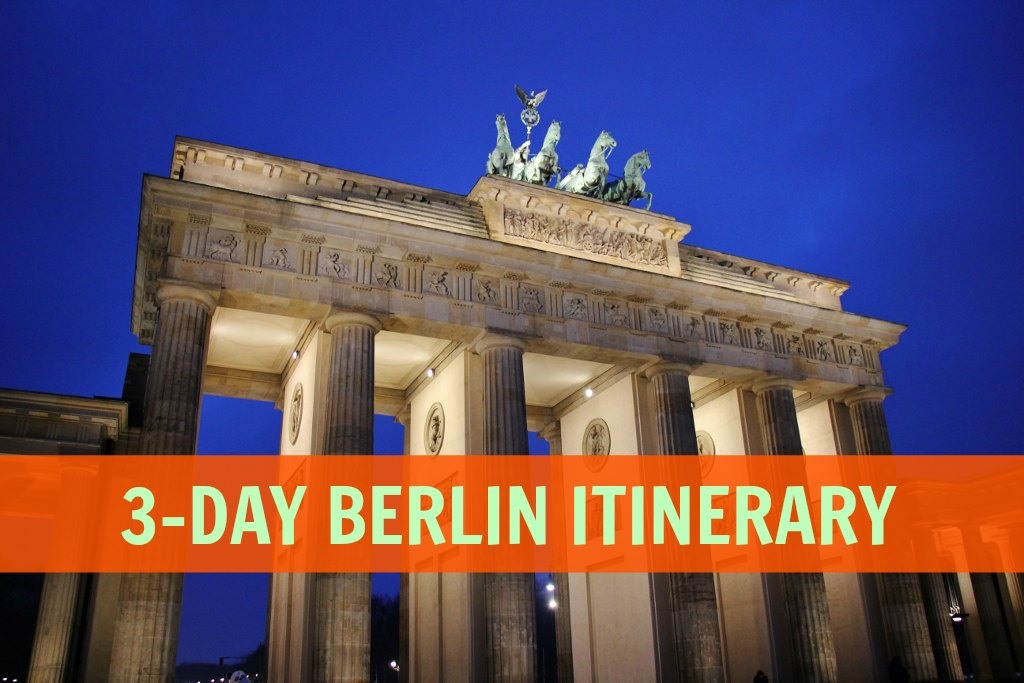
3-Day Berlin Itinerary: How To Spend 3 Days in Berlin, Germany
Welcome to JetSetting Fools, here you will find our best travel tips for destinations worldwide. Some of the links on this site are Affiliate Links and if you use them to make a purchase, we may earn a commission. For more information, read our Disclosure Policy .
Berlin. Just the mention of the name conjures images of division and unity, war and peace, angst and optimism. While visiting the city, the horrific history is palpable, yet the mood is brightened by the vibrant and expressive side of Berlin. The sprawling center is teeming with sights: museums, memorials and parks – and we pack it all into our 3-Day Berlin Itinerary.
We understand how overwhelming planning a trip to Berlin can be – there are an extraordinary number of things to do in Berlin. We’re helping by sharing our detailed Berlin 3-Day Itinerary. It is ideal for first-timers to Berlin who want to see as much as possible. Our itinerary for 3 days in Berlin includes everything you need to plan your trip!
About Our 3-Day Berlin Itinerary
Before we dive right into what to do in Berlin in 3 days, we have a few tips for using our itinerary. Understanding how we set up our 3 Day Itinerary in Berlin will help you prepare for your visit.
Self-Guided Berlin Walking Tour and Map Directions
The sights in our itinerary for Berlin are listed in order and in the form of a walking tour over three days of sightseeing. We provide a pin drop to each location as well as a summary map at the end of each day. Additionally, we include a complete Berlin Map of Sights, as well as an interactive version for you to follow along with at the end of the article.
Berlin Things To Do and Attractions
There is a broad range of top things to do in Berlin, Germany – from art to history to architecture. Each Berlin sight listed includes a brief summary and additional information, if appropriate.
When there is a charge to visit the Berlin attractions on our list, it is noted. If it is not indicated whether a sight requires a ticket or is free, it is open public space.
Berlin Food and Drinks
Of course, local fare and German beers are not to be missed on a trip to Berlin – so we made sure to include those in our 3-Day Berlin Itinerary as well!
Berliners have an affection for kebabs and currywurst. While German beer consistently ranks as some of the best in the world, in Berlin, young brew masters are enhancing the tradition with a new wave of craft beer.
The route of our 3-Day Berlin Itinerary incorporates getting a taste of kebabs, currywurst and craft beer, including specific restaurant and Berlin food tour recommendations.
Berlin Sightseeing Pace
We have packed our 3-Day Berlin Itinerary to the brim with the best things to do! While possible to see each day’s activities in one day, timing will vary based on your walking pace and how long each sight holds your interest. Be aware of opening and closing times and adjust according to your Berlin travel schedule accordingly.
How Many Days in Berlin
Deciding how many days to spend in Berlin can depend on many factors. We designed our Itinerary for Berlin for 3 days, because that is just enough time to see the top highlights. However, we know other travelers might have more (or less) time. Therefore, we offer additional Berlin sightseeing tips at the end of the article.
Pro Tip: Get organized for your Vacation to Europe by using our Trip Planning Templates !

Berlin Itinerary 3 Days

Set out on foot to explore the iconic sights of Berlin in 3 days. In our Berlin Itinerary, you will see the most poignant memorials, best museums, historic sites and lush parks.
Save, Pin or Bookmark our Berlin Travel Guide to plan your trip to Germany!
Day 1: Berlin City Center Sights
Start your 3-Day Berlin Itinerary in Pariser Platz at the Brandenburg Gate and discover some of the top things to do at Berlin. Station: Brandenburger Tor.
Brandenburg Gate

MAP . Start your tour of Berlin in Pariser Platz at Brandenburg Gate. It is, perhaps, Berlin’s most famous landmark and one of the best places to visit in Berlin.
The Brandenburg Gate has marked the entrance to the city since 1791, although it was blocked by the Berlin Wall that surrounded West Berlin from 1961 until 1989. The gate, with six columns and topped with a horse-drawn chariot carrying Victoria , has served as the backdrop for historical speeches (like President Reagan’s 1987 ‘Mr. Gorbachev, tear down this wall!’ speech) and political demonstrations.

Pariser Platz is home to both the US and French embassies, as well as the iconic – and high-priced – Adlon Hotel. The hotel opened in 1907 and, today, the Royal Suite fetches more than $27,000 a night. Many dignitaries and celebrities have been guests of the hotel – like the late Queen Elizabeth II and President Obama. Michael Jackson has also stayed at Adlon Hotel…and it’s where he so infamously dangled his baby from the second-floor balcony.
Memorial to the Murdered Jews of Europe

MAP . The memorial acknowledges and remembers the estimated 6,000,000 Jews who were killed in the Holocaust. The expansive Holocaust memorial, which was completed in December 2004, is unusual and striking. It is one of the most poignant things to see in Berlin.
There are 2,711 concrete slabs of various heights arranged in a grid that cover more than 4.5 acres of land. The pathways created between the concrete slabs allow visitors to walk through the memorial and contemplate the events of the Holocaust.

On the east side of the memorial, stairs descend into the Information Center. The center may be small, but the exhibitions are powerful. Visitors can review a timeline of the events and terrors that occurred between 1933 and 1945 at the hands of the National Socialist Party (Nazis) and then read letters and diary entries left from victims.
One room features the stories of 15 Jewish families and how they were impacted by the Holocaust. In another room, the names of the victims, along with a short biography, are read for every known Jewish Holocaust victim. To listen to the names and stories of every victim on the list in its entirety would take 6 years, 7 months and 27 days.
Note: The Information Center is free to enter, but it is important to be aware opening times .
Fuhrerbunker Berlin
MAP . Hitler’s bomb shelter, the Fuhrerbunker, is where he spent the last months of his life and ultimately committed suicide.
The bunker was partially destroyed and sealed from public entrance. Apartment buildings and a mundane parking lot were constructed over the bunker in an effort to dismiss the notion that the site was of any particular significance.
It wasn’t until 2006 that a small plaque was erected at the corner of the parking lot acknowledging the site. While we hesitate to call the site one of the must-see Berlin tourist attractions, it is certainly hard to argue that it is a significant location in history.
Potsdamer Platz

MAP . The contemporary Potsdamer Platz with sleek, soaring high-rise buildings has come a long way since it was a trading post in the 1600s. In the 1850s, a railway ran through the center of Potsdamer Platz and, in the 1920s, it was it was the buzzing center of Berlin.
The square was destroyed in World War II and laid a wasteland during the Cold War when the Berlin Wall divided it (which is now marked by a double-line of bricks and a few panels of the concrete wall).

After the Berlin Wall fell in 1989, the square was revitalized with contemporary buildings, including the Sony complex and Kollhoff Tower. Panoramapunkt – a viewing platform accessed by Europe’s fastest elevator – is located in Kollhoff Tower.
Topography of Terror
MAP . Free Entry. The Topography of Terror documentation center is located on the previous site of the Secret State Police Office (Gestapo), the SS (Protection Squad) and the Reich Security Main Office. The complex also housed a prison.
Today, it’s where to go in Berlin to learn about totalitarian Nazis. Inside the building that once housed their offices is now a permanent exhibition documenting the rise of the Third Reich, the crimes they committed once they established power and the consequences at the end of the war.
From spring until fall, a second exhibit is displayed outdoors in front of the remaining cellar walls. Above the exhibit, on ground level, a 650-foot portion of the Berlin Wall stands.
Checkpoint Charlie

MAP . Checkpoint Charlie – or Checkpoint C (as there was also Checkpoint A and B, among other crossings) – was the best-known transfer point between East and West Berlin during the 28 years that the Berlin Wall stood.
Today, Checkpoint Charlie is a bit of a tourist ruse, but it does help to illustrate how former East German residents were kept from entering West Germany in the heart of Berlin.

A replica Checkpoint Charlie hut stands near the original border crossing – complete with actors holding American flags who will pose with visitors for photos in exchange for a few euros. The shack sits under an image of a Russian soldier…with the image of an American soldier facing the opposite direction.
On the northwest corner of the intersection is The Wall Museum. The Yadegar Asisi Panorama exhibition details the life of the artist in Berlin during the Cold War. The adjacent Black Box Museum detail the history of East-West confrontation through multi-media displays, photographs and even a model of a Soviet tank.
LUNCH at Hasir
MAP . It’s time for lunch and, in Berlin, that means a kebab. Hasir opened in 1984 (this location in Kreuzberg is the original location, but there are now multiple restaurants in the city) – and many Berliners and visitors swear they make the best Berlin kebab. It’s even recommended by international foodies, like the late Anthony Bourdain.
Gendarmenmarkt Berlin

MAP . Origins of Gendarmenmarkt date to the late 1600s when the square was used as a marketplace. However, it wasn’t until about 100 years later, in 1773, that the buildings surrounding the square were enhanced by the grand architecture.
The centerpiece of the spacious and elegant square is the Concert Hall, which is flanked by two nearly identical churches (the French Church on the north side and German Church on the south side). The Concert Hall – which is known as one of the best acoustical halls in the world – is home to the German Orchestra, Konzerthausorchester Berlin, and is free to visit.

A statue of German poet, Friedrich Schiller, stands in the middle of Gendarmenmarkt. During World War II, the concert hall and German church were heavily damaged. At Christmas, Gendarmenmarkt is the site of one of Berlin’s best Christmas Markets.
St. Hedwig’s Catholic Cathedral

MAP . Free Entry. St. Hedwig’s Catholic Cathedral is modeled after the Pantheon in Rome…just on a smaller scale. It was the first Catholic church built in (then) Prussia post-Reformation. Inside, an organ clings like a barnacle to the wall above the entrance. In the lower church, there are several small chapels and a museum of artifacts.
Bebelplatz

MAP . Bebelplatz was designed in the 1740s and today is ringed by St. Hedwig’s Catholic Cathedral, Humbolt University and the Opera House. It was in 1933, however, that it gained infamous status as the site of a Nazi book burning ceremony. On the occasion, 20,000 books by authors such as Heinrich Mann, Karl Marx and Albert Einstein, were burned.
In the middle of the square, a memorial below ground level can be viewed through a glass pane: a room of empty bookshelves that could hold 20,000 books. A plaque next to the memorial displays an ominous quote written 100 years prior to the book burning event. It reads: “That was only a prelude; where they burn books, they will in the end also burn people.”

Humbolt University was founded in 1811 and is one of Berlin’s oldest universities. In its time, the university has either produced or employed 40 Nobel Prize winners – including Albert Einstein. Today, the university library holds 6.5 million volumes, making it one of the largest university libraries in Germany.
The Berlin State Opera House (Staatsoper Unter den Linden – or Lindenoper) was first built in 1741. Through the many years, the building has suffered damage by fire and war; as a result there have been several reconstructions as well as a number of name changes.
Berliner Dom

MAP . ( Ticket required. ) Berliner Dom – or Berlin Cathedral – is, in fact, not a cathedral, as it has never been the seat of the bishop. The formal name of the Evangelical church is Oberpfarr- und Domkirche zu Berlin – or Supreme Parish and Collegiate Church of Berlin.
The church parish dates to 1451, but the church as it stands today was built in 1905. It is the largest church in the city of Berlin. Berliner Dom is located on ‘Museum Island’, a small strip of land in the middle of the Spree River that is home to five Berlin museums (which you will visit on Day 2).
Part of the church was damaged during the war in 1940 and 1944 – and further damaged under communist reconstruction (including the removal of crosses and the demolition of an entire wing). In addition to services and concerts, Berliner Dom can be toured, including a climb up to the dome and down to the crypt.
Radisson Hotel Lobby and AquaDom SeaLife

MAP . ( Ticket required for entry to SeaLife ) While the Radisson Hotel isn’t exactly a Berlin attraction, the lobby is worth a quick peek inside for one distinctive feature: the world’s largest freestanding aquarium, AquaDom.
The 80-foot-tall cylindrical aquarium holds more than 1,500 fish – and a 2-story, glass elevator is installed in the middle of it. The AquaDom is part of a bigger attraction, SEA LIFE Berlin (which you may want to squeeze into your 3 Day Berlin Itinerary, if you have time). Getting a look at the AquaDom from the Radisson lobby is free; if you are staying longer than a moment to take a photo, consider purchasing a coffee or drink from the lobby bar.
UPDATE: On December 16, 2022 the AquaDom collapsed. The majority of the fish died, two people were injured and the Radisson Hotel Berlin lobby was destroyed. It is uncertain if or when the aquarium will be rebuilt.
Hackescher Market
MAP . Featuring boutique shops, cafes, restaurants and bars, Hackescher Market is a hub of activity for locals and tourists alike. An outdoor market is held on every Thursday and Saturday. Make your way to Hackesche Hofe, which is a series of eight connected courtyards featuring specialty shops and accessed via the archway at Rosenthalerstrasse 40 .
Classic Berlin Food and Beer at Das Lemke

MAP . Cap off your first day of Berlin sightseeing with a local craft beer and currywurst at Das Lemke. Beer and currywurst are two of things that Berlin does best! And there’s no better way to get an introduction to these tasty German treasures than at Das Lemke.
We recommend getting a tasting platter of beers and the currywurst with homemade sauce (but the sausage platter is excellent, as well). Das Lemke is one of the fun places to eat and drink in Berlin!
Tips and Maps for Day 1 of our 3-Day Berlin Itinerary

A few alternate ideas along with maps for our 1 Day Berlin Itinerary.
Berlin Tour Tips
- If a self-guided tour of Berlin isn’t your style, join a Berlin Walking Tour to explores the highlights, history and hidden sights of the city.
- Looking for a craft beer tour in Berlin? Check out the original evening Craft Beer Tour !
- How about a Secret Berlin Food Tour? Read views and get all the details !
Berlin Map Routes
- Google Map for Berlin sightseeing in the morning (before lunch)
- Map for sightseeing Berlin in the afternoon (after lunch)
Day 2: Berlin Museums, Art and Architecture
Hopefully you got a good night rest! Day 2 of your 3-Day Berlin Itinerary is big one that begins in the city center.
Museum Island

MAP . Ticket required for entry, cost varies/combo ticket available, including Museum Day Pass with Skip-the-line access and tour . The northern tip of the island that sits in the middle of the Spree River houses a complex consisting of 5 museums – and together they are listed as a Berlin UNESCO World Heritage Site.
These Berlin museums can be visited with individual tickets, a combination Berlin Museum Pass or for free with a Berlin City Card (more about cost-saving cards at the end of the post).
Spend the morning visiting one or several museums – or simply wandering the grounds and admiring the architecture. Below is a list of the Berlin museums on Museum Island along with additional information.
- Pergamon Museum – Open 10am to 6pm, but closed on Monday. Top features are the Pergamon Altar, the Ishtar Gate of Babylon and the Market Gate of Miletus. Collections include Antiquity, Middle East and Islamic Art.
- Bode Museum – Open 10am to 6pm; closed Mondays. Exhibits include sculptures and art from the late Antique and Byzantine periods, as well as a collection of coins and medals.
- Neues Museum (New Museum) – Open daily 10am to 6pm and closed Monday. The Neues Museum building dates to 1859, but was destroyed during World War II and was only reconstructed in 2009. On display are Egyptian, Prehistory and Early History collections. The most notable item is the bust of Egyptian Queen Nefertiti.
- Alte Nationalgalerie (Old National Gallery) – Open Tuesday through Sunday 10am to 6pm; closed Mondays. The featured collections include Neoclassical, Romantic, Biedermeier, Impressionist and Modernist artwork.
- Altes Museum (Old Museum) – Open Tuesday through Sunday 10am to 6pm; closed Mondays. The building dates to the 19th century and is best known for the Collection of Classical Antiquities.
Note : Berliner Dom is also located on Museum Island; if you didn’t have time to visit on Day 1, visit on Day 2.
Alexanderplatz & Fernsehturm Berlin TV Tower

MAP . Originally a cattle market, today Alexanderplatz is a busy Berlin transportation hub (including arrival and departure points via U-Bahn, S-Bahn, tram and bus) and pedestrian zone.
The top attraction on Alexanderplatz is the easy-to-spot TV Tower, Fernsehturm. Standing over 1,200 feet tall, it features a viewing platform along with a rotating restaurant in the bulbous sphere. The tower has been a symbol of Berlin and Germany since it was built in the 1960s.
It still ranks as the tallest structure in Germany and the fifth tallest television tower in Europe – and offers spectacular views over Berlin. Also on Alexanderplatz is the cylindrical World Time Clock, which displays all 24 times zones and the major cities in each zone.
LUNCH – Tekbir Doner

MAP . For a completely different-tasting kebab experience, head to Tekbir Doner for lunch. We got a tip from a local to dine at Tekbir Doner – and it didn’t disappoint. The small shop has only a few seats and everyone in the place will surely know each other.
The meat is veal – no chicken here – and the toppings are basic, but they combine to make an incredible kebab. Oh – and a cup of the Turkish tea is included!
Treptower Park and Soviet War Memorial

MAP . Treptower Park, which lies to the southeast of Berlin along the west bank of the Spree River, was the location of the 1896 Great Industrial Exposition of Berlin. The main feature today – in addition to the open space and plentiful pathways – is the dramatic Soviet War Memorial (Sowjetisches Ehrenmal Treptow).
The vast monument was designed as a cemetery for 5,000 Soviet soldiers and to commemorate the 80,000 Soviet soldiers who died fighting in the Battle of Berlin. The memorial includes a 40-foot-tall statue of a Soviet soldier carrying a German child while standing over a broken swastika, as well as 16 sarcophagi featuring carved depictions of war scenes and quotes from Stalin. Controversial, but certainly an important Berlin sight to visit.
Oberbaumbrucke Bridge

MAP . The double-towered, double-decked bridge crossing the Spree River is one of Berlin’s most striking landmarks. Originally built in the 1700s and named for the tree trunk barriers that used to prevent smugglers from crossing at night, the wooden bridge was replaced in 1896 with the brick bridge.
Oberbaumbrucke connects the neighborhoods of Kreuzberg (in the west) and Friedrichshain (in the east), which were once separated by the Berlin Wall. During the time that the wall stood, the bridge was used as a pedestrian crossing…for West Berlin residents only.
East Side Gallery

MAP . In 1990, after the fall of the Berlin Wall, artists from around the world were invited to create works of art on the east side of a ¾-mile-long stretch that had not been dismantled. The project included individual murals from 105 artists that depict scenes of freedom and hope.
Named the East Side Gallery, walking the section of remaining, decorated wall is one of the best things to do Berlin.

Among the most popular is the painting by Dmitri Vrubel of Leonid Brezhnev (General Secretary of the Central Committee of the Communist Party of the Soviet Union) and Erich Honecker (General Secretary of the Central Committee of the Socialist Unity Party of Germany) engaged in an open mouth kiss, with the words, “God, help me stay alive among this deadly love,” written in Russian.
As time has passed, much of the open-air art has been defaced (by hooligans) or removed and destroyed (by developers). An effort to preserve and restore the art has been undertaken, but not without controversy.
Friedrichshain Berlin

MAP . Developed in the 1920s as a working-class neighborhood, Friedrichshain is now a trendy area benefiting (and suffering from) gentrification. Wander the streets aimlessly or join a guide on a walking tour of Friedrichshain.
Stay in the neighborhood for dinner and drinks, you will find great options near Boxhangener Platz. Friedrichshain is also home to many famous Berlin bars – as well as several popular Berlin nightclubs.
Tips and Map for Day 2 of our 3-Day Berlin Itinerary

Top Tip: If you are keen on learning more about the artistic side of Berlin, we suggest taking the Berlin Street Art tour.
Map: Google Map for Sightseeing on Day 2 in Berlin
Day 3: Berlin Parks and German Reichstag
Okay, let’s start the last day of your 3-Day Berlin Itinerary! We’ll begin south of the city at…
Natur-Park Sudgelande

MAP . Ticket required for entry, 1 euro per person. Natur-Park Sudgelande, which opened in 1999, is set in an abandoned railyard. The water tower – once used to power steam engines – is covered in rust and trees have taken root between tracks.

The railyard was built in 1889, but was closed in 1952 and was left to the mercy of nature. Besides the many lines of overgrown railroad tracks, a 1940 train engine and an original railyard turntable are top features of the park.
Berlin Tempelhofer Feld Park

MAP . The Tempelhofer Feld Park is one of Berlin’s most historic places and a popular adaptive re-use projects. The first Tempelhof Airport opened in 1923, but plans for an improved airport were already in the works by 1936. During WWII, construction ceased – and then it was used in 1940-41 as a forced labor camp. After the war – from 1945 until 1993, the airport was used as a base by the US Air Force.
In 1948, when the Soviet Union imposed a food and supply blockade on West Berlin, the airport was used as an ‘air bridge’ to fly in provisions needed for the people living in West Berlin. Tempelhof Airport became an evacuation point for Berliners who wanted to flee the region and reestablish their families and lives elsewhere in Germany and Europe.

In the 1960s and 70s, the airport functioned as a civilian airport – in 1971 the airport saw 5.5 million passengers, but closed when Berlin Tegel Airport opened to commercial flights in 1974. Due to increased travel through Germany in the 1980s, the airport was reopened. However, in 2008, the Tempelhof Airport closed permanently.
In 2010, the runways and vast land of the airport were opened as a massive Berlin city park. While taxiway signs and runway markers remain, the pavement is now utilized by joggers, bikers and stroller-pushers. The grassy lawn is used for lounging and BBQ’s in the summertime. Both history and aviation aficionados will want to put Tempelhofer Feld Park on their Berlin To Do list!
LUNCH – Mustafa’s Kebab

MAP . Mustafa’s Gemuese Kebab stand is perhaps the tastiest of all the kebabs in Berlin. The line at Mustafa’s is sure to be long and full of selfie-taking tourists, but the kebabs are phenomenal and well worth the wait.
The menu is short and the only meat is chicken (although veggie kebabs are also available). We highly recommend ordering the Durum with everything. The kebabs at Mustafa’s rank as some of our favorites in the world!

Pro Tip : Need something to snack on for the 30-minute wait? Continue walking 1 minute south to Curry 36 and order a currywurst snack as an appetizer!
German Reichstag Building

MAP . Free entry; pre-registration required ; the free tour of the glass dome includes a (free) audio guide, a small display on the history of the Reichstag Building and spectacular 360 degree views over Berlin.
In 1894, Berlin’s Reichstag Building opened as home of the German Parliament, which it remained until 1933 when the building was almost completely destroyed by fire. The fire – and accusation that it was a plot by Communists – was used by Hitler to further advance the establishment of the Nazi Party and led to the subsequent signing of the Enabling Act.

The building was not reconstructed after the fire and fell into a state of ruins after it was targeted during the Battle of Berlin in 1945. When the war ended, the West German government moved to Bonn – and the building, which was no longer being used, was only minimally restored. After Germany’s reunification, the decision was made to move Parliament back to Berlin.
The Reichstag Building was completely restored in 1999 – including the glass dome, which was a key feature of the original design that represents the transparency of Germany’s government.
Tiergarten Park and Victory Column

MAP . Tiergarten is Berlin’s 520-acre, inner-city park. It was originally designed in 1527 as hunting grounds for royalty. As the desire to hunt waned and the city grew, the land was converted into Berlin’s first public park. Wide paths, statues and monuments were added to the open space.
The most notable – and visible – monument is the Victory Column (Siegessaule). The bronze ‘Victoria’ that tops that column is 27-feet tall. The column was erected in 1873 to celebrate Prussian victories, but was moved to its current location in the 1930s.
Kaiser-Wilhelm Memorial Church
MAP . Free entry. The Kaiser Wilhelm Memorial Church – also known as the Gedachtniskirche – was built in the late 1800s. After being damaged by bombs in 1943, it was debated whether the church should be completely demolished or salvaged. In the end, it was decided that the damaged spire would be preserved – so that today the church contains both new and historic elements. The church is one of Berlin’s many notable landmarks.
Mauerpark
MAP . The name – Mauerpark – directly translates to Wall Park. During the years that the Berlin Wall stood, the long strip of land was known as the Death Strip. The Wall blocked access from East to West, but the area around the wall was often referred to as No Man’s Land – or the Death Strip.
Watchtowers manned by armed guards looked over the land where sand, traps and spikes were placed to deter East Berliners from attempting escape into West Berlin. After the fall of the Berlin Wall, the open space was converted into a park.
Today, the park is well-known for the Sunday flea market, where shoppers can find almost anything imaginable. The park is also the site of the famous Sunday summer Bearpit Karaoke Show. Crowds – which often number into the thousands – gather around the small amphitheater to cheer and jeer the brave karaoke singers.
Volkspark Humboldthain
MAP . Berlin’s northern park, Volkspark Humboldthain, opened in 1872, featuring greenhouses, a church and the city’s first park playground. Near the end of World War II, the park was the site of two Flak Towers, built to defend Berlin from aircraft attacks and to serve as above-ground bunkers (they could accommodate 15,000 people).
After the war, in which much of the park was devastated, one tower was destroyed and reduced to rubble, while the other remains partially standing and serves as a viewing platform. A tour of the interior of the tower is possible by guided tour, but only in the summer, as it is a sanctuary for bats in the wintertime.

If you are hungry for a snack, walk to Curry Baude ( MAP ) on the northeast side of the park. Located at the Gesunderbrunnen Station, Curry Baude has been making currywurst since 1989 – using a sauce based on a secret family recipe. The spot is a local favorite – and some claim it is the best currywurst in Berlin. Try the Special Currywurst, which comes with corn, paprika and sauce.
Berlin Wall Memorial

MAP . A memorial to the Berlin Wall – called Gedenkstatte Berliner Mauer – is an open-air museum that illustrates how the city was divided by the Berlin Wall. Part of the actual wall remains – as does a guard tower.
Visitors are invited to walk the length of the wall, while taking in the informational plaques, photographs and stories with an audio guide. Furthermore, guests who want a personal introduction can join one of the guided tours for a small fee.
Berlin Craft Beer: The Castle Berlin Mitte
MAP . For a final taste of some of Berlin’s finest beer, head to Castle Bar for a pre-dinner pint. Opened in 2013, Castle Pub serves craft beer from Berlin and beyond. Featuring local brewers, Castle Pub has more than 20 taps and an extensive menu of bottled beers and a big outdoor beer garden.
German Dinner at Schnitzelei Mitte
MAP . For a taste of different German food, enjoy your final meal at Schnitzelei Mitte. In the cozy space, feast on German style tapas to sample several different kinds of typical food from Berlin…or dig into one of the signature schnitzels!
Tips and Map for Day 3

Tip: If you’ve tired of currywurst and German fare or are simply craving a change to something international – head to the Prenzlauer Berg neighborhood. The international restaurant options are endless. In the mood for burgers? We recommend eating at The Bird .
Map: Google Map for Berlin Sightseeing on Day 3

Berlin Tour Map

Use this Google Map for an interactive version to all the Best Things To Do in Berlin map below! The Blue markers indicated Berlin activities for Day 1. Purple markers show Day 2 sights in Berlin. The Green markers feature what to see on Berlin Day 3.

What To Do Berlin Beyond the City Center
We have highlighted the top Berlin things to do in the city center that are easily accessed on foot and public transport. However, there are a few Berlin attractions that are outside the city center worth visiting, too. We are highlighting a few of the best places that you might want to add to your Berlin 3 Day Itinerary.
Charlottenburg Palace
MAP . One of the top places to see in Berlin, Schloss Charlottenburg is a Baroque palace that dates to the 17th century. Visitors can go inside the palace (with tickets) to see the opulently decorated rooms. The palace gardens are also not to be missed – and they are always free to enter.
For a truly unique experience, attend the Evening of Dinner and Music at Charlottenburg Palace – it’s one of the romantic things to do in Berlin!
Berlin Botanical Garden and Museum
MAP . The Berlin Botanical Garden and Botanical Museum (called Botanischer Garten und Botanisches Museum) offers visitors the chance to ‘tour the world’ in their gardens. With 15 greenhouses featuring plants from around the globe and a museum, guests can plan to spend at least half a day at the gardens.
Tierpark Berlin Zoo
MAP . The Tierpark Berlin ranks as the largest zoo in Europe…and it’s nestled right into a forest. Top zoo attractions are the polar bears, monkey houses and petting zoo. Visitors also enjoy the lush grounds and the Friedrichsfelde Palace.
KaDeWe – Kaufhaus des Westens
Reigning as the second largest department store in Europe (after Harrods in London ), shopping at Kaufhaus des Westens – or KaDeWe, for short – is one of the fun things to do in Berlin.
The luxury mall opened in 1907 and features 8 floors of retail space. The 6th floor is a dedicated food hall, offering an array of scrumptious fare, while the top floor hosts a restaurant with floor to ceiling windows for exceptional views.
Berlin Day Trips
With different interests (or more time in the city), consider including a full day trip from Berlin in your 3 Days in Berlin Itinerary. There are several excursions from the city, so we are pointing out just a few of the most popular Berlin Day Trips.
Sachsenhausen Concentration Camp
Learn about the atrocities that occurred at Sachsenhausen Concentration Camp – one of the first camps established by the Third Reich Nazis. Visitors will hear stories about the prisoners and see what remains of the camp, which stands a national memorial to the victims. Reserve your spot .
Walk the route of Prussian kings and German royalty on a full-day tour from Berlin to Potsdam. See palaces, gardens and historical sights that hosted events which shaped the future of Germany. Book your seat!
Spending a day in Dresden is just long enough to see the top sights of the beautiful city (but read our 3-Day Dresden Itinerary to see why you might want to stay longer than a day!). Tour guests travel by bus to Dresden and get a guided walking tour of the city that is nicknamed ‘The Jewel Box’. Find out more!
Berlin: How Many Days?

We created a 3-Day Itinerary in Berlin because we think three days are just enough time to get to know the city. However, we understand that other visitors may have more – or less – than 3 days in Berlin. Use our Berlin travel planner tips below to plan your perfect trip.
Berlin One-Day Itinerary
If you are trying to create a plan of things to do in Berlin in one day, we advise following our tips from Day 1…and perhaps adding the Reichstag and Tiergarten into your sightseeing.
2 Days in Berlin Itinerary
To create a Berlin 2-Day Itinerary, we think it is best to simply follow Days 1 and 2 of our above Three Days in Berlin Itinerary (but, again, add the Reichstag and Tiergarten into your first day, if possible!).
Alternate 3 Days in Berlin Itinerary
In our outlined 3 Day Trip Plan for Berlin, we recommend that Day 3 be spent visiting some of the historic parks and sights around the city that date to World War II. Those more interested in learning about a different time in Berlin may want to visit the Charlottenburg Palace instead.
4 Days in Berlin Itinerary
With 4 days in Berlin, we recommend adding a sight – like the Charlottenburg Palace or one of the above day trips from Berlin – to your Berlin trip itinerary.
5 Days in Berlin Itinerary
To create a balanced 5-Day Itinerary Berlin spend one day on a day trip. For example, go to Sachsenhausen Concentration Camp to learn about the darkest time of German history or go to Potsdam for an education on German royalty.
History of Berlin, Germany

To really appreciate Berlin attractions, it is essential to have a basic understanding of the history of the city. Although Berlin has a relatively short timeline by most European standards, the history is complex and profoundly marked by events of the 20th century.
Berlin City Origins
Originally settled by the Slavs, Berlin officially became a city in the year 1237 under the rule of the Margraves of Brandenburg. The city quickly grew and, in 1451, it became the royal residence of the Brandenburg electors. In the late 1500s, many citizens fell victim to Bubonic plague and died – and in the early 1600s, half of Berlin’s population was lost in the Thirty Years’ War. By the mid-1600s, under Elector Frederick William, the population surged due to open policies regarding immigration and religion.
In 1701, when Elector Frederick III named himself King of Prussia, Berlin became the capital of the kingdom. He was succeeded by his son, King Frederick William – also known as The Soldier King, who ruled from 1713 until his death in 1740. At that time, his son – who became known as Frederick the Great – became king and ruled until he died in 1786.
Throughout the 1700s, not only did Berlin see the construction of many churches and buildings (some that survive today), but also the rise of education, transportation and the arts. The strong economic growth seen in the early 1800s attracted an influx of immigrants to Berlin, which resulted in much of the population suffering from poverty and ultimately led to a middle-class revolution in 1848.

The German Empire
In 1871, the German Empire (or German Reich) was established and the nation became the most powerful in all of Europe – and Berlin became the center of European politics. The industrial city boomed until World War I, when supplies and morale were both running short. At the end of WWI, the monarchy was overthrown and in 1918 Germany became the Weimar Republic, with Berlin remaining as the capital. Political unrest ensued.
To pay reparations owed by Germany as agreed to in the Treaty of Versailles, the German government simply started printing money – and inflation peaked in 1923 when 1 US dollar equaled 4.2 trillion German marks (that’s 4,200,000,000,000!). However, things turned around in 1924 and Berlin became a cultural center of Europe highlighted by exhibitions and a vibrant nightlife…until 1929 and the Great Depression.
Bankruptcy and unemployment led to demonstrations and chaos in the German government. In 1933, Adolf Hitler was named Chancellor and the Nazis took control of the nation. In the same year, the boycotting of Jewish-owned businesses was organized, book burning ceremonies took place and the first concentration camps were constructed – all while Hitler continued toward his goal of Welthauptstadt Germania (World Capital Germany). Jewish citizens continued to be targeted, terrorized and killed.
World War II
On September 1, 1939, Nazi Germany declared war on Poland – and thus the start of World War II. Berlin was first bombed in August of 1940, but it was during the Battle of Berlin (November 1943-March 1944) that nearly half of the city was destroyed. World War II came to end in April/May 1945 when the Soviets captured Berlin and Hitler committed suicide.
Berlin: A City Divided

The city of Berlin was subsequently divided into four sectors to be administered jointly by The United States, Great Britain, France and the Soviet Union. As the Western Forces banded together, relations with the Soviet Union dissolved and the city of Berlin was soon divided into East Berlin (Soviet/Communist) and West Berlin (Western Allied Forces) – and, thus, became the focus of the Cold War.

As East Berlin conditions deteriorated under a suffering economy, East Berlin residents fled to West Berlin. In order to prevent a complete mass exodus, in 1961 the East German government began building the Berlin Wall encircling West Berlin. Checkpoints allowed for Westerners (with the proper paperwork) to pass through into East Berlin, but East Berlin residents were not permitted into West Berlin.
German Reunification

The Berlin Wall stood for 28 years – separating the city, families and friends – until November 1989 when the Berlin Wall fell. The city was reunited and the Cold War ended. Since the reunification of the city, Berlin has experienced rapid growth and has become a center of business development and international investment.
Travel Tips for your 3-Day Berlin Itinerary

Berlin is a sprawling metropolis with sights spread throughout. Visitors who want to see the top Berlin sights in 3 days will need to get around efficiently. We have a few tips on how to do just that!
Berlin Transportation
Berlin is well-connected with public transportation. In our Berlin Sightseeing Guide, we recommend using public transport to get to many of the sights. It is helpful to have a basic understanding of Berlin’s public transportation system, BVG , prior to arriving.
Tickets (single ride, daily, weekly or monthly) can be purchased at U-Bahn and S-Bahn stations or on buses and trams. Some Berlin Visitor Cards also offer free or discounted transportation options.
Routes can easily be determined using the Berlin Journey Planner or by using Google Maps (with the links we have provided to each sight).
WiFi Connection
In order to use the links while sightseeing in Berlin, you will need a Wi-Fi connection (although carrying a Berlin City Map is also very useful).
To stay connected we use a GlocalMe Mobile WiFi device. This Pocket WiFi Device is fantastic for international travelers – especially those exploring as a family or in groups – and can be much cheaper than paying for international data plans through cell phone providers.
Berlin City Cards
Berlin Traveler city cards are a great way to save money on entry admissions and public transport. There are a few different types of city cards in Berlin that are available to tourists.
Berlin Welcome Card
Tourists visiting Berlin will most likely benefit from purchasing a Berlin Welcome Card , which includes all public transportation and various discounts for the specified number of days. The Berlin Welcome Card Museum Island has the additional benefit of museum entry.
With the Berlin Card, we never had to worry about buying or stamping tickets – which made using public transportation a breeze. We wouldn’t go to Berlin without a Welcome Card!
For more information about sightseeing in Berlin with the Welcome Card, go to Visit Berlin , the official Berlin Tourist site.
Easy City Pass Berlin
The Easy City Pass Berlin is similar to the Welcome Card, offering both public transportation and discounts to major sights. We have not used this pass, but it does get great reviews – learn more ! We recommend comparing the two passes to find out which one will be most beneficial for your trip.
Plan a Trip to Berlin

Now that you know what to see in Berlin in 3 days, we have a few more travel tips and packing hacks for your visit!
Where To Stay in Berlin, Germany

Choosing what area to stay in Berlin can be overwhelming. We highly recommend selecting somewhere central – and near a Berlin subway station (U-Bahn).
During our visit to Berlin, we stayed in an Airbnb Apartment . We have found that staying in apartments is often less expensive than hotel rooms – with the added benefit of a kitchen and, usually, more space (just watch for fees on short stays!). That said, if you are planning 3 full days of sightseeing and eating delicious German fare at the best Berlin restaurants, then a hotel is likely more convenient.
Hotels in Berlin
There are many Berlin hotels to choose from in – or close to – the city center. Berlin accommodations are available in a range of price points. We are sharing a few top-rated hotels (based on guest reviews) for your upcoming trip to Berlin. Be sure to read our tips for Booking the Hotels at the Best Prices first!
Casa Camper Berlin
The Casa Camper Berlin Hotel gets exceptional ratings from guests! They get particularly high scores for the location (just around the corner from a subway station), the comfortable beds and cleanliness. Check rates for your stay!
Regent Berlin
Regent Berlin Hotel is one of the classic hotels in Berlin that offers outstanding service and large rooms. The hotel is located in the heart of the city, making it easy to get around on foot. Check rates and availability!
Hotel am Steinplatz
Located on the west end of Tiergarten Park near a subway station, Hotel am Steinplatz gets rave reviews for the comfortable rooms and modern amenities. Check availability for your stay!
Berlin Hostels
Guests traveling on a budget may want to check availability at one of the many hostels in Berlin. Top picks by fellow travelers are the Minimal Hostel , The Circus Hostel and EastSeven Berling Hostel .
Getting To Berlin, Germany

Berlin can be reached by plane, train, bus or car. The new Berlin Brandenburg Airport (BER) opened in October of 2020 and is now the city’s sole airport.
We flew to Berlin from London and departed via bus to Dresden . Our preferred method of getting anywhere is by flying (we are JetSettingFools, after all!) and we start our search for the Best Deals on Tickets by launching Skyscanner .
In Europe, our preferred bus company is FlixBus – as it is reliable, economical, clean and comfortable. While we aren’t keen on driving abroad, renting a car can often save time, money (especially when traveling with more than two people) and a car rental allows for greater discovery.
Best Time To Visit Berlin

There are advantages to visiting Berlin in every season…and a few downsides, too. We are highlighting the pros and cons to help you decide when it is the best time to visit Berlin for your trip.
Summer in Berlin
Many visitors go to Berlin in summertime. The weather is warm (highs in the high 70s Fahrenheit) – which is great for spending time in the city parks, outdoor cafes and in the Berlin beer gardens. It can, however, get crowded in the summer and prices for Berlin hotels will likely be higher than in other seasons.
Visit Berlin in Autumn
We love traveling in the fall. Temperatures cool off but are usually still warm enough for the outdoors. Better yet, crowds start to thin and prices tend to drop. It is still a good idea to book early though if you are seeking the best Berlin budget deals. Oktoberfest and Jazzfest are two fun Berlin festivals that take place in the autumn.
Wintertime in Berlin
Brrrrrrr-lin. That’s how we pronounced it as we were there in the middle of winter. It was freezing cold and snow blanketed the city, but it didn’t keep us from exploring! With the well-connected Berlin public transportation and bevy of museums, churches and pubs, we stayed plenty warm.
While many people may not think winter is the best time to visit Berlin, the top reasons for going during the colder months is fewer crowds and less expensive accommodations.
We missed the Berlin Christmas Markets that dot the city, but some say it is one of the best places to spend Christmas in Europe . If you are visiting Berlin in the winter, pack clothing that can be layered and good, winter shoes or boots.
Berlin during Spring
Springtime is still shoulder season in Berlin, which can mean great hotel deals and easy access to top sights and attractions. However, it can be gray and wet – so be sure to pack a travel umbrella and raincoat !
What To Pack for your 3 Days in Berlin

Ready to travel to Berlin? Super! We have just a few final packing tips for your Berlin vacation. Grab your FREE Packing Checklist and off we go!
Durable Shoes
Our Berlin 3-Day Itinerary covers some ground! Make sure to pack comfortable city walking shoes for your trip. I like to wear these shoes by Columbia or comfortable everyday trainers and Kris prefers to wear Merrell trail shoes.
Travel Camera
We’re certain you’ll be snapping tons of photos during your Berlin getaway. Rather than relying on your phone to capture the sights, upgrade to an actual camera for high quality photos. We shoot with a Canon Rebel and a 18-135mm lens , which takes beautiful pictures, comes with loads of fun accessories and is an excellent value budget camera .
Whether you prefer to travel with a backpack or a suitcase , you’ll also want to be prepared with a great day bag . We use the small backpacks for keeping all our everyday travel items organized and safe!
Germany Travel Insurance
Trip insurance that may help cover costs associated with cancelled flights, lost luggage or even unexpected illness on your trip to Berlin. If you haven’t purchased coverage, consider traveling protected with World Nomads .
Start planning your trip to Germany ! Search for the lowest airfares , the best accommodations and fun things to do …then start packing ! Want more travel advice? Head over to our Travel Planning Page for tips on traveling – and for country-specific information, take a look at our Travel Guides Page !
Visiting other Top Cities in Germany? We’ve got you covered! Read our detailed guides for Frankfurt , Munich , Dusseldorf , and Freiburg !

Pin it! See all of our travel pins on our JetSetting Fools Pinterest Board .

Share This Story!
- Click to share on Pinterest (Opens in new window)
- Click to share on Facebook (Opens in new window)
- Click to share on Twitter (Opens in new window)
- Click to share on LinkedIn (Opens in new window)
2 thoughts on “ 3-Day Berlin Itinerary: How To Spend 3 Days in Berlin, Germany ”
Comments are closed.

4 Days In Berlin, An Itinerary For First Time Visitors
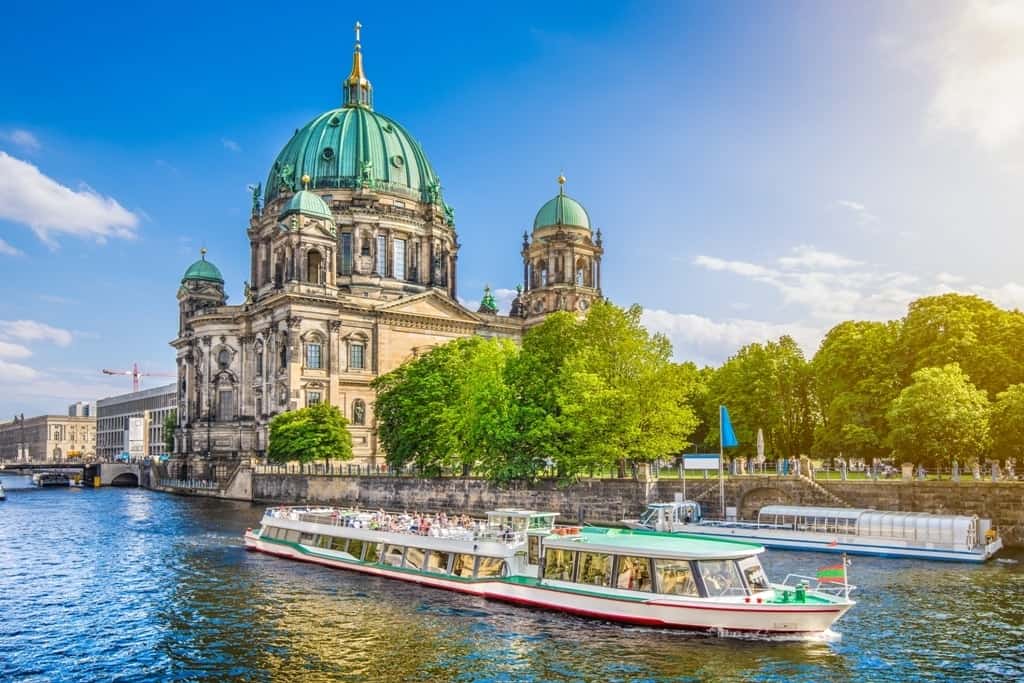
This post is also available in: French
No question about it, Berlin is one of Europe’s most exciting metropolises. This very international city has plenty of architectural highlights, culture galore, and unrivaled nightlife. And, of course, Berlin also has a very fascinating history. Whether you’re interested in the Wall that divided the city into East and West for nearly thirty years of the Second World War, you’ll still find many traces and scars from these historic events in modern-day Berlin. Perhaps surprisingly, Berlin is also an extremely green city, with hundreds of parks, several rivers, many lakes, and even a forest or two, all within the city limits.
Four days in Berlin is the perfect length of time to take in what this great city has to offer. When I was there, I really enjoyed getting to know the history up close and personal as well as taking in the amazing array of arts and culture on offer. Berlin is truly one-of-a-kind, and you’re sure to bring home many fond memories of your stay there. Here’s how to fit all the major attractions into a 4-day visit.
Disclaimer: This post contains affiliate links. This means that should you click on certain links, and then subsequently purchase a product, I will receive a small commission.
Table of Contents
How to spend four days in Berlin, things to do and see
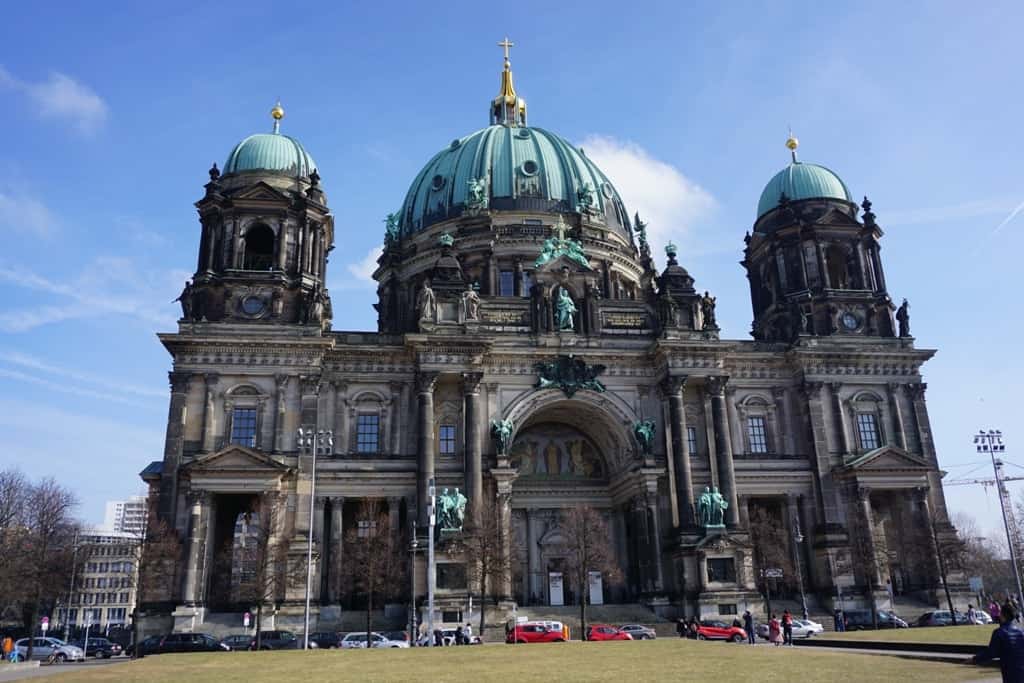
You might be also interested in: A 2-day Berlin itinerary if you are planning a trip to the German capital for fewer days.
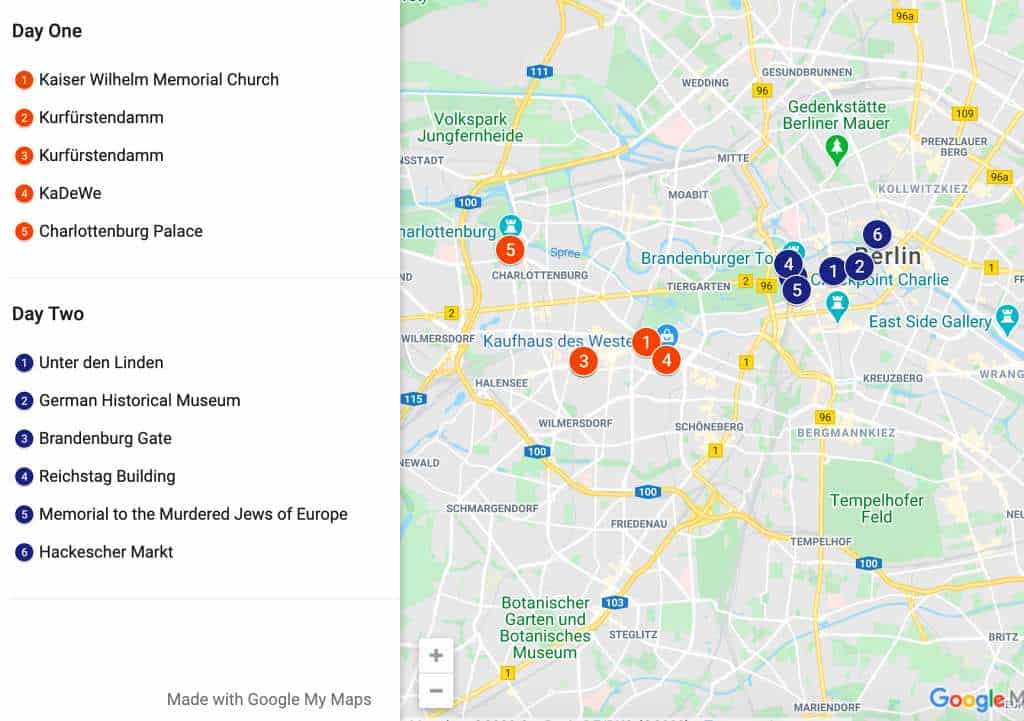
4 Days in Berlin: Day One (City West)
Since I stayed in Charlottenburg, which is located in the former West, I decided to check out Berlin’s City West first. Berlin is quite spread out, so if you’re staying in districts like Mitte or Prenzlauer Berg (former East), you may want to swap day one and day two. After relaxing and settling in at my hotel, I got ready for a day out on the town.
Kaiser Wilhelm Memorial Church
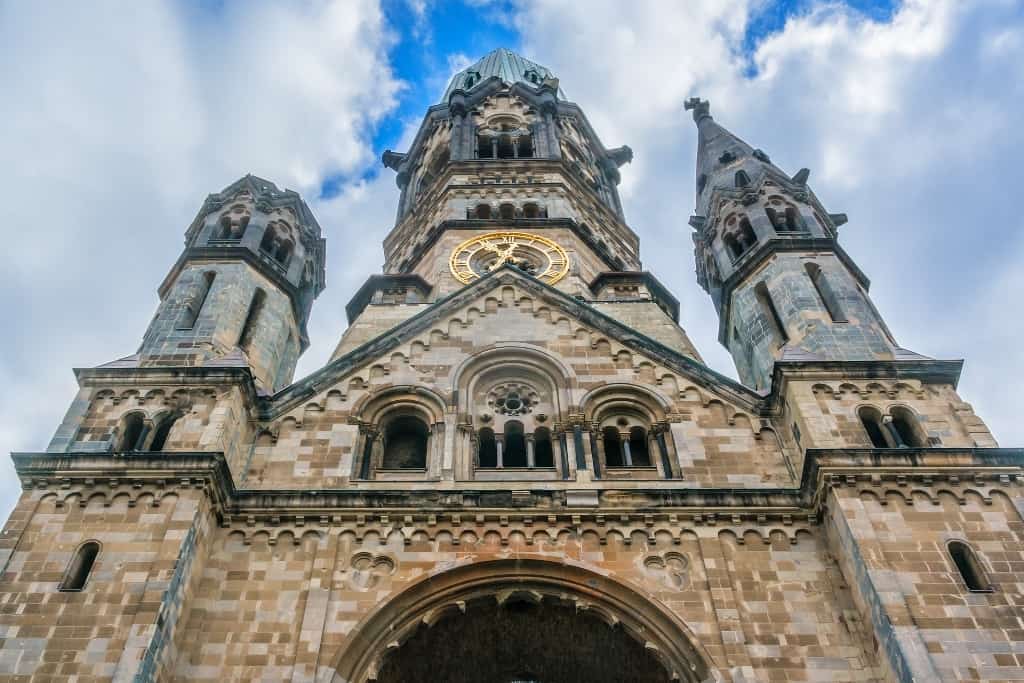
I started off the day at Breitscheidplatz, home to Kaiser Wilhelm Memorial Church. Damaged by air raids over the city during World War II, Berlin decided to leave this church in ruins as a memorial for peace and reconciliation.
Entry is free. Opening hours: every day from 9 a.m. to 7 p.m.
Kurfürstendamm
From Breitscheidplatz, it was time for a stroll down Kurfürstendamm. Shortened Ku’damm by locals, Kurfürstendammis the legendary shopping street in West Berlin. This street has been called Berlin’s 5th Avenue and is home to many luxury boutiques, like Prada, Versace, Chanel, and others. However, the strip also has shops from many mid-priced international and German brands as well. Even if you’re only in the mood to window shop, a walk down Ku’damm is simply a must. While there, you’ll be sure to enjoythe street’s rows of beautiful plane trees, beautiful architecture, and many restaurants and cafes.
Zoologischer Garten
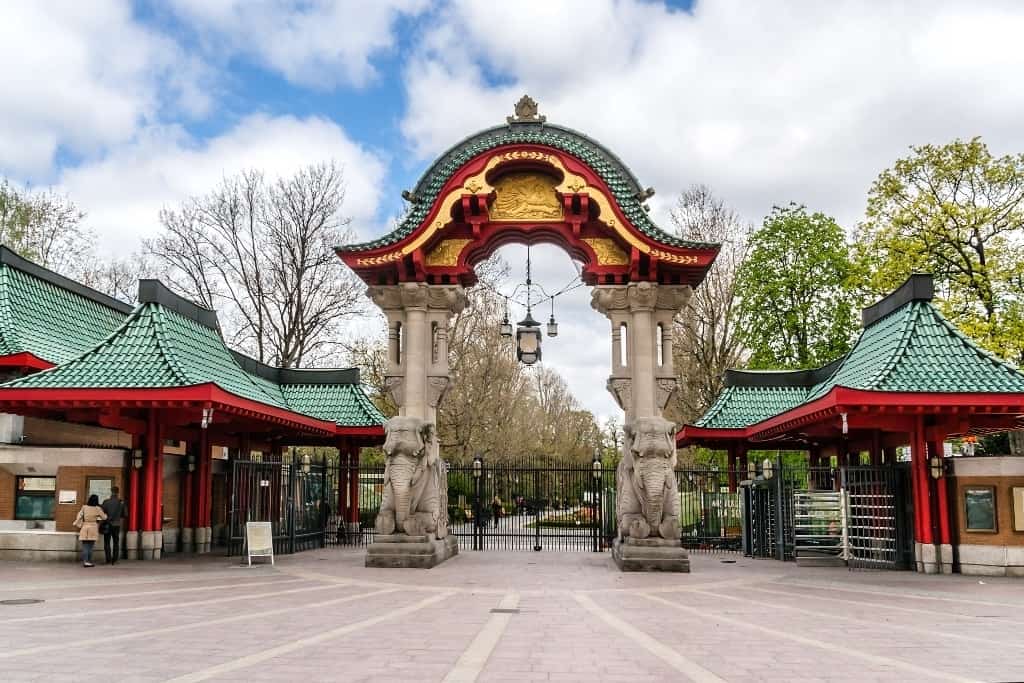
In the 80s, Zoologischer Garten was notorious as a gritty scene complete with drugs and plenty of crime. However, the area has since been revitalized, with plenty of new high-rise buildings and Bikini, a concept mall, where both local and international designers sell their wares.
If you’re an animal lover or traveling with children, make sure and check out Zoo Berlin. Germany’s oldest zoological garden, Zoo Berlin is also home to the country’s only Panda bears. The city’s aquarium is located next door and is a great option for cold or rainy days. If you’re feeling particularly ambitious, you can also buy a combination day ticket for both.
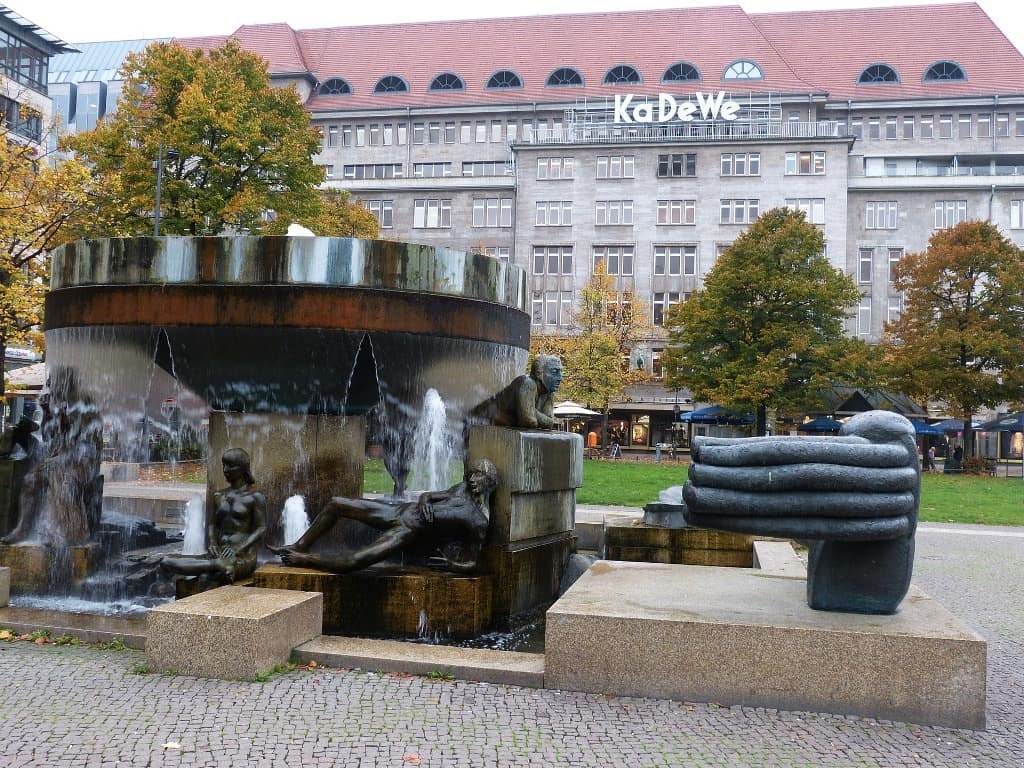
If you exit at the Lion Gate at the zoo, you’ll be directly at the Zoologischer Garten U+S-Bahn station. Hop on the U-2 towards Pankow only one stop to Wittenbergplatz, where you’ll find the truly amazing Kaufhaus des Westens (shortened to KaDeWe by locals). KaDeWe is Europe’s largest department store, with a great selection of international as well as German brands. Make sure you don’t miss a trip to the 6th floor, where they sell food and delicacies from around the world. Truly impressive!
Kaufausdes Westen: Tauentzienstraße 21-24 (U-2/U-1 Wittenbergplatz) Opening hours: Mon-Sat, 10 a.m. to 8 p.m.
Charlottenburg Palace
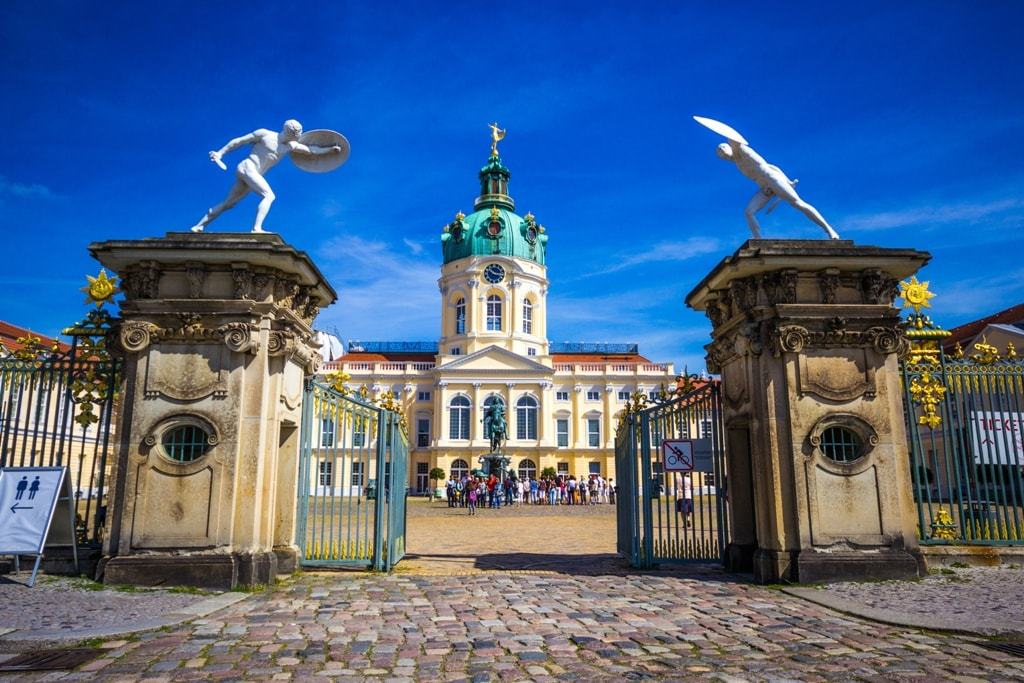
After all that shopping and checking out exotic animals, I needed to do something a little more lowkey. I got back on the U-2 in the direction of Ruhleben and got off at Sophie-Charlotte-Platz. From here, it’s about a 15-minute walk down the tree-lined Schloßstraßeto Charlottenburg Palace (Schloss Charlottenburg in German). This gorgeous palace hails from the late 17th century and has both rococo and baroque elements in its design. Although a visit inside the palace is certainly interesting, a trip to Charlottenburg Palace is worth it for the beautiful and expansive palace gardens and ground alone.
You might be interested in: The best Christmas Markets in Germany .
4 Days in Berlin: Day Two (City East)
Unter den linden.
For my second day, I headed to Unter den Linden, a historic street in former East Berlin with many beautiful buildings and historical sites, like Bebelplatz, where the Nazis did their infamous book burning, and the moving Käthe Kollwitz statue in the Neue Wache building.
German Historical Museum
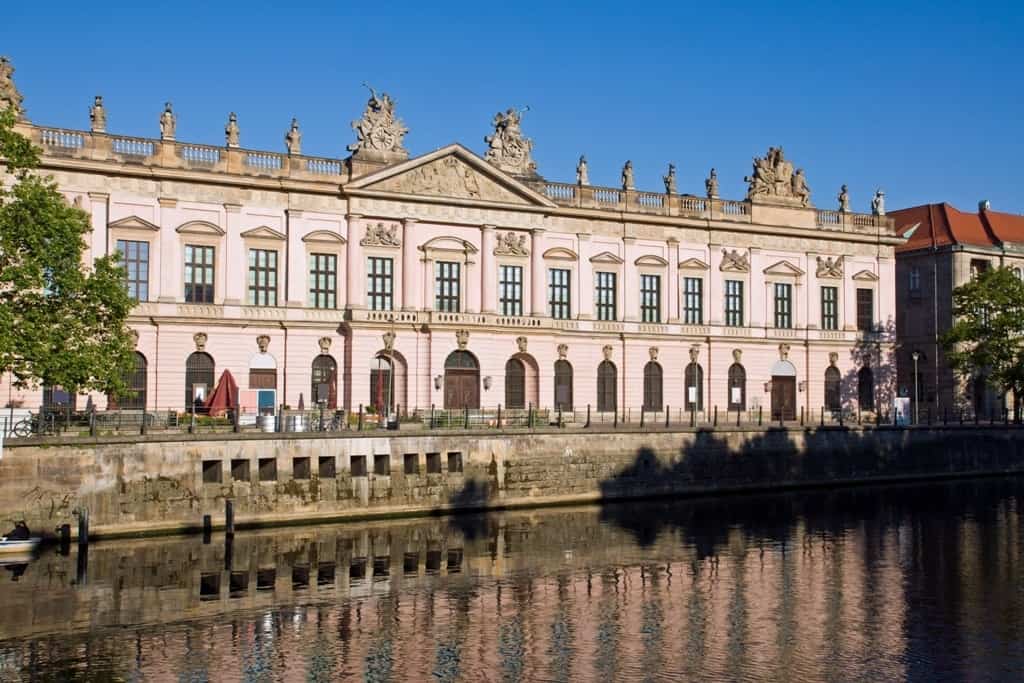
This museum is simply a must for anyone who is interested in German history. They have 7000 artifacts on display here, from the stone age until the modern day. Unfortunately, most of the signs are only in German, but audio guides are available in English. Located in a beautiful old armory building, this museum offers so much to see and experience, you could easily spend hours here!
Brandenburg Gate
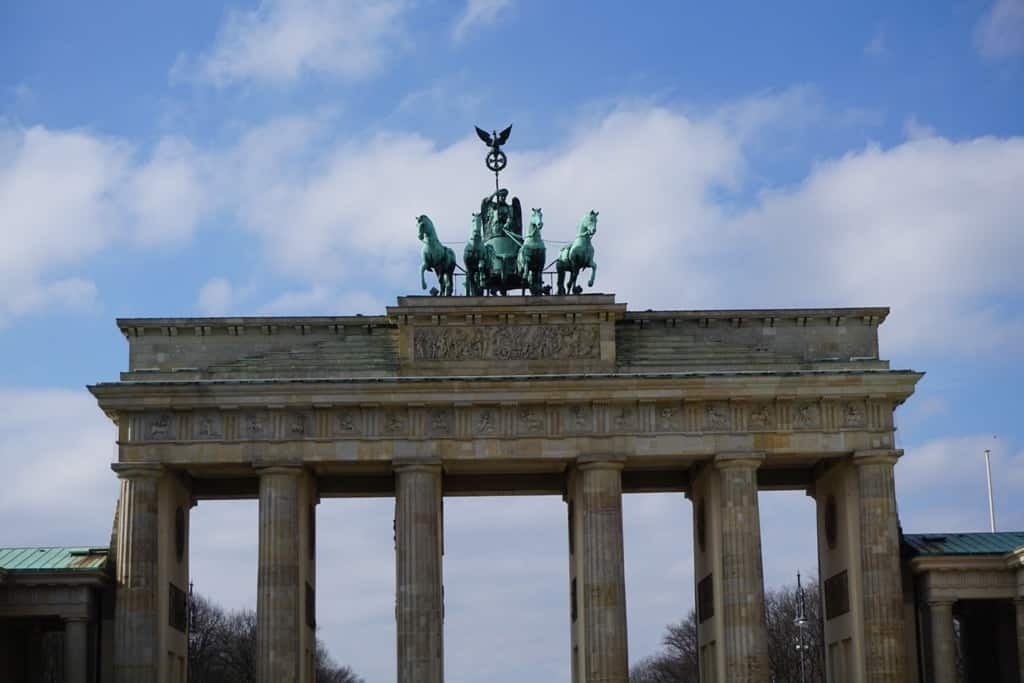
Of course, Brandenburg Gate can’t be missed even if you’re visiting Berlin for a day ! Once right at the border of Berlin’s infamous Wall, this famous landmark provides a perfect photo opportunity for any tourist.
Address: Pariser Platz, located at the end of Unter den Linden
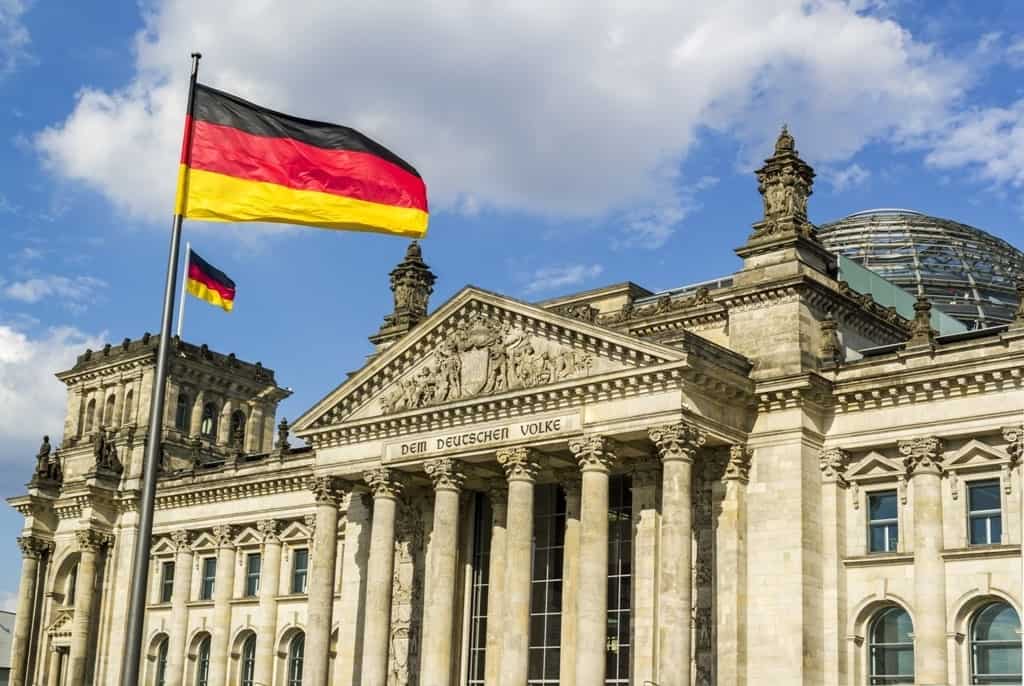
An equally famous Berlin landmark, the Reichstag, is right around the corner from Brandenburg Gate. If you would like to go up to the dome, which I highly recommend, be sure to book it online ahead of time. You may get lucky and take the spot of someone who didn’t show up, but there are no guarantees.
The Holocaust Memorial
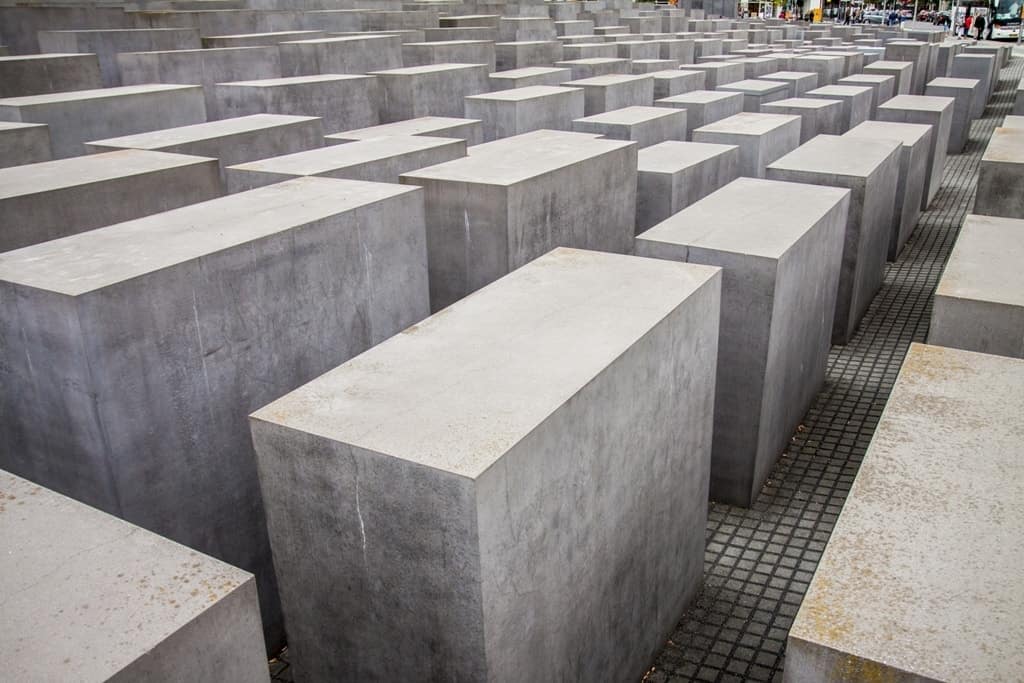
Wandering through the 2711 concrete slabs at the Holocaust Memorial is truly a haunting experience. This work of architectural and sculptural genius gives you the feeling that you’ve lost your way one moment and that the walls are closing in on you the next. Definitely not to be missed.
Hackescher Man Historic facades of Hackescher Markt
After a day of major sightseeing, I hopped back on the S-Bahn at Friedrichstrasse and headed to HackescherMarkt. Located in stylish Mitte, HackescherMarkt is full of boutiques and restaurants, with plenty of street art along the side of the S-Bahn tracks. If you walk along Alte Schönehauser Allee, you’ll also godeeper into design-minded Mitte, which is definitely worth exploring.
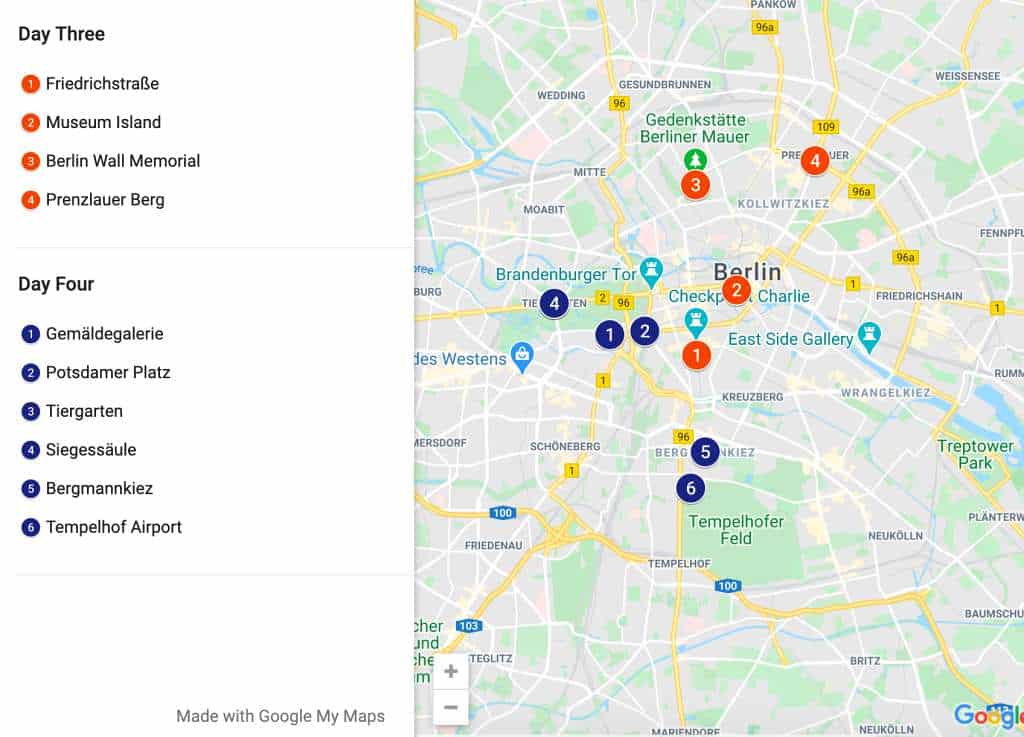
4 Days in Berlin: Day Three
Seeing Berlin by water is simply a must. I was surprised to learn this city actually has more bridges than Venice! You can choose from several different tours, which usually range from one to three and a half hours. I took the one-hour Historic City Cruise and enjoyed it very much. You can board at the pier at Friedrichstrasse/Weidendamm, which is very close to Museum Island, so you can either start the day on the water or take the tour after visiting the museums. The tour ends at the same place as the point of departure.
Click here to book a 2,5 hour boat cruise along the river Spree.
Museum Island
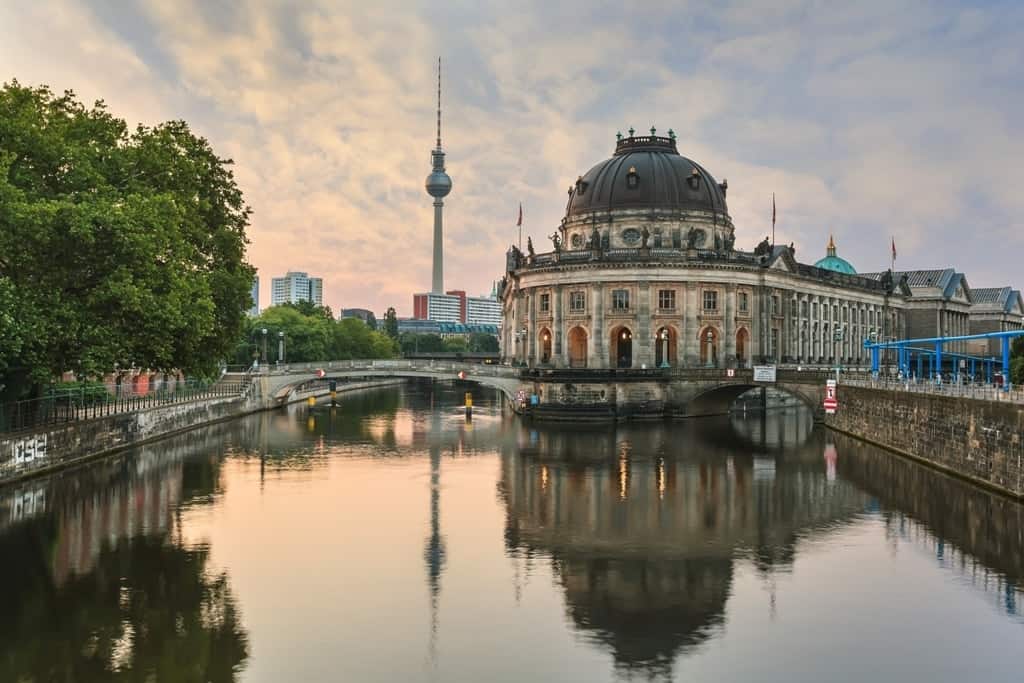
Museum Island is truly any museum lover’s dream. This UNESCO World Heritage Site is home to five world-class museums. These include the Pergamon Museum – buy skip the line tickets here , the Bode Museum, Neues Museum (New Museum) – buy a skip the line ticket here , Alte Nationalgalerie (Old National Gallery), and Altes Museum (Old Museum). I highly suggest buying a day ticket which will get you access to every museum. That way you can pick and choose and enjoy the rich artistic and cultural history this place has to offer.
Berlin Wall Memorial
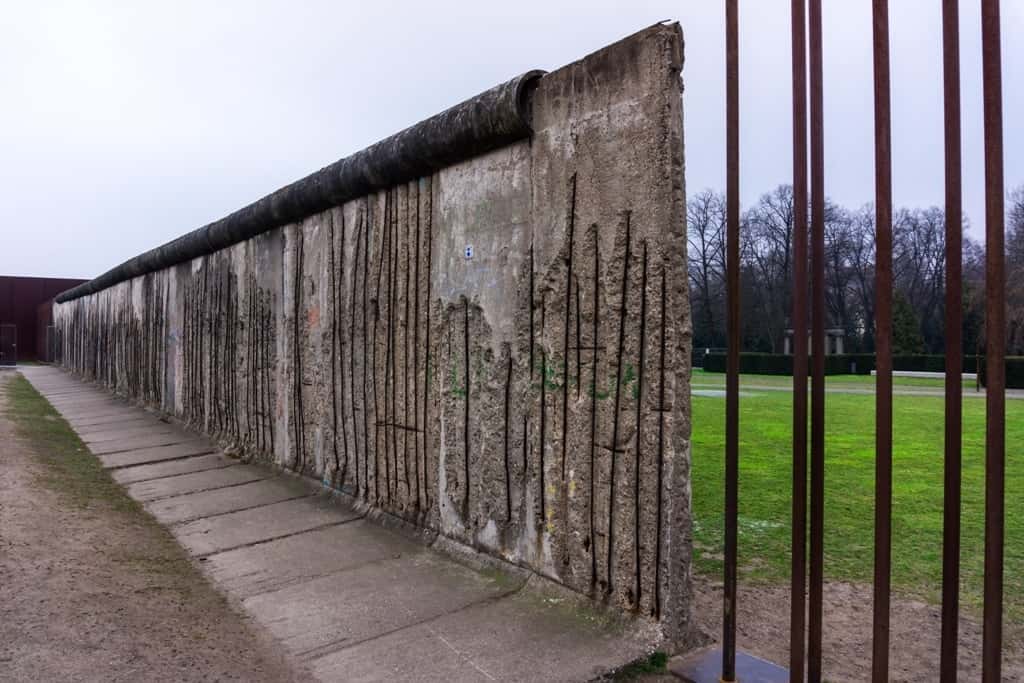
The former Wall in the East Side Gallery is very popular with tourists, but it’s usually overcrowded and very noisy because it’s located on a street with a lot of traffic. The Berlin Wall Memorial is much more lowkey. Here you can see a part of the original Wall, enjoy a sculpture garden, and learn about its history through the multi-media exhibits at the Berlin Wall Documentation Center.
Address: BernauerStraße 111 Opening hours: Tues-Sun, 10 a.m. to 6 p.m. ( Vistor Center and Berlin Wall Documentation Center), Mon-Sun, 8 a.m. to 10 p.m. (open-air exhibition and memorial grounds) Admission: free of charge, tours cost 3.50€/2.50€ reduced, children 18 and younger free
Prenzlauer Berg
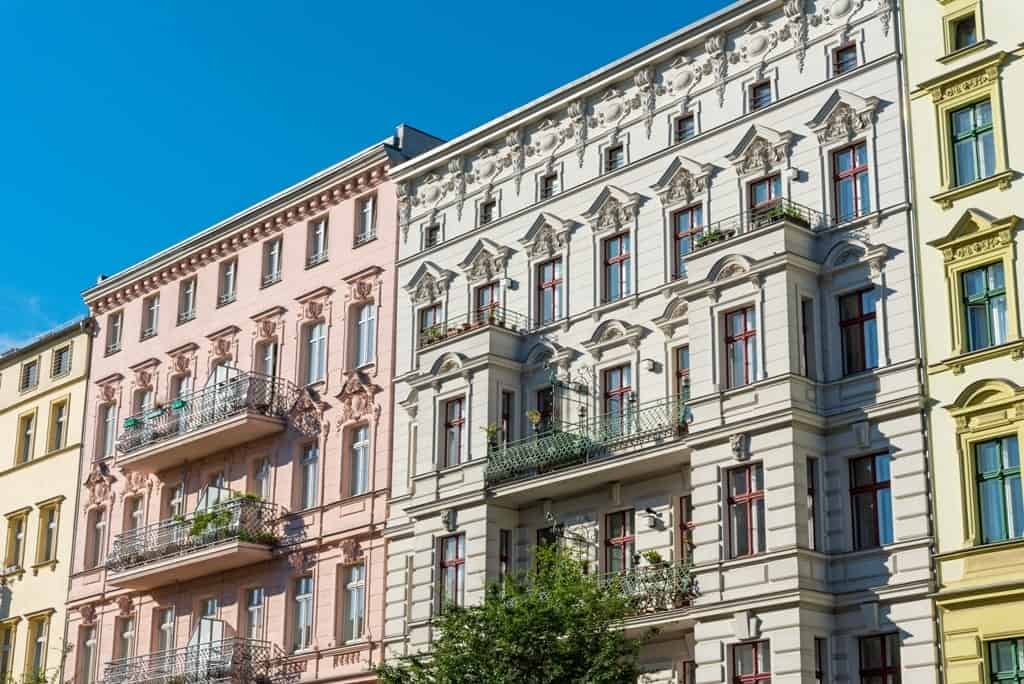
To finish off the day, I suggest exploring the colorful and trendy neighborhood Prenzlauer Berg. With its beautiful old buildings and wide, cobblestone streets, Prenzlauer Berg is popular with young urban professionals and well-to-do city-loving families. Kollwitz Platz (near U-2 station Senefelderplatz) is a popular destination. This square is full of cafes, restaurants, and interesting boutiques. You’ll also find a charming market there on Wednesdays and Saturdays.
4 Days in Berlin: Day Four
Gemälde galerie.
The Gemälde Galerie is located in the Kulturforum, which was West Berlin’s answer to Museum Island when the city was still divided. Make sure you don’t miss it! The museum is brimming with the works of the old masters, such as Rembrandt, Rubens, and Botticelli hung in beautiful, light-filled rooms. It’s also usually less crowded than the art museums on Museum Island, which can make the experience more relaxing.
Address: Matthäikirchplatz Opening hours: Tues-Sun, 10 a.m. to 6 p.m. (Thursdays until 8 p.m.) Admission: 10€ /5€ reduced
Potsdamer Platz
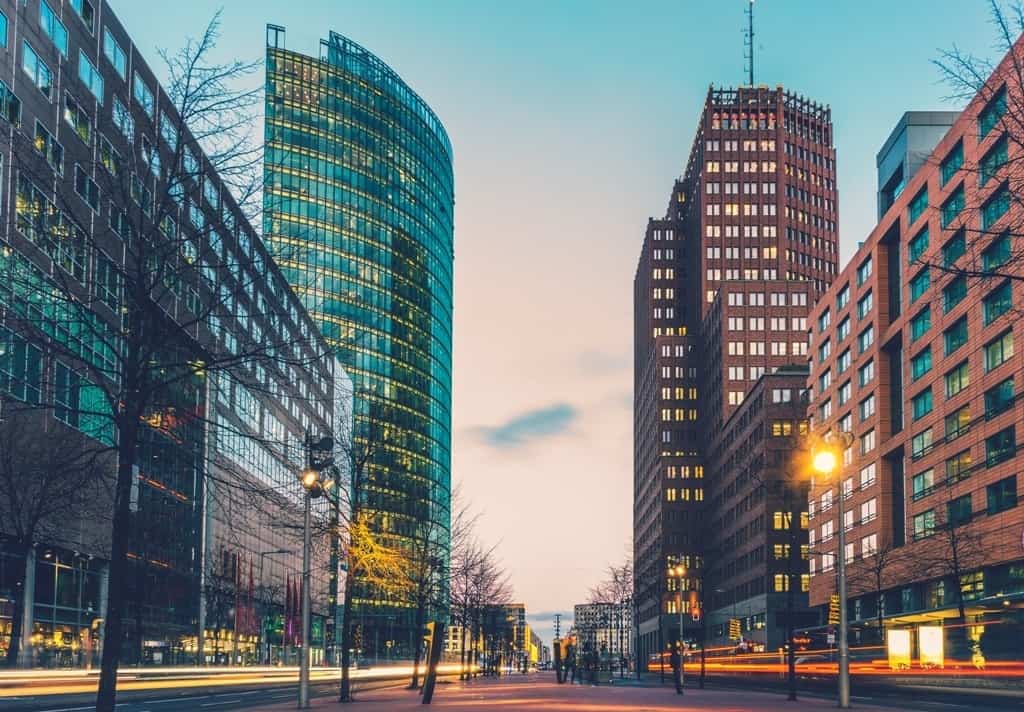
Potsdamer Platz, home to most of Berlin’s only skyscrapers, is just up the street from the Gemälde Galerie. This place is also historically interesting. A bustling transportation hub before the war, Potsdamer Platz was heavily bombed and later completely flattened. When the Wall was up, the area was part of the “death strip”, a no man’s land where only East German border guards were allowed to go.
Today’s business district was designed and built in the mid-90s. Check out the mall and the fountains and maybe have a drink at one of the touristy restaurants at Sony Center, where you can also watch English original movies at the Cine Star movie theatre.
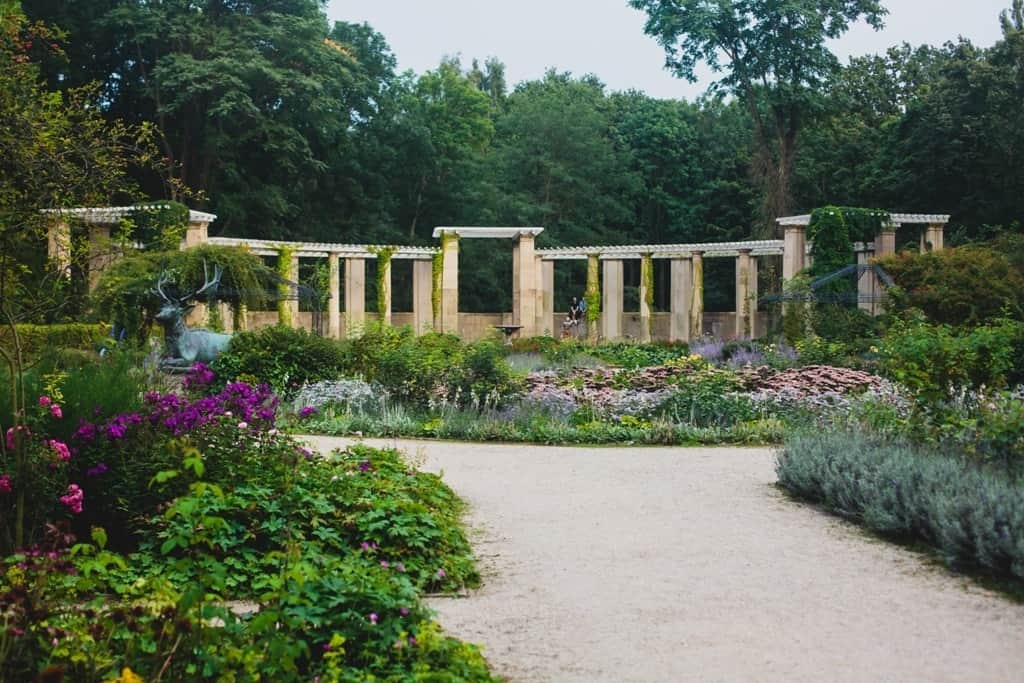
Although Berlin has many great parks, Tiergarten Park is one of the oldest and most impressive. Originally designed as royal hunting grounds, Tiergarten is now a public park with many beautiful tree-lined paths, sunbathing lawns, tranquil pools and fountains, and various sculptures and memorials.
Bellevue Palace, the official residence of the President of Germany, is also located in the park, as is Haus der Kulturen der Welt, multi-cultural art and exhibition center. This building is an excellent example of original mid-century architecture and is perched right at the banks of the River Spree.
Siegessäule
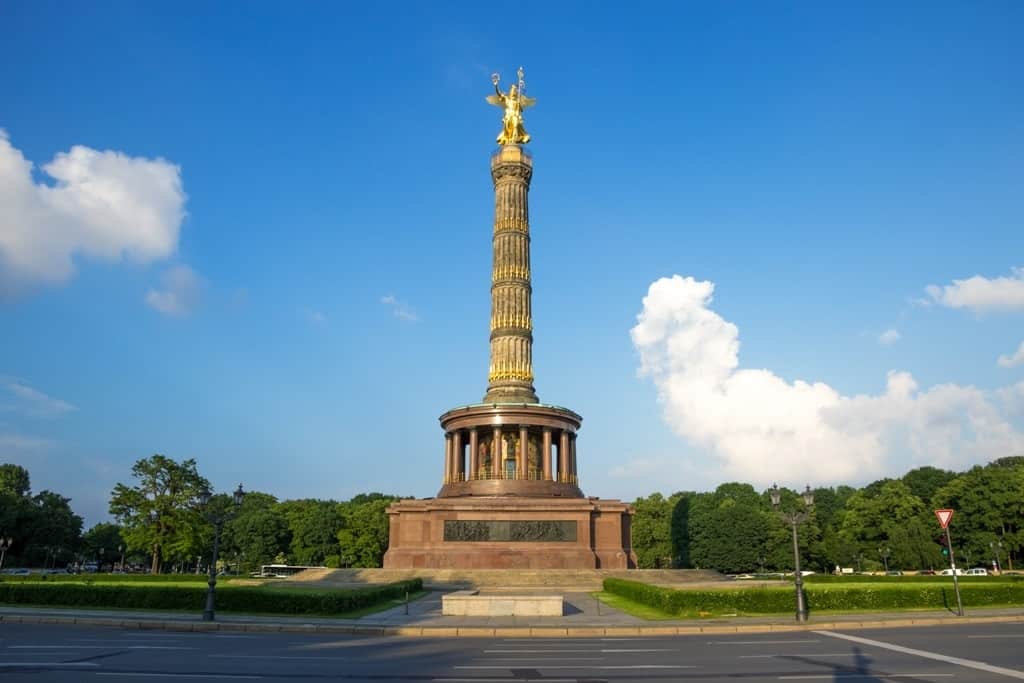
At the heart of Tiergarten, you’ll also find the Siegessäule (the Victory Column). This beautiful column features a gilded bronze statue of Victoria, the goddess of victory, who is perched on the top. With 258 steps, the tower is bit daunting to climb and requires a reasonable level of fitness. However, the panoramic views you’ll have at the top make the trek well worth it!
Kreuzberg: Bergmannkiez
Arguably the “Prenzlauer Berg of the West”, Bergmannkiez is the neighborhood located around Bergmannstraße in Kreuzberg. Popular with urban families, Bergmannkiez is also home to a large concentration of Green Party voters, as you can see by a large number of organic grocery stores in the area.
Bermannstraße is full of many small shops, cafes, and restaurants very popular with tourists. To see where the locals hang out, check out the Markthalle at Marheinike Platz, a market hall with plenty of food stands as well as fresh produce, cheese, and meat for sale. Bergmannstraße is located near the U-7 U-Bahn stations Gneisenaustrasse and Mehringdamm.
Tempelhof Airport
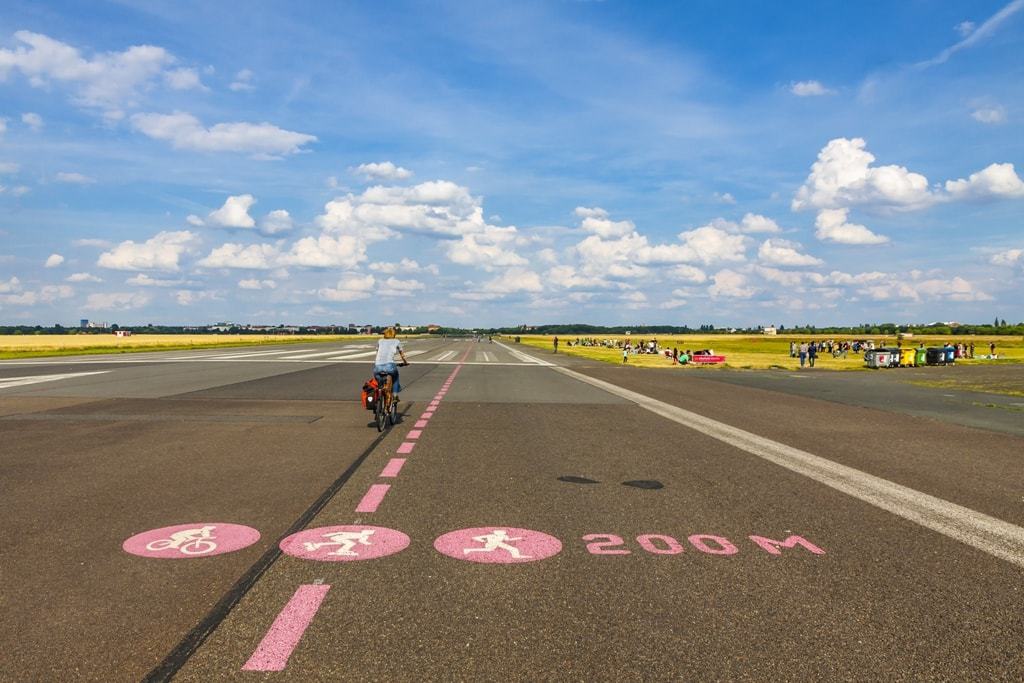
From Bergmannstraße, take a stroll up Friesenstraße. This cobblestone street will lead you through the charming ChamissoKiez, full of lovely, ornate Altbau-style buildings, and many great restaurants and unique boutiques. Once you’ve reached the end of the street, cross Columbiadamm. The entrance to Tempelhof Airport is about a five-minute walk to the left.
This former airstrip is now a large public park. It’s an amazing feeling to wander along a place where airplanes used to land! The expansive open space here gives you a similar feeling to spending a day at the beach. Rent a bike, pack a picnic, or have a snack and a drink at the beer garden in the park. Either way, you are sure to enjoy the unique experience you will have here.
Where to Eat in Berlin
Monsieur Vuong
This popular Vietnamese restaurant has been an institution in Mitte for many years. The place has a vibrant atmosphere and delicious, inexpensive food. They don’t take reservations, so expect a wait of up to an hour during dinnertime.
Address: Alte SchönhauserStraße 46 Opening hours: Mon-Thurs, 12 a.m. to 12 p.m., Fri-Sun 12 a.m
Altes Zollhaus
AltesZollhausserves up gourmet German cuisine in a beautiful German country-style Fachwerk house located directly on the Landwehr canal in Kreuzberg. Reservations recommended.
Address: Carl-Herz-Ufer 30 Opening hours: 6 p.m. to 12 a.m., closed on Sunday and Monday
Café Einstein
Although Café Einstein now has several locations throughout the city, the original is located inKurfürstenstraße in the district Schöneberg. Housed in a Neo-Renaissance villa, Café Einstein is a chic, Viennese-style café and a West Berliner institution. The apple strudel is to die for, and the schnitzel is also very good.
Address : Kurfürstenstraße58 Opening hours : every day from 8 a.m. to 12 p.m.
Lon Men’s Noodle House
Don’t let its hole in the wall appearance fool you:Lon Men’s Noodle House serves up amazing Taiwanese-style cuisine! Although everything tastes great here, the dim sum and fried dumplings are especially delicious. The place is very popular, so expect a wait of up to thirty minutes if you come at peak times. Kantstraße is also Berlin’s unofficial China town, and you’ll find many import export shops here as well as great Chinese restaurants, like the well-known institution Good Friends, which is just up the street from Lon Men’s Noodle House.
Address : Kantstraße 33 Opening hours: 12 a.m. to 10:30 p.m.
Lutter & Wegner
This historic wine house was founded in 1811 and serves up seriously scrumptious Austro-German cuisine. Like Café Einstein, this restaurant also has several branches in the city, but this is the original. Make sure you take a stroll across the beautiful square at Gendarmenmarkt, which is full of historic architecture. The Konzerthaus is located here, and street musicians playing classical music often fill up the square with beautiful sound at all hours of the day.
Address: Charlottenstraße56 Opening hours: 11 a.m. to 12 a.m.
Where to Stay in Berlin
25 hours Hotel Bikini Berlin
Some of the rooms of this stylish but affordable hotel look out over Berlin Zoologischer Garten, so you can watch monkeys at play while relaxing in bed.
Click here for more information and to check the latest rates.
Hotel Johann
This charming hotel is on a quiet side street near the Landwehr canal in Kreuzberg. The rooms are comfortable, with a mix of modern and vintage décor. Great breakfast as well!
Regent Hotel
If five-star luxury hotels are more your style, then check out the Regent Hotel. This hotel has elegant furnishing, impeccable service, and a fabulous location directly overlooking the historic Gendarmentmarkt.
Honigmond Hotel
Located in Prenzlauer Berg, this boutique hotel has plenty of old world charm mixed with modern amenities and truly excellent service.
Click here for more information and to check the latest rates
Sharing is caring!
Leave a Comment Cancel reply
Save my name, email, and website in this browser for the next time I comment.
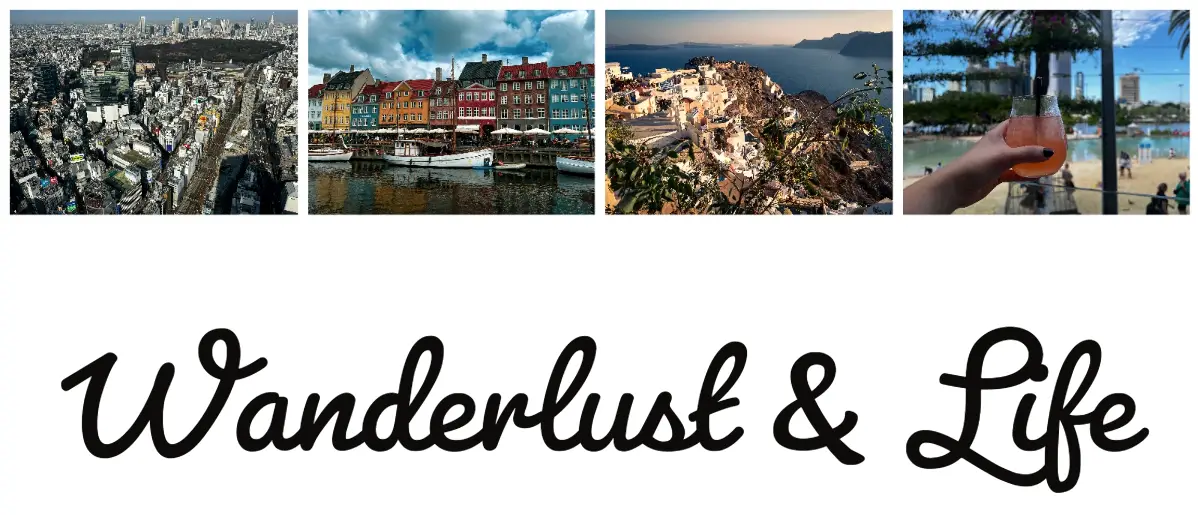
3 days in Berlin – everything you need to know to plan the perfect trip
Berlin has been on our bucket list for a very long time. You know one of those places that you keep meaning to visit, but life just gets in the way. Attracted by its effortlessly cool persona, and fascinating history, eventually we realised that if we didn’t go ahead and book it, we would never go. And so we set off to spend 3 days in Berlin, exploring the attractions, eating the food, and admittedly trying quite a few cocktail bars. Here is our guide to everything Berlin, as well as our 3 day Berlin itinerary to help your plan your own trip.
Disclaimer: This post does contain some affiliate links, so if you do purchase anything we may get a small commission at no extra cost to you.
Basic Information for spending 3 days in Berlin
Starting your 3 days in berlin, tips for planning your 3 day berlin itinerary, getting around during your 3 days in berlin, where to stay during your 3 days in berlin, brandenburg gate.
- Natur-Park Südgelände
East Side Gallery
Hackescher markt , topography of terror, berliner dom, park inn hotel, charlottenburg palace, berggruen museum, museum island, checkpoint charlie, tajikistan tearoom, traditional german food, fairytale bar, maclaren’s pub, travelling as a couple – romantic things to add to your 3 day berlin itinerary, sample 3 day berlin itinerary, how much money do i need for my 3 day berlin itinerary, is 3 days in berlin enough, when is the best time of year to plan your 3 day berlin itinerary, so should i spend 3 days in berlin, if you have a chance check out some of our other posts on eastern european cities..
Before we get to our 3 day Berlin itinerary here is a little bit of background information to get your acquainted with the city.
Country: Germany
Languages Spoken: German
Currency: Euro
Famous for: It’s turbulent history, and utterly cool present
Visit if you like: History and cool bars
If you are deciding between Hamburg and Berlin here is a helpful guide.
Before we dive into our Berlin itinerary you might be wondering how to get to Berlin in the first place. Most people arrive in Berlin via the city’s main airport which is Berlin Brandenburg Airport.
Once here you can hop on the Airport Express which will take you into the centre of Berlin. The station is located in Terminal 1 and trains are frequent throughout the day. It takes about 30 minutes to get to central station, ad is pretty cheap too at only 3.60 Euros.
There are other trains you can get as well if the Airport Express isn’t ideal you can hop on the S-Bahn, although this does take around 50 minutes to get you into the centre of Berlin.
Before jetting off to Berlin here are a couple of things that you should know.
- Some bars and restaurants are cash only so make sure you have some cash on you especially if you are used to paying everything on card. You could end up like us ordering food and then one of us having to run around Berlin trying to find a cash machine to pay for the meal. And of course the closest ATM was not working!
- Don’t stick to traditional German food when eating in the city, branch out and share in the multiculturalism of the city.
- Day drinking isn’t really a thing in Berlin. Don’t expect to sip wine and watch the world go by in the middle of the day.
- Bars tend to open later, so if you are after a few pre dinner drinks, do your research and make sure the bar you are planning to visit is actually open. And don’t show up just after it opens, you will more than likely be the only people there!
- Jaywalking also isn’t a thing!
Wondering if Berlin is worth visiting ? Here is an article to help you decide.
Berlin might be massive, but luckily the transportation networks in the city are fantastic. The most common way to get around is by using the U-Bahn which is an underground train network similar to the Subway in New York. The U-Bahn operates about 10 different lines, to pretty much every corner of the city.
There is also the S-Bahn if you are wanting to travel to the outskirts of Berlin. Whilst it might not be as frequent it is still pretty reliable.
We also caught the tram a few times in Berlin, although these mostly run through what was once classed as East Berlin.
The good news is that if you buy a ticket it will be valid on all forms of public transport in the city, provided you are travelling in the zones you specified.
You can purchase single tickets on public transport or purchase a 24 hour, or 7 day ticket . These tickets will give you access to various modes of public transport within a certain zone range. So for a 3 day Berlin itinerary, you can purchase a 24 hour ticket on each day you are there.
When we started looking at accommodation for our 3 days in Berlin, truth be told we felt so overwhelmed. Here is a breakdown of the different areas.
This is the area where a lot of the tourist attractions are, like the Berlin Wall and the Brandenburg Gate. There are also a number of restaurants and bars in this area, making it a good base for your 3 days in Berlin. If you are a first-time visitor we recommend staying here.
Kreuzberg is kind of the more alternative district in Berlin. It’s very hip and happening, and nightlife here is amazing. If we ever go back to Berlin to be honest we would probably stay around here, just because of the bars and restaurants that we want to try. It’s not too far from the centre of Berlin either so it’s good if you want to experience some nightlife, but also stay close to the tourist attractions. The accommodation in this area tends to be quirky air bnb’s and boutique hotels.
Prenzlauerberg
This is a more laid back residential area, with plenty of cafes and wine bars around. It’s not super touristy either, so makes a change from the chaos of Mitte. It’s a good place for families, or people who want to go at their own pace. It’s also not too far from the main attractions in Berlin, and well connected in terms of transport.
Friedrichshain
Friedrichshain has a hip and more gritty vibe that Kreuzburg. It’s also got some of the best nightlife in the city, so if you are looking to dance the night away this is probably the area for you.
What to do over 3 days in Berlin
With so much to see and do there is a lot to pack in to your 3 day Berlin itinerary. The good news though is that public transport is easy to negotiate and many of the key attractions are close together.
Our top tip for a long weekend in Berlin is to make sure that you visit the Reichstag. This is the seat of German Parliament (the Bundestag), in Berlin. You do need to register online for tickets in advance and we highly recommend that you do this as soon as you start to plan your Berlin itinerary to avoid missing out on your selected dates. The good news is a visit to the Reichstag is absolutely free.
When you arrive at your selected time slot and pass through security you are escorted by lift to the base of the famous glass dome. Here you can take your time climbing to the top via the slanted walkway, and admire the views of Berlin in the process. There are also a number of parliament style tours you can do to get to grips with the area.
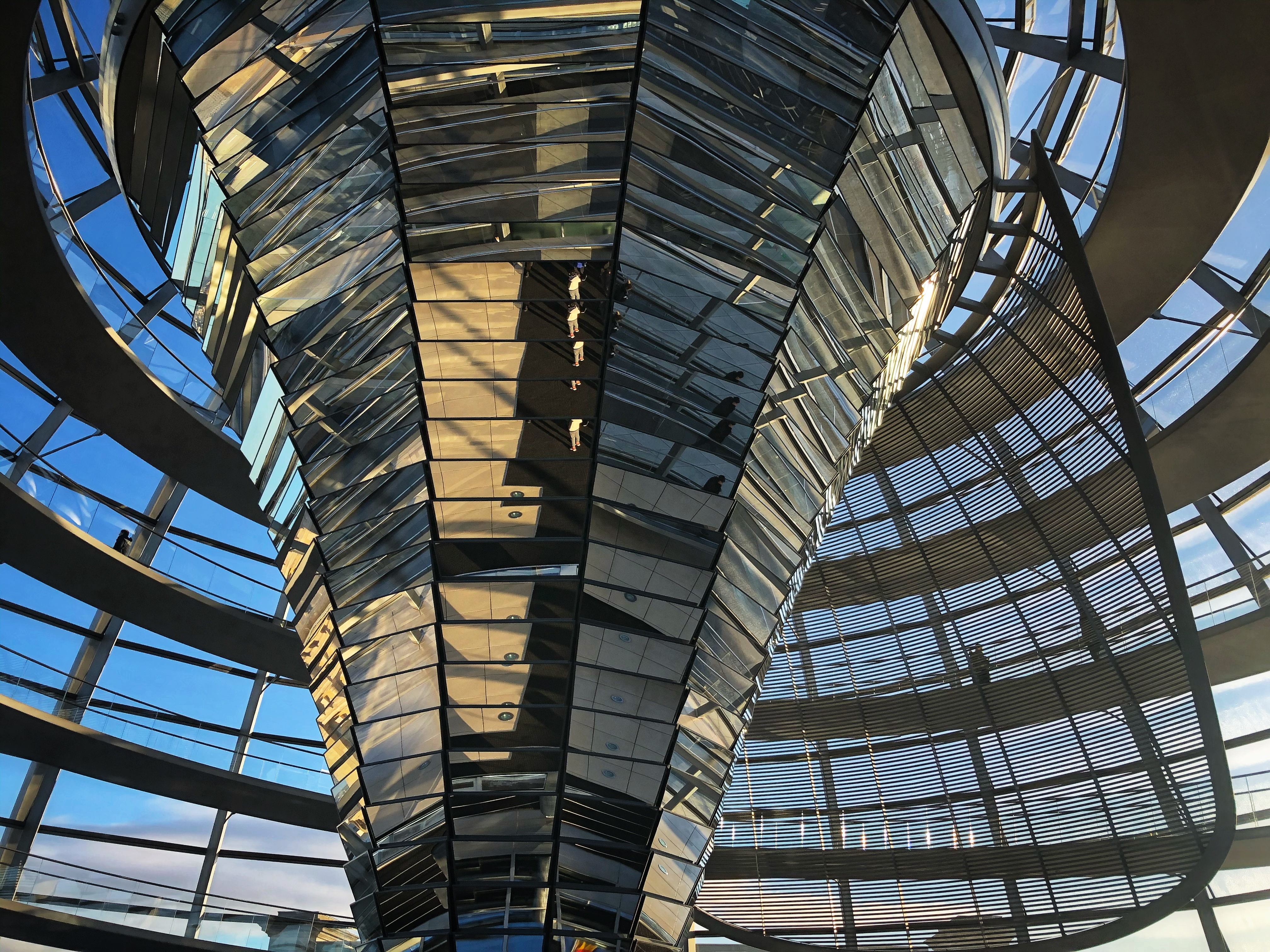
Another must for your 3 days in Berlin has to be the Brandenburg Gate, which is only a short walk from the Reichstag. It is arguably one of Berlin’s most recognisable attractions. It is now synonymous with peace and unity, but during the Cold War it drew visitors who used it as an observation point to get a sneaky glimpse at life on the other side of the so called iron curtain.
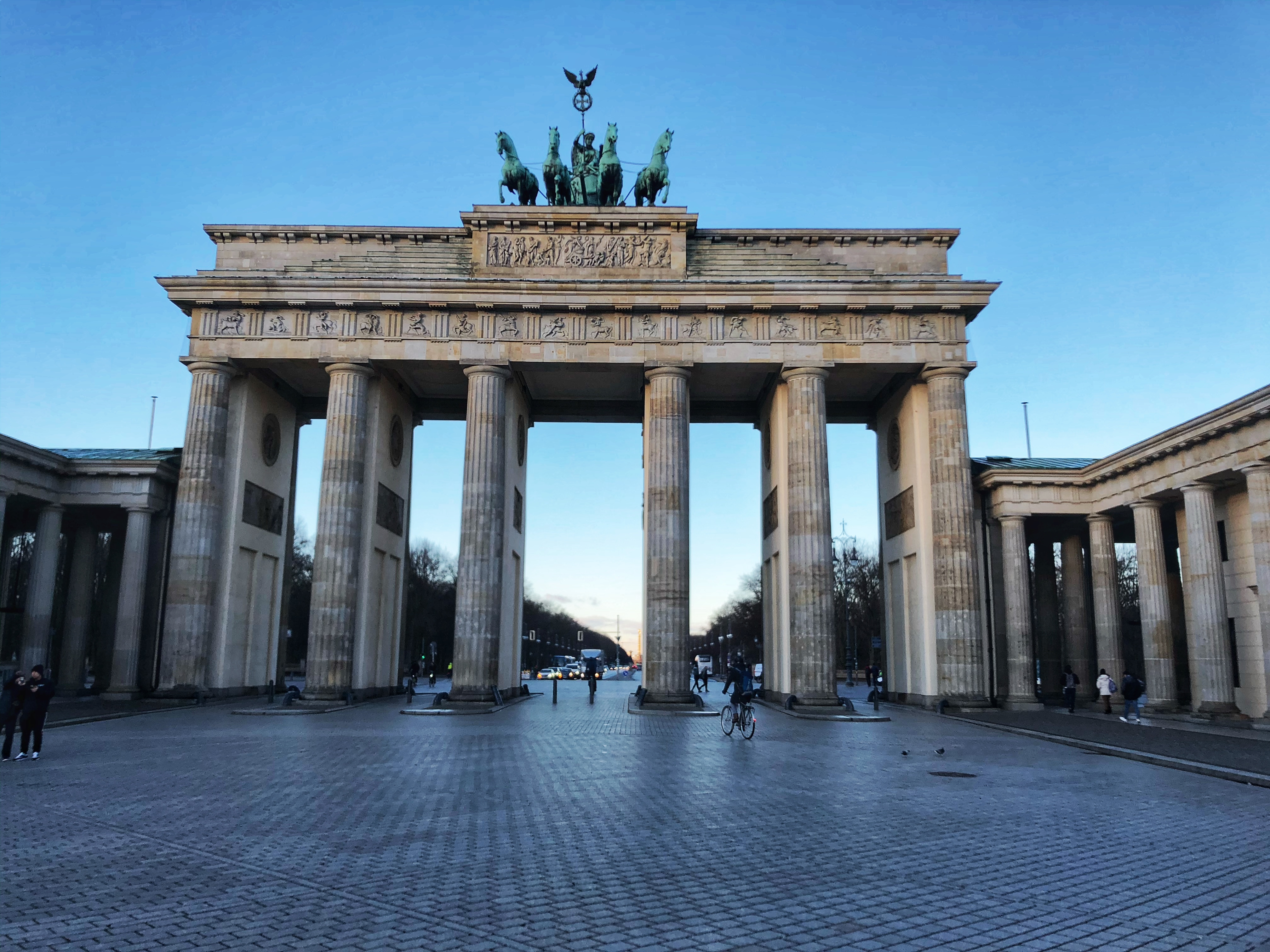
Natur-Park Südgelände
For something a little bit different during your 3 days in Berlin, and also slightly less touristy take a trip to the Schoneberg district and visit a park that was once a railway yard. Here you will find decaying buildings, overtaken by nature, as well as some cool sculptures and art installations. It makes for a really nice early morning walk, particularly if you want a break from the hustle and bustle of Berlin city life. It is also a really cool place to take some edgy pictures .
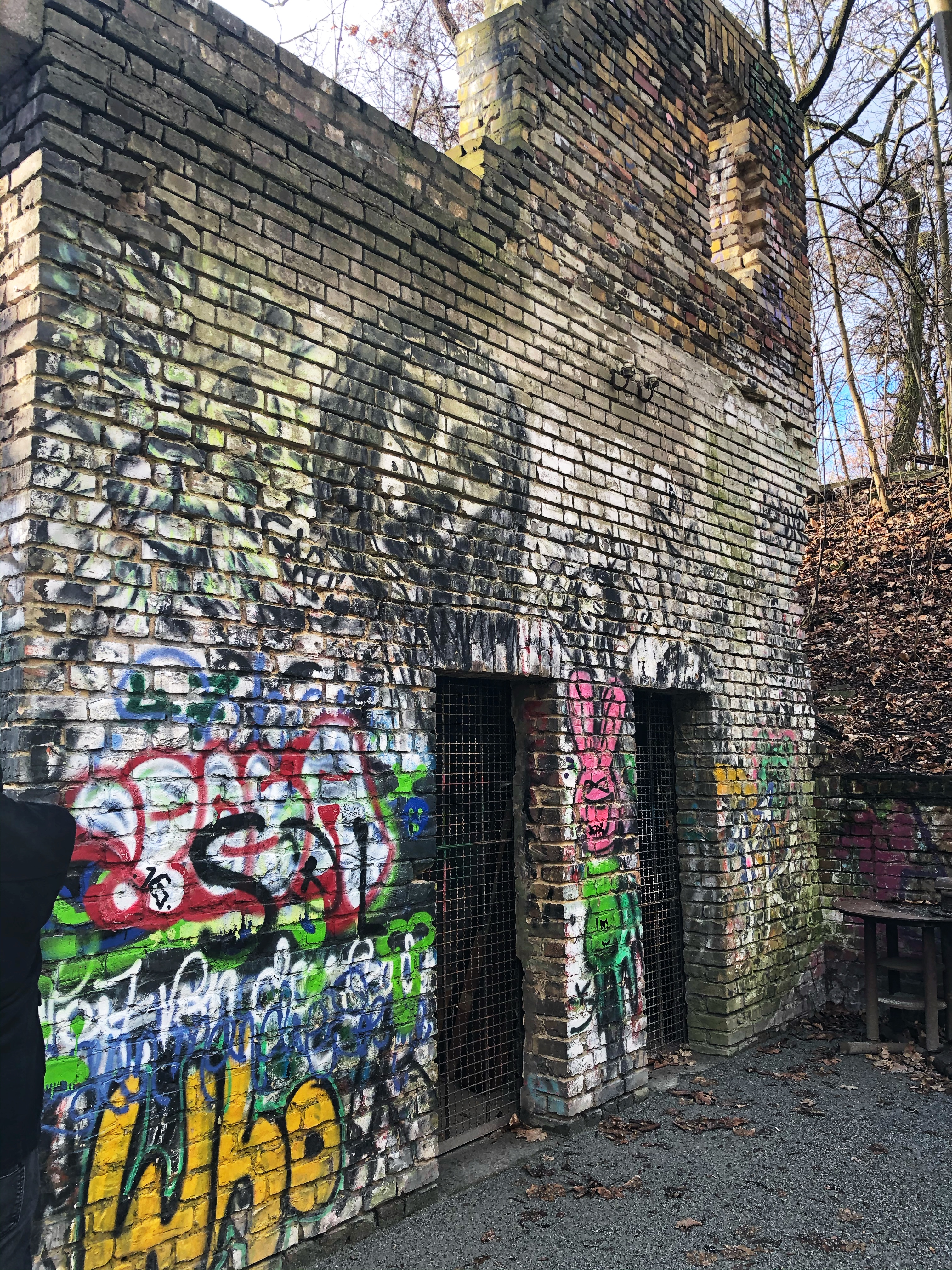
The East Side Gallery is an another must to add to your 3 day Berlin itinerary. Spanning a whopping 1.3 kilometres the gallery is apparently the longest open air gallery in the world. It is also the longest continuous section of the Berlin Wall that exists today. This is another free attraction in Berlin, although you may want to fork out and pay for a guided tour of the wall to learn more about the history and the various artworks.
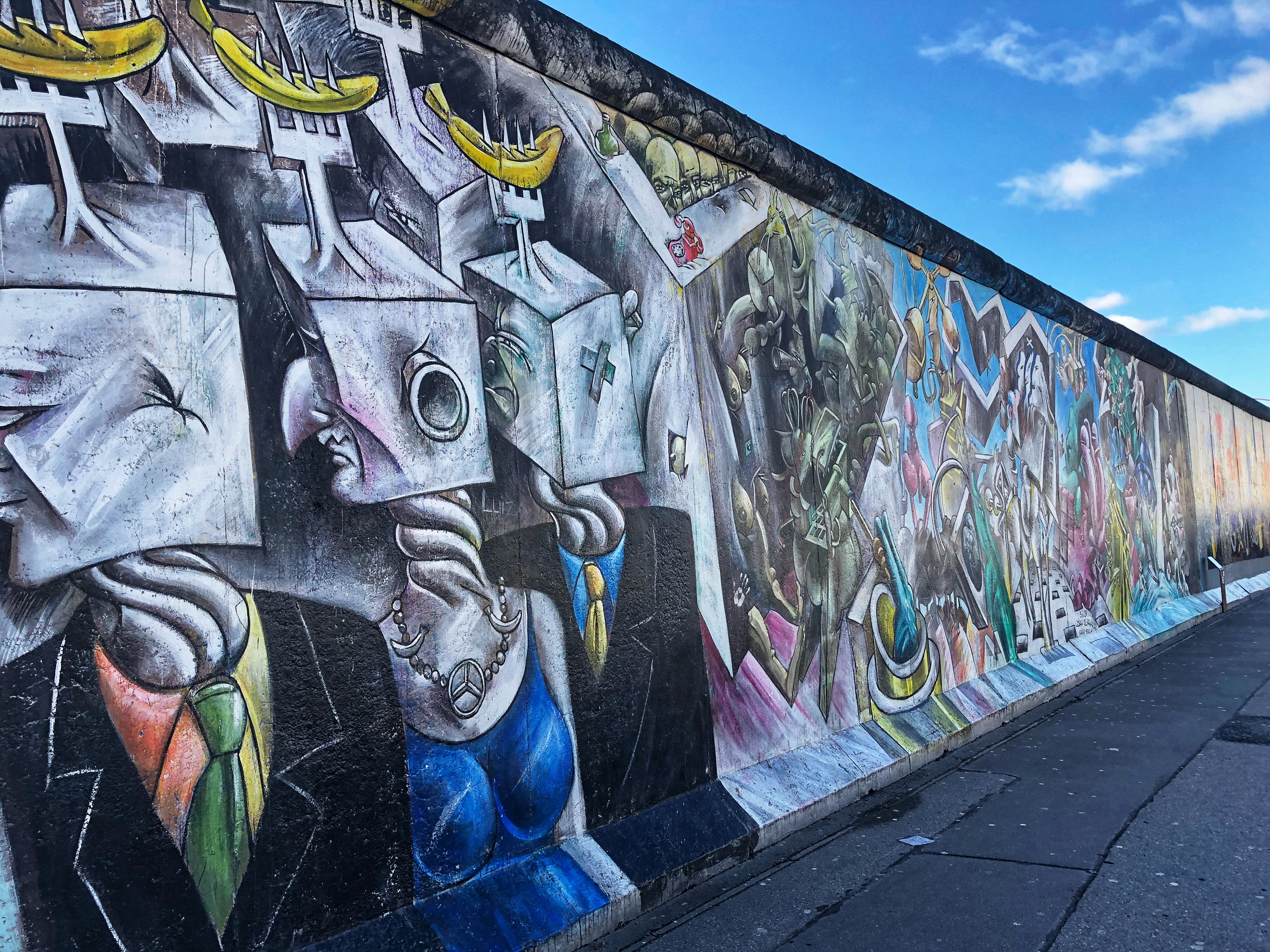
Located in the Mitte neighbourhood of Berlin, the Hackescher Markt is a great place to explore with several galleries, and shops. Our highlight in true Berlin style was the Courtyard of Haus Schwarzenberg, a space filled with galleries, coffee shops, and lots of graffiti and artwork.

You can’t plan a 3 day Berlin itinerary without a visit to the former Gestapo headquarters now know as the Topography of Terror Museum. The museum documents the horrors of the Nazi regime and provides and in depth look at the rise and fall of the Nazi party.

One of the grander buildings in Berlin is the Berliner Dom, or the Berlin Cathedral, located on Museum Island. The building of the cathedral was actually only completed in 1905, and needed to be reconstructed after suffering damage during WWII. You can go inside for a small fee (around 7 Euros) or admire it from the outside for free.

The DDR museum isn’t your typical museum, with several interactive displays, and even a room decorated like an East Berlin style apartment. The museum is located just across from the Berliner Dom, and really gives an insight into life in East Berlin. If you only visit one museum during your 3 days in Berlin make it this one. It was so much fun and we even got to sit in a Trabant. Tickets can be purchased in advance or on the day.
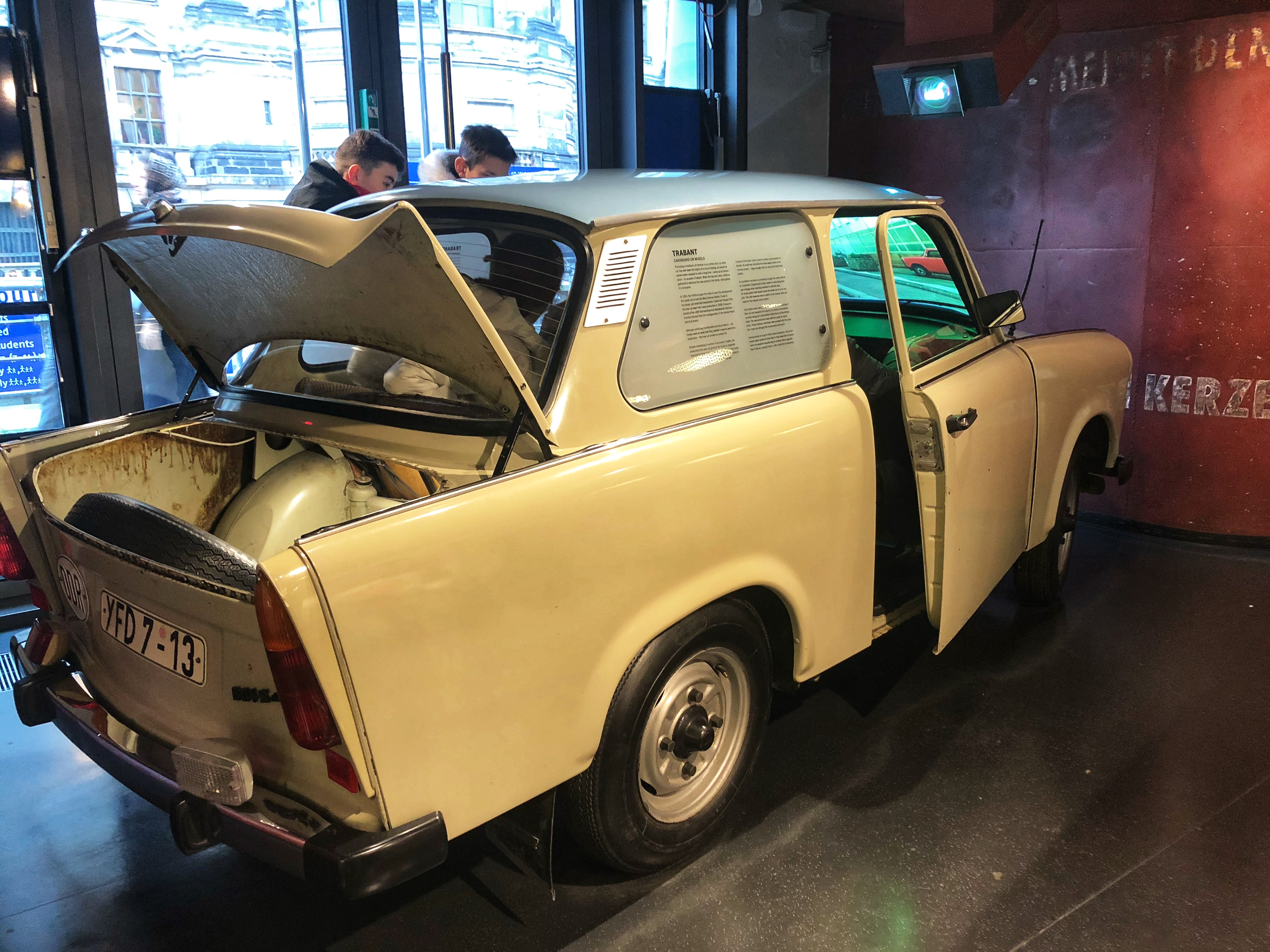
A Park Inn Hotel normally wouldn’t make it to our list of attractions, but then again Berlin is no normal city. A lot of tourists head to the TV Tower to take in the panoramic views of the city, but for a fraction of the price why not visit the Park Inn Hotel instead. Members of the public can visit for 6 Euros, and the best thing about it is that not only do you get to experience panoramic views of Berlin, but you also get to include the TV tower in these views.
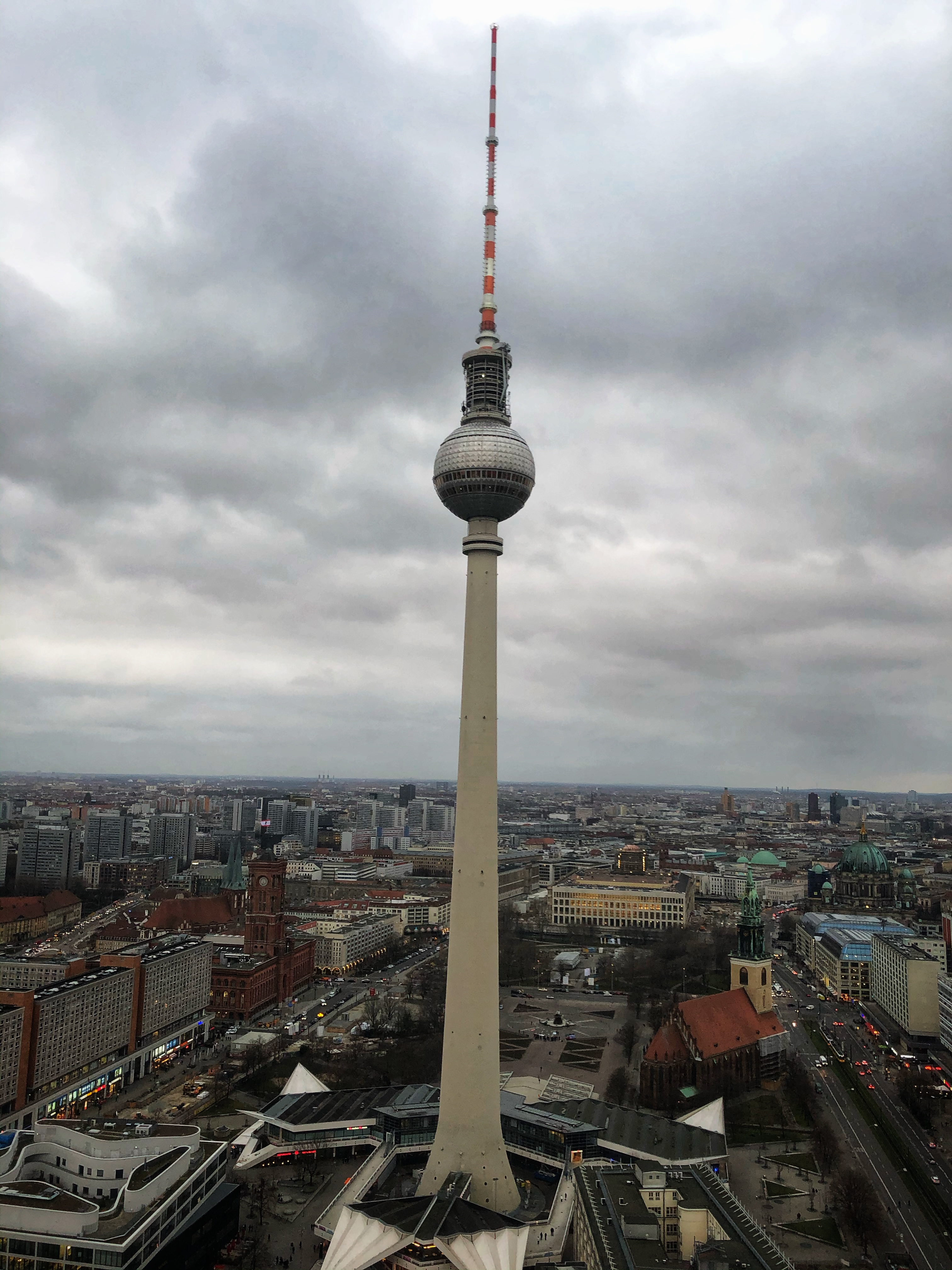
Whenever we visit Europe we always have this image of old historical buildings and palaces. Berlin isn’t really like that and can be a bit grey at times, which makes sense considering it’s history.
For a slight change of scenery you should try to plan a visit to Charlottenburg Palace into your 3 days in Berlin. It is a Baroque style palace with a lavish garden which is free to explore. You do need to pay to explore the inside however. We were quite content just strolling around the outside and exploring the gardens, so even if you don’t plan to go in it is still worth a visit.
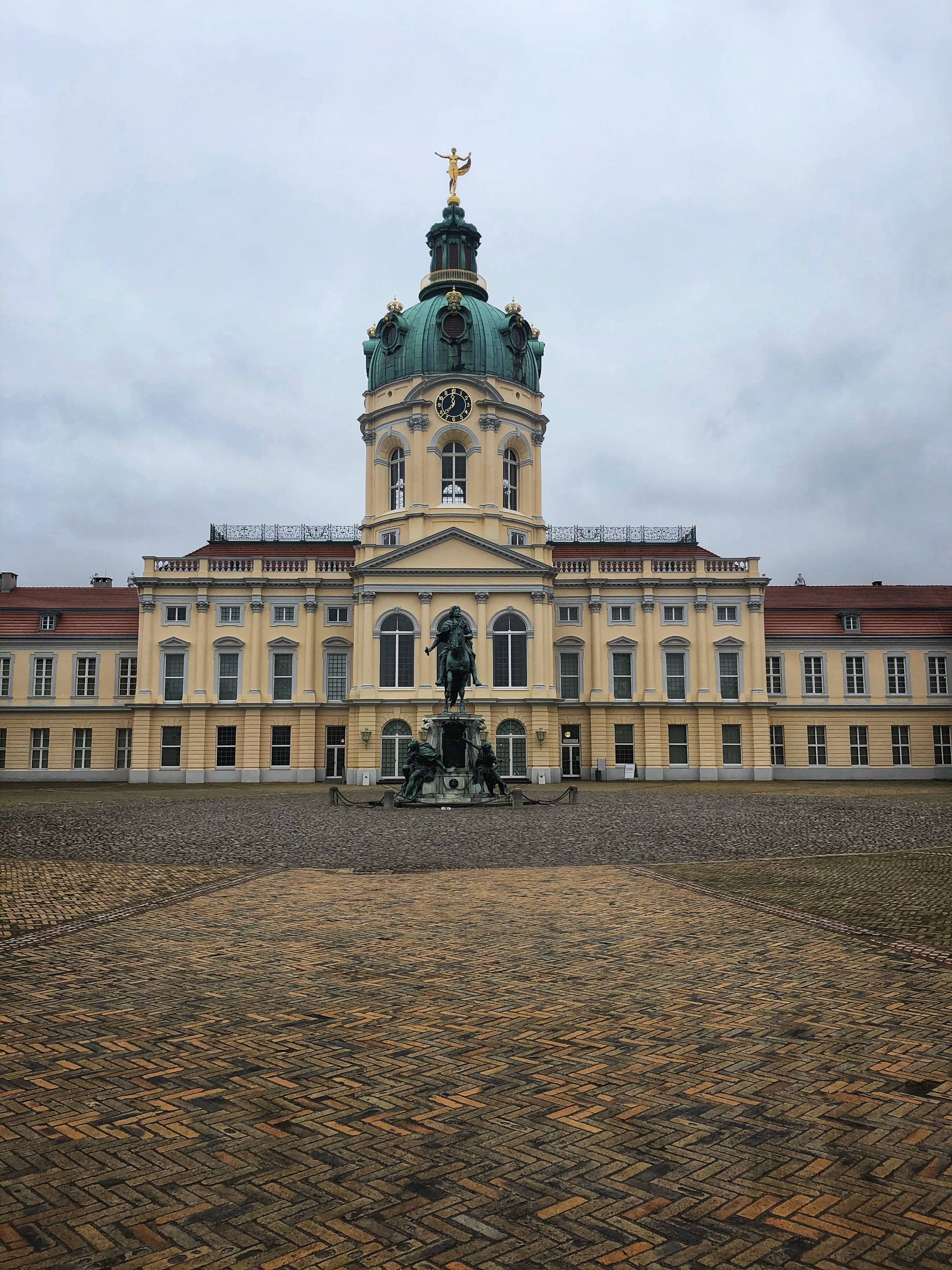
While we chose not to explore the inside of the Charlottenburg Palace, we instead decided to visit the Berggruen Museum, only a short walk from here. The museum houses a number of modern art pieces including several by Picasso. The collection was put together by Heinz Berggruen who left Nazi Germany in 1936 for the US.
If you love wandering around museums, then Museum Island might be for you. Home to five large museums you might actually need to add a whole extra day to your 3 day Berlin itinerary if you want to see them all. Considering we only had 3 days in Berlin we opted for the Pergamon Museum which also happens to be the most popular.
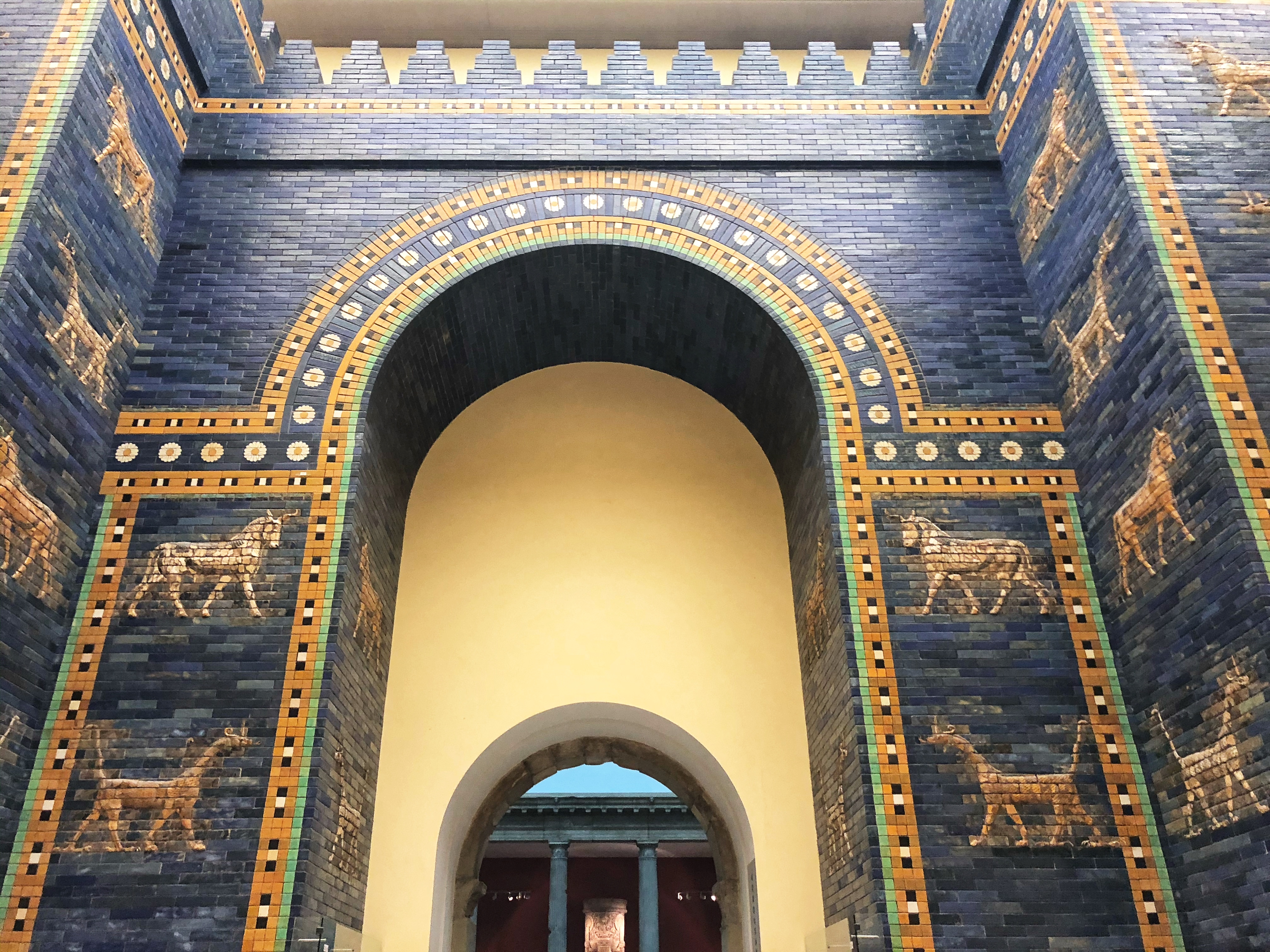
I’ve added Checkpoint Charlie to this list, because it is one of those places that you have probably heard so much about before visiting Berlin. We found it slightly overrated, and there is something really strange about visiting a place of historical significance surrounded by KFC and a McDonalds. Nevertheless it is worth a visit for a quick peek before heading swiftly on to your next attraction.
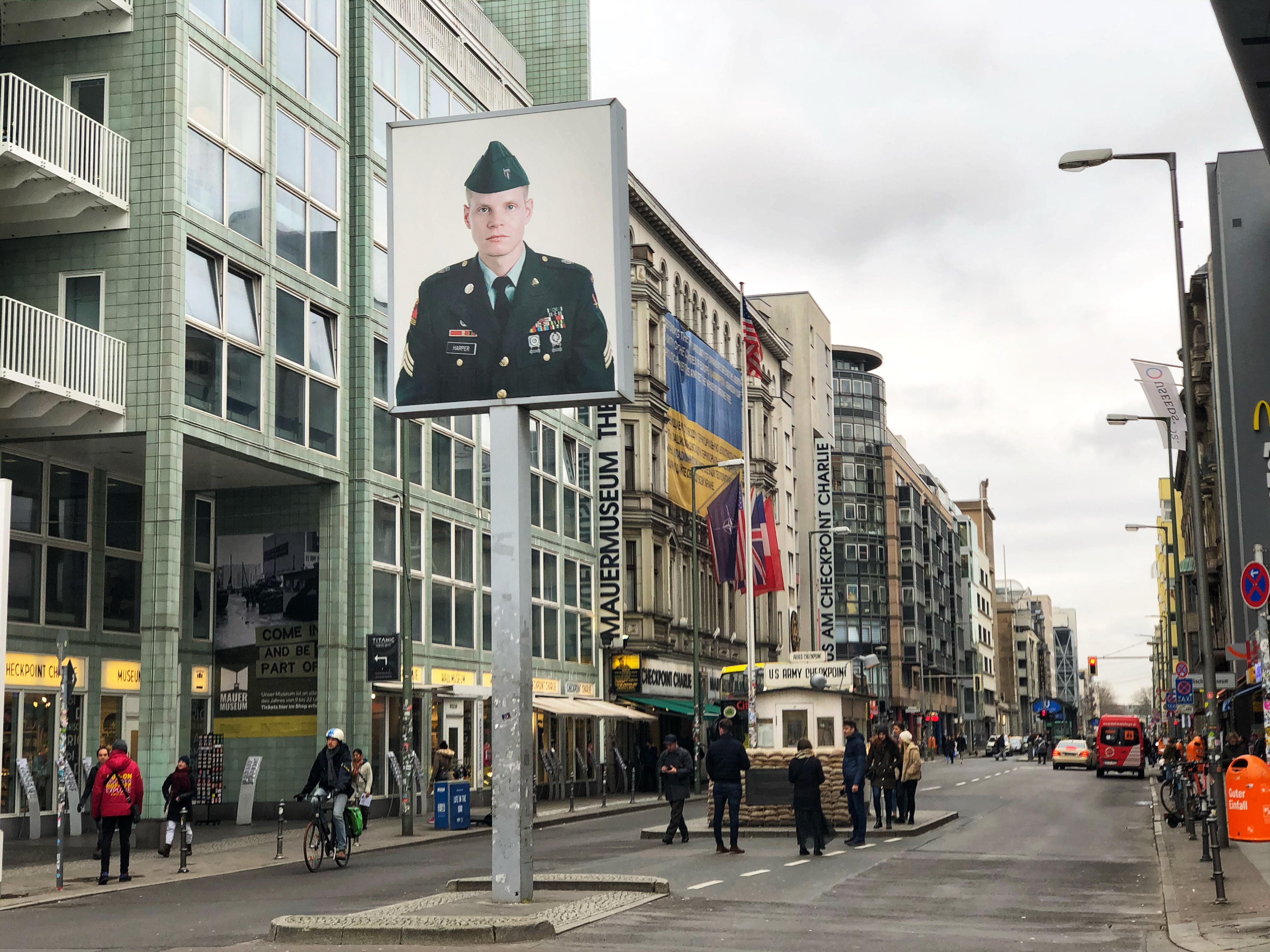
Eating and drinking during your 3 days in Berlin
If you are anything like us food and drink plays a major part in planning a holiday anywhere. Here are some of our recommendations to add to your 3 day Berlin itinerary.
There is so much more to Berlin that Currywurst, but that being said it is worth trying it at least once during your time in the city. There are a number of fast food places serving the dish that you can pop into. It was invented in Berlin, so it would be rude not to have a bite at least.
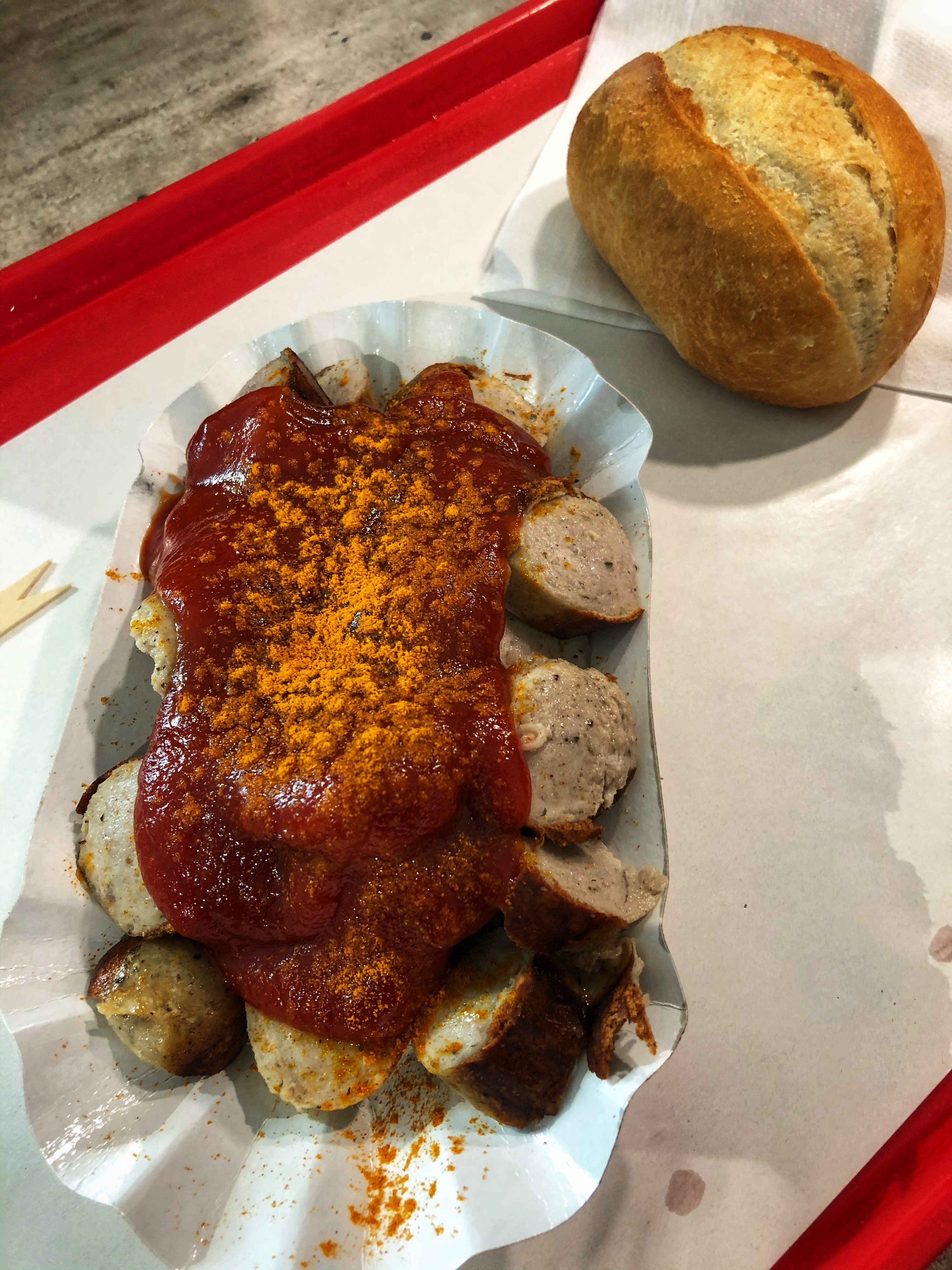
For a mix of Persian and Russian cuisine and culture make sure you pay the Tajikstan Tearoom a visit. We started with tea, which also came with a shot of vodka, because why not! The decor is more Persian with beautiful rugs and cushions to sit on whilst sipping tea. The food is more Russian, with the likes of borsht and dumplings which are a firm favourite of ours on the menu.
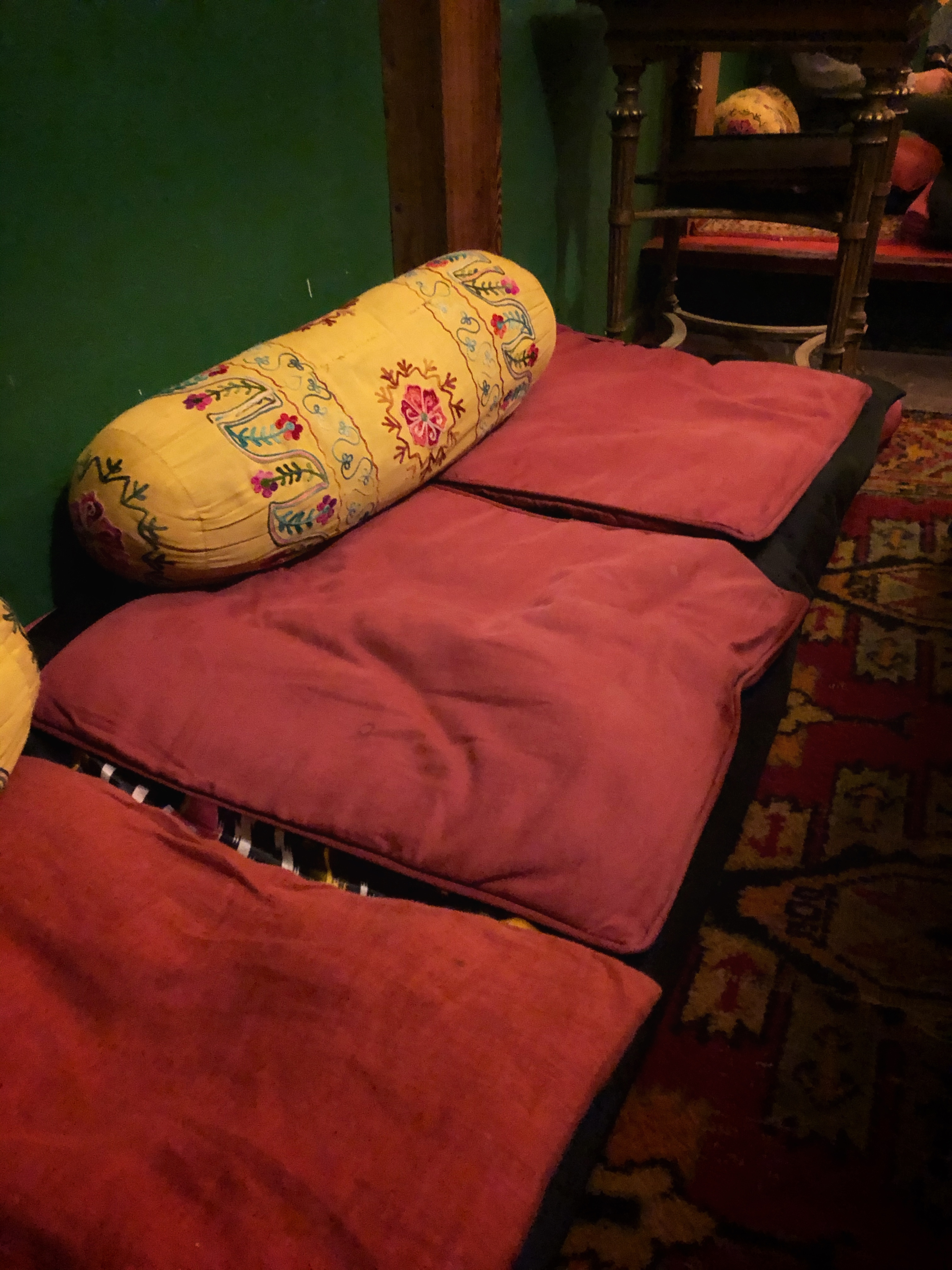
I think a big misconception for us when visiting Berlin was that it would be similar to Bavaria in terms of food. This is absolutely not the case. In fact in Berlin traditional food is probably more your currywurst or a kebab at one of the many doner shops in the city. If you are desperate for a traditional german meal ie. Schnitzel and a cold stein of beer then all is not lost. Augustiner am Gendarmenmarkt do some really good ‘traditional German food’ with some great beer to boot. There is also Hofbräu Wirtshaus which is catered to tourists but still worth a visit if you are desperate for a pork nuckle or two.
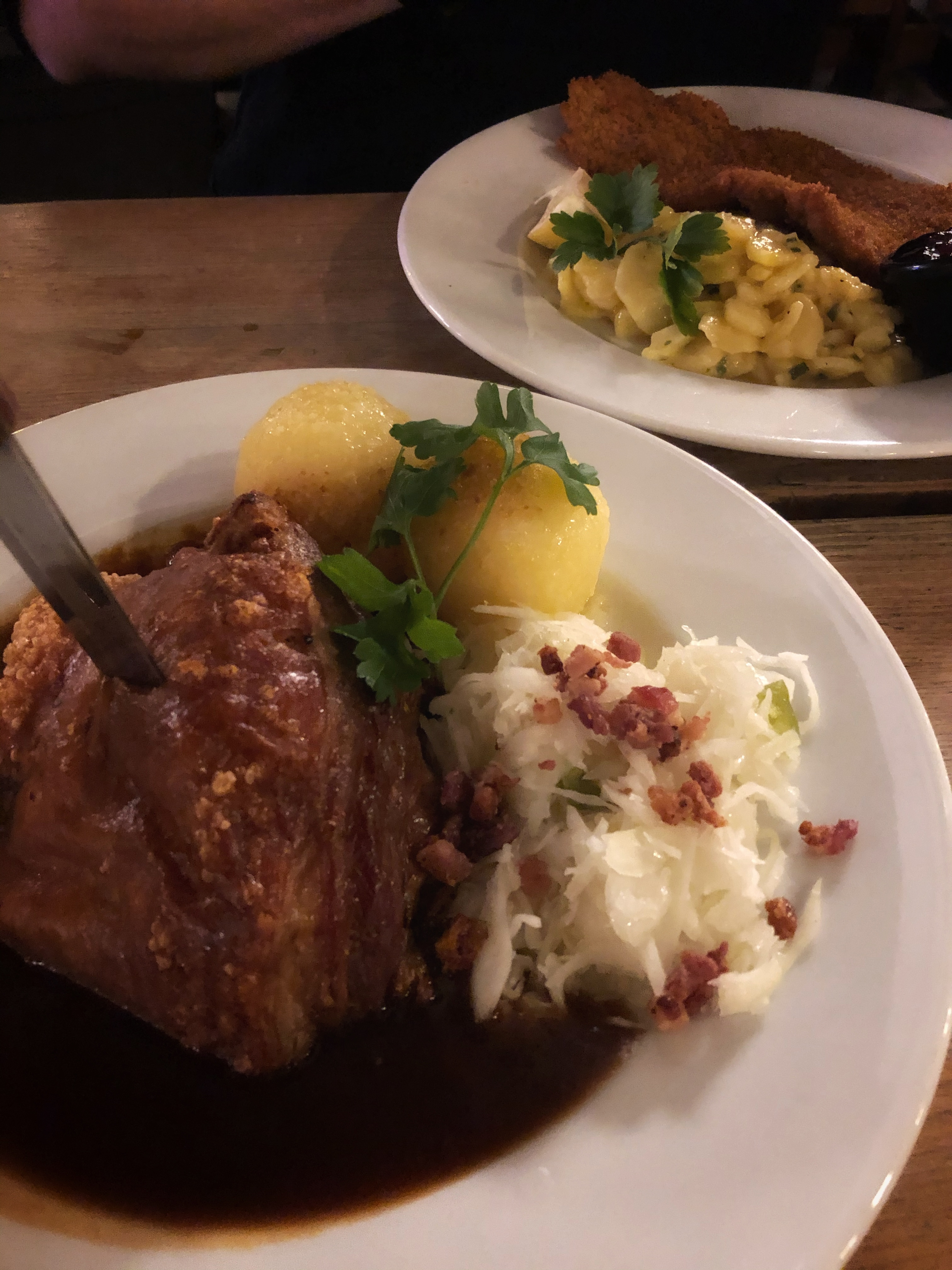
There are so many incredible bars in Berlin, especially secret cocktail bars. One that stood out for us was the Fairytale Bar. You have to knock on a secret door and wait to be allowed entry. The bar was a bit of a trek but so worth it when you see the drinks menu. You basically feel like you have fallen down the rabbit hole and the only way to get out, is to drink more.
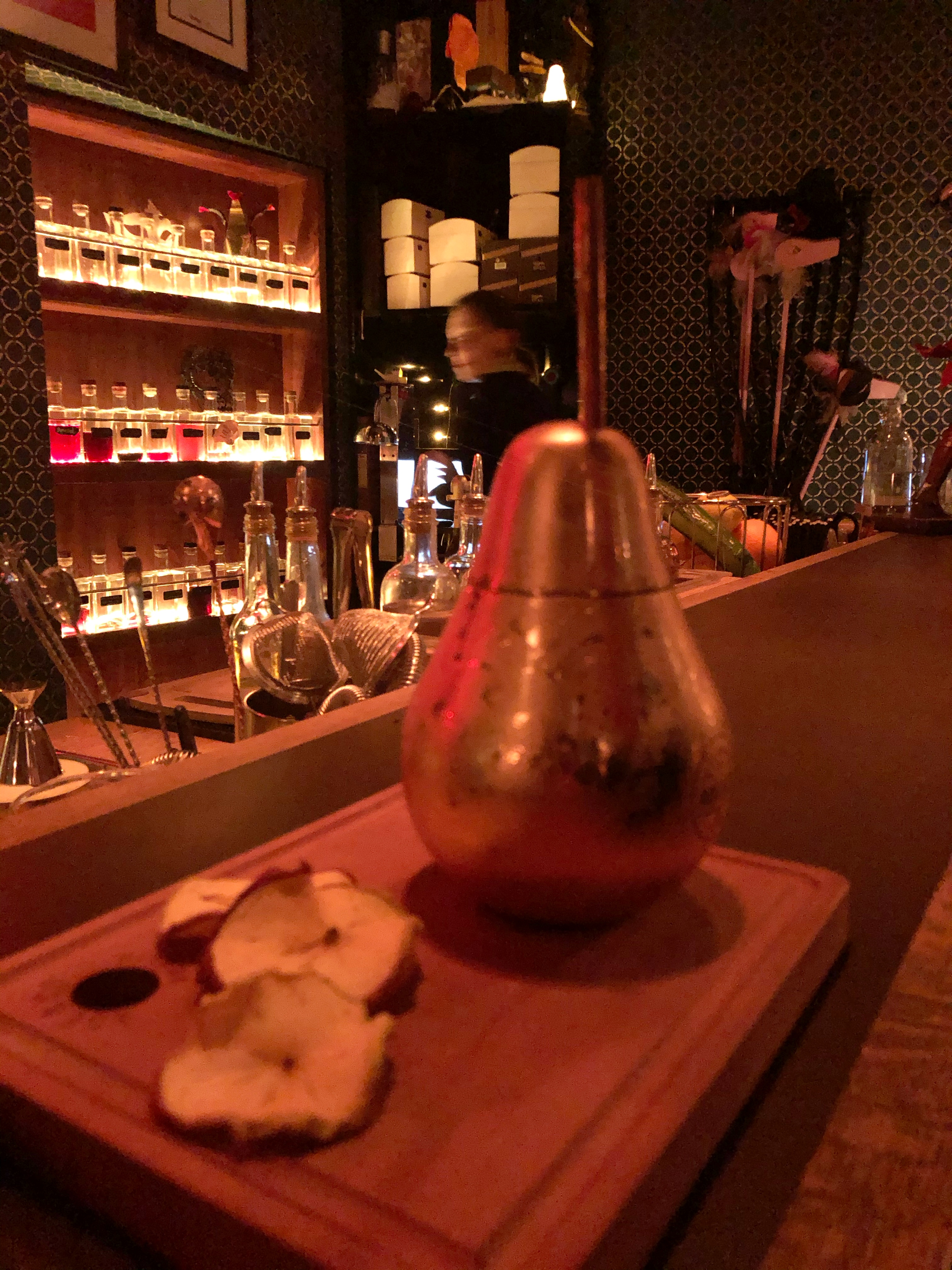
Another bar worth mentioning, particularly for How I Met Your Mother fans out there is MacLaren’s. Serving beers, burgers, and cocktails, the bar is How I Met Your Mother themed, and a lot of fun if, like us you are fans of the show. It’s very laid back and has some great music too, so check it out if you can.
If you are travelling with your significant other you might be interested in some of the more romantic things to add to you 3 day Berlin itinerary. I know that Berlin might not be the most traditionally romantic city compared to Paris or Venice , but there are a number of awesome bars and restaurants to help plan an extra special date night.
Visit a speakeasy
One thing that we loved in Berlin was the number of speakeasy style bars there were in the city. Fairytale Bar is one of our favourites though which is perfect for date night.
Stroll around the Charlottenburg Gardens
Schloss Charlottenburg gardens are really beautiful with flowing fountains and perfectly manicured flowerbeds. It is a great place to spend walking with your partner whilst admiring the surroundings.
Romantic Dinner Cruise
Who doesn’t love a romantic dinner cruise? Sail along the river Spree as the lights of museum island reflect in the waters below.
Here is a sample 3 day Berlin itinerary to help you plan your trip to Berlin.
Start your day by visiting the Reichstag – don’t forget to book this in advance.
Afterwards stop by the Brandenburg Gate for some photos, before making your way to Checkpoint Charlie.
In the late afternoon you can visit the East Side Gallery, and explore one of the super cool city neighbourhoods in the evening.
Start the day with a visit to the Berliner Dom.
Make sure you also visit the nearby DDR Museum which is very much worth the trip.
You can also do a river cruise, or spend the remainder of the day exploring Museum Island.
On day 3 we recommend a visit to Charlottenburg Palace which will take you a little bit further our of the centre of Berlin. Explore the gardens and do a tour of the inside.
Afterwards head to Berggruen Museum which is one of the best kept secrets in the area for art lovers.
Finally make you way to the Park Inn Hotel for some afternoon / early evening views of Berlin.
When we arrived in Berlin we were expecting it to be really expensive, but we were pleasantly surprised. That’s not to say it’s super cheap either, but on average we budgeted £100 (about 117 Euros) per person per day not including accommodation. You can probably get away with a bit less but we wanted to go out and have a few drinks in the evening.
For mid range accommodation you are probably looking to pay just over 100 Euros a night for a couple. Obviously this depends on where you stay. We stayed right near checkpoint Charlie and our room was just over 100 Euros per night, and it was clean and modern.
We were actually really surprised at how much stuff there is to do in Berlin. So you might be thinking is 3 days in Berlin enough time to see it all. Honestly no. If you want to get to grips with the city then we would recommend a good 5 days at least. Berlin is also a large city and is very spread out so you will loose a bit of time just travelling around.
That being said, if you do only have 3 days in Berlin all is not lost. This does give you a good amount of time to see key attractions, enjoy some of the food and experience a bit of nightlife. Just make sure you plan out your 3 day Berlin itinerary in advance, so that you can minimise travel time.
Personally, we think Berlin is one of those places that you can visit all year round. Ok, yes the winters do get cold, but if you wrap up warm you can still have an amazing city break. Also, in December don’t forget that Berlin transforms into a magical city with Christmas Markets, and the smell of gingerbread wafting through the air.
Summers in Berlin are mild enough, and perfect for sitting outside sipping pints of beer, but you also have to keep in mind that this is peak season. School holidays fall around August so expect long lines for tourist attractions.
For a quieter 3 days in Berlin we recommend visiting in October or November. The weather is starting to cool, but not quite as cold as January/February, and there are less people about than the summer months.
More than 3 days in Berlin? Day trip ideas
If you have more than 3 days in Berlin then here are some of our day trip suggestions.
40 kilometres southwest of Berlin you will find the historic city of Potsdam. Filled with incredible parks, and lakes, this former imperial city is only a train ride away from Berlin.
If you want to travel slightly further afield, then we recommend Dresden. It’s about 2 hours from Berlin, and is one of Europe’s beautiful Baroque cities. It was destroyed during WW2 and has since been restored making it a popular destination in Germany.
Hamburg is a good option if you are looking to explore another city. It’s about 2 hours on the train away from Berlin, and there are 33 trains per day between the two cities. Hamburg is a beautiful port city and well worth a visit, although you might want to stay a bit longer .
Absolutely, Berlin is such a cool city, and a must as part of any European itinerary. It has a little something for everyone, with culture, history, great food, and even better nightlife. It’s also very different from other German, and European cities we have visited.
If you found this useful please pin our 3 day Berlin itinerary for later.
Happy Travels, and enjoy your 3 days in Berlin.
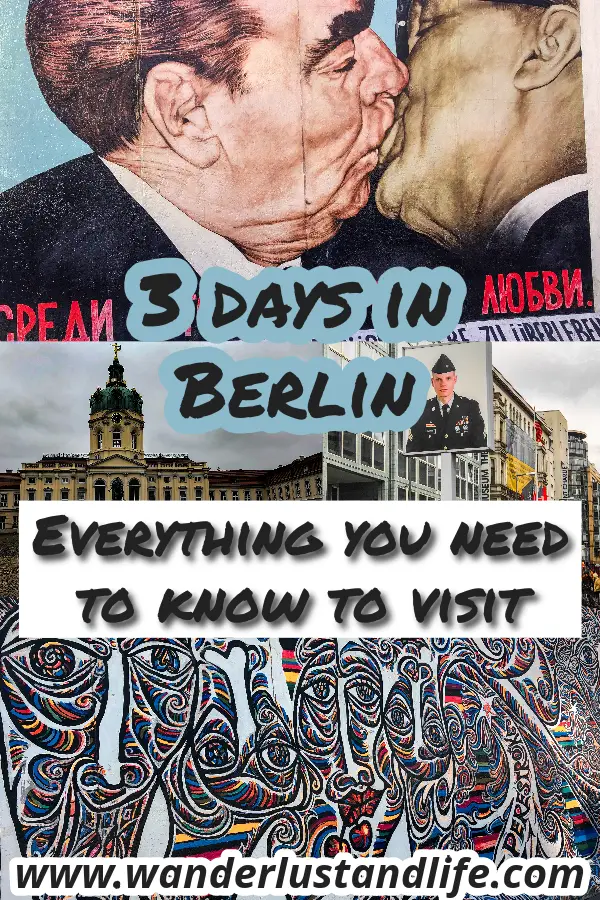
3 days in Budapest
3 days in Dubrovnik
4 days in Prague
Best things to do in Lviv Ukraine
Instagrammable Prague
Things to do in Kyiv Ukraine
Wanderlust and Life is a blog for those that love to travel.
Similar Posts
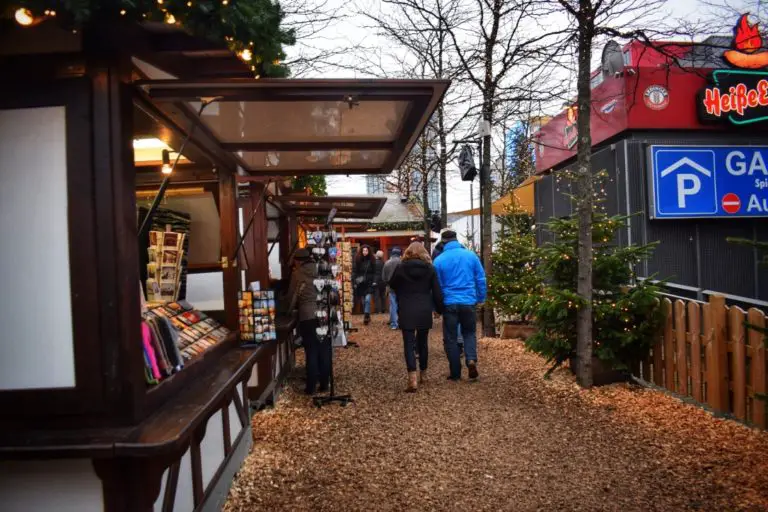
The Ultimate Guide to the Hamburg Christmas Markets
Ever since moving to Europe I have become obsessed with Christmas Markets, and as we know Germany is the queen of festive markets. So when we were invited back to Hamburg to experience the markets first hand through the Come to Hamburg project, we couldn’t say no. Most European cities have their own take on…
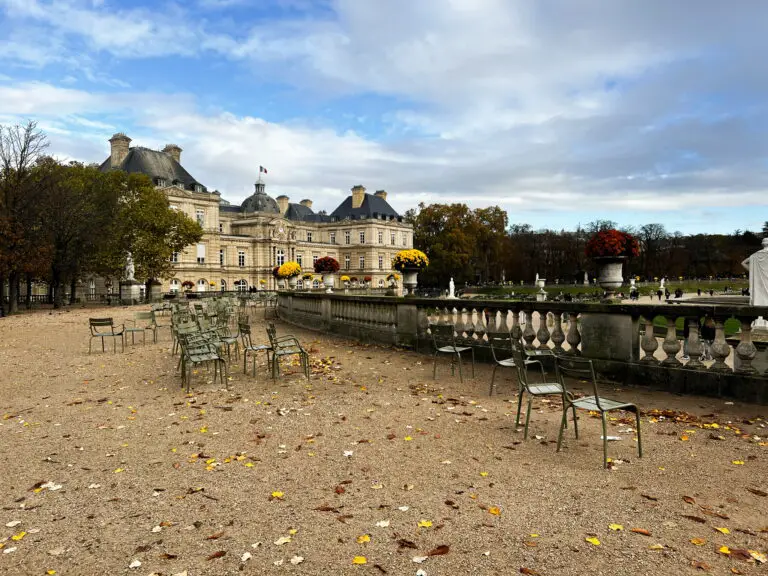
Paris vs Berlin: which city is better for my next break
Planning a trip to Europe and want to know if Paris or Berlin is the better option? In this guide we go through everything you need to know in the battle of Paris vs Berlin, including best things to see, do, eat, and much more. Disclaimer: This post contains affiliate links, so if you use these…
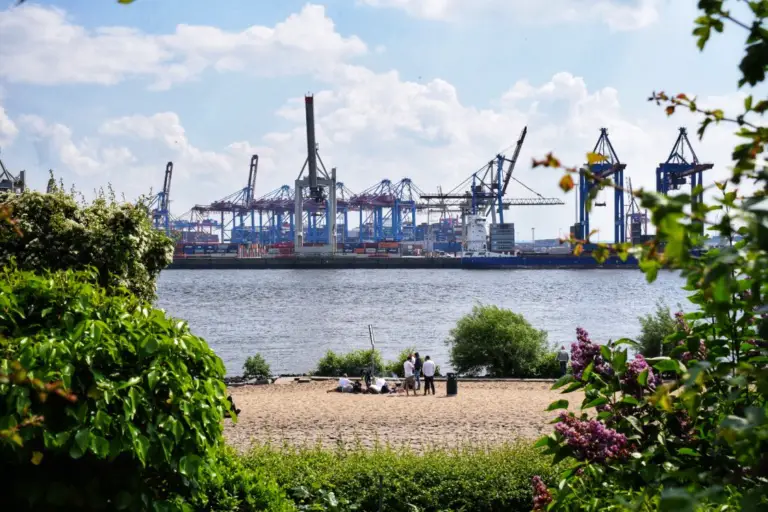
3 days in Hamburg – everything you need to know to plan the perfect break
So you have 3 days in Hamburg and you are wondering what to expect? Well, hip bars, amazing architecture, and plenty of atmosphere are just some of the things that await you as part of your Hamburg itinerary. We were lucky enough to explore this city through the Come to Hamburg project. We had 3 days in…
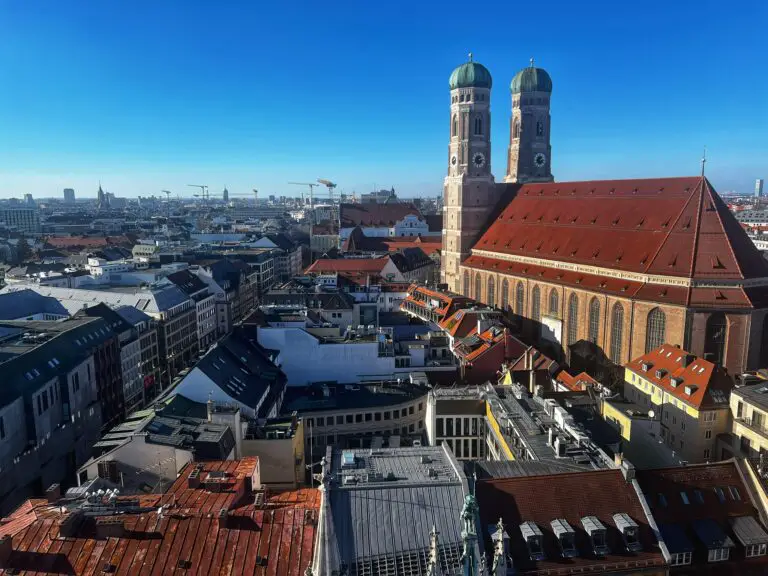
Is Munich worth visiting, Is Munich expensive and everything else you need to know
Are you planning a trip to Germany and wondering is Munich worth visiting? In this guide we go through absolutely everything you need to know before you go. We also answer all the important questions like is Munich safe, and is Munich expensive to help you decide if you should visit. Disclaimer: This post contains affiliate…
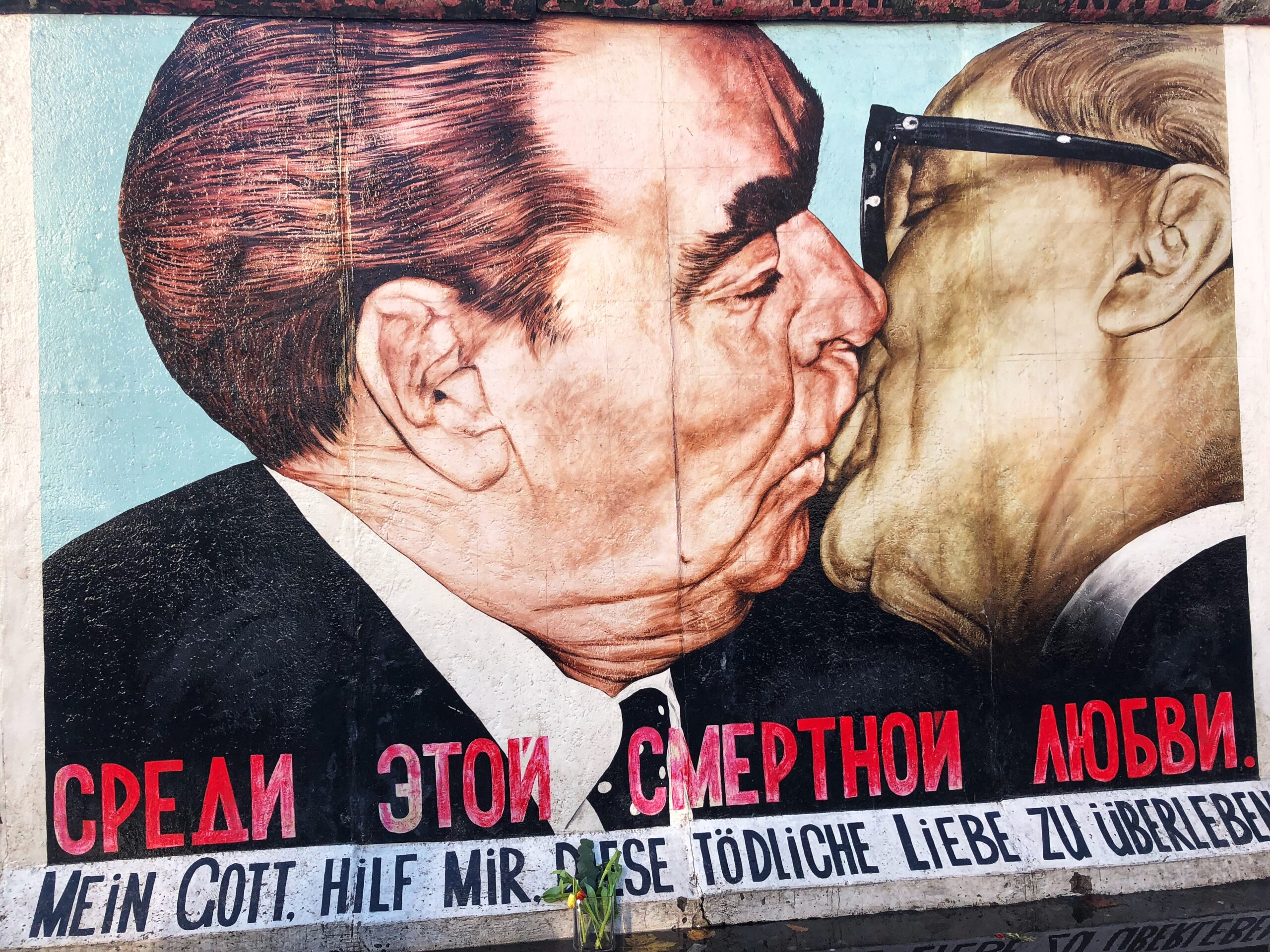
A guide to the most instagrammable places in Berlin
Berlin is one of those cities that pretty much oozes cool. One minute you might be walking around looking for a place to buy a coffee, and the next you have stumbled across a cool alleyway with street art that you just need to photograph. With that in mind we have put together a guide…
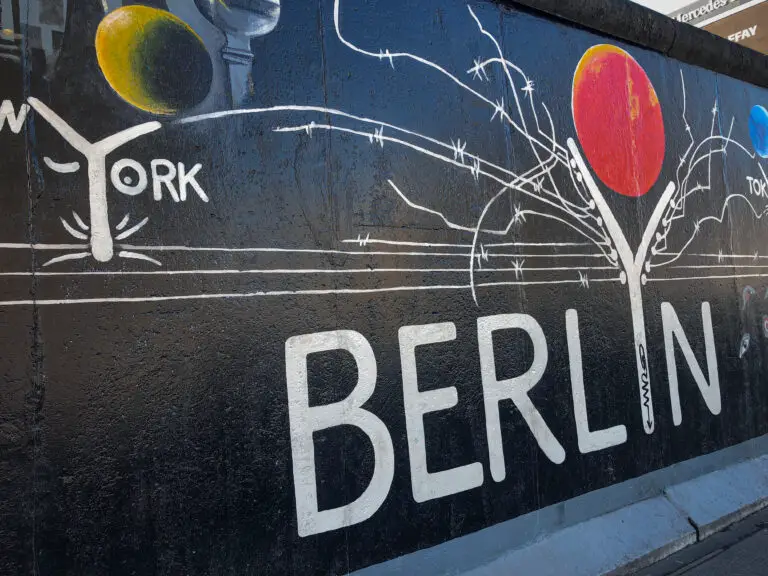
Is Berlin worth visiting? And everything else you have wanted to know
If you are thinking of planning a trip to Germany you might be wondering ‘Is Berlin worth visiting’? The German capital certainly isn’t for everyone, but you will find a great mix of culture, nightlife, and history if you do decide to visit. In this guide we answer all the hard hitting questions like ‘Is…
- Skip to primary navigation
- Skip to main content
- Skip to primary sidebar
Tall Girl Big World
Germany & Europe Travel
- Switzerland
- Massachusetts
- North Carolina
- Puerto Rico
- Washington DC
The Best 3-Day Berlin Itinerary (From a Local!)
Created On: June 12, 2023 | Updated: March 14, 2024 | 11 Comments
Planning a trip to Berlin and aren’t sure where to go or what to see? This Berlin 3-day itinerary makes it easy to see the city’s top attractions, plus a few lesser known areas that locals love!
This post contains affiliate links. We may receive a commission if you make a purchase after clicking on one of these links. You can read our full affiliate disclosure here .
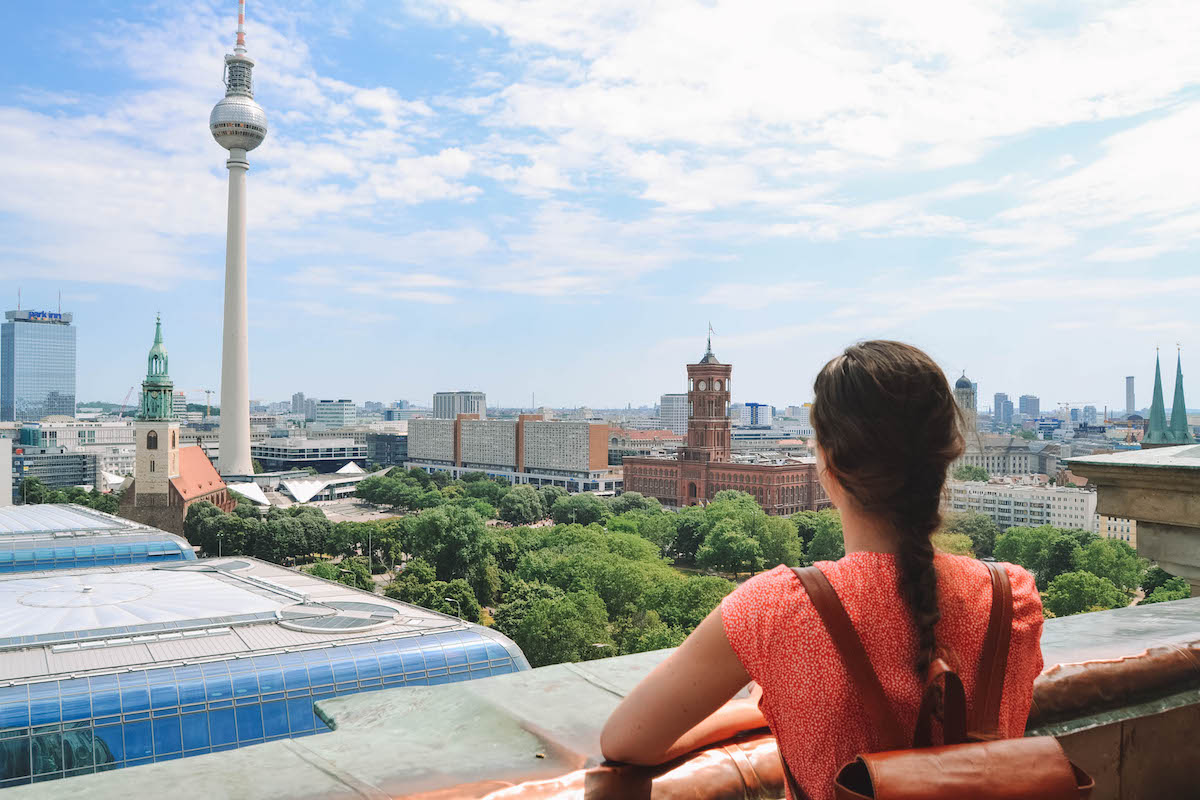
First time visitors to Berlin often don’t grasp just how big the city is until they arrive, at which point they realize they need to rearrange their itinerary so that they’re not wasting half the day on the subway. And with so many things to do and see, how can you possibly fit everything into your trip?
Well, you can’t. I’ve been living in Berlin since 2019 and I still haven’t experienced all that the city has to offer. However, I’ve seen a whole heck of a lot and finally decided to pour my knowledge into a detailed 3-day itinerary to make your travel planning even easier.
My goal with this Berlin 3-day itinerary is to take you to places that locals also love so that you get a real feel for the city and don’t just see the absolute most touristy things (although you’ll see the top attractions as well!).
The suggested timing given for each activity is obviously just an estimate. You might take more or less time to visit a museum or exhibition, and there are so many ways to customize this itinerary to suit your own time constraints and tastes! So consider the suggested time the bare minimum needed if you’re just looking around and taking it all in.
Table of Contents
Click “show” to see the full table of contents for this post. You can jump around the post as desired by clicking on the individual sections listed below.
A Very Quick Overview of This Itinerary
This is a long post with lots of details, so for those of you who just want a high level overview of the suggested 3-day Berlin itinerary, here it is:
Day 1
Alexanderplatz
- Museum Island
Berlin Cathedral OR Humboldt Forum
Unter den linden , brandenburg gate .
- Holocaust Memorial
Reichstag
Day 2
Charlottenburg Palace and Gardens
- Kurfürstendamm
- Gendarmenmarkt
- Checkpoint Charlie
- Tiergarten
Palace of Tears (Tränenpalast)
Hackescher markt , east side gallery .
- Oberbaum Bridge (Oberbaumbrücke)
- Markthalle Neun
- Landwehr Canal (in Kreuzberg)
Day 1 in Berlin: Top Attractions in the City Center
Since you only have three days in Berlin, expect to have three full days ahead of you. This first day will involve a lot of walking, but on the plus side you’ll only need two subway tickets! (One to reach Alexanderplatz and then another to depart from Tiergarten park).
I recommend starting your day early (no later than 10am) so that you have time to visit one of the museums mentioned, if desired, and can take your time enjoying Berlin’s top attractions!
Time needed: 1 hour (more if going up the TV tower)
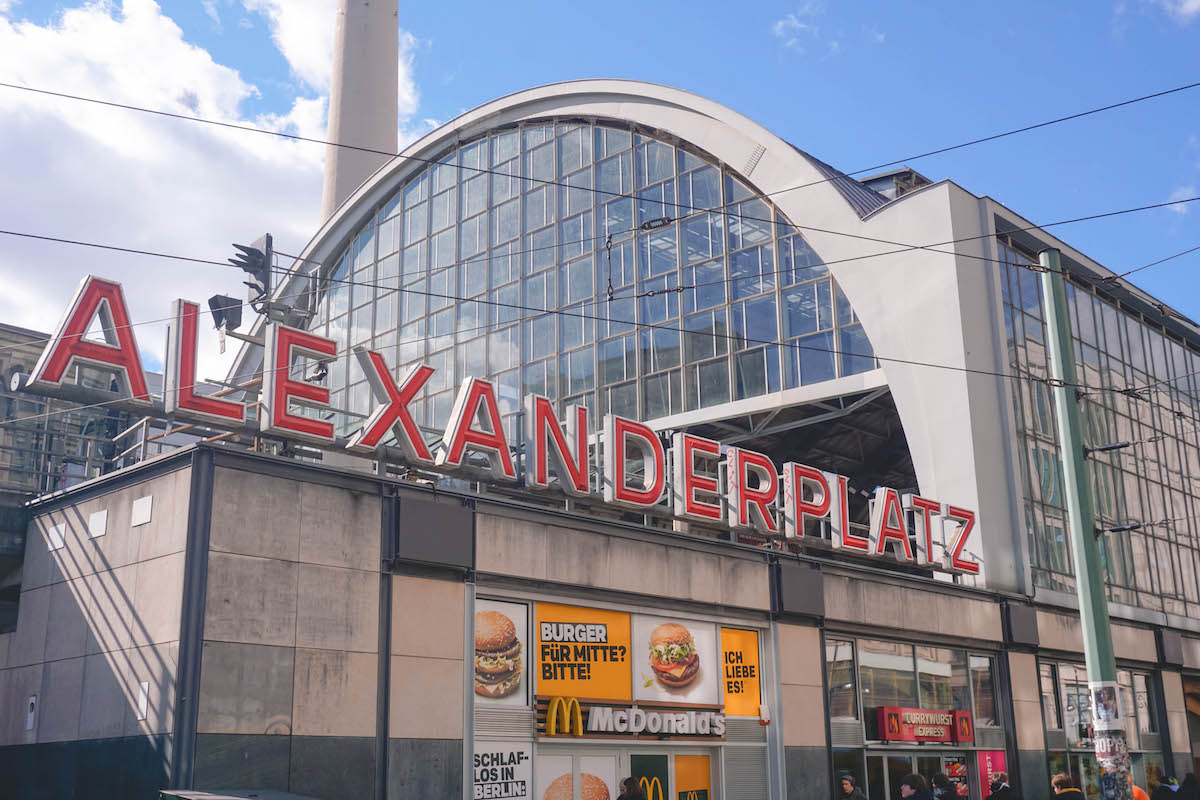
Alexanderplatz is the starting point of this three-day Berlin itinerary. It’s the beating heart of the city center and is home to one of Berlin’s most famous sights — the TV Tower .
When you exit the subway station and begin your explorations around Alexanderplatz, know in advance that it’s not a pretty place. However, it’s one of the most historically important areas of the whole city!
You see, Alexanderplatz served as the center of East Berlin during the Soviet occupation in the Cold War era. The remnants of that no-nonsense, low-cost style of architecture can still be seen in and around Alexanderplatz to this day.
Be sure to read my guide to Alexanderplatz for a full list of things to see and do here. I personally don’t think the TV tower is worth paying to go up, as there are other (cheaper) viewpoints you’ll have access to later on in this itinerary.
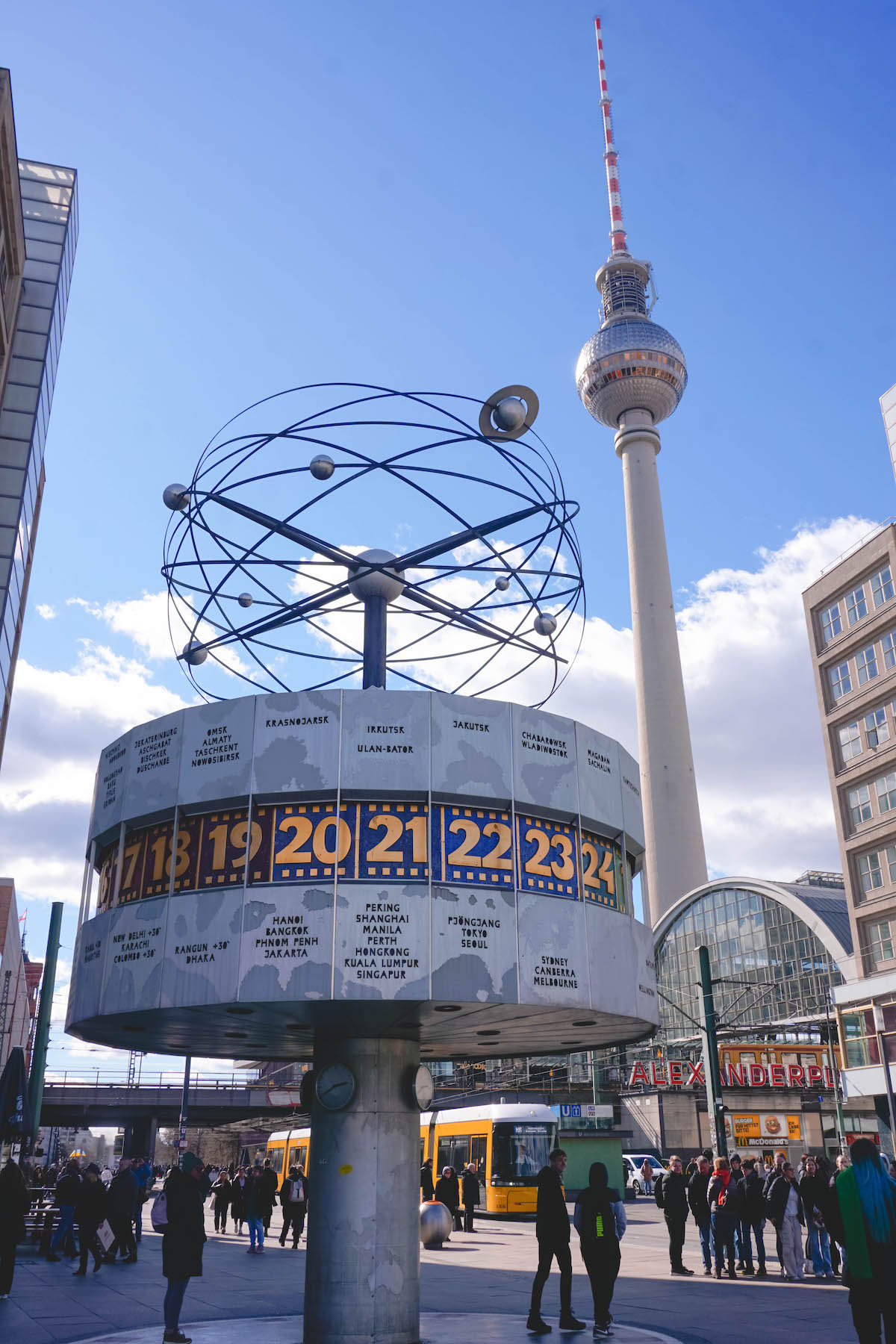
In addition to the TV Tower (which is impossible to miss!), look for the following attractions at Alexanderplatz:
- World Clock — The 24 time zones of the world are represented on the clock. After it was restored post-Cold War, some of the cities had to be removed or rearranged because they’d been listed under the wrong time zones!
- Rotes Rathaus (Red Town Hall) — A stunning red brick building that still serves as Berlin’s city hall. You can visit for free from Monday to Friday between 9am and 6pm.
- St. Marienkirche (St. Mary’s Church) — Best known for its 22-meter long fresco titled the “Dance of Death.” The fresco is now in fragments, but it dates back to the 1480’s and is absolutely worth seeing.
Museum Island (Museumsinsel)
Time needed: 1 to 3 hours (it depends on if you enter any of the museums; read my recommendations below)
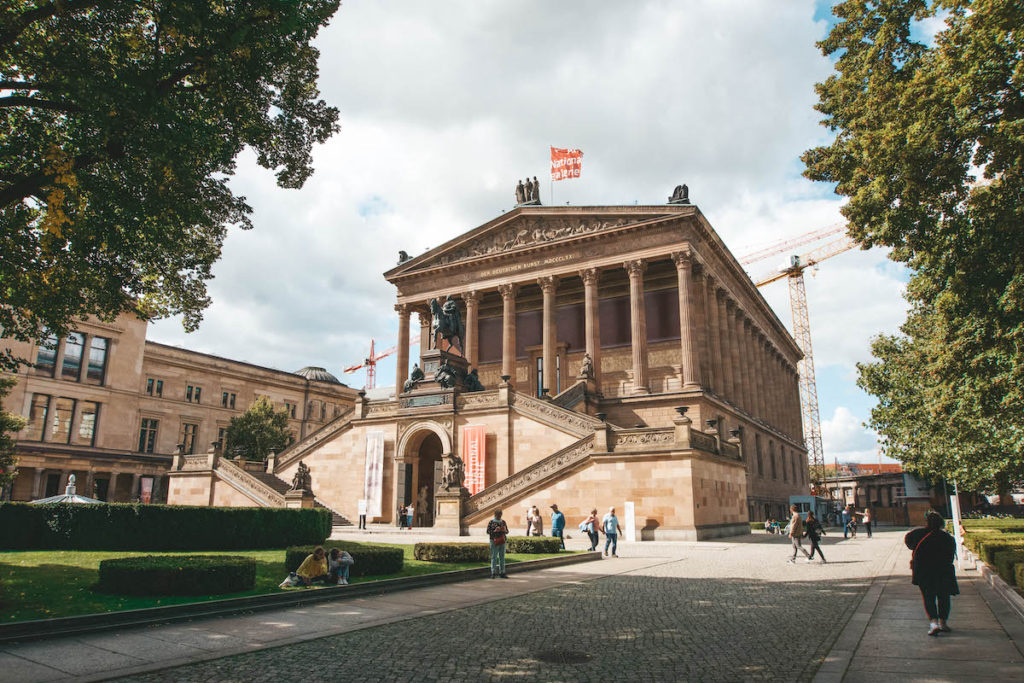
Whether you have 24 or 72 hours in Berlin, no trip to the city is complete without a visit to Museum Island. It’s a UNESCO World Heritage site that’s home to five world-renowned museums.
You can spend a full day going through the museums on Museum Island – there’s 5, after all! However, with only 3 days in Berlin you’ll have to be picky about which museum you visit – if you decide to visit any at all. I suggest picking one museum and spending about 2 hours inside.
My top pick would be the Alte Nationalgalerie , which is one of those incredible museums where the building itself is as much a work of art as the paintings it houses. The Alte Nationalgalerie has an extensive collection of art that ranges in style from the romantic to neoclassical.
Another favorite of mine is the Altes Museum , which was the first ever public museum in Berlin. Inside the museum there’s a gorgeous rotunda that’s modeled after the Pantheon in Rome. The Altes Museum exhibits the city’s collection of classical antiquities.
Even if you don’t have the time or desire to visit a museum, you should still visit Museum Island to enjoy the architecture . While you’re there, find a spot to lay out on the grass in front of the Cathedral (called the Lustgarten).
Time needed: 1 hour to 90 minutes
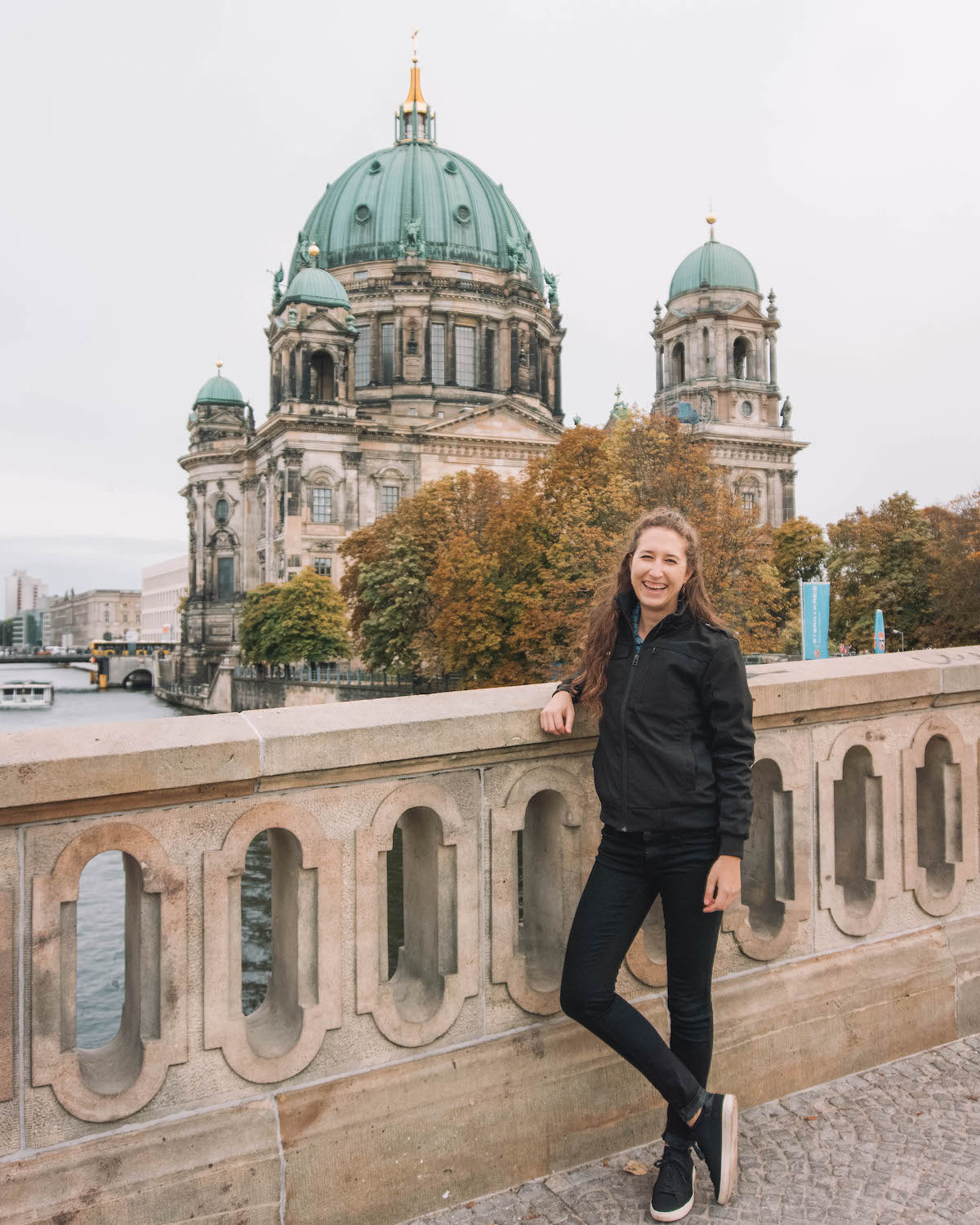
You can’t see all of the amazing things Berlin has to offer in just three days, so you’re going to make some tough choices on day 1. After exploring Museum Island (and possibly going into one of the museums!) you can either visit the Berlin Cathedral OR the Humboldt Forum .
Both the Cathedral (image left) and the Humboldt Forum (image right) boast a spectacular view of the city from their top level (from the dome at the cathedral or on the rooftop terrace of the Humboldt Forum).
Here’s a breakdown of what makes each site unique so you can pick your favorite:
Berlin Cathedral: Costs 10 Euros to enter, which includes entrance to the nave, the Hohenzollern crypt beneath the church ( currently closed for renovations ), a small exhibit on the first floor detailing the architectural plans of the church, and a view of Berlin from the top of the church. You need about an hour to 90 minutes to see the entire church and climb the dome for that epic view.
Humboldt Forum: Free to enter the museum space, but the rooftop terrace costs 3 Euros if you want to see the view of the Cathedral, Lustgarten, Unter den Linden, and the TV tower. You don’t have to stay and look through the exhibitions at the Humboldt Forum if you don’t want to! But just so you know what’s here, the top two floors house exhibitions on the history of Africa, Oceania, Asia, and the Americas and are explained through the lens of colonialism and its lasting impact on each region.
Time needed: 45 minutes to 1 hour
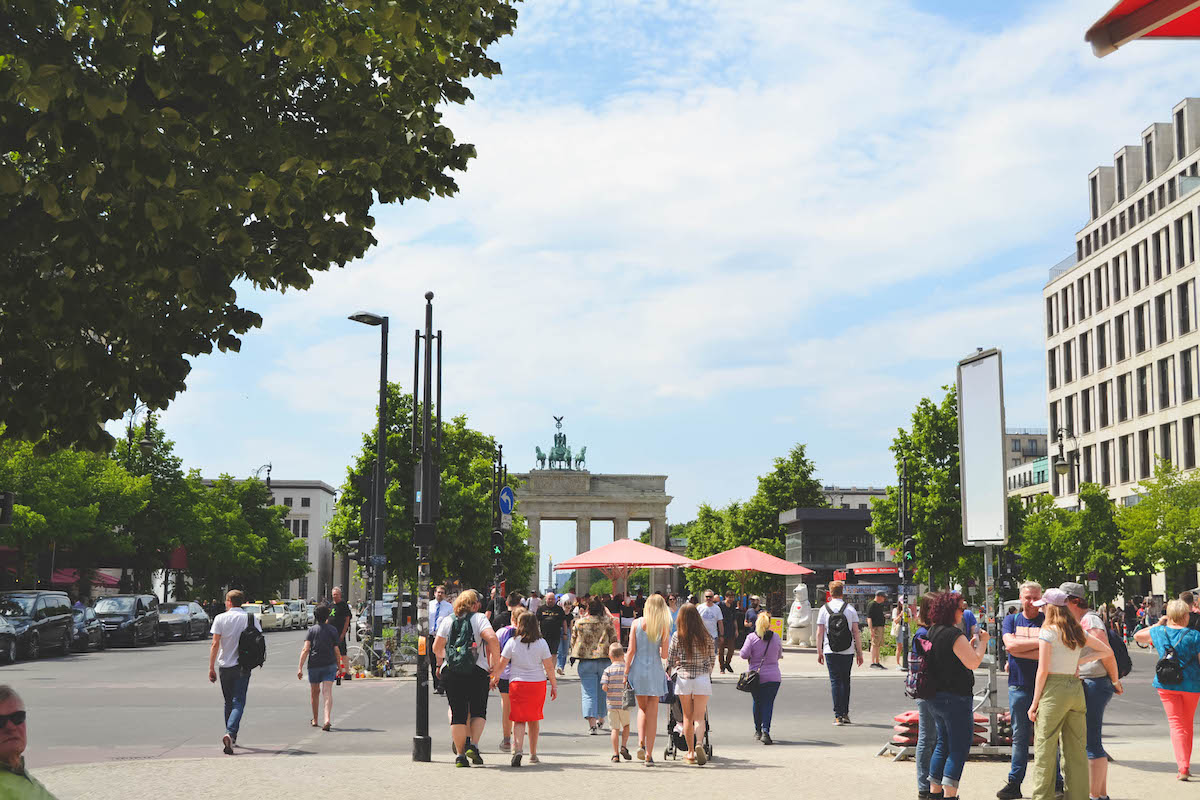
Unter den Linden is a can’t-miss attraction in Berlin! The wide boulevard is lined with linden trees (hence the name), which are associated with Freya, the Germanic goddess of truth and love.
Unter den Linden initially connected the royal palace (now Museum Island) to the royal hunting grounds (Tiergarten Park, also on this itinerary!) in the 15th century. Under Frederick the Great, the road was transformed into a boulevard comparable to the Champs-Elysee in Paris.
The linden trees you’ll pass on your walk from the Museum Island area to the Brandenburg Gate date back to the 1950s. The trees that had lined the boulevard before World War II were cut down by the Nazis either to make way for a new tram line, or to use as firewood.
You can easily walk along Unter den Linden to the Brandenburg Gate. From the Cathedral, the boulevard is roughly 1.5 kilometers long and you’ll need about 30 minutes to reach the gate.
Along the way, keep an eye out for:
- The impressive equestrian statue of Frederick the Great
- Staatsoper (Royal Opera House)
- Humboldt University
- Bebelplatz (with its memorial to the Nazi book burnings)
- Neue Wache (it looks like a church, but it’s a memorial to the victims of war and dictatorship)
- German History Museum (housed in the former arsenal building)
- … and more!
Time needed: 30 minutes
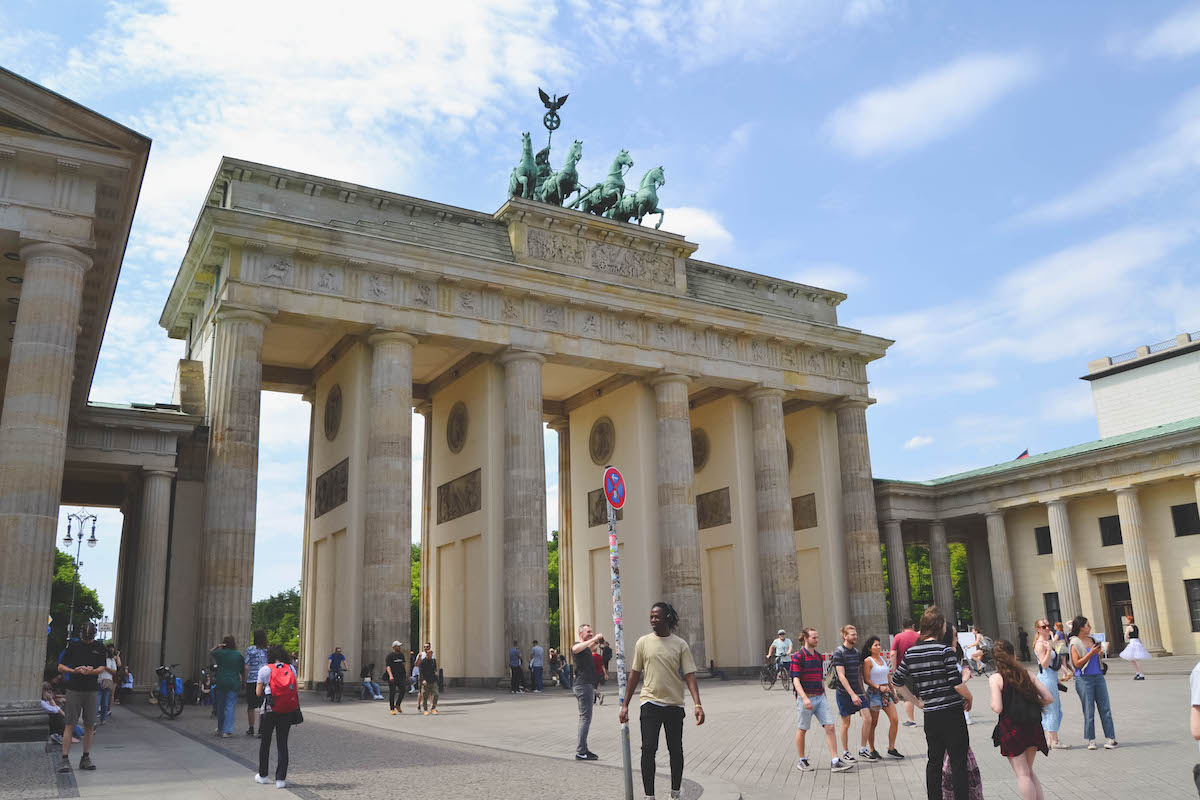
The Brandenburg Gate is one of the most iconic sites in all of Germany. It’s a symbol of unity in Berlin and many key moments in German history have occurred here.
US President Ronald Regan uttered the words “Mr. Gorbachev, tear down this wall!” in front of the gate in 1987, and during the Cold War there was a viewing platform here from which visitors to West Berlin could get a glimpse of the East.
What was once a mere gateway meant to impress visitors to Berlin’s famous Unter den Linden boulevard has become so much more since its completion in 1791.
Memorial to the Murdered Jews of Europe
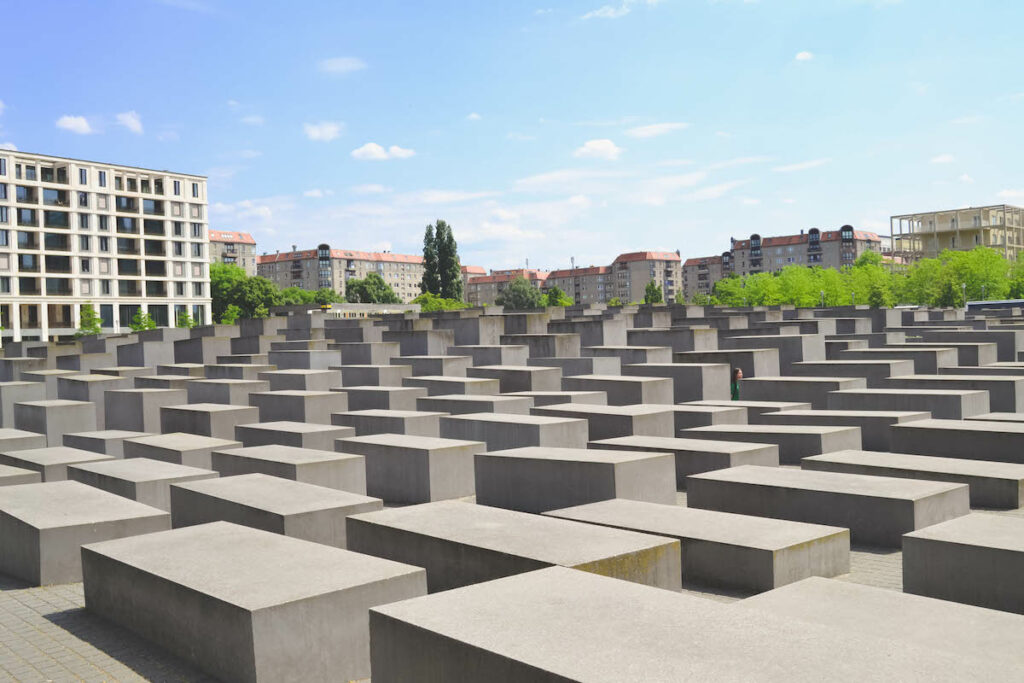
A short walk from the Brandenburg Gate is The Memorial to the Murdered Jews of Europe. The memorial is a sobering reminder of the millions of Jews who lost their lives under the oppressive Nazi regime.
The memorial is made up of 2,711 concrete slabs spanning 19,000 square meters. As you wind your way further around the maze of concrete slabs, the ground dips slightly below you and it feels like the concrete is rising up to suffocate you. This effect was intentional and is meant to encourage reflection.
Please note: It is highly disrespectful to take selfies in front of or within the memorial. Also, do NOT stand or sit atop the concrete slabs.
Time needed: 90 minutes
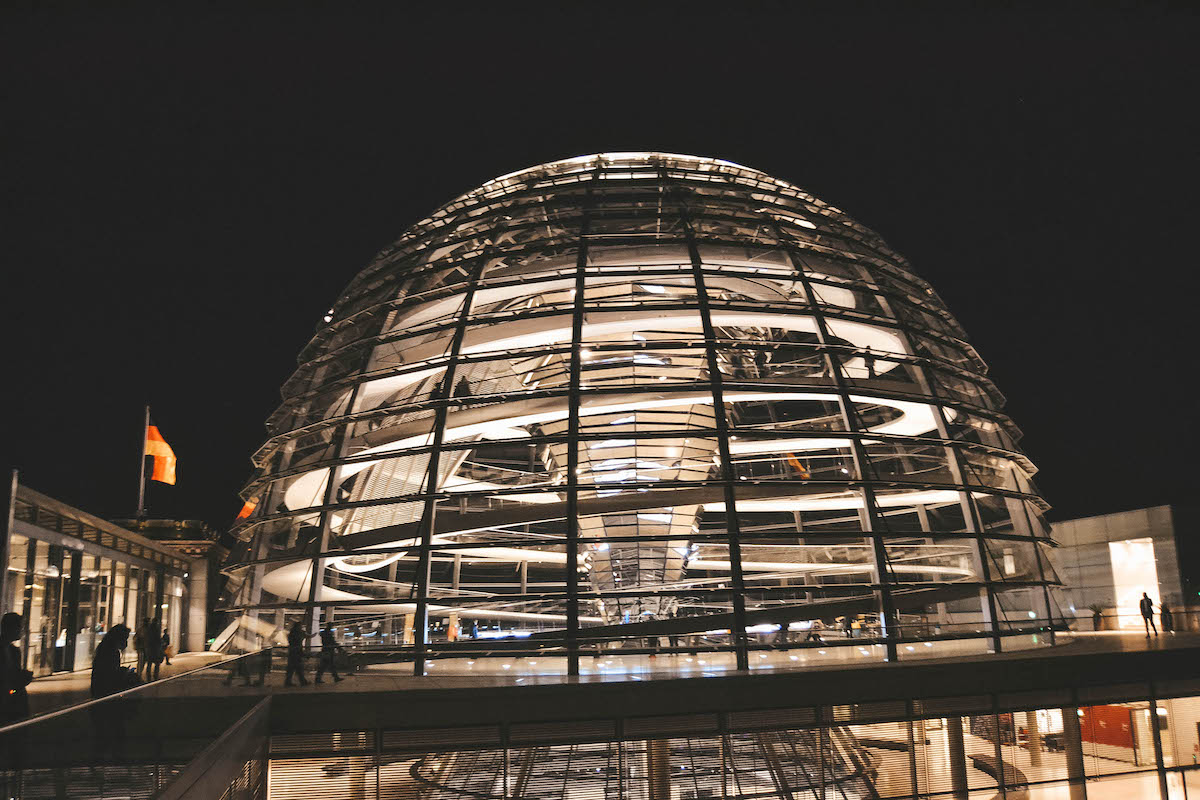
The soaring glass dome of the Reichstag is at once beautiful and symbolic.
The Reichstag Fire of 1933 was used by the Nazi party to claim that communists were planning to overthrow the German government. The constitutional act that resulted from this claim effectively allowed the Nazi party to gain momentum and take control of the country.
When the Reichstag dome was rebuilt in the 1990s, it was decided to build the structure out of glass. The glass dome represents Germany’s desire to move away from its Nazi past and move towards a future of unity and democracy.
I recommend ending your first day in Berlin with a tour of the Reichstag. Tickets are free, but you have to book them in advance . You must also bring an internationally-recognized form of ID with you, such as a passport. A tour of the Reichstag includes access to the glass dome as well as a free audio guide that details the history of the buildings and Germany’s parliament.
There are also guided tours of the Reichstag dome plus more in-depth tours of the plenary chamber and surrounding government district , but you must submit your request to join those types of tours prior to visiting.
If possible, try to book a time slot around sunset. Within the glass dome, you’ll have a 360º view of the city, and watching the sun go down from the Reichstag building is an unforgettable experience!
Day 2 in Berlin: Palace Visit, Window Shopping & More Sightseeing
Day two in Berlin will take you out of the city center … and then straight back into it. I recommend buying a day pass for the subway since day one in Berlin included so much walking. Plus, you’ll have to take the subway a few times since the activities on day two are more spread out from each other.
Time needed: 3 to 4 hours
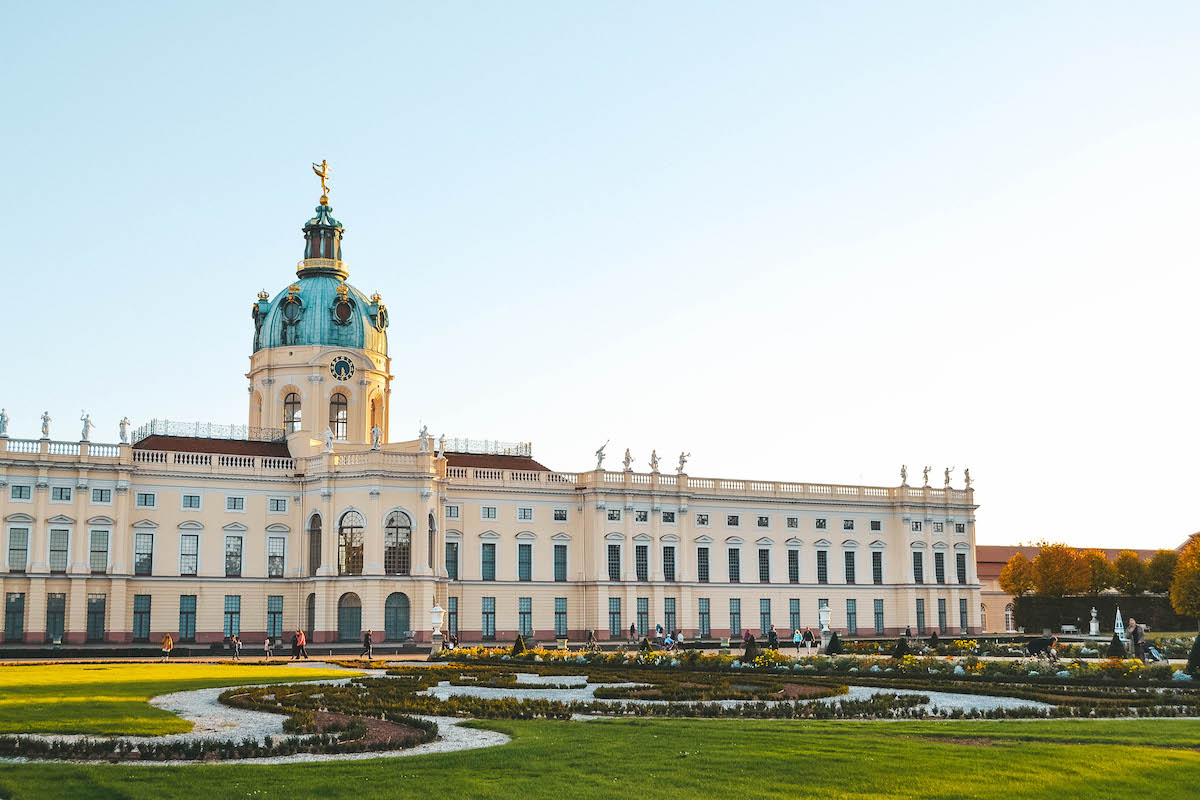
Reader, welcome to my favorite spot in all of Berlin! Charlottenburg Palace is a regal oasis in the middle of the city. The palace was completed in 1699 and was originally intended to be the summer palace of Queen Sophie Charlotte (after whom the palace and surrounding neighborhood of Charlottenburg are named).
Give yourself at least three hours to leisurely explore the palace and grounds. Within the palace, you’ll find lovingly refurbished rooms, galleries, and halls, as well as literal treasure troves such as the Silver Vault and the Porcelain Cabinet.
If you don’t have the budget or desire to enter the palace, you can (and should!) still visit the gardens and parkland for free. In the summer, you’ll find sheep grazing on the grounds. In the winter, the front entrance of the castle is home to one of Berlin’s finest Christmas markets.
For more details about Charlottenburg Palace — plus plenty of photos to convince you to visit! — be sure to read my detailed guide on Charlottenburg’s royal gem.
Kurfürstendamm Shopping Street
Time needed: 1+ hours
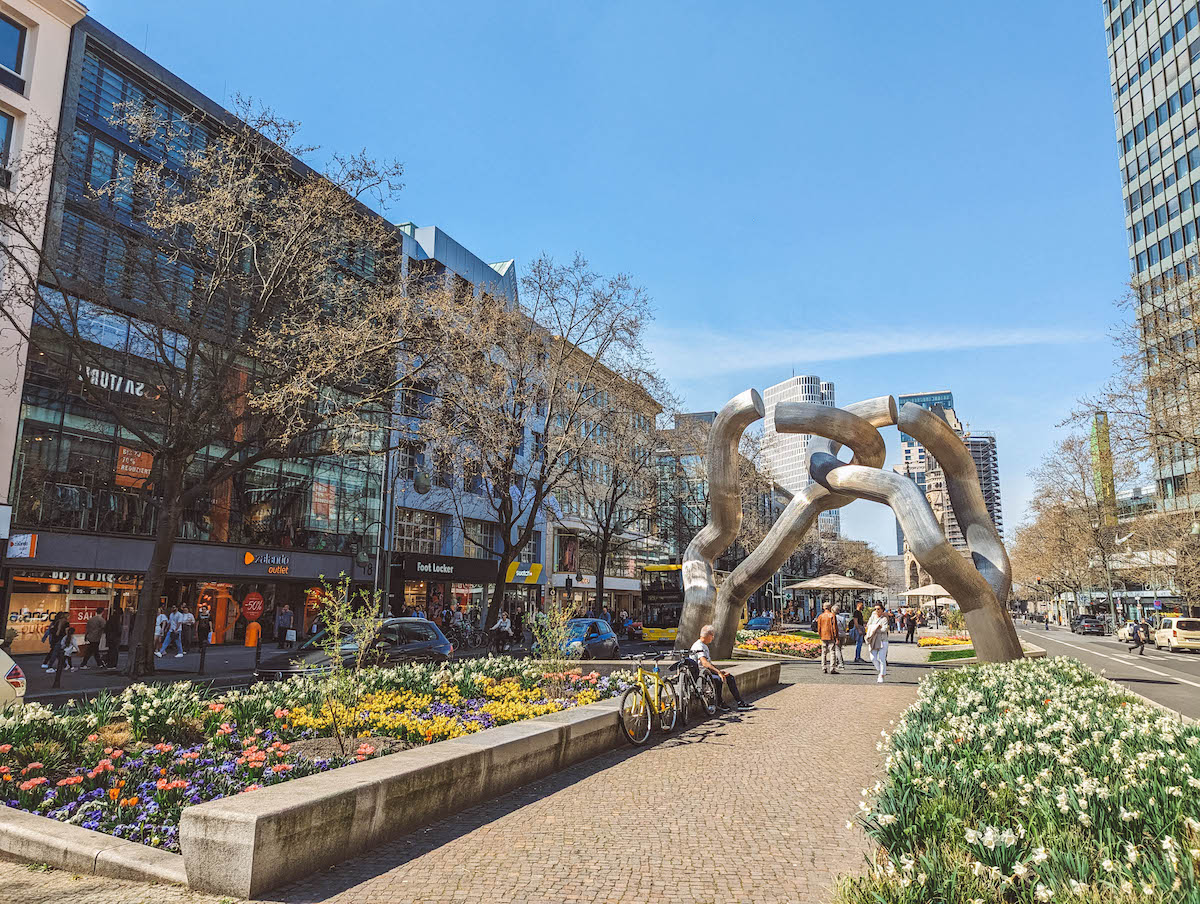
Take the subway (U-Bahn) to the U-Adenauerplatz station and walk down the Ku’damm until you reach U-Wittenbergplatz.
A stroll along the Kurfüstendamm (called Ku’damm by locals) instantly transports you back to old Berlin. Much of the city was bombed during WWII, but the Ku’damm has managed to retain some of its Old World charm.
Most of the shops here fall into the luxury category (Louis Vuitton, Hermès, etc.) but there are also more affordable stores closer to the Zoologischer Garten train station (H&M, & Other Stories, Primark, etc.).
Kurfürstendamm: KaDeWe (Optional)
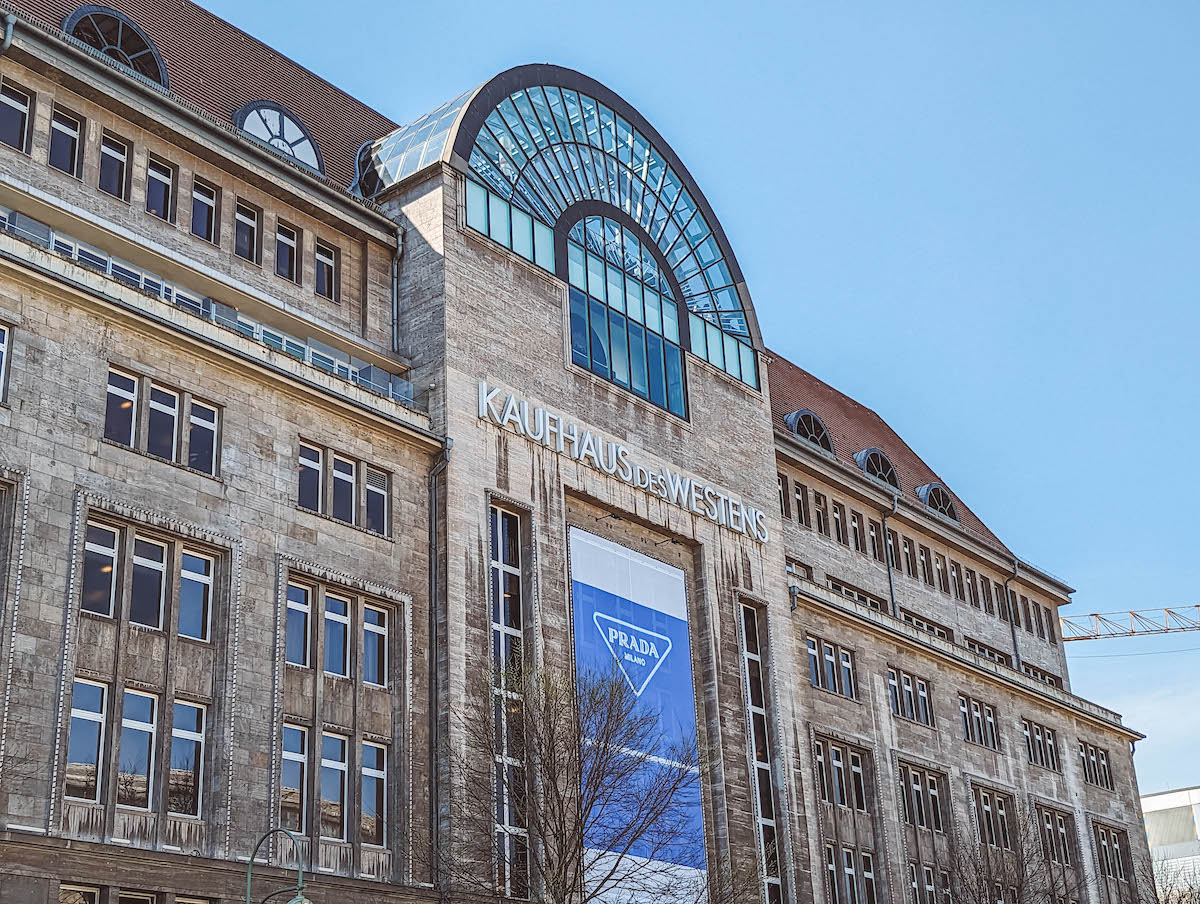
While strolling down the Ku’damm, be sure to pop into KaDeWe ( Kaufhaus des Westens ). Founded in the early 1900’s, it’s the second largest department store in the world, after Harrods in London.
Note that KaDeWe has recently declared bankruptcy and it’s unclear whether or not the store will remain open. Moral of the story: visit while you can!
Tip: Charlottenburg Palace and the Ku’damm are located within the posh neighborhood of Charlottenburg. If you fall in love with this area, here are even more things to do in Charlottenburg!
Gendarmenmarkt
Time needed: 1 hour (less if not entering the churches)
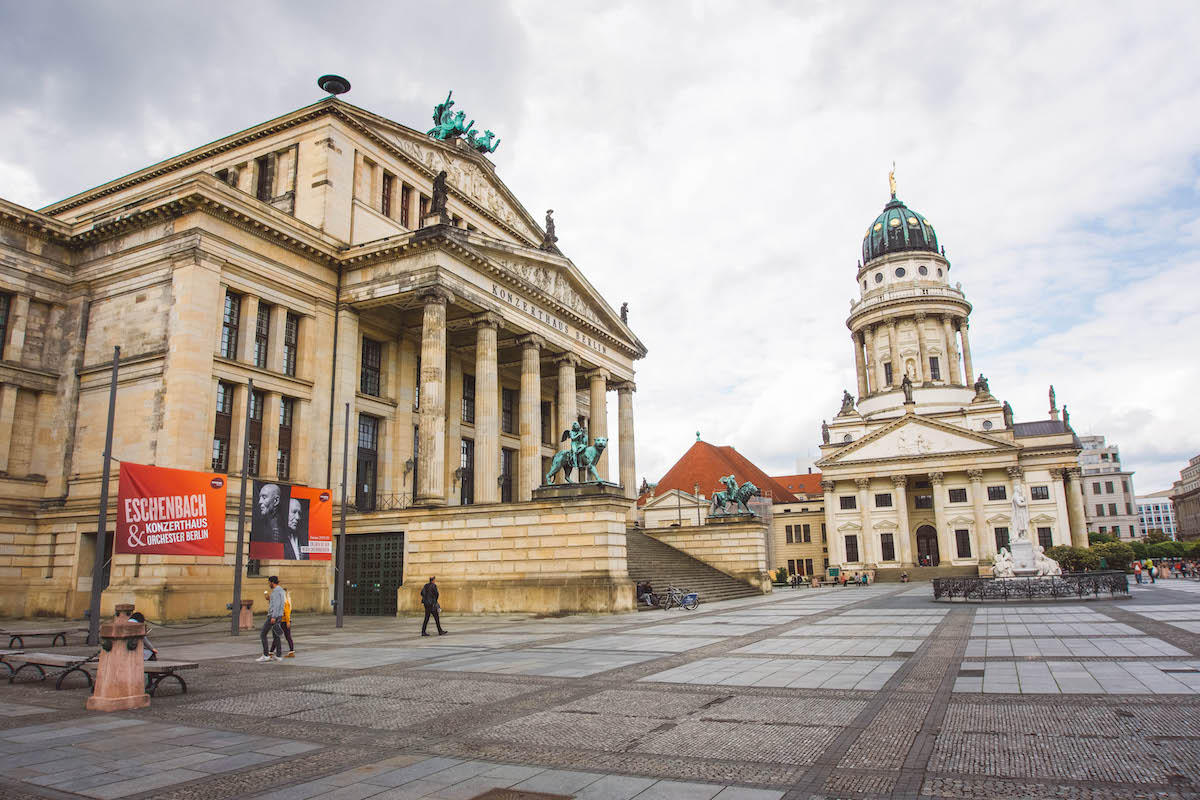
From Wittenbergplatz, ride the U2 subway line to the U-Hausvogteiplatz station. When you surface, you’ll be treated to a spectacular view of Gendarmenmarkt, one of Berlin’s prettiest squares.
The historic square is the site of the German Cathedral ( Deutscher Dom ), the French Cathedral ( Französischer Dom ), and the 19th century Concert Hall built by renowned Prussian architect Karl Friedrich Schinkel.
While at Gendarmenmarkt, be sure to pay a visit to the German Cathedral; it houses a free exhibit on the history of the German parliament. Even if you don’t visit the exhibit, it’s still worth visiting Gendarmenmarkt just to see the architecture!
Tip: Around the corner from Gendarmenmarkt is one of Berlin’s oldest chocolate houses, Rausch . In the winter, I recommend heading to the top floor of the store to enjoy a mug of creamy hot chocolate at their cafe. Their chocolates also make for an excellent souvenir!
Gendarmenmarkt is currently under construction until 2024. However, the exhibit inside the German Cathedral remains open, and the Concert Hall is still putting on performances.
Checkpoint Charlie
Time needed: 20 minutes (more if visiting the Wall Museum)
Down the street from Gendarmenmarkt is yet another world-renowned Berlin landmark: Checkpoint Charlie. In October 1961, Checkpoint Charlie was the site of a tank standoff between American and Soviet troops. In total, the confrontation lasted for 16 hours — during which time people genuinely worried that World War III was about to begin.
Checkpoint Charlie is now a major tourist attraction, and I don’t recommend lingering for very long here. However, it’s worth taking a photo at the preserved crossing point where visitors from the West had their papers checked before entering East Berlin.
Tip: If desired, you can pay to enter the Wall Museum at Checkpoint Charlie . I’ve been once before and enjoyed it, but personally it’s not a “must-see” museum in the city. As such, I left it off of this itinerary; you’re welcome to visit if desired!
Time needed: 2+ hours
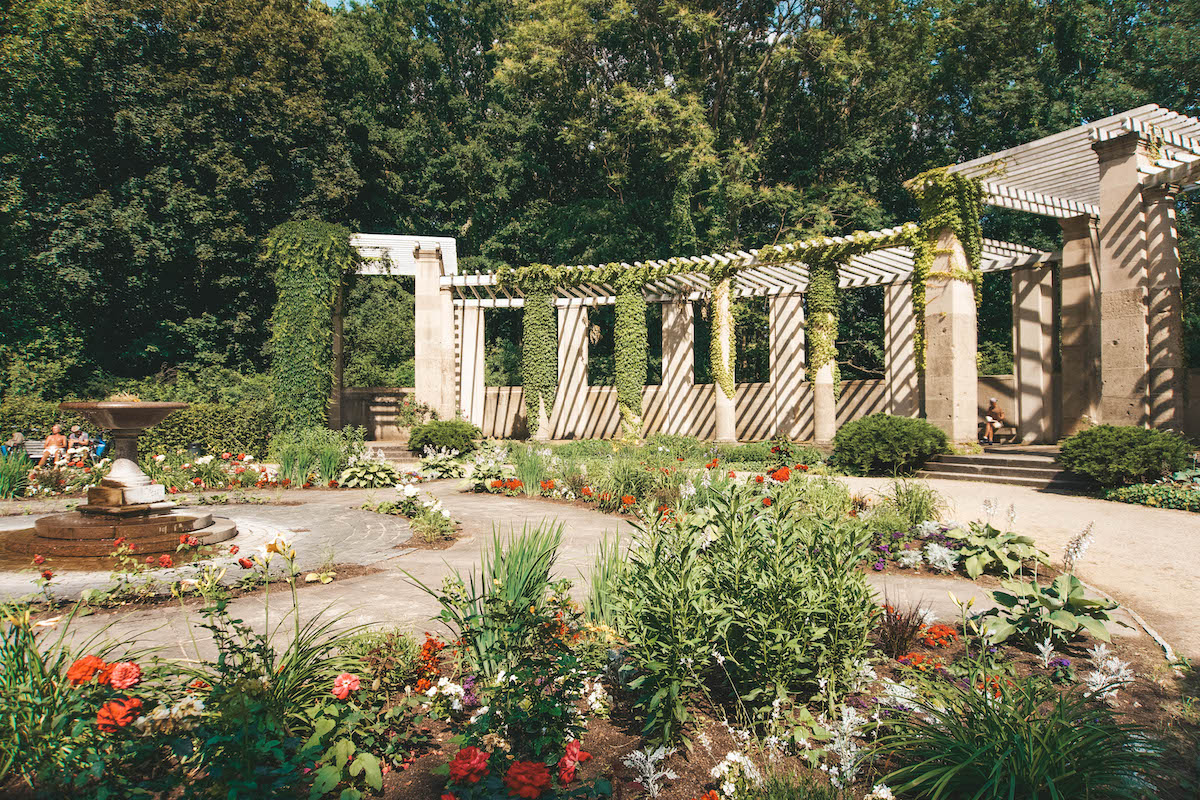
After another day on your feet, let yourself unwind in the Tiergarten.
From Checkpoint Charlie, it’s a 15- to 20-minute walk to the park. It’s a huge park with lovely meadows, statues, memorials, manicured gardens, and ponds scattered throughout — don’t feel like you need to see it all! Find a shady spot under a tree or nab a free bench and relax.
Like all of the attractions mentioned in this itinerary, the Tiergarten has an interesting history. It was originally the royal hunting ground for King Friedrich III but was opened to the public in the 1830s. After WWII, the trees in the park were felled to use for fuel during a coal shortage.
Tiergarten: Victory Column (Optional)
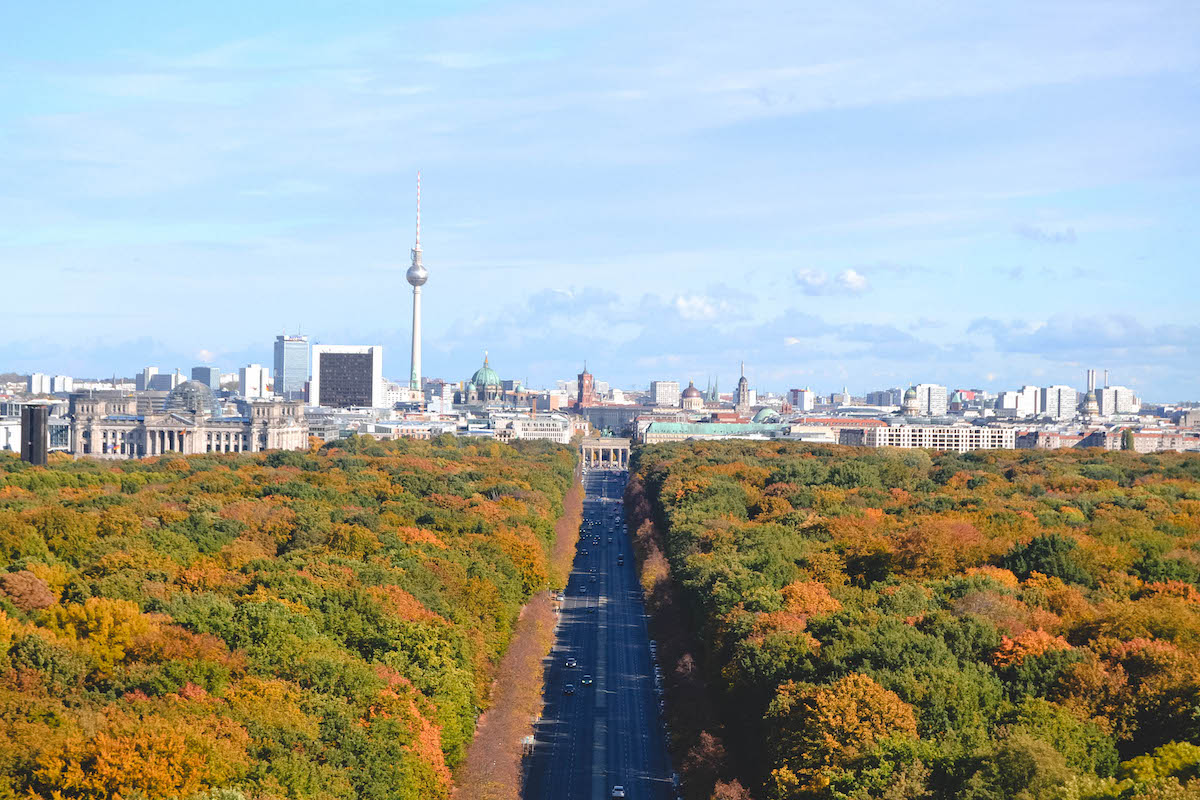
If you have the time, budget, and desire, make your way to the Victory Column at the center of the Tiergarten. It was built to commemorate Germany’s victories against Denmark, Austria, and France in the 1860’s.
You can pay a couple Euros to climb the 285 steps to the top of the tower for the most spectacular view down Straße des 17. Juni to the Brandenburg Gate.
Day 3 in Berlin: Cold War Sites & Local Hangout Spots
Your third and final day in Berlin will take you to some of the city’s most famous Cold War sites. In the afternoon, you’ll also get to explore parts of the Kreuzberg neighborhood, which is a popular hangout spot for locals.
We’re wrapping up your three days in Berlin by covering a lot of ground, but I’ve broken down the day into manageable chunks. Buy a day pass for public transportation because you can’t walk all of this!
Time needed: 90 minutes
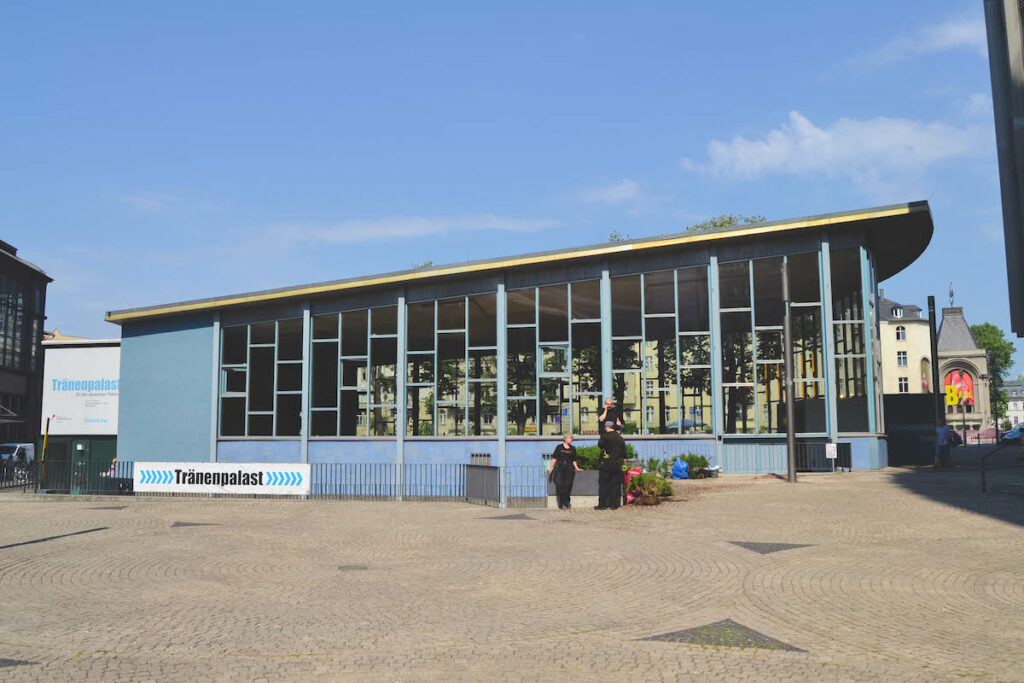
Located next to the Friedrichstraße train station, the Palace of Tears was one of the busiest check-in halls that monitored the flow of people traveling between East and West Germany .
Why the “Palace of Tears?” Because the Berlin Wall kept many friends and families apart for nearly 30 years, and this check-in hall witnessed countless tearful goodbyes between loved ones living in divided Germany.
The hall has been preserved since the Wall fell in 1989 and now houses an exhibition called “Site of German Division.” It explains how the border crossings between East and West Germany worked and gives visitors a glimpse into the past to better understand how difficult life under Soviet rule was.
Note that the Palace of Tears is free to enter and there’s no reservation needed.
Time needed: 1 hour
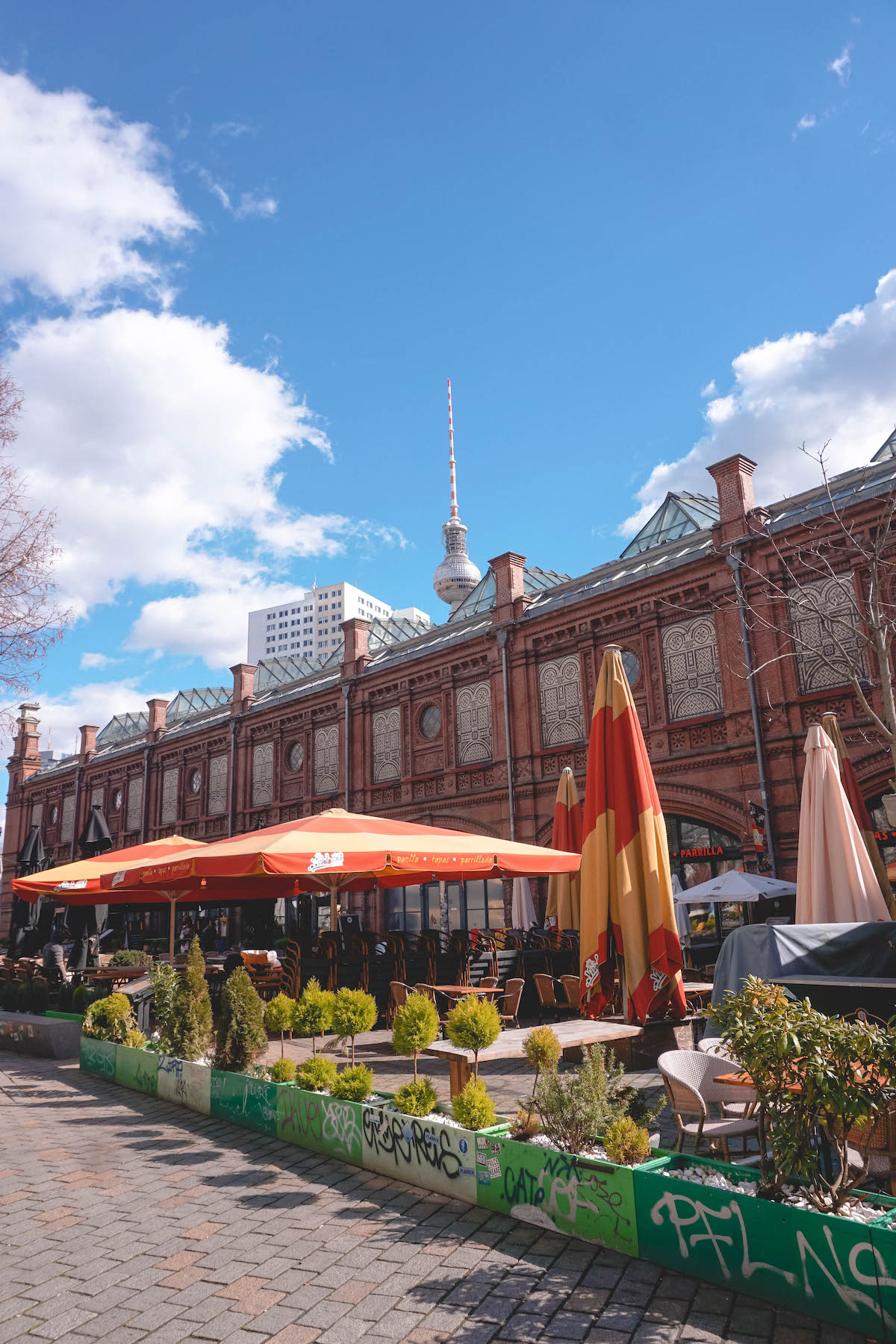
After visiting the Palace of Tears, hop on the S-Bahn at Friedrichstraße station and ride a few stops to Hackescher Markt. Here you’ll find lots of great food and shopping options; I recommend following Rosenthaler Straße if you’re looking for nice boutiques.
Be sure to also check out the Hackesche Höfe while you’re in the area. It’s a series of eight courtyards, all of which house local designers and shops.
If possible, try to plan your visit to Hackescher Markt on a Thursday or Saturday. There’s a weekly market held on those days, and it’s a great place to purchase locally-made products and handicrafts. Plus, there are some great (cheap!) food stalls at the market too.
Time needed: 45 minutes
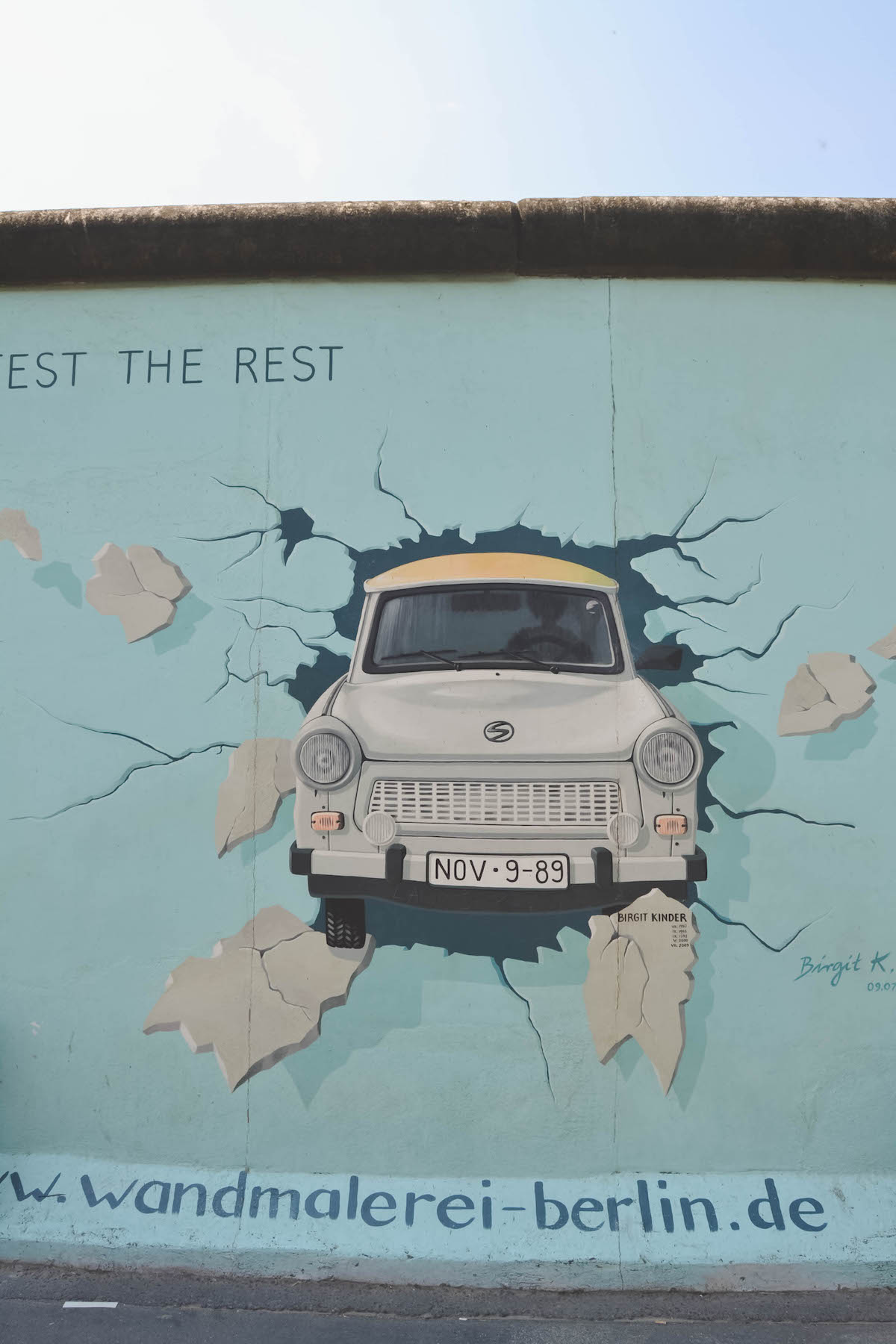
From Hackescher Markt, ride the S-Bahn for 5 minutes to reach the Ostbahnhof train station. From this station, you can walk along the Spree River in the direction of the Oberbaumbrücke (Oberbaum Bridge) to see the entirety of the East Side Gallery.
The East Side Gallery is another of Berlin’s most famous attractions. It’s the largest remaining section of the Berlin Wall, and it’s now the longest open-air gallery in the world. Moreover, it’s a living gallery that’s constantly being updated by talented street artists.
It’s easy to forget that something so beautiful was once a tool of imprisonment used by the Soviet government. It’s estimated that 100,000 citizens of East Germany tried to cross the Berlin Wall between 1961 and 1988 — of those, 600 people were either killed by the border guards or died by other means while trying to escape.
The East Side Gallery is a unique platform for street artists to display their skills, but it’s also a reminder of the Cold War and its lasting effects on the city.
Tip: After walking the length of the East Side Gallery, pop behind it to the park space that runs between the Wall and the Spree River. From the water, you’ll get a great view of the Oberbaum Bridge!
Oberbaum Bridge (Oberbaumbrücke)
Time needed: 15 minutes
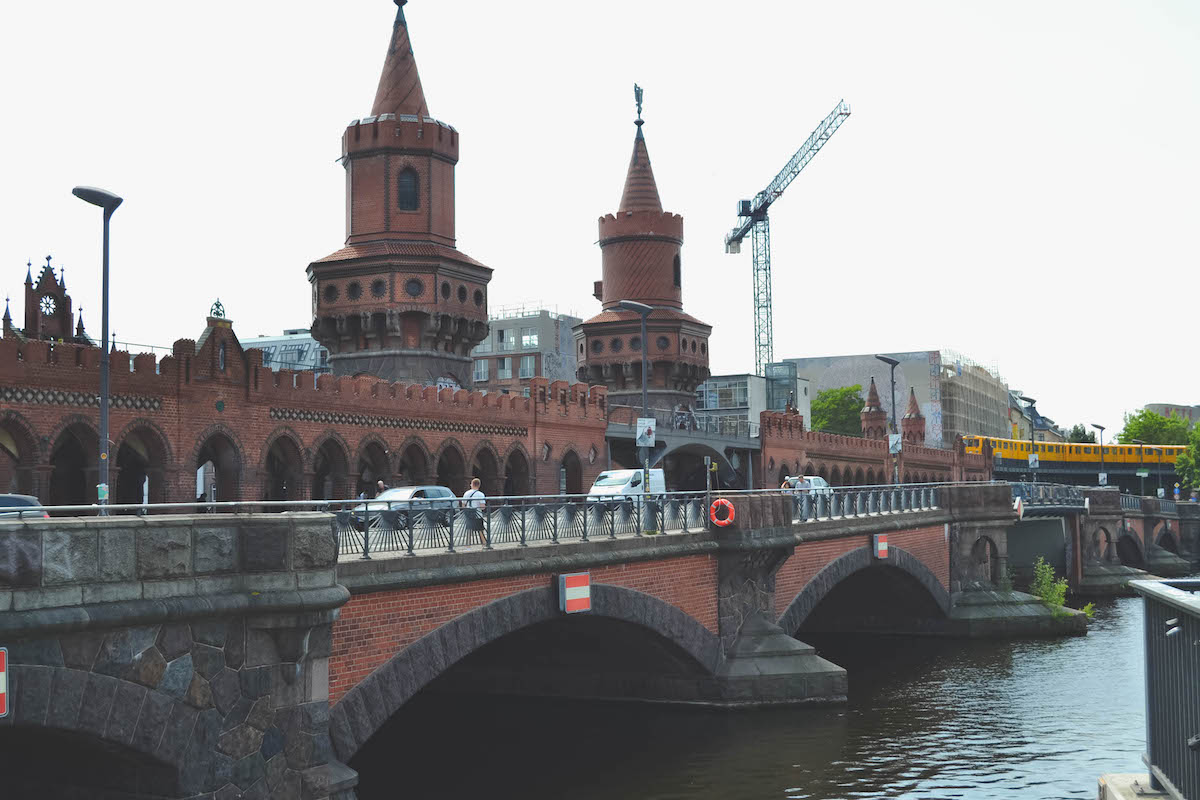
The Oberbaum Bridge crosses the Spree River and connects the former East and West portions of Berlin. This bridge served as a popular crossover point for westerners trying to enter East Berlin.
Take a good look at the red brick bridge and try to imagine armed guards patrolling it on either bank; it’s hard to imagine, isn’t it? In the spring, cherry blossoms trees bloom on both banks to symbolize peace in reunified Berlin.
While crossing the Oberbaum Bridge, you’ll notice that it’s split into two levels. The subway passes over the top portion of the bridge, while cars and pedestrians cross at the lower level (don’t worry, there’s a separate pedestrian walkway!).
Be sure to stop halfway along the bridge to admire the Spree River . At this point, you’re straddling the line between the neighborhoods of Friedrichshain (with the East Side Gallery) and Kreuzberg!
Markthalle Neun
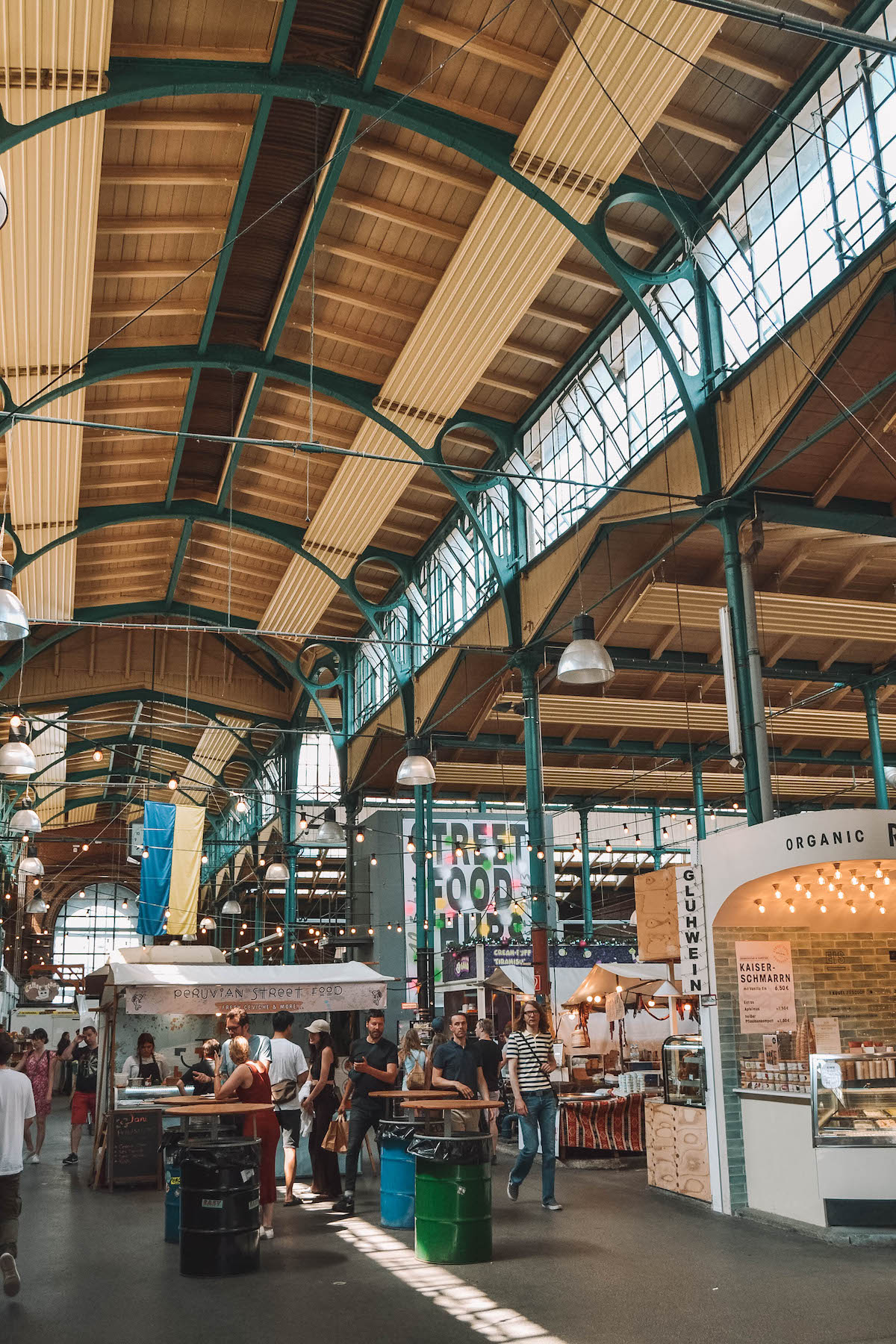
Berlin once boasted 14 market halls, with Markthalle Neun being the ninth opened (the name literally translates to “Market Hall Nine”). Eight of the former covered markets were destroyed in WWII, and Markthalle Neun is one of four that are still in operation.
Markthalle Neun is packed every time I go to do some shopping or grab a quick bite to eat — but the market hall hasn’t always been that fortunate. Following WWII, Markthalle Neun managed to remain in operation but by the 1970s it was struggling to compete with discount grocery chains like Aldi.
The Markthalle lost its last local vendor in 2003 and was essentially dead. Thankfully, the market received new funding and was effectively revived in 2011 and has remained a popular meeting place in the city ever since!
Markthalle Neun is open Monday through Saturday, with a few notable events happening each week:
- Thursdays: Street Food Thursdays. A fun way to sample street food from all over the world!
- Fridays and Saturdays: when the weekly market takes place; fresh fruit and vegetables, handmade breads and cheeses, plus locally produced honey and spices are always for sale.
- Quarterly: Naschmarkt, aka a “snack market” selling all things sweet, savory, and snacky. Get excited to try handmade cannoli, chocolates, honey, sausages, and more! Check the Markthalle Neun website to see when the next Naschmarkt is taking place.
Landwehr Canal
After stuffing yourself at Markthalle Neun, enjoy a leisurely walk to prepare your stomach for one last meal in Berlin. From the market, I recommend making your way to Kottbuser Tor via Oranienstraße to get a glimpse at life in the hip neighborhood of Kreuzberg.
From Kottbuser Tor (one of the ugliest intersections in all of Berlin, fair warning!), head towards the Spree River via Kottbusser Straße. Once you reach the water, you can explore the banks of the river in either direction.
Heading west will take you to the Admiralbrücke , a gritty but popular cobblestone bridge where locals gather to chat, enjoy a drink, and watch the sunset. If you keep going west, you’ll reach prettier green spaces on either bank of the Spree. In the summer, this area is packed with locals laying out on the grass and relaxing.
If you head east along the river from Kottbusser Straße, you’ll pass by some of my favorite eateries in Kreuzberg!
Enjoy the City’s Nightlife (Optional)
If you’re not yet ready to end your adventures in Berlin, Kreuzberg is one of the best places in the city to grab a drink and enjoy the city’s nightlife.
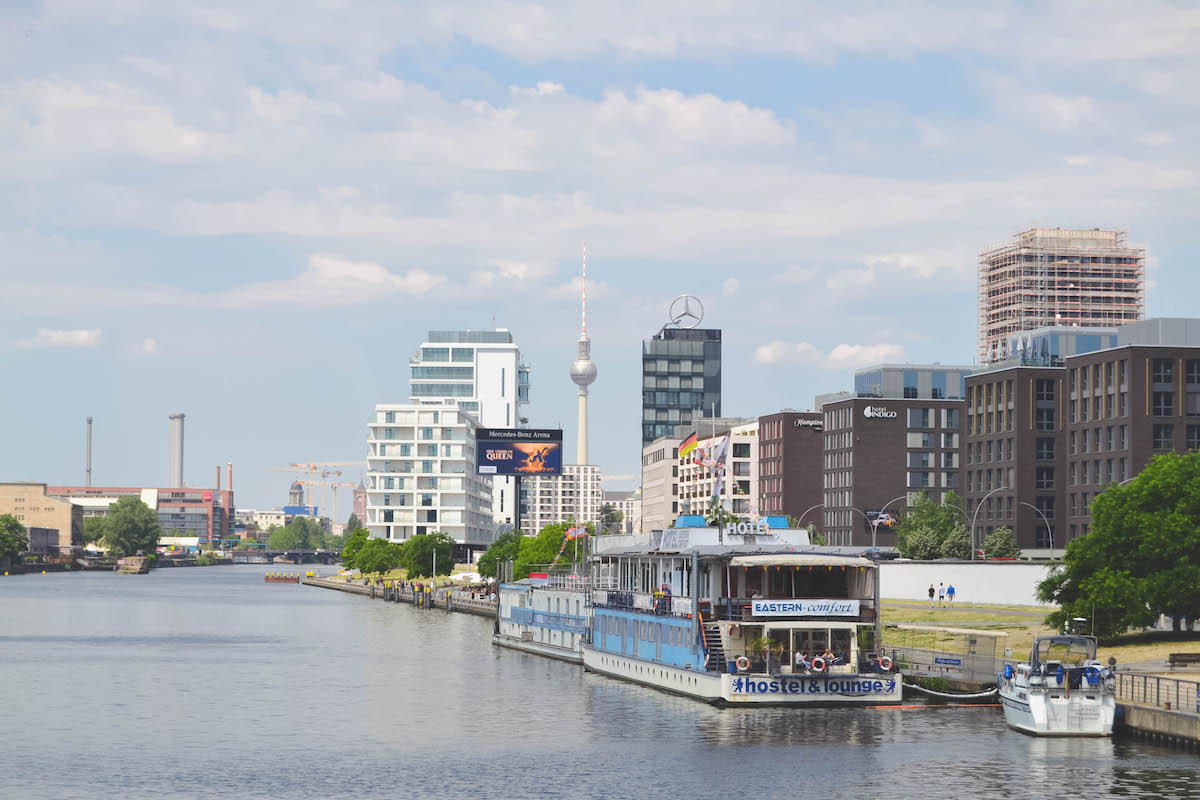
Even More Things to Do in Berlin!
If you’ve visited Berlin before, have more than three days to see Germany’s capital city, or simply want to escape the city center and explore like the locals, here are even more things to add to your itinerary:
- Best Indoor Activities in Berlin — ideal for rainy or snowy days
- Favorite Free Museums in Berlin — if Museum Island appealed to you, but you don’t have the budget for it
- Berlin’s Best Flea Markets — definitely try to visit a flea market if you’re in town over the weekend!
- Truly Unique Things to Do in Berlin — the best places to get off the beaten path
- Free Things to Do in Berlin — this is a monster of a list, because it’s actually SO easy to see Berlin on a budget!
I’ve also gone on one of those boat tours of the Spree before, and while it’s not my favorite way to see the city I know lots of people love that kind of activity when they travel.
FAQs About Visiting Berlin
How many days do you need in berlin .
In a perfect world, you’d have at least four days in Berlin. Five days would be even better because then you could take a day trip to Potsdam or another nearby city. I also recommend spending more than 72 hours in Berlin because it’s a sprawling city with lots of wonderful attractions that lie far beyond the city center.
Are 3 days in Berlin enough time?
Honestly, no! But three days in Berlin will still give you a good feel for the city. I know a lot of people only plan on spending 2 to 3 days in Berlin (it’s a wonderful weekend getaway in Europe!), which is why I created this jam-packed itinerary specifically to help you see both the top tourist attractions as well as some fun local areas!
Is Berlin a walkable city?
Yes, very much so! However, there are a few times throughout this itinerary that you will need a subway ticket to save your aching feet.
Berlin is easily walkable, but it’s a huge city. Once you leave the Alexanderplatz / Unter den Linden area, the attractions are spaced further apart and you simply cannot walk to everything I mention in this post!
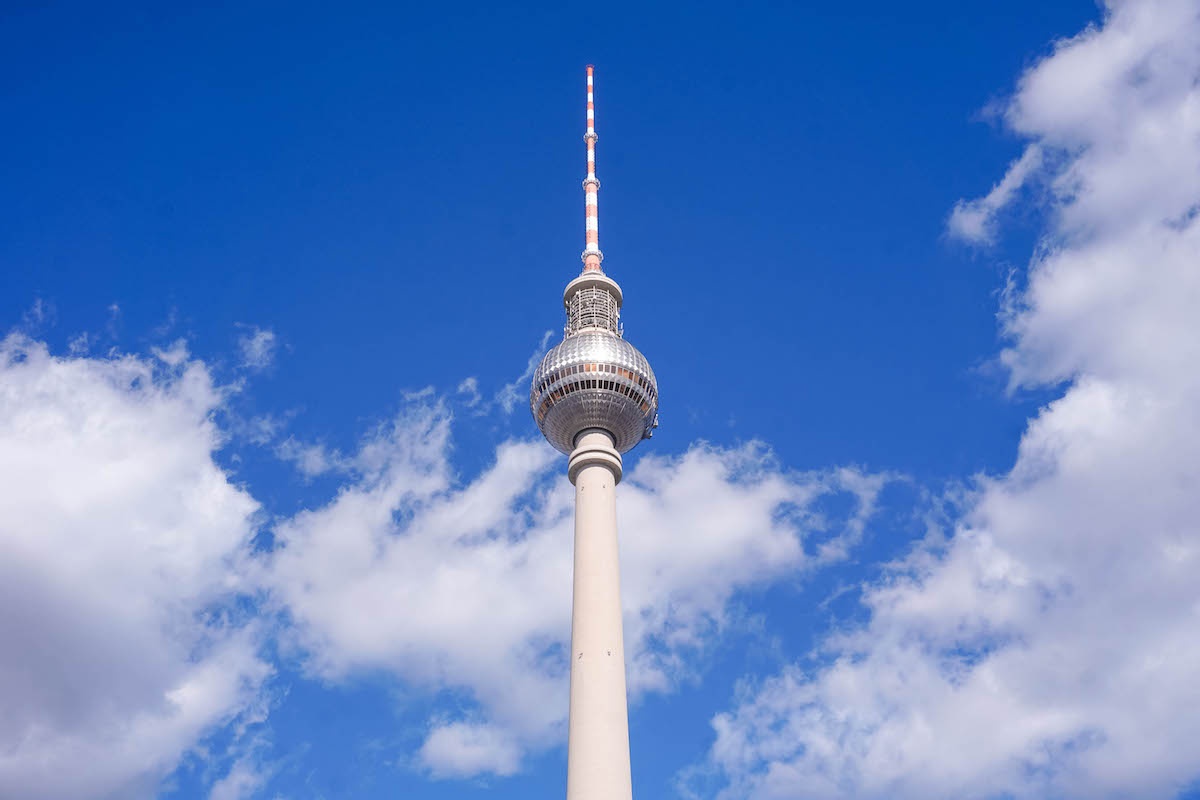
Should I buy a subway pass in Berlin?
Yes! You’ll need a day pass (zone AB) for days two and three of this itinerary. One the first day, you should be fine to buy the two or three tickets you’ll need for the whole day individually.
Is Berlin an expensive city?
No, Berlin is a fairly affordable city to visit when compared to other European capital cities like Paris, London, and Copenhagen. However, like many places around the world, Berlin has been hit by recent inflation and you see that reflected in hotel and restaurant prices.
If you have specific budget questions, leave me a comment below and I’ll do my best to help! I’ve lived in Berlin since 2019 and know quite a bit about the city by this point.
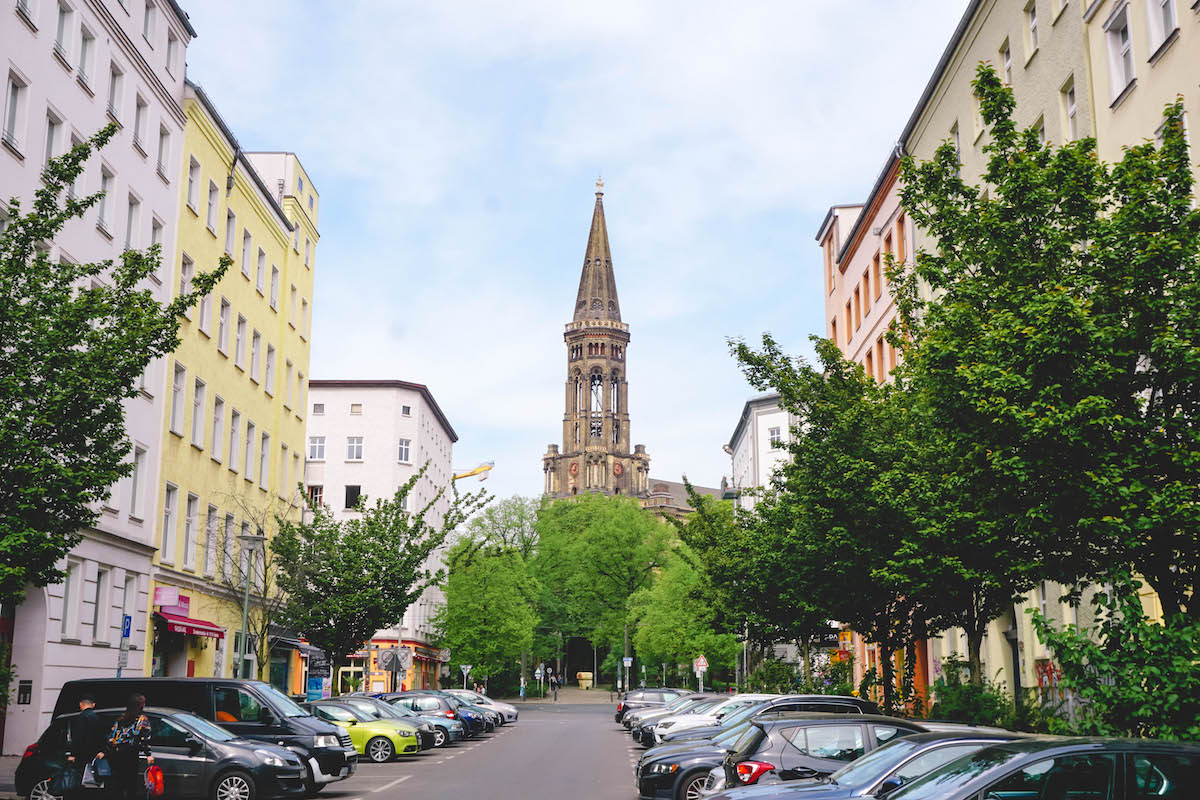
What’s the best area to stay in Berlin?
It depends on how long you’ll be in the city and what vibe you’re going for:
- Mitte will be more expensive since it’s the city center, but it’s best to be centrally located if you’re in Berlin for just a few days, don’t want to waste too much time traveling on public transportation, or need to be close to the main train station.
- Prenzlauer Berg is one of the nicest neighborhoods in Berlin and is ideal for anyone traveling with kids. This is a very family-friendly neighborhood, with lots of parks and playgrounds dotted throughout. Prenzlauer Berg is still fairly centrally located and is easy to access all of the attractions shared in this itinerary from here.
- Friedrichshain is the hipper neighbor to Prenzlauer Berg. Again, lots of great eateries and cafes and is a good jumping off point for your daily adventures.
- Kreuzberg is a bit grittier but has some exceptionally beautiful areas too. It’s not centrally located, but it’s a very popular neighborhood with locals and has a great nightlife.
- Charlottenburg will likely be the most expensive, but if you want a taste of “Old Berlin” then this is the place to stay. Make sure your accommodations are within walking distance of an S-Bahn line (not just the U-Bahn!) or else you might find it difficult to navigate the city quickly.
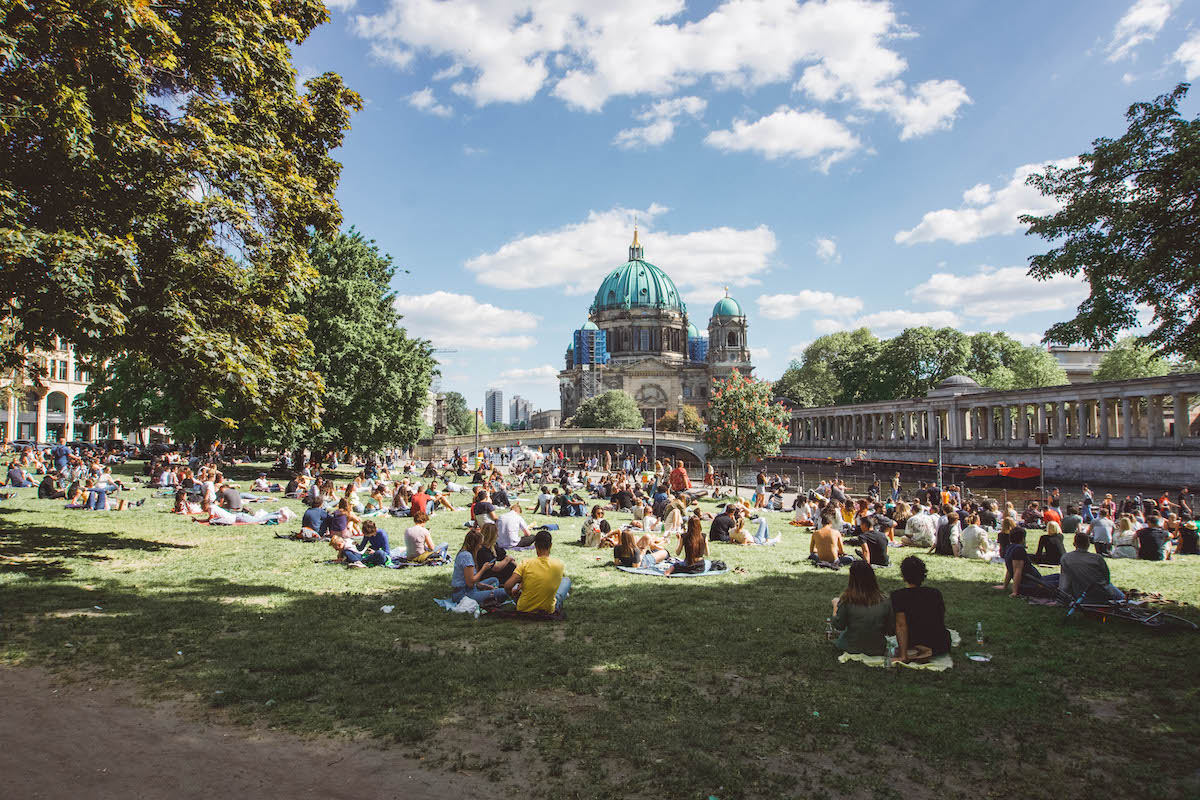
When are stores closed in Berlin?
Most of the city’s stores and main attractions are closed on Mondays. Don’t worry, there are still lots of fun things to do in Berlin on Mondays — you just have to be creative!
When are museums closed in Berlin?
Most museums are also closed on Mondays, including the museums mentioned on this itinerary. Think ahead and adjust the itinerary as needed to suit your travel dates.
Is Berlin worth visiting on a Sunday?
Heck yes! Many visitors mistakenly believe that Sundays are the quiet days in Berlin, but pretty much everything is still open on a Sunday. Here are all of my favorite things to do in Berlin on a Sunday , should you need more ideas than I’ve mentioned in this post.
Are there any good day trips from Berlin?
Yes, there are lots of wonderful, easy, and QUICK day trips from Berlin . If this is your first time in Berlin, plan on spending the full three days in the city. If you have more time or are a return visitor, my top day trip suggestion is Potsdam, with Leipzig and Hamburg being my next picks. You can book train tickets through the Deutsche Bahn website or through Omio .
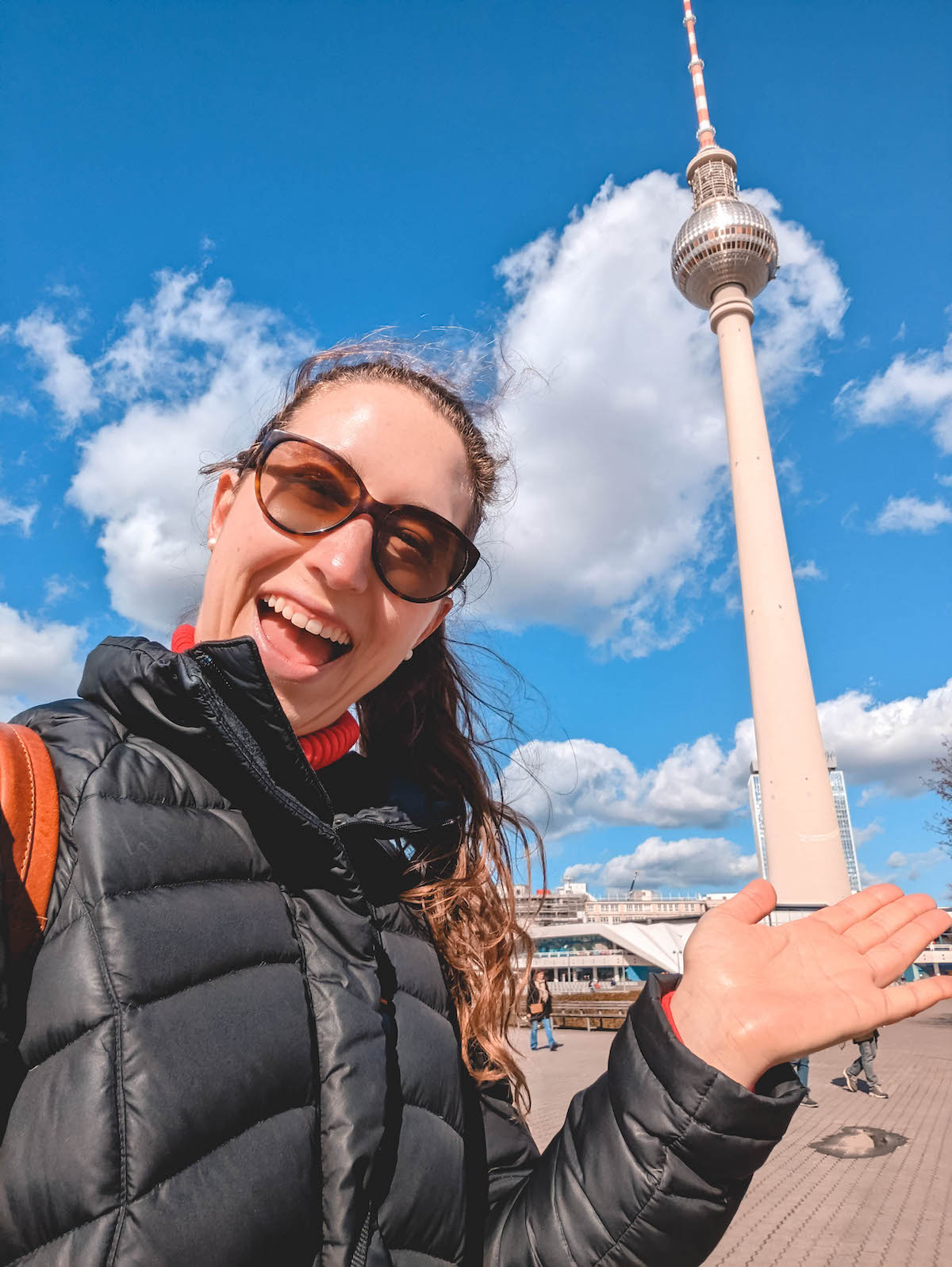
Enjoy Your 72 Hours in Berlin!
I know this was a beast of an itinerary, but hopefully it gave you the information you need to plan a trip to Berlin. Leave me a comment below with any comments or questions you might have, and have so much fun on your visit!
Don’t forget to follow me on Instagram to keep up with my daily adventures in Berlin and beyond!

More Places to Visit Near Berlin:
- What to Do in Hamburg, Germany
- Things to Do in Bremen, Germany
- The Best Cities to Visit in Northern Germany
- All of my Germany travel recommendations!
Reader Interactions
Leave a reply cancel reply.
Save my name, email, and website in this browser for the next time I comment.
This site uses Akismet to reduce spam. Learn how your comment data is processed .
Comments & Reviews
August 3, 2023
Thanks for the tips.
October 29, 2023
Thank you so much for a fantastic guide, we are 2 couples visiting Berlin for the first time next week and this is really helpful.
October 30, 2023
So glad you found this itinerary useful, Susan! Enjoy your time in Berlin!
November 8, 2023
I’ve been obsessively reading your posts about Berlin and the holidays to prepare for a 3-day first time trip to Berlin between Christmas and New Year’s, thank you for writing with such detail and passion! I would love any restaurant recommendations you have, we will be staying in the Charlottenburg-Willmersdorf area. We plan to do Christmas markets/Ku’damm for a day (using your guide), Museum Island and the Berlin Cathedral /Reichstag views the second, and historical sites the third. Any restaurant tips would be amazing. Thank you for your time!
November 9, 2023
Thanks so much for the kind comment, Kristen! I put a lot of time and effort into writing each post from scratch, selecting and editing the photos, adding links, etc. in hopes of encouraging people to visit Berlin and Germany so it makes me so happy to hear you’ve found all of my guides useful!
Okay, restaurant recs: Charlottenburg has some great Asian food along Kantstrasse, my favorite places being Papaya and Thai-Art. Also in that area are some great bakeries and cafes, including Der Kuchenladen (great place for coffee + cake in the afternoon!), A Neverending Love Story, and Zeit Für Brot (awesome cinnamon buns!).
The Cathedral / Reichstag area has fewer places to eat and is more geared towards tourists (i.e. pricey). Curry 61 does good Currywurst (local to Berlin!), Banh Mi Stable (Alte Schönhauser Str. 50) is a bit of a walk but it’s great 5 Euro sandwiches, Chupenga is the Berlin answer to Chipotle, and if you head down Friedrichstrasse towards Gendarmenmarkt there are some more fast-casual places to eat for lunch.
The Christmas markets all open before lunch and are also a good place to grab a bite to eat. You won’t find any veggies here that aren’t deep fried or covered in cheese though, haha.
January 24, 2024
Hello! I’m visiting Berlin in March end this year (2024) and this itinerary is really helpful! I wanted to know if there’s anything we should prebook before our trip?
January 25, 2024
I’m so happy to hear you found this itinerary helpful, Ruchita! The only activity mentioned that you MUST book well in advance is your visit to the Reichstag. You’ll also need to bring your passport or another internationally-recognized form of ID with you since security in front of the Reichstag is very strict. Otherwise, you shouldn’t need to book tickets in advance for the museums, etc. Let me know if you have any more questions and enjoy your time in Berlin!
February 6, 2024
Claire, wunderschön itinerary! You found a great way to maximize a short amount of time in a wide spanning city. I spent a summer in Berlin and passed your site on to family members visiting for the first time. It checks all the boxes and saved me a lot of work :).
I recommend a correction to your write-up on the Memorial to the Murdered Jews of Europe section. Edit: The memorial is a sobering reminder of the millions of Jews who lost their lives under the oppressive Nazi regime. (You currently have the unit at thousands, which is inaccurate. It was approximately six million European Jews.)
Grüße aus den USA
Hi Farrah, thanks so much for your kind words on this itinerary and my site in general. That means a lot to me! Also, I’ve made the correction to the Memorial section; I do my best to fact check all the details in my posts, but sometimes mistakes slip through. I appreciate you taking the time to leave a comment to flag that error!
March 7, 2024
We just spent 3 days in Berlin following most of the points on your itinerary and we really enjoyed it- thank you for the inspiration!
I’m so glad to hear that, Susan! I put a lot of time and thought into crafting this itinerary, and I’m so pleased it proved useful in planning your trip.
- About Claire
- Get in Touch
- Read the Blog
- Privacy Policy
Keep Up With Latest Travels!
Subscribe to the newsletter and join me on all the latest adventures, travel tips and more!

- Meet the Team
- Work With Us
- Itineraries
- Italy Travel Guide
- Hawaii Travel Guide
- Travel Tips
Shortcut Guides
Essential travel guide to berlin, germany [updated 2024].
Berlin is a city that holds a certain mystery, due to its interesting history that forever changed the world. Between its storied past and its modern present day, Berlin is a great place to visit.
If you’re planning a trip to Berlin, we’ve got you covered with our essential travel guide to Berlin, which includes what to do, see and eat in the city, along with an informative and helpful infographic that will give you a quick peek at all the top things you should plan to do in Berlin.
» You might be interested in these 13 Popular German Foods You Must Try.
![Essential Travel Guide to Berlin, Germany [Updated 2024] 5 Berlin](https://www.savoredjourneys.com/wp-content/uploads/2019/09/berlin-first.jpg)
Do keep in mind that Berlin is a very popular tourist destination, so hotels, tours and activities fill up quickly. It pays to plan ahead for your visit to Berlin, by booking your hotel, figuring out transportation, and deciding on what you’d like to do. This 3-day Berlin itinerary is the perfect guide. For more information on traveling through Germany check out this 7-day Germany itinerary.
If your plans take you to other parts of Europe, check out our how to plan a trip to Europe guide.
↓ Click to jump down to the bottom to see the infographic.
- The right luggage can make or break your trip. These hard-sided suitcases come in 2 sizes, with spinner wheels and TSA-approved lock.
- Renting a car? The Rentalcars.com app lets you search and compare offers. Don’t forget to check if you need an International Drivers License.
Table of Contents
What Are the Top Things to Do in Berlin?
The top things to do in Berlin are seeing the Brandenburg Gate, the Reichstag Building, visiting Museum island – which houses a cathedral and art museum, admiring the Berliner Philharmonic building, the spire with its viewing platform, and Checkpoint Charlie.
There are walking tours of the city that will help you understand its history, as well as foodie things to do (don’t miss Markthalle Neun on Thursdays)!
![Essential Travel Guide to Berlin, Germany [Updated 2024] 6 Brandenburg Gate in Berlin](https://www.savoredjourneys.com/wp-content/uploads/2019/09/brandenburg-gate.jpg)
With so many great things to do in Berlin, you really need to set up a good itinerary before you leave, to make sure you can fit everything in. You can pre-book some of the activities listed in our shortcut travel guide to Berlin (below) on Viator . (Note: These are affiliate links for which we may receive a small commission.)
- Berlin Half-Day Walking Tour – this tour lasts 3.5 hours and gives a great overview of the city and its history, while visiting the Brandenburg Gate, the Reichstag, the Holocaust Memorial, Checkpoint Charlie and the Topography of Terror.
- Private Walking Tour: World War 2 and Cold War Sites in Berlin – If you’re a history buff, you’ll enjoy this private 4-hour historical walking tour.
- Berlin Neighbourhood Food Tour: Classic Bites and Culinary Trends – You can’t miss the opportunity to do a food tour in Berlin to try some of the most classic foods from the city, like Currywurst, Austrian Dumplings, and handmade falafel. The tour is 3.5 hours long and includes many food and drink samples.
- Sachsenhausen Concentration Camp Memorial Tour – On this 6-hour tour, you can visit and learn more about Sachsenhausen, one of the first concentration camps established by Nazi Germany’s Third Reich. It leaves at 10am from the train station.
Where is the Best Place to Stay in Berlin?
The best locations for tourists in Berlin is right in the center of the city, called Mitte. From here, you’ll be in easy walking distance of all the top sights and you won’t need to take public transportation unless you want to head further outside the main areas.
Of course, the prices are much higher in the center of Mitte, so if you’re looking for affordable luxury at a slightly lower rate, check the areas just on the fringe of Mitte, especially to the west, near the park.
A great choices in the affordable luxury range in the center of Mitte is the Hilton . It’s right in the center of the Mitte area, and the closest hotel to everything.
![Essential Travel Guide to Berlin, Germany [Updated 2024] 7 Hilton Hotel Berlin](https://www.savoredjourneys.com/wp-content/uploads/2019/09/hilton-berlin.jpg)
We enjoyed staying at the COSMO Hotel (newly opened Design Hotel) to the southeast. The Radisson Blu to the northeast and the Grand Hyatt to the southwest are also good choices.
- Hilton Berlin ⇒ Read reviews on Trip Advisor | Book a stay
- The Grand Hyatt ⇒ Read reviews on Trip Advisor | Book a stay
- COSMO ⇒ Read reviews on Trip Advisor | Book a stay
- Radisson Blu read reviews on Trip Advisor | Book a stay
How Long Should You Spend in Berlin?
Most travelers spend from 2-3 days in Berlin. If you’re short on time, or combining Berlin with other Germany destinations, then that’s plenty of time to see the main attractions and get a feel for the city.
The main sights most visitors wish to see are within close proximity to each other in Mitte. You can expect to do a lot of walking, but it’s also easy to get from sight to sight on the tram or metro. If you want to take side trips outside of Berlin, to the concentration camps for instance, you’ll need more time.
![Essential Travel Guide to Berlin, Germany [Updated 2024] 8 berlin, germany](https://www.savoredjourneys.com/wp-content/uploads/2019/09/berlin-germany1.jpg)
When is the Best Time to Visit?
Berlin is a fun and vibrant city that is always alive with activity. The nicer weather leads to many outdoor festivals and beer gardens. The winter brings out the Christmas market stalls and Gluhwein drinking while strolling through the festive streets. I wouldn’t really say there’s a bad time to visit Berlin. It all depends on what season you like best and what activities you are hoping to do.
What To Eat in Berlin
You might be expecting the typical German foods in Berlin, but schnitzel isn’t the only thing on the menu in this melting pot of a city. There is a great international food influence in Berlin that leads to a lot of fusion. If you’re lucky enough to be in Berlin on a Thursday, be sure to check out all the street-food vendors at Markthalle Neun . It opens at 5pm and features dozens of food options.
![Essential Travel Guide to Berlin, Germany [Updated 2024] 9 Curry Wurst in Berlin](https://www.savoredjourneys.com/wp-content/uploads/2019/09/currywurst-germany.jpg)
Currywurst – Even before I spent any time in Berlin, I knew about the Currywurst. It’s Bratwurst served with curry powder and ketchup, plus generally a side of fries. It’s one of the most popular street food dishes in Berlin.
Schnitzel – It wouldn’t be Germany unless schnitzel was on the menu. It’s a huge piece of breaded, fried pork cutlet, typically served with potatoes.
Berliner Pfannkuche – Yes, it’s a Berlin pancake, but it’s really more like a donut without a hole. It often comes stuffed with jam and dusted with powdered sugar.
Falafel & Doner – Just about as popular as the currywurst is the falafel and doner in Berlin. It’s a great snack, even if it’s not particularly German, and you can find it everywhere.
Food Tours You May Enjoy:
- Berlin Evening Food Tour
- Kreuzberg and Neukölln Walking Food Tour in Berlin
Essential Travel Guide to Berlin
![Essential Travel Guide to Berlin, Germany [Updated 2024] 10 Berlin Attractions](https://www.savoredjourneys.com/wp-content/uploads/2019/09/Berlin-essential-guide-1.jpg)
Frequently Asked Questions
The top things to do in Berlin are seeing the Brandenburg Gate, the Reichstag Building, visiting Museum island – which houses a cathedral and art museum, admiring the Berliner Philharmonic building, the spire with its viewing platform, and Checkpoint Charlie. There are walking tours of the city that will help you understand its history, as well as foodie things to do (don’t miss Markthalle Neun on Thursdays)!
The best locations for tourists in Berlin is right in the center of the city, called Mitte. From here, you’ll be in easy walking distance of all the top sights and you won’t need to take public transportation unless you want to head further outside the main areas. Of course, the prices are much higher in the center of Mitte, so if you’re looking for affordable luxury at a slightly lower rate, check the areas just on the fringe of Mitte, especially to the west, near the park.
Quick. Check these necessities off your prep list!
- There’s no one-size-fits-all travel insurance . Get a personalized quote from Yonder .
- The right luggage can make or break your trip. These hard-sided suitcases make traveling a breeze.
- Find your rental car on DiscoverCars.com . They search all major rental companies to find the best deal.
No matter how much time you spend in Berlin – from just a few days to a full month – you’ll be able to discover fascinating parts of the city you would never believe existed. We hope this travel guide to Berlin helps you easily plan your trip.
We’re happy to help answer your questions, if you need help planning.
Be Prepared For Travel Planning is the most important part of any successful trip. Do it the easy way:
🧳 Travel Packing List | ✔️ Why You Need Travel Insurance | ✈️ What to Do Before You Leave Home
- Find and book the best hotel (our favorite booking site is Expedia)
- Research flight options (our favorite tool is Skyscanner )
- Book a tour (we always use Viator to find the best tours)
- Rent a car through Discover Cars (they search the best deals for you!)
YOU MIGHT ALSO LIKE

How to Plan a Trip to Oktoberfest in Munich

37 Biggest Travel Mistakes and How to Avoid Them

13 Popular German Foods You Must Try

Warnemunde Germany: The Best Little Town You’ve Never Heard Of
Pin it for later.
![Essential Travel Guide to Berlin, Germany [Updated 2024] 11 Laura](https://www.savoredjourneys.com/wp-content/uploads/2023/11/laura3.jpg)
Laura Lynch, creator and writer of Savored Journeys, is an avid world traveler, certified wine expert, and international food specialist. She has written about travel and food for over 20 years and has visited over 75 countries. Her work has been published in numerous guidebooks, websites, and magazines.
One thought on “ Essential Travel Guide to Berlin, Germany [Updated 2024] ”
This sounds like a perfect travel guide for Berlin! Would love to visit!
Leave a Reply Cancel reply
Your email address will not be published. Required fields are marked *
Save my name, email, and website in this browser for the next time I comment.
- Travel Resources

All Destinations , Europe , Germany
Planning a trip to berlin: everything you should know.
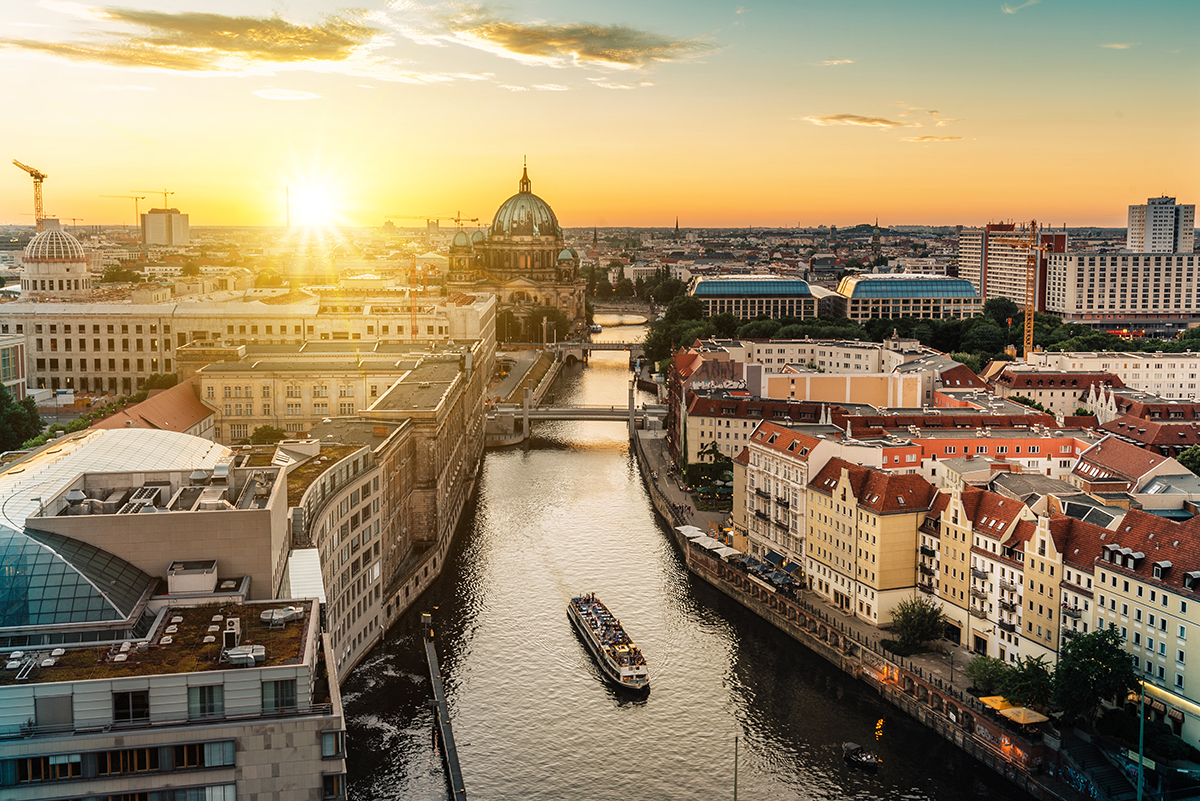
Are you planning a trip to Berlin? If so, I’ve got some tips for you!
I visited Berlin for the first time in my adult life in 2019, and ended up loving the city so much I stayed for almost three weeks!
You don’t need that long in the city, though – I was rushing around frantically, trying to ensure that I had enough information to be able to give people Berlin travel advice once I left.
This post covers just that. If you are thinking of going to Berlin but need some tips for planning your visit, I’ve got you covered.
Here are some things to consider when you’re booking your Berlin trip.
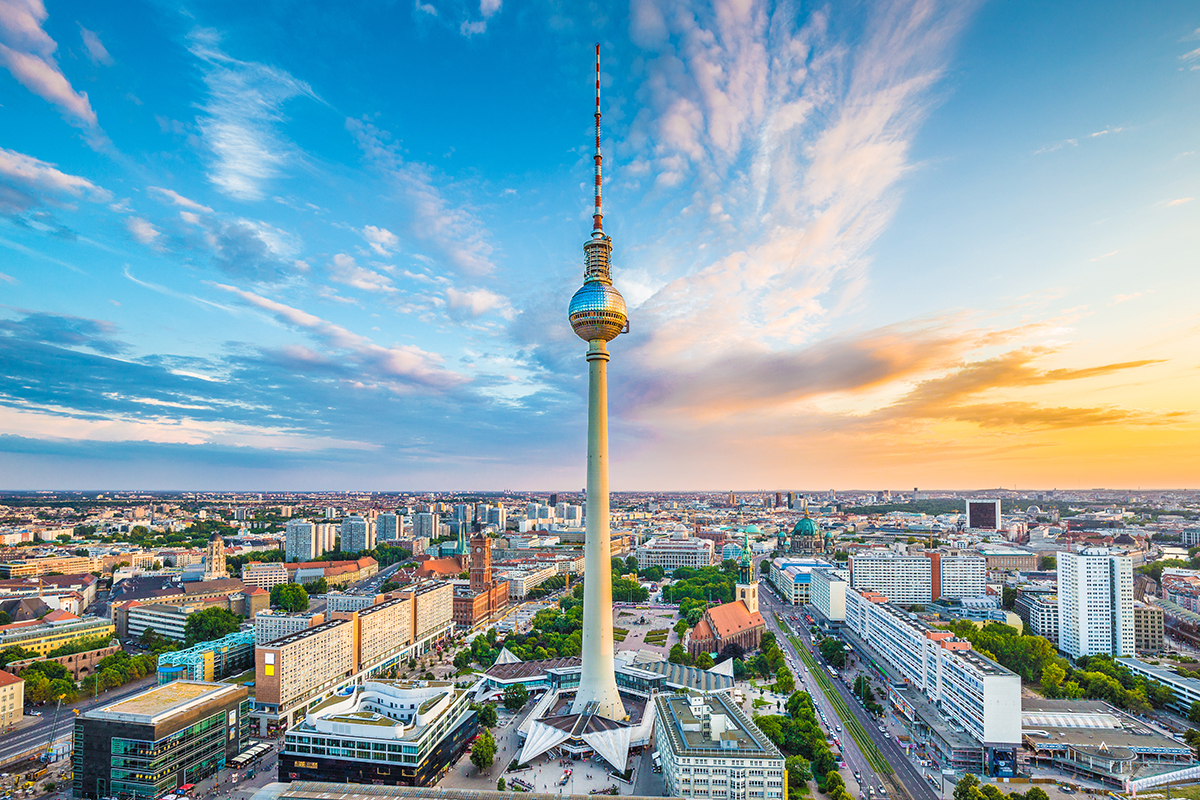
Shop around for flight prices
Berlin is a transport hub, and you should be able to fly here from most destinations in Europe and many in North America and Asia – as well as some places further afield.
However, some flights can be a lot more than others! To ensure that you get the right deal, I recommend using Omio’s flight checker .
Do try to book your flights to Berlin in advance too. I ended up booking mine last minute and having to pay almost double the original price I’d looked at!
Consider overland travel
If you want an adventure, why not try to travel to Berlin overland? There are many ways to do this – you could take a train from elsewhere in Europe or try Flixbus, a European coach company.
This is often cheaper than flying and more eco-friendly!
You will need some cash
Despite the fact that it is such a modern city, Berlin surprisingly doesn’t accept cash in many places, especially for transactions.
To avoid hassle when you get there, I’d recommend changing some money into Euros before going. Once you’re there, try to break notes down so you have some change.
If you don’t spend all of this while you’re there, you’ve always got it for next time you visit Germany, Spain, France – or anywhere else that uses Euros!
Plan the attractions you want to see in advance
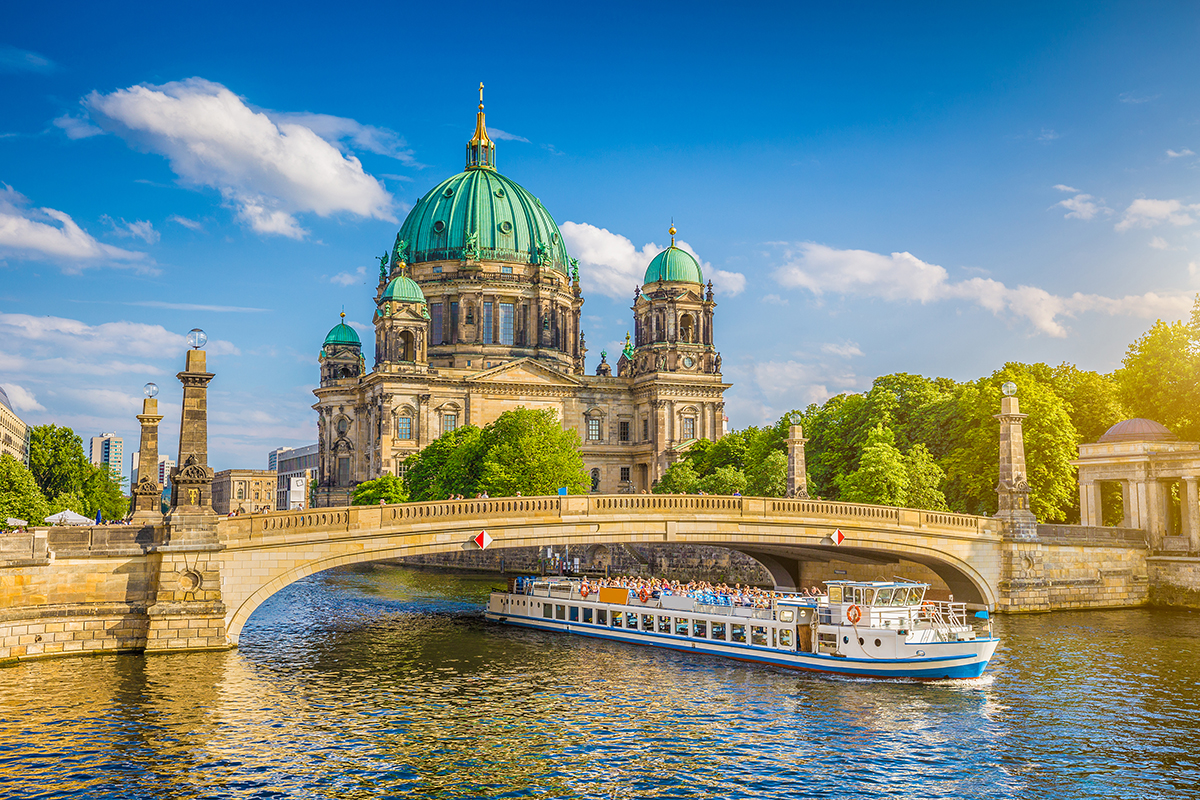
Berlin is absolutely brimming with world-class attractions. It would take you years to see them all – but there are certainly some highlights that you can enjoy with just a limited time. Here are some things that you can’t miss.
- The iconic Brandenburg Gate .
- The equally iconic Berlin Wall – part of it that is still remaining has now been decorated with street art and is now East Side Gallery . You can also visit Checkpoint Charlie , although this area is very touristy.
- The DDR Museum – this was my favourite Museum in Berlin.
- The Memorial to the Murdered Jews of Europe – this is obviously a very upsetting place to visit. But it is essential to learn about.
- The Stasi Museum – a fascinating museum about spies in East Germany.
- The Tranenplast , which is the ‘house of tears’ and is all about families who lived either side of the Berlin Wall.
- Charlottenburg Palace , which is an old Prussian palace.
- Templehof , a disused airport.
- The Reichstag – this is the parliament building of Berlin and is a great place to learn about German politics, past and present.
- The David Hasselhoff Museum is more a shrine than a museum, but it’s worth visiting for the comedy factor, especially because many Berlin attractions are quite heavy. After visiting the museum, you can go upstairs to the bar to enjoy a stein of beer!
- There are also lots of day trips that you can do from Berlin , including Potsdam and Wannsee.
If you want to see how these attractions fit together, take a look at my 3 days in Berlin itinerary .
Do at least one walking tour!
One of the best ways to learn about Berlin’s diverse history is through a walking tour. There’s so much to see in this city, and a trained guide will show you around the best of it, taking you to hidden places that you wouldn’t have known about otherwise. It’s well worth doing!
I always to European walking tours with SANDEMANS . They do a general walking tour, a communist tour, a Third Reich tour an alternative culture tour – and more!
If you don’t want to walk, try a hop on hop off bus tour!
Consider booking accommodation in the East Side
Most people stay in gentrified areas like Kreuzberg and Mitte when they visit Berlin, but you can get some great deals in hotels a little further out of the centre.
I stayed in The Niu Hide, which was a funky and modern hotel. It takes a little while to get to the city centre from here, but it’s well worth it for the lower prices!
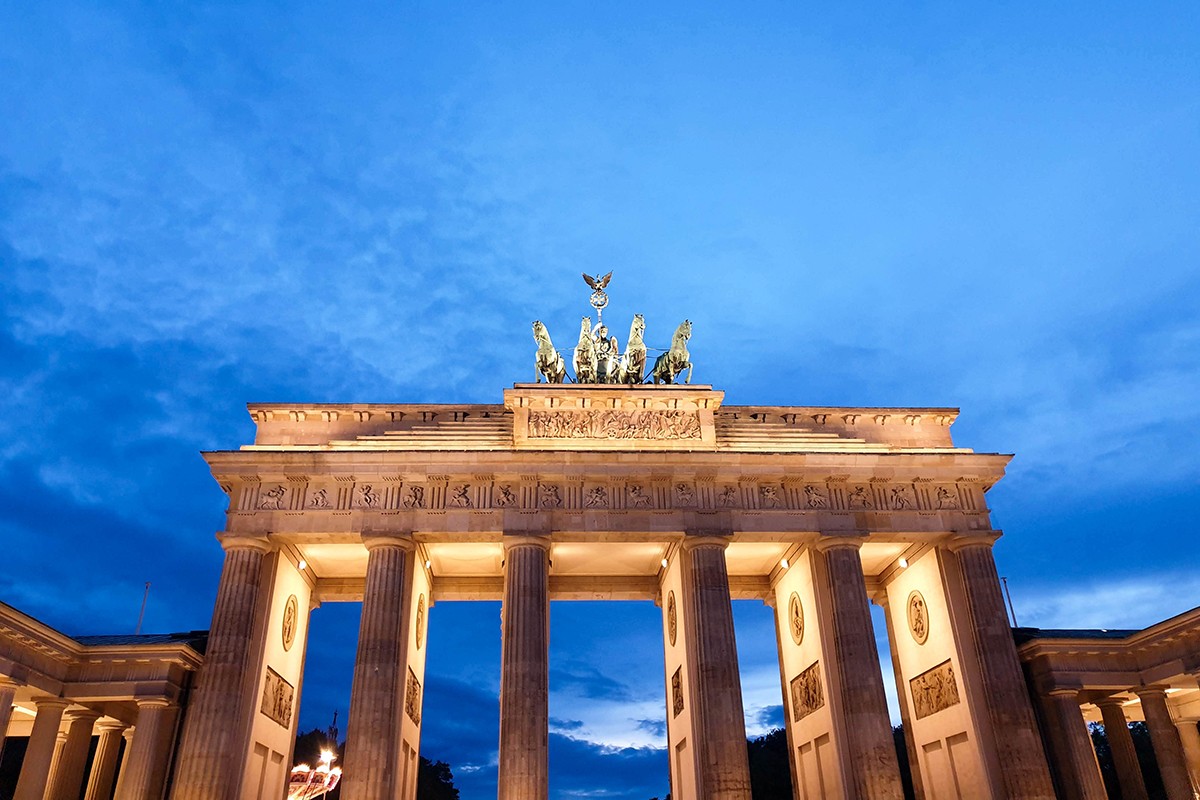
Everybody in the tourist industry will speak English – but it never hurts to brush up on your German!
Germans are exceptionally good at speaking English, and you’ll find that most younger people will be able to converse in English – definitely if they work in the tourist industry.
However, it never hurts to speak a little of the local language, even if the other person can speak perfect English.
Saying “Guten tag” instead of hello or “Danke” instead of thank you shows that you respect their language.
You can also say “sprechen sie englisch?” to somebody before talking to them in English. Even if they speak perfect English, it’s polite to ask first!
Make sure that you enjoy Berlin’s multicultural dining scene
Berlin has a fantastic dining scene. This isn’t the place to book a self-catered stay, because you will want to eat at as many restaurants as possible while you’re here!
Don’t worry if you’re vegan or vegetarian – it’s one of the best cities for plant-based food in the world.
Some amazing places I dined at were:
- Matreshka , a Russian restaurant with plenty of veggie options – and a free shot of vodka at the end of the meal!
- The Tajikistan Tea Rooms , which had Central Asian dishes like plov and samsas, in a beautiful tea house setting.
- You can’t visit Berlin without trying currywurst ! Some places do veggie currywurst if you don’t eat meat.
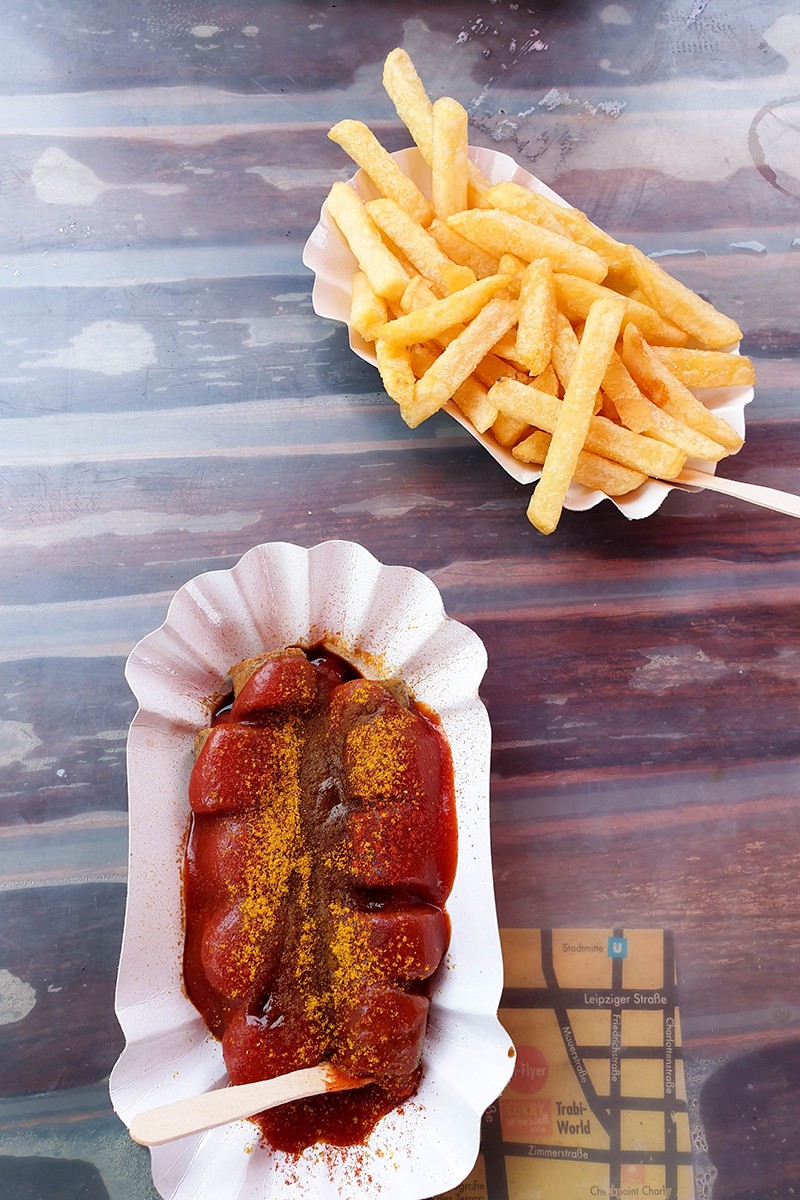
Expect the unexpected
While there is a lot of history in Berlin, it’s also one of the most exciting and dynamic cities in the world. After I visited the David Hasselhoff Museum, I ended up buying tickets to see him in concert the following night! That kind of stuff just happens in Berlin – it’s a city where anything goes.
I hope that this post has helped you plan your trip to Berlin! It’s a city like no other, and I’m sure you’ll love your time there!
- New Zealand
- The Philippines
- The Netherlands
- United Kingdom
- Inspiration
- Overland Itineraries
- Packing Lists
- Travel Tips
- Working Abroad
- Accomodation Guides
- Overland Travel
- Preserving Cultures
- Protecting Animals
- Living Abroad
Welcome to Berlin!
Berlin is a unique city filled with fascinating history, delicious food, quirky vibes, and much more.
I’ve lived in Berlin since 2015, and I want to show you what this amazing city has to offer on this Berlin travel blog and travel planning guide.
From the iconic sights to the lesser known gems, you can find everything you need to plan a trip to Berlin right here .
Most popular posts:
- 101 Things to Do in Berlin
- Ultimate Itinerary for 3 Days in Berlin: the Perfect Berlin Itinerary by a Local
- 29 Fun Day Trips From Berlin
- How to Get From Berlin Airport to City Center: Stress-Free Tips
- 13 Best German Restaurants in Berlin: Where to Eat German Food

Where To Stay

What To Pack

Getting Around

Beyond Berlin: Day Trips & Germany Travel

Seasonal Berlin

What To Eat & Drink
Featured: seasonal berlin.

What to Wear in Berlin in Spring: Berlin Packing List March, April, May

23 Spectacular Things to do in Berlin in Spring

21 Places to See Cherry Blossoms in Berlin
![Berlin testimonials FB Berlin testimonials: screenshots from Facebook that say things about how helpful the Berlin Travel Tips website, FB group, and emails were for various people. The exact text says: "What readers are saying: Ali, your top tips and general info was absolutely priceless when planning our recent first trip to Berlin. No matter what questions we came up with you had already addressed in your many articles/blogs or covered here [in the FB group]. Can’t thank you enough! The effort you have put in is just amazing. Not only beforehand, but even when we were in Berlin, we’d say to each other, “just ask Ali” which meant have a look at your website etc as we were bound to find what we were looking for. Written in such an accessible way. Great stuff. --K Ali, your daily emails are fantastic, I literally can not wait to get to Berlin now. --L This group was so helpful in helping me plan a good mix of sightseeing and Christmas Markets. Huge thanks to Ali, the info on here and on your website was amazing. Your step by step video on how to get from the airport made it so easy for us to get the train to where our hotel was. --E](https://berlintraveltips.com/wp-content/uploads/2024/03/Berlin-testimonials-FB.jpg)
Recent posts

What to do in Berlin on Monday: 25+ Museums & More

What to do in Berlin on Sunday: 15+ Ideas

How to Get From Berlin to Vienna: Train, Bus, Flight Options
Who’s behind berlin travel tips.

They even bought an apartment in Berlin in 2021 – Berlin is definitely home now!
Ali’s goal is to show you everything you need to know for enjoying a trip to Berlin. Learn more here!

Ali is originally from the US, but she’s been living in Germany since 2011.
In 2015, she and her husband moved to Berlin where they now live with their small dog. They even bought an apartment in Berlin in 2021 – Berlin is definitely home now!

Travel Guide
- Things to Do
- Best Hotels
- Things to See
- Best Restaurants
- Best Nightlife
- Getting There
- Getting Around
- Orientation
- Neighborhoods in Brief
- Organized Tours
- Active Pursuits
- Spectator Sports
- Suggested Itineraries
Planning a Trip in Berlin
At a BERLIN infostore you can find information, book a hotel room, buy the money-saving Berlin Welcome Card, bus and subway tickets, and half-price music and theater tickets. Berlin has five walk-in infostores:
- Tegel Airport, Terminal A, Gate 2, open daily 6am to 9pm.
- Hauptbahnhof (main train station), Europaplatz, open daily 8am to 10pm (U-/S-Bahn: Hauptbahnhof).
- Brandenburg Gate, Pariser Platz, open daily 9:30am to 6pm (U-Bahn: Brandenburger Tor).
- Neues Kranzler Eck, Kurfürstendamm 21, open Monday through Saturday 9:30am to 8pm, Sunday 10am to 6pm (U-/S-Bahn: Zoologischer Garten).
- Fernsehturm (Television Tower), Panoramastrasse 1a (U-/S-Bahn: Alexanderplatz), open late-May through Oct daily 10am to 8pm
The infostores operate one information line (tel. 030-25-00-25 ), open Monday through Friday 8am to 7pm, weekends 9am to 6pm; it costs a minimum of 0.50€ per minute.
For online info, go to www.visitberlin.de ; all the information is available in English.
Note : This information was accurate when it was published, but can change without notice. Please be sure to confirm all rates and details directly with the companies in question before planning your trip.

- All Regions
- Australia & South Pacific
- Caribbean & Atlantic
- Central & South America
- Middle East & Africa
- North America
- Washington, D.C.
- San Francisco
- New York City
- Los Angeles
- Arts & Culture
- Beach & Water Sports
- Local Experiences
- Food & Drink
- Outdoor & Adventure
- National Parks
- Winter Sports
- Travelers with Disabilities
- Family & Kids
- All Slideshows
- Hotel Deals
- Car Rentals
- Flight Alerts
- Credit Cards & Loyalty Points
- Cruise News
- Entry Requirements & Customs
- Car, Bus, Rail News
- Money & Fees
- Health, Insurance, Security
- Packing & Luggage
- -Arthur Frommer Online
- -Passportable
- Road Trip Guides
- Alaska Made Easy
- Great Vacation Ideas in the U.S.A.
- Best of the Caribbean
- Best of Mexico
- Cruise Inspiration
- Best Places to Go 2024
With rich history, vibrant nightlife, world-renowned cuisine, and amazing museums, there is something for everyone in Germany's capital.
Berlin, which is the capital city of Germany , became the capital city after the reunification of Germany by Bismarck in 1871. The city is surrounded by nature reserves on both banks of the Spree River. It is a city-state with a rich and complicated history that invites the tourist to many experiences ranging from visiting historical sites, museums and architecture, through culture and cuisine to shopping, shopping, shopping.

Trip Planner - Berlin
Create your perfect trip to berlin, germany.
Easily plan your trip based on your preferences, budget, and style
Plan your trip with RoutePerfect’s AI and optimize it by using RoutePerfect’s crowdsourced database, based on proven and enjoyable, well-crafted itineraries of thousands of travelers.
It seems that Berlin was first mentioned in the 13th century. Although the origin of the name is not quite clear, Berlin seems pretty close to the word for “bärlein: which in German means “little bear”. That is how the bear became the mascot/symbol of the city. In the year 2001 the “lone bear” developed into the Berlin Buddy Bears, a fiberglass sculpture of bears and it seems that they have become unofficial ambassadors of Berlin.
At the end of WWII Berlin was divided between two German states, so the government offices were moved from Berlin to Bonn , and that is how it was for the next forty years. The “ Berlin Wall ” was erected as a divider in 1961 and came down in 1989, where it stood is a magnet for tourists today as they walk along the street Friedrichstrasse. Check Point Charlie was the best-known crossing point between East and West Berlin during the Cold War (1947–1991). Since then, the graffiti that was painted on the walls along with the Brandenburg Gate symbolize a reunified Germany and are witnesses to the past. The monument, 18th-century neoclassical Brandenburg Gate was erected by the Prussian King Frederick William II, copying the gate by the same name at the entrance to the Acropolis in Athens .
You can see the tall, 26-meter statue from the wide boulevard called Unter den Linden , from the City Palace right up to Platz Pariser where the Brandenburg Gate stands. The boulevard is so called because of the Linden trees that line the street. Note: During the time of Napoleon the famous statue that is atop of the gate, the Quadriga, which is a chariot drawn by four horses, was removed but when it was returned a decade later it became a symbol of victory for Germany.
On the northern side of the boulevard is The Museum Island . This is one of the most popular visited sites in Berlin, as well as one of the most significant museum complexes in all of Europe. Situated on Spree Island it includes five museums: The Altes Museum, the Neues Museum, the Alte Nationalgalerie , the Bode-Museum and the Pergamonmuseum.
A sixth building has been added - The James Simon Gallery (James-Simon-Galerie) which is a visitor center and art gallery.
Take note that there is an important ‘treasure’ on the island: The Berlin Cathedral, aka The Berliner Dom. It was built by Kaiser Wilhelm II in a Renaissance and Baroque style and besides being a magnificent building, it is probably one of the most important Protestant churches in Berlin. Note: Dom - Many people think this is the German word for “dome” but it means cathedral.
We suggest that you join the locals and take a break and some leisure time in the Pleasant Garden (Lustgarten), a neoclassical luscious, green park that is in front of the Altes Museum and near the majestic Berliner Dom at the other end. Secret: A main attraction in the garden is a huge seventy-ton, granite bowl. Around 50 people were seated in the bowl at a special breakfast to inaugurate this bowl. The Berliners call it “The Berlin Soup Bowl”.
Berlin's famous Tiergarten , Grosser is located in the heart of Berlin and close to the Brandenburg Gate. It is a magnificent park with spacious green areas – just as popular as Central Park in New York and Hyde Park in London. This park spreads out for about 500 acres with tree-lined paths leading to Berlin’s oldest zoo and the zoo-aquarium. Secret: In the summer months on Sunday evenings you just might be on time to hear the bells from the Carillo, which is the bell tower, 40 meters in height, situated next to the House of World Cultures (Haus der Kulturen der Welt - HKW). The HKW has presentations, concerts, films conferences and a variety of cultural activities and exhibitions throughout the year.
Everyone knows that Berlin is one of the best places for shopping! They have great shopping centers and outlet centers with an endless range of products from latest fashion in clothing to the latest consumer goods.
The culinary scene in the city is world-famous and varies from traditional German food such as potato pancakes, pea soup with sausages, potato stew to ethnic food that has been integrated into the local cuisine. There are many diverse eating establishments, food stalls and of course the finest of restaurants and cafes. There are plenty of beer houses and bars that serve beers and drinks of all types. However, the well-known “White Beer” (Weisse Beer) so called because it is calls for at least 50% wheat to barley malt, which makes for a light colored top-fermenting beer. It is the most popular beer enjoyed by locals and tourists alike for its unique taste.
Things to do in Berlin
Berlin, the vibrant and dynamic capital of Germany , is famous for eclectic character, thriving on contrasts and embracing diversity. Known for its galleries, museums, festivals, and modern landmarks, there is a wide variety of great things to do in Berlin. Visit the city’s iconic sites such as the Reichstag Building, Brandenburg Gate, the Berlin Wall Memorial, and Museum Island, home to the city’s most important exhibition centers, and discover the city’s varied street art and diverse culinary scene. Berlin’s allure is enhanced by its numerous entertainment venues, orchestras, and universities.
One of the best ways to soak in the city's atmosphere is by exploring its various neighborhoods, each with its own distinct character. Take a leisurely stroll through the historic streets of Mitte, where modern architecture stands side by side with remnants of the city's rich past. Experience the avant-garde vibes of Kreuzberg, where creativity knows no bounds, or embrace the hip and trendy atmosphere of Prenzlauer Berg.
For those seeking a taste of Berlin's nightlife, the city is renowned for its vibrant club scene. From techno temples to quirky cocktail bars hidden in plain sight, there is no shortage of things to do Berlin after dark.
Be sure to savor the local cuisine. Whether it's a cozy café tucked away in a quiet corner or a bustling market filled with diverse flavors, Berlin's food scene reflects its cosmopolitan nature. Indulge in a traditional currywurst or explore the myriad of international influences that contribute to the city's culinary tapestry.
Families will find an abundance of kid-friendly activities in Berlin, blending history, culture, and fun. Explore the interactive wonders of the DDR Museum, enjoy the green playground of Tiergarten, and visit the Berlin Zoo, Natural History Museum, and Legoland Discovery Center. Sail down the Spree River for a unique perspective on Berlin's landmarks.
There is an abundance of kid-friendly things to do in Berlin, blending history, culture, and fun. Explore the interactive and hands-on wonders of the DDR Museum, enjoy the green playground of Tiergarten, and visit the Berlin Zoo, the Natural History Museum, and the Legoland Discovery Center. Sail down the Spree River for a different perspective of Berlin's landmarks.
Each season brings its own charm to Berlin. Spring bursts with color and renewal, featuring outdoor markets and blooming cherry blossoms. Summer is the peak tourist season, with parks, lakes, and open-air concerts coming alive. Fall sees Berlin's cultural season thrive, with foliage creating a picturesque backdrop. Winter adds a magical charm with festive lights and Christmas markets transforming iconic landmarks into winter wonderlands. Warm up with mulled wine or explore cultural offerings, creating a perfect blend of holiday cheer and cultural exploration.
Book activities with
tickets & passes
Classic Christmas Concert at Charlottenburg Palace
tours, sightseeing & cruises
2 Hours E-Scooter Tour
Berlin Wall - East and West Berlin Private Walking...
Berlin History Tour with a Local Expert: 100% Pers...
Berlin Movie Tour with a Local Expert: 100% Person...
Private City Sightseeing Tour in Berlin for Incent...
Self-Guided Audio Walking Private Tour in Berlin
Berlin Urban RAW & Eastside Full Day Photography T...
Berlin: Street Art and Graffiti Private Walking To...
Private Berlin Jewish Tour with a Local Expert Gui...
Berlin Jewish District Find Peace Exploration Game
Berlin: Cold War Walking Private Tour with Guide
Berlin Scavenger Hunt and Self-Guided Walking Tour
More to do in Berlin
art & culture
outdoor activities
travel & transportation services
classes & workshops
Top attractions in Berlin
Where to stay in berlin.
Recommended hotels
Search TRUST YOU reviews:
Hapimag berlin gendarmenmarkt.
Kronenstrasse 43
Book via your preferred site:
Residenz Villa Kult
Hindenburgdamm 12
Wilde Aparthotels by Staycity Berlin Checkpoint Charlie
91 Zimmerstrae
Downtown Apartments Berlin
Invalidenstrae 129
Hotel Adlon Kempinski Berlin
Unter Den Linden 77
Landhaus Haveltreff
Weinbergstrae 4 14548 Schwielowsee Ot Caputh
Orania.Berlin
Oranienplatz 17
Casa Camper Berlin
Weinmeisterstr.1
Garden Living Boutique Hotel
Invalidenstrae 101
Hotel am Steinplatz Autograph Collection
Steinplatz 4
The Mandala Suites Berlin
Friedrichstr.185 190
Regions in Germany
Suggested friends itineraries for germany, suggested romantic itineraries for germany, suggested other itineraries for germany, suggested family itineraries for germany.
RoutePerfect uses cookies to improve our content and provide you with a personalized experience. By clicking "Accept All Cookies", you agree to the storing of cookies on your device to enhance site navigation, analyze site usage and assist in our marketing efforts. Learn more

How To Plan a Trip To Germany: Step by Step Guide
P lanning a trip to Germany can feel overwhelming. Between narrowing down your bucket list of locations (never an easy task!) to staying within a certain budget (sometimes even harder!) to deciding the specifics like train vs car or which part of a city is the best place to look for hotels. Or shoot, how to even FIND the best hotel for YOU!
Don’t worry, I’ll walk you through EXACTLY how to break down you Germany trip planning process, step by step so that it feels easy, manageable, and has you excited, not stressed!
Step 1: Get Your Information From the Right Sources
I’m not here to bash anyone and I am definitely not here to proclaim that I am the end-all-be-all when it comes to wise Germany travel advice. However, be skeptical of where you get your “information” on traveling in Germany.
I LOVE using local blogs whenever I plan a trip, but it can sometimes be hard to discern who is using AI right now to create a bunch of their content (you’d be shocked at how good some bloggers are at this!) and who is even a true, authoritative source on the matter vs just a tourist who spent a bit of time somewhere and is now claiming to be an expert.
When planning your trip to Germany, look for local sources from bloggers who LIVE in Germany. We know the ins and outs of Germany WAY better than even the die-hard travel addicts who spend a few months in a place and swear they “know” the local insider info, culture, and off the beaten path locations. If you read a bio of someone who says something like, “ I’ve been exploring Germany for over “X” years an d just love sharing my insights with you!” – RUN. They may have traveled to Germany, but I guarantee that their content is either outdated since they don’t live here, is AI generated, or just plain false half the time.
Who can you trust? There are several great local bloggers who actually LIVE in Germany that I can attest to and know they are passionate, accurate, and updated with their info. Some of my favorites are:
- BerlinTravelTips: Ali lived in Freiburg for many years before moving to Berlin. Who better to get inside Berlin Travel Tips than from someone who lives there!
- DestinationTheWorld : Matthias is a German native. He and Kent lived in Berlin for years and are now living close to Munich again.
- CraveThePlanet : Living in a freaking castle in Landstuhl, Germany, Morgan lives and breathes adventure travel and knows outdoor Germany and hiking in Germany like no other!
- Jordan has been living in Germany for ages, is married to a German, and knows more about Northern Germany than most people!
I’m sure there are others out there that are fantastic, honest, and extremely helpful. But, all I’m saying is that just because a website is “dedicated” fully to “German Travel” and just because they have a cute picture of them when they VISITED Germany, does not make them an expert.
Step 2: Be Where the Experts Are
If you want up-to-date, real information, be sure you are in places and spaces that people, like the above, are helping and moderating in. Whenever I am planning a trip to a new location, especially when it is a foreign country, one of my first steps is to see if there are any active Facebook Group that help with trip planning in that destination. It’s a fantastic way to get inspired, hear questions you never even thought about, and have a space to ask your own, individual questions to a group of experts.
There are some fantastic Facebook Groups dedicated to real-time advice for traveling in Germany.
- Obviously, my Travel in Bavaria Facebook group is led by yours truly!
- The above mentioned Morgan, Ali, and myself all also help to admin the more broad Travel Germany Facebook group
Sign Up For Email Newsletters
In addition to being in the Facebook Groups, when I am planning a trip, when I find a trusted blogger, I almost ALWAYS sign up to their email newsletter. This is the place where bloggers are often a bit more “real” life and I’ve gotten amazing advice, tips, and insider information from newsletters like these that help me plan my own trips.
You can sign up for the WanderInGermany Newsletter here. You get a free packing list just for signing up + a week’s worth of “How to Plan Your Trip” emails. From there on out, I send out monthly newsletters letting you know what’s going on in Germany, telling about a hidden gem I might have found this week, or giving advice on cultural questions about traveling in Germany.
Step 3: Get Organized
Before you even begin, it’s best if you get a place to put all the information you are going to be collecting, working on, booking etc. For me, that’s Google Docs and Google Sheets. I create a Google Sheet that turns into my budget, itinerary, and all my booking confirmations/notes.
Coming Soon: Wander In Germany’s Complete Trip Planning Spreadsheet!
Step 4: Start With Figuring Out Your Budget
Personally, I think that before anything else, when you are planning a trip to Germay, you need to know what your budget is first and foremost. Your budget can determine many things such as:
- How many days you can afford to travel
- If you should rent a car or take a train (which will affect your final itinerary)
- What airport to fly into (some are typically more expensive than others)
Obviously, there is a whole range of prices, but for just a very general/ mid range budget, you can expect prices to be (give or take) around the following averages:
Flights : Varies by season/month. Off season can be as low as $500. High season can be as high as $2000!
Hotels : Mid range hotels are often around $100-150/night
Meals : Will vary, but for a “classic” German meal at a “typical” German restaurant, $10-15 per meal is pretty standard (plus drinks)
Transportation : Will vary.
-Car rental can be as low as $40/day (plus gas) but much more expensive if you need an automatic, a larger vehicle, etc.
-Trains: Depending on how often you use them/ how far you can go, train tickets will vary considerably. Check out my Train Travel in Germany Guide to help you figure out which tickets you might need.
Also Consider: Daily budgets for activities (will vary depending on what you want to do, shopping/ souvenirs, and other miscellaneous costs that might occur)
At this stage in planning, you don’t need an EXACT budget, but DO have a rough idea of what you can afford and are willing to spend.
Step 5: Determine How Long You Have?
For many travelers, they are locked into a certain amount of days they can travel. Maybe it’s determined by your kids’ school schedules or is just simply dictated by how many days off work you can take. Alternatively, maybe after determining your budget, you realized you can only do a certain amount of days to stay under budget.
Regardless, I often find that it is MUCH easier to map out an itinerary if I know exactly how many days I have total before even starting.
Alternatively, if you’ve got all the time in the world (and maybe even budget!) then you can probably skip this step and just have the time of your life!
Step 6: Start Making a Bucketlist
If you’ve got a completely open itinerary, then I love to just start with a daydreaming session! Pinterest is great for people who love visuals and Tik Tok has some really fun ideas, too. Just be careful to not get sucked into the “Filtered” version of traveling!
Then, start seeing what Dr. Google has to say. But, be specific in your searches. Some examples depending YOUR interests could be:
- “Best Historical Sights in Germany” or “What WWII Historical Sights are Worth Visiting”
- “Off the beaten path destinations in Germany”
- “Best Alpine Towns in Germany”
- “How many days for Berlin”
The part about this step isn’t to be realistic, it isn’t to even be mapping out an itinerary or set of plans yet! It’s simply to brainstorm some inspiration on places that look amazing to you, moments you want to experience, and sights that interest YOU. Don’t worry about logistics, just get inspired!!!!
Step 7: Decide On The Time Of Year to Visit
Figuring out the best time of year to visit Germany can be a tough one! I strongly believe that each season has it’s pros and cons. However, sometimes, based on the information you’ve already decided in steps 1-4 can actually determine when you should or even will need to go.
For example, if you wrote “ Visit Oktoberfest ” on your brainstorming list, then you are pretty locked in on needing to come in September (yes, I said SEPTEMBER, not October!). Same goes for something like seeing the Best German Christmas Markets . You’ll obviously need to come before, well…Christmas!
On the other hand, if budget was a serious concern, maybe looking into February may be your best bet because that is often one of the cheapest months to fly to Germany.
If you really want to go hiking in the Bavarian Alps, then June- September is a good time frame.
This is why having a “Bucketlist” of places, events, and destinations that would be amazing to experience is essential. By doing that first, it may help you figure out the PERFECT time for you to plan your trip accordingly!
Step 8: Map Out Your Bucketlist
Next, head over to Google Maps and start plotting out where all the places you listed on your bucketlist are. Don’t waste time looking up distances between anything yet, just simply get an overall view of everywhere that looked and sounded inticing to you.
A. Once Everything Is On the Map, Look For Clusters
After you put everything you could possibly want to do, see if any of destinations look particularly close together. Are there any destinations that are completely on their own and way out of the way from everything else you have mapped out? You can already start realizing what places on your list may need to be put into a “Next time” list.
B. Start Calculating Distances
I tell people to do this before actually deciding on a final itinerary because there may be times that as you get deeper into the planning you’ll realize you can add a day onto a city and just do an easy day trip from there to another destination on your list. Alternatively, you may realize that even though you thought two places were close together, the actual time to get from one to the other was more than you thought. Sometimes, there just isn’t a really good logistical route from one place to the next to justify the added destination.
C. Compare Trains vs Car Rental
Again, you may be thinking, “Gee, LeAnna, shouldn’t I have this decided and then that can determine my final itinerary?”
Sure! That’s one way to do it! Afterall, if you KNOW you won’t be renting a car and therefore will have to use trains/ public transportation to get from one place to the next, then yes, then can really help narrow down an itinerary simply based on the logistics of train travel! For example, if you know you have to take the trains, then going from Munich to Garmisch is much more reasonable than going from Munich to Berchtesgaden, so that can help determine your itinerary for you.
However, if you are still trying to decide on train vs car, then it’s worth looking into things like how long does the train ride from Point A to B take vs a car. Sometimes, it’s the same/shorter than driving, other times, it can be double the time! For people on tight schedules, train travel can make it harder to pack in as much as possible, whereas a car gives much more flexibility, which is going to determine your final itinerary.
D. Check Flight Prices
At this stage, unless you need to be locked into a certain airport for other reasons, take a moment to see general flight prices for the major airports closest to the places on your map. For example, maybe flying into Berlin isn’t even an option because you are only going to do South Germany on this trip.
Alternatively, maybe you realize that arriving into one airport but leaving out of another is way too expensive, which will impact your final itinerary.
You don’t need to make any decisions right now on flights. Just know which airport you most likely will choose based on your preferred locations, budget, etc and adjust accordingly to your needs.
Step 9: Put Together Steps 1-8
Now is the time to start filling in some actual days in your itineraries. Knowing how many days total you have, what places you REALLY want to experience and see, and where they are all located means that you can now start figuring out how to fit this all into your trip plan!
You might need to look up activities in each destination to know just how many days are needed in each place. For example, you could do just one day in Munich , but you could also do 3 days in Munich depending on your interests.
You also know how far each place is, so you can budget that into your itinerary. For example, if you are going from Munich to Berlin, then you need to plan on a good chunk of your day on transportation alone, which you will need to allot for when figuring out logistically just how much time you have.
Step 8: Slow Down!
I’m going to pause you right here in your itinerary planning.
More often than not, I see far too many tourists try to cram so much into their trip to Germany that they end up spending just as much time in a car or on a train than actual time enjoying and experiencing a particular destination! I get it, this is a once in a life time trip and you want to see and do as much as you possibly can! But, don’t do it at the expense of actually ENJOYING your time! Make sure you have scheduled the time it takes to get from one place to the next. Give yourself an extra hour in a location to sit at a corner cafe. Allow time in your day to just wander and soak up the vibes and feelings of a place rather than running through just to say “I’ve been there!” (but can barely remember it!)
So, do you need to go back to your rough itinerary and take anything out right now? Do you need to look at something more realistically and give yourself some extra time in a place, or plan on the actual time it takes to get somewhere, find the hotel, and get back to the major sights?
Adjust accordingly and before you know it, your itinerary is going to unfold in front of you!
Step 9: Set Flight Alerts and Book Flights
Now that we know exactly where we want to go, when we want to go, and our budget, it’s time to get serious about booking stuff! First up- flights!
I always start with Google Flights and just get a general idea on prices for when I want to fly. I often will set an alert as well to get notified of any major changes.
I usually book international flights about 5 months in advance. I find that gives me enough time to see a pattern but isn’t pushing it with last minute price gauges.
Once you find a flight that works for you, your budget, and your itinerary, then pull the trigger on booking it!
Step 10: Start Researching Accomodations
You already have your itinerary figured out, so you know exactly what days you want to stay where. While I have a few qualms about things like Booking.com, I will admit that I absolutely LOVE that I can filter just about any need/desire/ preference I have about what I want for a hotel, making it one of the best search tools for hotels out there.
You can set your own personal nightly budget, look at the map view if you have a specific area of town you want to focus on, only look for hotels that have AC (It’s true, many Hotels in Germany Do Not Have AC !), etc.
I usually narrow it down to about 3 hotels per destination and then dig into all the reviews and photos before deciding on a final accommodation. You can either book it right in Booking.com (which admittedly usually has good cancellation policies) or go straight to the hotel site itself, which often is a little cheaper when booked directly.
Step 11: Fill Out Your Spreadsheets
Hopefully, this whole time, you’ve stayed semi organized with a spreadsheeet or something similar that has helped you keep track of things. It’s at this stage that I double check my itinerary plan, make sure I’ve input which hotels where booked for which nights, added the confirmations to my list, and review any notes I’ve made throughout this entire process so far!
Step 12: Check Your Documents!
This list will vary for everyone depending on your nationality (ie: do you need a Tourist Visa ?), if you are going to be driving (international drivers permit), etc.
- Passport: Is it valid for 3 months from your trip?
- Trip Insurance
- Flight tickets
- Visa- if needed
- Hotel Reservations (confirmations)
- Valid Drivers License (if renting a car) + International Permit
- Credit cards/money
- and other documents you have for travel
Step 13: Pack It Up!
At this stage, all the logistics are done and taken care of! All you need to figure out now is exactly what to pack for Germany based on the season you are traveling in!
My Ultimate Packing Guide For Germany Winter in Germany Packing List Oktoberfest Packing Guide
Step Get Excited and Have Fun!
Now, it’s simply time to head to the airport and have one amazing trip to Germany!!!!!!!!!!!!!!!
Choose Your Accommodation and Book
The post How To Plan a Trip To Germany: Step by Step Guide appeared first on WanderInGermany .
Browser nicht unterstützt
Dies war wahrscheinlich nicht das, was du erwartet hattest. Der Internet Explorer wird von Uber.com nicht unterstützt. Bitte versuche, unsere Website über einen anderen Browser aufzurufen.
Getting around Berlin
Planst du eine Fahrt in Berlin? Egal, ob als Besucher oder Bewohner: Dieser Leitfaden hilft dir dabei, das Meiste aus deiner Zeit in Berlin herauszuholen. Fahre mit Uber vom Flughafen zum Hotel und entdecke beliebte Routen und Reiseziele. Je nach Stadt kannst du die App sogar nutzen, um mit öffentlichen Verkehrsmitteln, per E-Bike oder Roller und mehr von A nach B zu kommen.
Sieh dir außerdem die Uber Fahrpreise für Fahrgäste und Fahrer an und erfahre, wie du über die Uber App Fahrten oder Lieferungen in Berlin anbieten kannst.
Reserviere einen Fahrdienst in Berlin mit der Uber App
Buche deinen Fahrservice in Berlin im Voraus mit Uber. Du kannst jederzeit bis zu 90 Tage im Voraus eine Fahrt bestellen. Egal, ob du eine Fahrt zum Flughafen Berlin Brandenburg brauchst, dein Lieblingsrestaurant besuchen oder woanders hinfahren möchtest.
Rideshare in Berlin
Mit der Uber App bist du ganz einfach in Berlin ohne Auto unterwegs. Finde spannende Attraktionen in der Nähe und bestelle dann eine Fahrt, wann immer du möchtest. Du kannst eine Fahrt in Echtzeit oder im Voraus bestellen, damit sie bereit ist, wenn du es bist. Ganz gleich, ob in einer Gruppe oder allein, du kannst die App nutzen, um die perfekte Fahrtoption für deine Wünsche zu finden.
Öffne die Uber App und gib dein Ziel ein, um Berlin zu entdecken.
Fahrdienst rund um den Flughafen Berlin
Wenn du in Berlin unterwegs bist, vom Flughafen in einen bestimmten Bezirk oder an ein anderes Ziel fahren möchtest, öffne jederzeit die App und bestelle eine Fahrt. Tippe unten auf den Namen eines nahegelegenen Flughafens, um zu erfahren, wie du über die Uber App einen Fahrdienst für Ankünfte und Abflüge erhältst. Auf der verlinkten Flughafenseite erfährst du, wo genau dein Fahrer dich abholt, wie viel die Fahrt kostet und vieles mehr.
Flughafen Berlin Brandenburg (BER)
Wähle die besten verkehrsmittel in berlin, taxi in berlin.
Uber ist deine Alternative zu Taxis, wenn du in Berlin unterwegs bist. Mit der Uber App brauchst du nicht mehr hoffen, dass ein vorbeifahrendes Taxi für dich anhält. Bestelle Fahrten auf Abruf, bei Tag und Nacht. Bestelle eine Fahrt vom Flughafen zum Hotel, fahre zu einem Restaurant oder besuche einen anderen Ort. Du hast die Wahl. Öffne die App und gib dein Ziel ein, um loszulegen.
Öffentlicher Nahverkehr in Berlin
Mit dem öffentlichen Nahverkehr unterwegs zu sein, ist die erschwingliche Art zu reisen. Je nach Gegend kannst du nahegelegene Bus- oder U-Bahn-Routen mit Uber Transit anzeigen, um deine Fahrten zu planen. Öffne die App, um zu sehen, ob Uber Transit in deiner Nachbarschaft verfügbar ist, oder besuche beliebte Orte in Berlin, indem du Ridesharing mit Uber wählst.
Fahrradverleih in Berlin
Radfahren ist die umweltfreundliche Art, das Zentrum jeder Stadt zu erkunden. In ausgewählten Städten kannst du mit der Uber App nach Elektrofahrrädern suchen und sie zum Fahren buchen. Öffne die App, um zu sehen, ob Fahrräder in Berlin verfügbar sind. Wenn Fahrräder in Berlin verfügbar sind, denke daran, einen Helm zu tragen und die Verkehrsregeln während der Fahrt einzuhalten.
Wir bei Uber tolerieren es nicht, dass Fahrer unter Einfluss von Alkohol oder Drogen die Uber App nutzen. Falls du denkst, dass dein Fahrer unter dem Einfluss von Alkohol oder Drogen steht, verlange von ihm, dass er das Fahrzeug unverzüglich stoppt.
Für gewerblich genutzte Fahrzeuge fallen eventuell zusätzliche bundesstaatliche Steuern an, die mehr als die Maut betragen.
Uber vermittelt deine Fahrtbestellung ausschließlich an einen konzessionierten Beförderungsunternehmer. Alle eingesetzten Fahrzeuge erfüllen die Anforderungen des PBefG und der BOKraft. Alle Fahrer haben einen Personenbeförderungsschein. Jede Fahrt ist durch die KFZ-Haftpflichtversicherung des Beförderungsunternehmers versichert.
In Berlin, we mediate trips for ennoo Dienste GmbH, which is the responsible PHV operator. Whether you’re headed to work, to the airport, or to a party in the evening, Uber always delivers an affordable, safe, and reliable ride that is carried out by a professional transportation provider. With just the push of a button, you’ll be picked up by a vehicle of the transport operator. The Uber app’s GPS function determines your location. Before you enter the vehicle, you’ll see the driver’s photo, name, and license plate number. When you arrive at your destination, you just get out—the payment is completely cashless.
In Berlin, Uber provides five ride options: UberX, UberXL, Premium, Green and Taxi. With UberX, UberXL, Premium and Green, you can arrange a trip with an Uber driver-partner. With Taxi, you can arrange a trip with a regular taxi driver, with pricing at the official taxi rates. Tariffs of the Berlin Taxi Tariff Regulation apply, including applicable surcharges. More information can be found here .
Legal notice
In den Apps ist es einfacher
Lade die uber app herunter, lade die app für fahrer*innen herunter.
Scannen, um den Download zu starten
- Fahrten bestellen
- Fahrten anbieten
- Unternehmen
- Unsere Angebote
- So funktioniert Uber
- Vielfalt, Gleichberechtigung und Inklusion
- Nachhaltigkeit
- Investorenbeziehungen
Registrieren, um Fahrten und Lieferungen anzubieten
Ein fahrgast-konto erstellen, lieferungen über uber eats bestellen, registrieren sie sich bei uber for business, für fahrtbestellungen anmelden, für lieferbestellungen über uber eats anmelden, melden sie sich bei ihrem uber for business konto an, fahren und liefern, fahrten über die uber app bestellen, uber for business, konto verwalten.
You can still find affordable flights to Europe this summer
Airfare prices to amsterdam, brussels, prague and reykjavik are way down from last year.
Christina Saull and her husband have waited five years to take a 10-day cruise through the Norwegian fjords. The first time they planned the trip, it was postponed for a medical emergency. The second time, there was a family wedding. Now, finally, they were getting ready to go in July.
Only they needed plane tickets.
“It’s interesting to see how expensive fares have been and how they’ve fluctuated,” said Saull, a public relations executive who lives in Alexandria, Va.
The couple watched prices go from as little as $900 round trip to as much as $2,500 for flights from Washington to Edinburgh, Scotland, and back from Copenhagen. They finally settled on premium economy seats for $2,000 each on Delta Air Lines and its partner Air France.
“I don’t think it’s unreasonable for summer Europe travel,” Saull said of what they paid.
Not unreasonable is a good way to describe transatlantic air travel this summer. Even with strong travel demand, tickets are cheaper on average than they were last year.
“Airfare to Europe is less expensive than last year by 10 percent,” said Hayley Berg, the lead economist at flight-booking app Hopper . The average round trip ticket before any extra fees costs $882, according to the data.
The highest fares are in June, July and August, Berg added. Traveling in shoulder months — for example, September and October — could save travelers as much as 30 percent.
Schedule data from aviation analytics firm Cirium Diio shows airlines will offer 8 percent more seats on U.S.-Europe routes from May through September than last year.
Philadelphia is gaining new nonstops to Copenhagen, Naples , and Nice, France, on American Airlines. Phoenix gets its first nonstop to Paris on Air France. Washington, a new flight to Zurich on Swiss International Air Lines. And many other routes additional flights or options on larger planes.
“In the transatlantic, we are looking forward to another strong summer,” said Glen Hauenstein, president of Delta Air Lines, referring to bookings earlier in April. He added the airline sees “healthy demand” for seats to Europe.
Paris has flight deals, but hotels are pricey
The Paris 2024 Summer Olympics are a bump in the finely tuned machine that is summer air travel to Europe. The Games run from July 26 through Aug. 11, and the French capital is expected to host some 15 million visitors during the event and the following Paralympic Games. Last summer, the city saw more than 6.2 million visitors in July and August.
“Paris will be like an Olympic village in July and August,” said Christine Ourmières-Widener, CEO of the French airline French Bee . All those visitors still need a way to get to the city. French Bee , which caters to leisure travelers like those going to the Games, has added flights from Los Angeles, New York and San Francisco to meet the demand.
Flight deals to Paris can still be found. Booking website Expedia recommends travelers buy tickets at least 21 days before their trip and, for international travel, look at departing on a Monday to find the best airfares.
Finding an affordable hotel in Paris during the Games is another matter. Expedia said it has seen a “massive surge” in searches for accommodations there this summer and recommends travelers look at nearby cities for more reasonably priced options.
Consider Nice, Prague and Reykjavik
Finn Vigeland, a transit planner who lives in Washington, was “quite surprised” last month when he found a good deal on flights to Nice, France, in July.
Prices on American Airlines’ new nonstop to Nice from Philadelphia were only $700 to $800 round trip, he said. That was affordable enough to make a trip to France with friends possible, and he booked the flight (with points, not cash).
Average fares to Nice from the United States are down a quarter to $907 compared to last summer, Hopper’s data shows. The city also has the distinction of being one of the few European destinations with lower airfares this summer than in 2019, 11 percent lower to be exact. That drop is, in part, thanks to a plethora of new flights on American, Delta, and United.
Amsterdam, Brussels, Prague, and Reykjavik, Iceland, are other European cities where ticket prices from the United States are down more than 20 percent from last year, according to Hopper.
Airfares are not down double-digits in all markets though. Fares to cities like Berlin and Glasgow, Scotland, are on par with last year.
Traveler after traveler said they felt like they could find reasonably priced plane tickets for trips between the United States and Europe this summer. Those who said they could not often lacked flexibility to adjust their trips to when and where fares are the cheapest.
“I felt like this was doable. It made sense,” Alexander Giess said of his plan to take his 10-year-old daughter on a three-week trip to France this summer.
After a lengthy search, in March the marketing executive paid about $1,000 each for two round-trip tickets to Nice from San Francisco on his preferred airline, Delta.
Where to go
Our favorite destinations: These 12 destinations are at the top of our wish list for where to go this year, without crowds. In 2023, we explored an Alaskan bear paradise, Brooklyn’s famous pizzerias and a hidden gem in Italy, among other highlights .
Travel like a local: Residents share their favorite places in our top city guides: New Orleans , Rome , Tokyo and Mexico City .
National parks: This comprehensive guide has details on all 63 U.S. national parks. For a deep dive into five of the most well-known, you can listen to the Field Trip podcast . Then explore tips from locals for visiting Yosemite , Glacier and Everglades .
Tales from the road: Dolly Parton has opened a new resort at her theme park complex in Tennessee, while “Fixer Upper” stars Chip and Joanna Gaines have a new hotel in Waco . Road-trippers may be just as excited to see the cartoon beaver at Buc-ee’s , and bargain-hunters should consider a stop at the Unclaimed Baggage store in Scottsboro, Ala.

Major Middle East airlines to resume flights after Iran's attack on Israel
- Medium Text
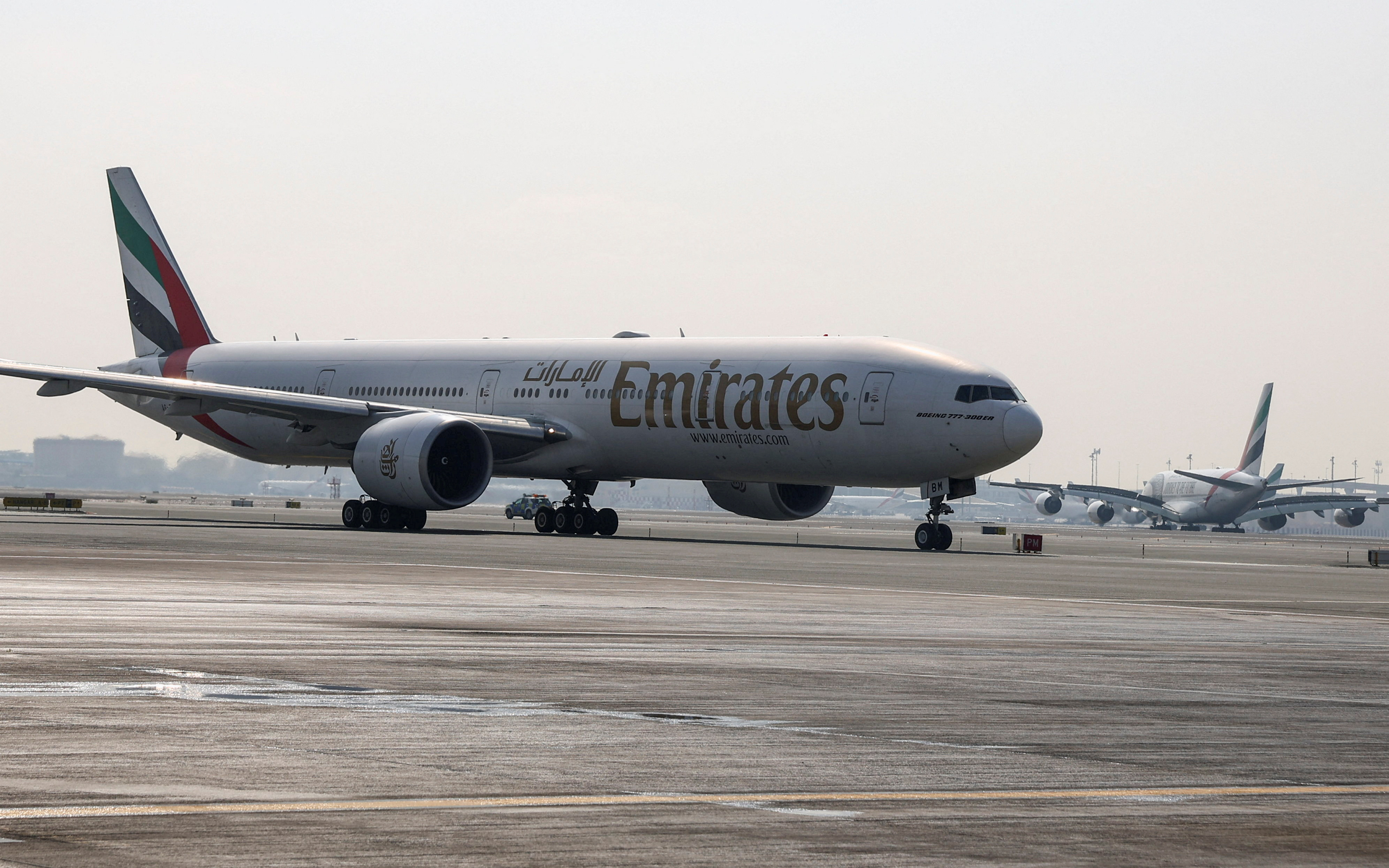
The Reuters Daily Briefing newsletter provides all the news you need to start your day. Sign up here.
Reporting by Federico Maccioni and Jana Choukeir in Dubai; Adam Makary and Muhammad Al Gebaly in Cairo; Editing by Alex Richardson, Sharon Singleton and Jan Harvey
Our Standards: The Thomson Reuters Trust Principles. New Tab , opens new tab

World Chevron

Ukraine air defense: G7 ministers seeking urgent support
Ukraine warned foreign ministers from the Group of Seven (G7) major powers on Thursday they had to change strategy if they wanted Kyiv to withstand increasingly destructive Russian air assaults.
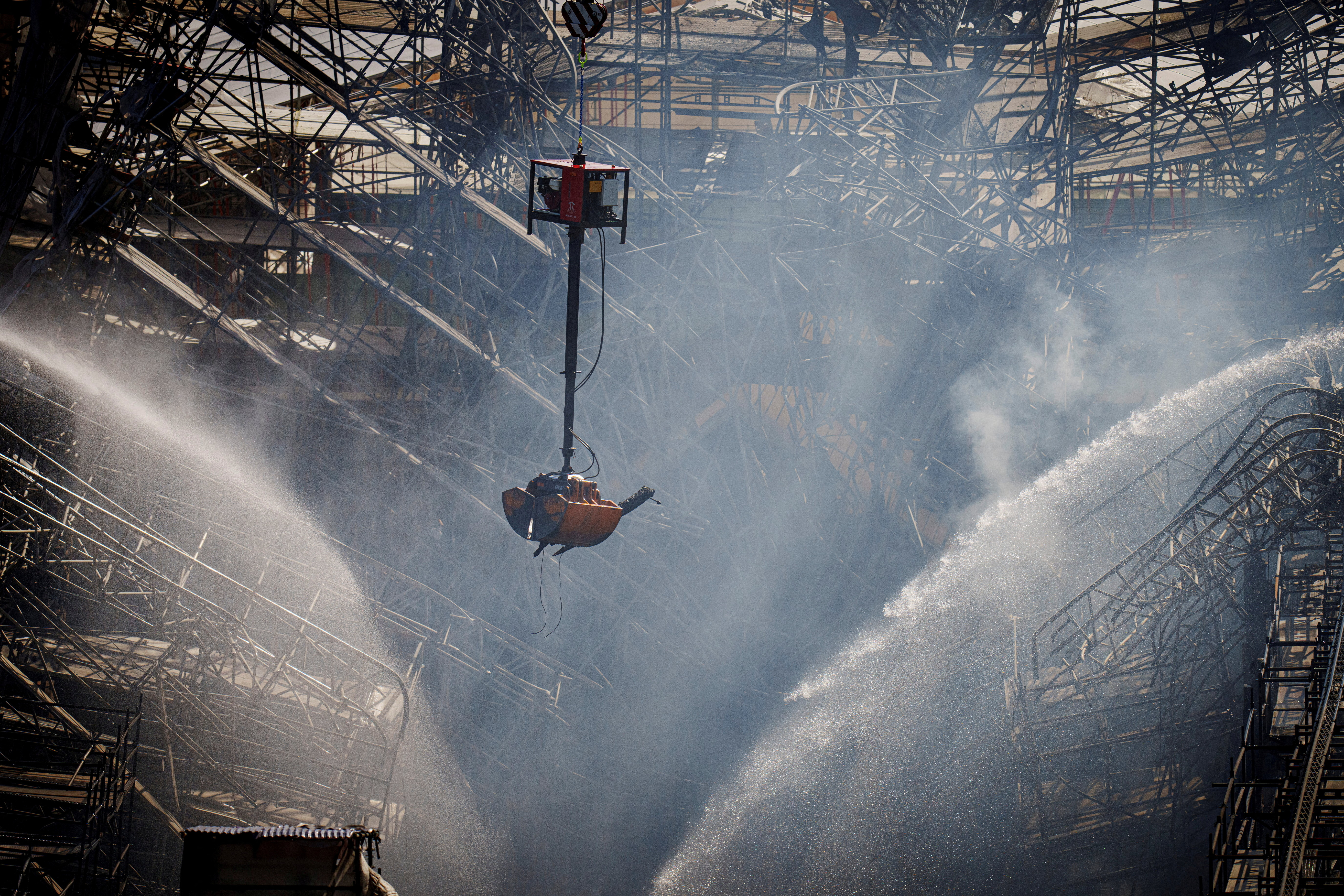
A new video has emerged from Hamas' Oct. 7 attack showing Israeli hostage Yarden Bibas being taken into captivity in Gaza almost 200 days ago.

- Share full article
Advertisement
Road Trips: How to Plan an Accessible Getaway

By Syren Nagakyrie
Planning an accessible road trip is getting a little easier for people with disabilities. There are more resources created by and for the disability community, and the tourism industry is starting to recognize the value of accessible travel. As a disabled, chronically ill, neurodivergent person, I take road trips every year and have learned some tips and tricks along the way.
Renting a vehicle
Most major car companies offer adaptive driving devices for their vehicles at no additional cost. Enterprise , for example, offers hand controls, left foot accelerators, pedal extenders and spinner knobs to facilitate steering. Budget can provide hand controls, spinner knobs, a panoramic mirror, swivel seats and transfer boards. Be prepared to request adaptive devices at least three business days in advance.
For a wheelchair-accessible van with a ramp or a lift, rent from a mobility company like BraunAbility , one of the largest builders of wheelchair-accessible vans in the country, with rentals at many locations. MobilityWorks , an accessible-vehicle and adaptive-equipment dealer, has rental locations in 34 states. AccessibleGO , which offers a one-stop shop for adapted rental cars and wheelchair-accessible vans, has agreements with 100 wheelchair van rental locations nationwide; request a quote on their website. For accessibleGO’s rental cars, you can request hand controls and a spinner knob at checkout.
Route planning
You can use Google Maps, Waze and MapQuest for initial accessibility research using photos and street view. Google Maps provides directions for some wheelchair-accessible pedestrian and transit routes.
Sites such as Roadtrippers and Furkot can plot an entire itinerary. While these websites are not disability specific, they are invaluable tools. (Roadtrippers does have a wheelchair-accessible check box in the search function.) You can filter by types of destinations such as national parks or museums, and search for hotels and campgrounds. Furkot allows you to input how long you want to drive each day, whether you want to travel on Interstate highways or take more scenic roads. The app will determine the best route and length of time between stops, and suggest where to stay overnight.
Finding lodging
While hotels and other accommodations are required to comply with the Americans With Disabilities Act, many hotels do not meet all accessibility needs. Most of the booking sites list hotels with accessible rooms for those with mobility, hearing and vision needs, but this information is not always verified. Do additional research on review sites and look for photos. Hyatt, Marriott, Hilton and Fairmont hotels offer allergy-friendly and scent-free rooms in some locations. Call the hotel to verify accessibility and to make sure a specific room is reserved for you.
Vacation rentals are typically not required to be A.D.A. compliant, but some do provide accessibility information. Airbnb recently rolled out an adapted category with accessibility search features and homes that have been scanned for accessibility. Review photos and contact the host for more information. Some hosts will make accommodations, such as changing the cleaning supplies or shifting furniture, but document your request using the in-app messaging system so that customer service can help if you run into issues.
Wheel the World is an accessible travel agency offering bookings at over 3,000 verified accessible hotels in the United States. The hotels have been reviewed in person by trained assessors; only those that meet the criteria are listed. Sign up as a disabled traveler or a companion and complete a personal profile that includes options for a variety of disabilities and accessibility needs. The site will provide listings that match your profile with partial, adequate and outstanding match options.
Food and medication
There are a variety of options to keep food or medication cold while traveling. Electric coolers can plug into your vehicle’s 12-volt outlet, but pay attention to the type of cooling mechanism — the less expensive versions are usually thermoelectric and will cool only to about 30 degrees below ambient temperature (if it is 70 degrees in the car, it will cool to 40 degrees). Compressor coolers are more expensive but maintain normal refrigerated temperatures.
Many hotels provide mini-refrigerators. When you know you will be stopping somewhere with a fridge almost every night, layer large ice packs and supplies in a cooler, then top them with another insulating layer like a cooling bag. This keeps everything cold for a couple of days at a time.
It’s also a good idea to travel with a single-burner cooktop — electric to use inside, or propane to use at rest areas and campgrounds — and a camp mess kit so that you can safely cook meals.
Some of the best apps to find food, restaurants and grocery stores that accommodate dietary needs are Fig for allergy-specific options, Happy Cow for vegan-friendly options and Find Me Gluten Free for celiac-safe spots. Add your favorite options to the route-planning app so that you know where to stop.
Finding activities
In addition to the apps mentioned in the route-planning section, state and local tourism organizations are good sources for accessible destinations.
National parks and monuments, which are required to meet federal accessibility guidelines, typically have visitor centers and recreation sites with accessible features. Each park website has information, as well as programs and services within the park. While accessibility varies, you can usually find information on wheelchair-accessible trails and campsites, tactile and audio features, assistive listening devices, and American Sign Language interpreters.
At state parks, accessibility features may not be consistent, but you can usually find some information on each park’s website.
Apps like AllTrails list wheelchair-friendly trails across the country, but the information may not be verified, so contact the park or land manager for verification. Among the parks with notable accessible trails are Redwood National and State Parks, North Cascades National Park, Badlands National Park, and Great Smoky Mountains National Park .
Syren Nagakyrie, the founder of the nonprofit Disabled Hikers and the author of “The Disabled Hiker’s Guide to Western Washington and Oregon” and “The Disabled Hiker’s Guide to Northern California,” among other guidebooks, leads group hikes and conducts assessments throughout the United States.
Open Up Your World
Considering a trip, or just some armchair traveling here are some ideas..
52 Places: Why do we travel? For food, culture, adventure, natural beauty? Our 2024 list has all those elements, and more .
Mumbai: Spend 36 hours in this fast-changing Indian city by exploring ancient caves, catching a concert in a former textile mill and feasting on mangoes.
Kyoto: The Japanese city’s dry gardens offer spots for quiet contemplation in an increasingly overtouristed destination.
Iceland: The country markets itself as a destination to see the northern lights. But they can be elusive, as one writer recently found .
Texas: Canoeing the Rio Grande near Big Bend National Park can be magical. But as the river dries, it’s getting harder to find where a boat will actually float .

IMAGES
VIDEO
COMMENTS
Planning a trip to Berlin could be overwhelming (especially for first-timers) but don't worry, I got you covered! This Berlin itinerary is the only thing you'll need to fully plan your trip. From must-see attractions, where to stay and eat, to getting around, you'll find it all in this in-depth guide. ...
Planning Your Trip to Berlin. Best Time to Visit: There is never a bad time to visit Berlin as there are festivals and events throughout the year. May is packed full of events and warming weather, with a sprawling summer of swimming and biergartens to look forward to. In December, visit the city's many Christmas markets.
Planning a trip to Berlin? Here's everything you need to know to plan your perfect stay in the German capital. Berlin, the capital of Germany, is one of Europe's most interesting destinations. From its dark past to its rapid rebuilding and development as a modern city, Berlin's famous landmarks reflect the city's complex history. ...
Morning: Alexanderplatz & Nikolaiviertel. Start your first day in Berlin at the World Clock at Alexanderplatz. Let the surrounding buildings take you back in time to the GDR of the 1970s, watch the lively goings-on as people pass by and look up across the S-Bahn railway tracks at the TV Tower, the first highlight on the tour.
In this 4 Days in Berlin itinerary, you will find balanced trips to historical European landmarks mixed with the city's modern-day attractions. Below, you will also find a Berlin itinerary map. This itinerary is suitable for any time of year, even if you're in Berlin in winter. Berlin is brimming with structures and places that feature in many ...
1. As a first-time visitor, planning a trip to Berlin can be overwhelming. From navigating the public transportation to choosing a place to stay, there is a lot of information to sift through. And that's not even considering all of the things to see and do. I was certainly overwhelmed on my first visit in 2020 - my custom Google map had ...
The card for 72 hours, including the use of all public transport and visits to all museums on Museum Island, costs €52.00. With the Berlin Welcome Card you get a 25% discount on the Spree river cruise, the Hop-On Hop-Off bus tour and the Berlin TV Tower. So for these three undertakings you pay 49.90 €.
Plan on the go with our free travel app. With Wanderlog's mobile travel planner on Android and iOS, access and edit your trips wherever you go — even while offline. Keep your places to visit, flight/hotel reservations, and day-by-day itineraries for your trip to Berlin in our web and mobile app vacation planner.
Tempelhof Park was once the site of Tempelhof Airport, which played a significant role in Berlin's history. The airport was used during the Berlin Airlift in the late 1940s, and later served as a hub for East German refugees during the Cold War. Go behind the scenes of this itinerary on my instagram stories.
Berlin Brandenburg Airport (formerly Berlin Schönefeld) is currently the city's only international airport, Berlin Tegel Airport having closed in 2020. If you fly here, the regional train (lines S9 and S45) or the Airport Express can get you into the city center for about €3.30. canadastock / shutterstock.com.
Save, Pin or Bookmark our Berlin Travel Guide to plan your trip to Germany! Day 1: Berlin City Center Sights. Start your 3-Day Berlin Itinerary in Pariser Platz at the Brandenburg Gate and discover some of the top things to do at Berlin. Station: Brandenburger Tor. Brandenburg Gate. MAP. Start your tour of Berlin in Pariser Platz at Brandenburg ...
4 Days in Berlin: Day One (City West) Since I stayed in Charlottenburg, which is located in the former West, I decided to check out Berlin's City West first. Berlin is quite spread out, so if you're staying in districts like Mitte or Prenzlauer Berg (former East), you may want to swap day one and day two.
Sample 3 day Berlin itinerary. Here is a sample 3 day Berlin itinerary to help you plan your trip to Berlin. Day 1. Start your day by visiting the Reichstag - don't forget to book this in advance. Afterwards stop by the Brandenburg Gate for some photos, before making your way to Checkpoint Charlie.
A Very Quick Overview of This Itinerary. This is a long post with lots of details, so for those of you who just want a high level overview of the suggested 3-day Berlin itinerary, here it is: Day 1. Alexanderplatz. Museum Island. Berlin Cathedral OR Humboldt Forum. Unter den Linden.
Table of Contents. Day 1: Explore the historical sights. Day 2: Discover the art and culture of Berlin. Day 3: Relax and unwind in the city's parks. Day 4: Go shopping and explore some of Berlin's trendy neighborhoods. Day trip: Potsdamn or Sachsenhausen Concentration Camp Memorial.
It's one of the most popular street food dishes in Berlin. Schnitzel - It wouldn't be Germany unless schnitzel was on the menu. It's a huge piece of breaded, fried pork cutlet, typically served with potatoes. Berliner Pfannkuche - Yes, it's a Berlin pancake, but it's really more like a donut without a hole.
Berlin is a transport hub, and you should be able to fly here from most destinations in Europe and many in North America and Asia - as well as some places further afield. However, some flights can be a lot more than others! To ensure that you get the right deal, I recommend using Omio's flight checker . Do try to book your flights to Berlin ...
Build Multi Destination Trips from Berlin. Our trip planner is the best way to build complex itineraries and explore cities worldwide on a single trip. Hence, if you are creating your Berlin itinerary from scratch, you might need some inspiration on what to visit next - we are ready to assist you. Here are our most popular destinations to add ...
Check out these itineraries for Berlin and Germany to plan out your trip. Berlin in One Day: Perfect Berlin Itinerary for 24 Hours. 2 Days in Berlin: Ideal Itinerary for 48 Hours in Berlin. Ultimate Itinerary for 3 Days in Berlin: the Perfect Berlin Itinerary by a Local. 4 Days in Berlin: Perfect Berlin Itinerary to Experience the City.
Welcome to Berlin! Berlin is a unique city filled with fascinating history, delicious food, quirky vibes, and much more. I've lived in Berlin since 2015, and I want to show you what this amazing city has to offer on this Berlin travel blog and travel planning guide. From the iconic sights to the lesser known gems, you can find everything you ...
Planning a Trip in Berlin. At a BERLIN infostore you can find information, book a hotel room, buy the money-saving Berlin Welcome Card, bus and subway tickets, and half-price music and theater tickets. Berlin has five walk-in infostores: Tegel Airport, Terminal A, Gate 2, open daily 6am to 9pm. Hauptbahnhof (main train station), Europaplatz ...
Berlin, which is the capital city of Germany, became the capital city after the reunification of Germany by Bismarck in 1871.The city is surrounded by nature reserves on both banks of the Spree River. It is a city-state with a rich and complicated history that invites the tourist to many experiences ranging from visiting historical sites, museums and architecture, through culture and cuisine ...
D. Check Flight Prices. At this stage, unless you need to be locked into a certain airport for other reasons, take a moment to see general flight prices for the major airports closest to the ...
Exhibitors can register online now for ITB Berlin 2025 and already plan attending the World's Largest Travel Trade Show in Berlin. Early Bird rates apply until 1 July.
Before you enter the vehicle, you'll see the driver's photo, name, and license plate number. When you arrive at your destination, you just get out—the payment is completely cashless. In Berlin, Uber provides five ride options: UberX, UberXL, Premium, Green and Taxi. With UberX, UberXL, Premium and Green, you can arrange a trip with an ...
Fares to cities like Berlin and Glasgow, Scotland, are on par with last year. ... It made sense," Alexander Giess said of his plan to take his 10-year-old daughter on a three-week trip to France ...
Major airlines across the Middle East announced they would resume operations in the region after cancelling or rerouting some flights as Iran launched dozens of drones and missiles at Israel ...
Western Europe continues to be the most popular summer destination for Americans, with some notable hotspots. Travel insurance sales for Greece are up over 60% this year compared with 2023 ...
April 12, 2024, 5:00 a.m. ET. Planning an accessible road trip is getting a little easier for people with disabilities. There are more resources created by and for the disability community, and ...
$3.6 billion for 206,800 borrowers enrolled in the SAVE plan. About $3.6 billion will be forgiven for nearly 207,000 borrowers enrolled in the Saving on a Valuable Education (SAVE) plan, an income ...